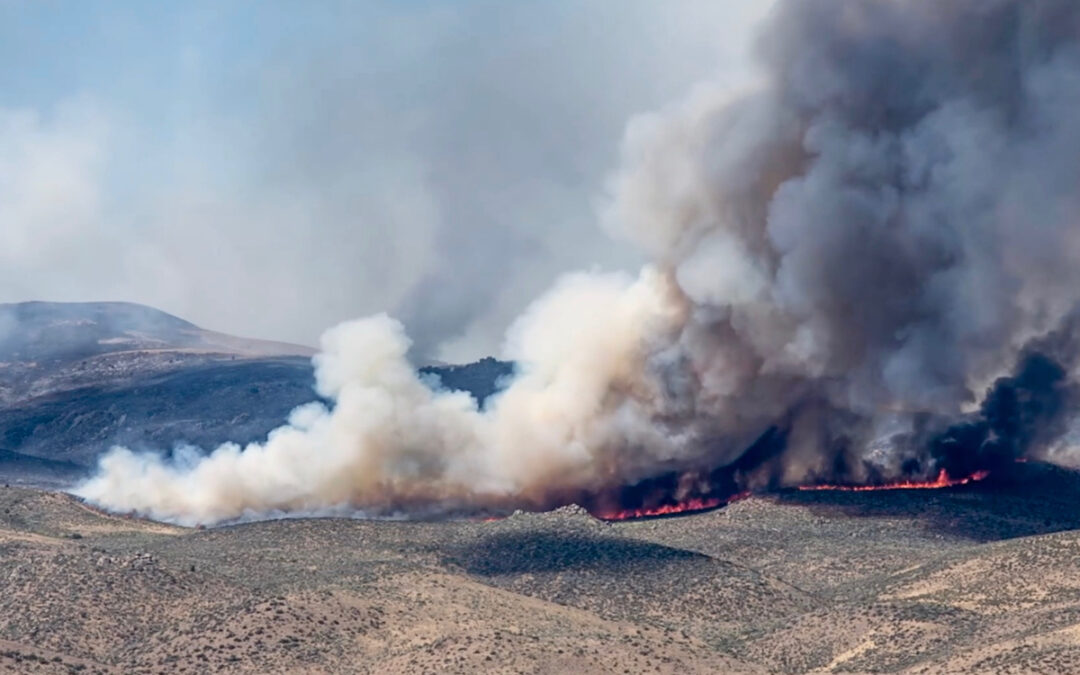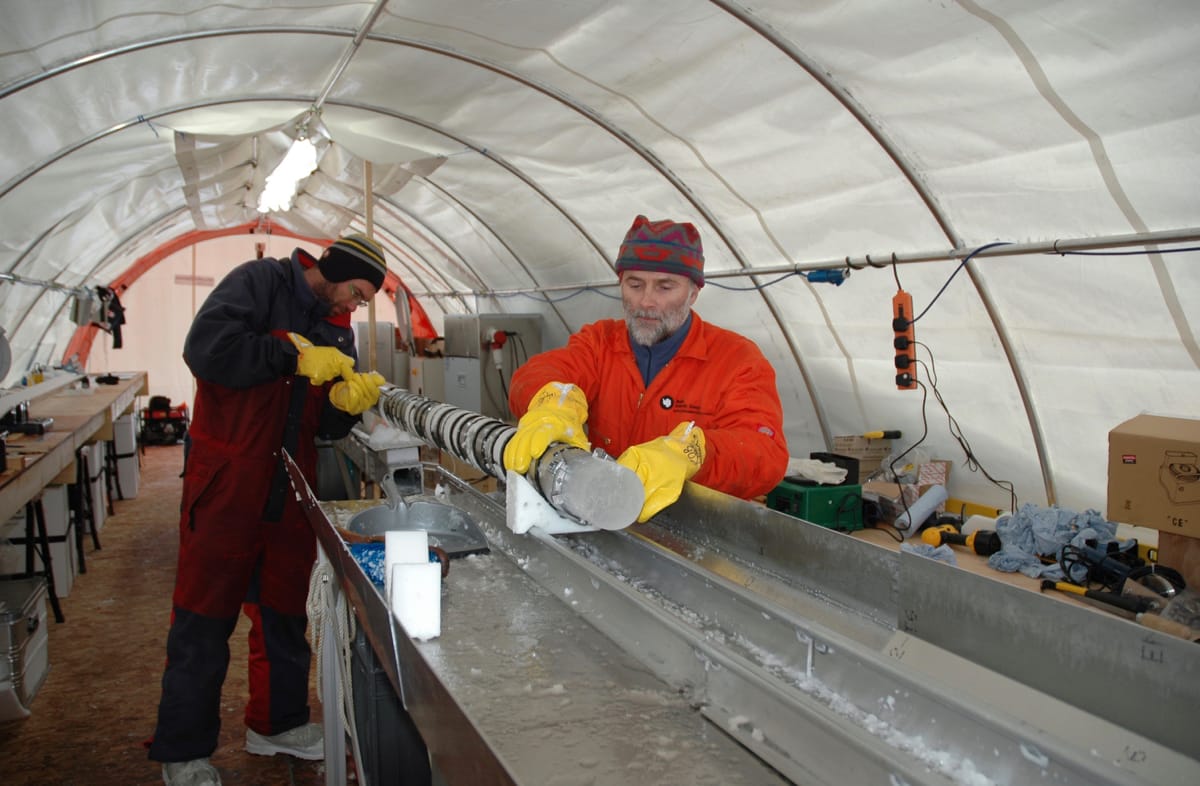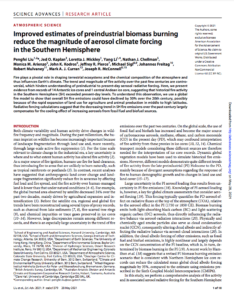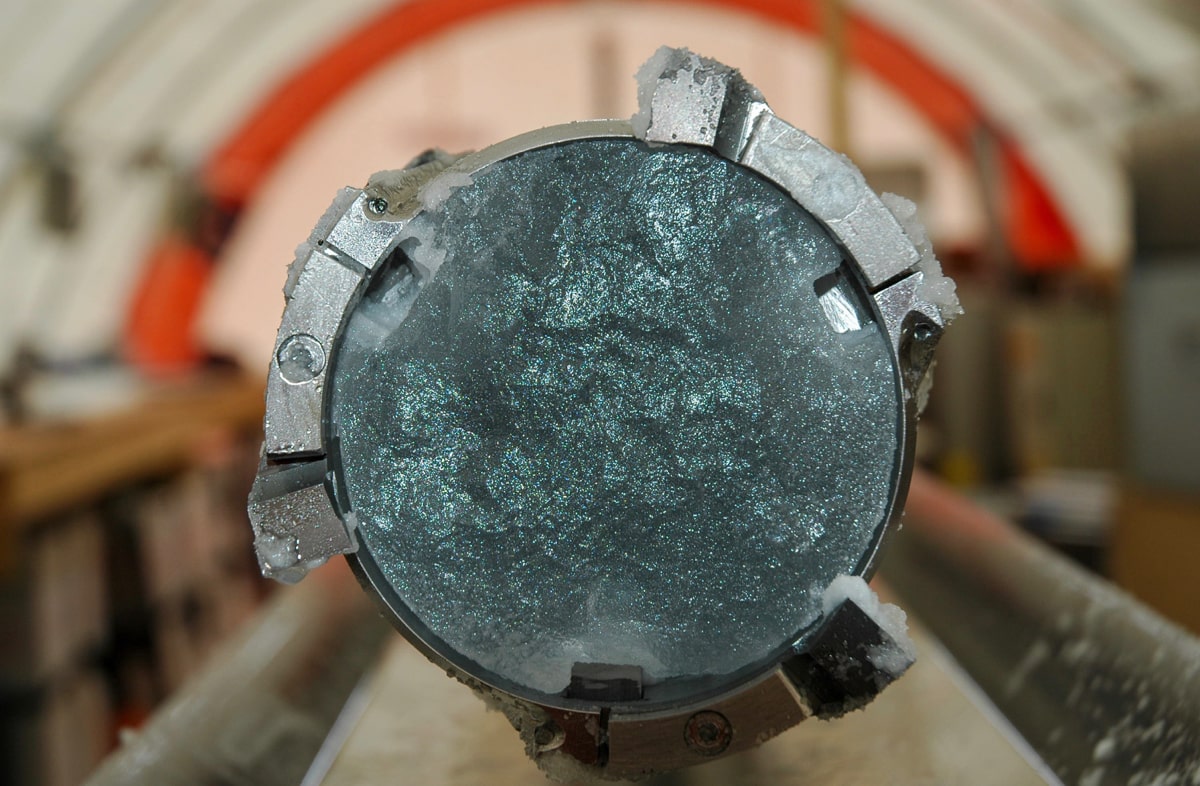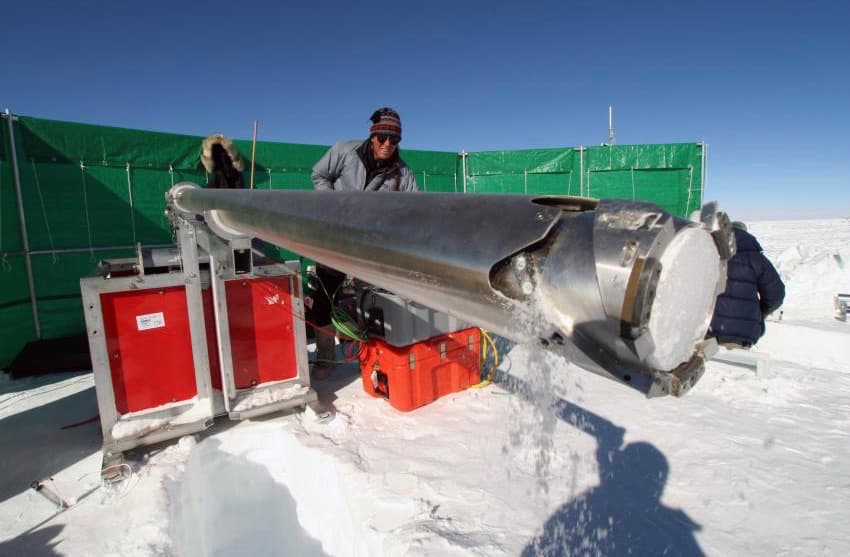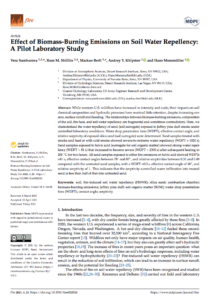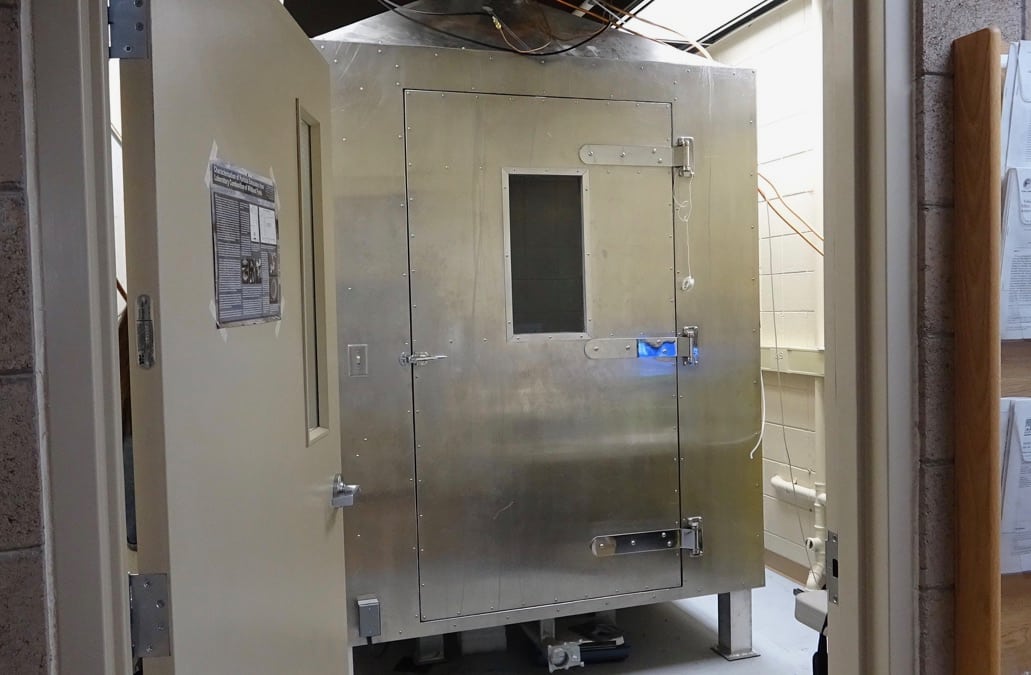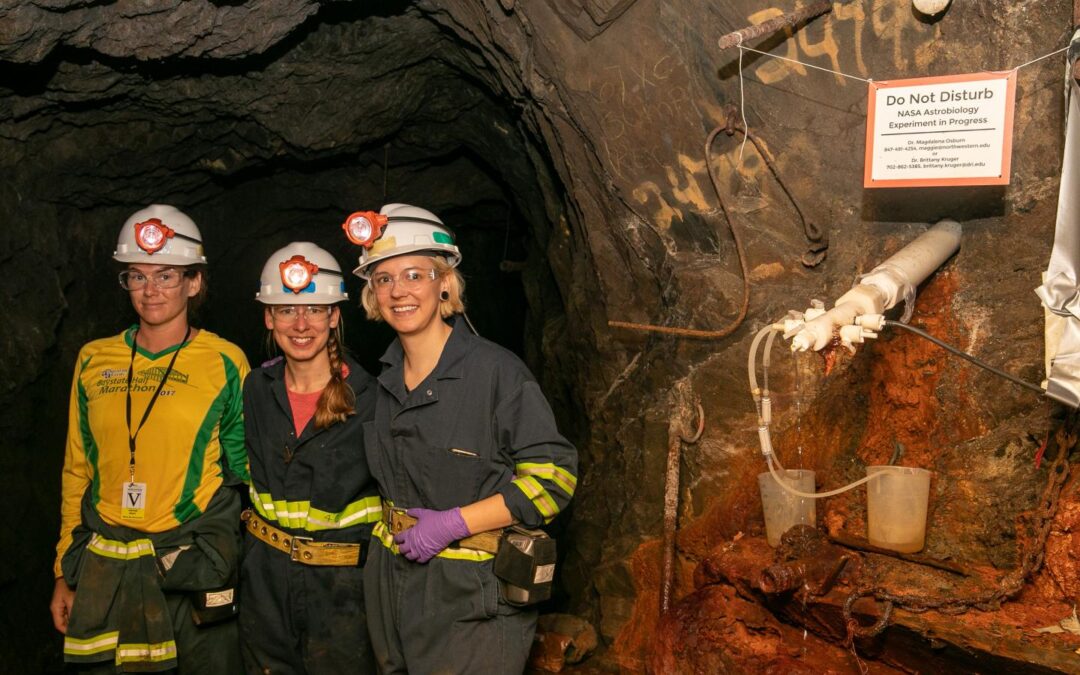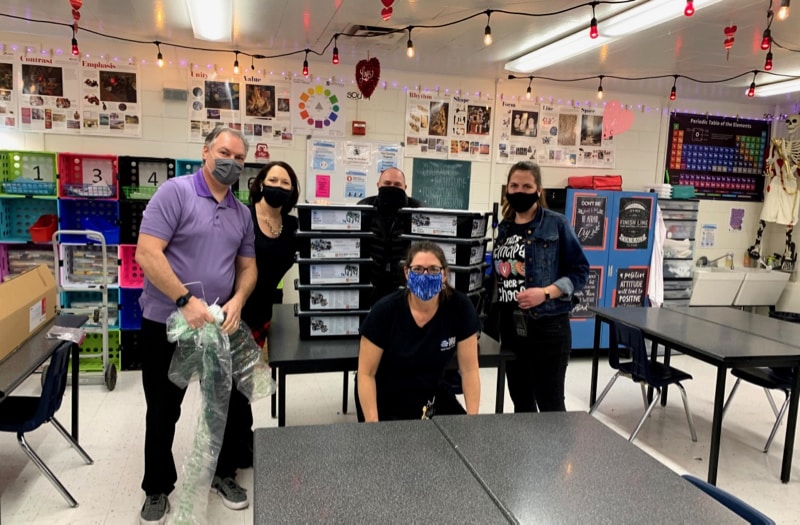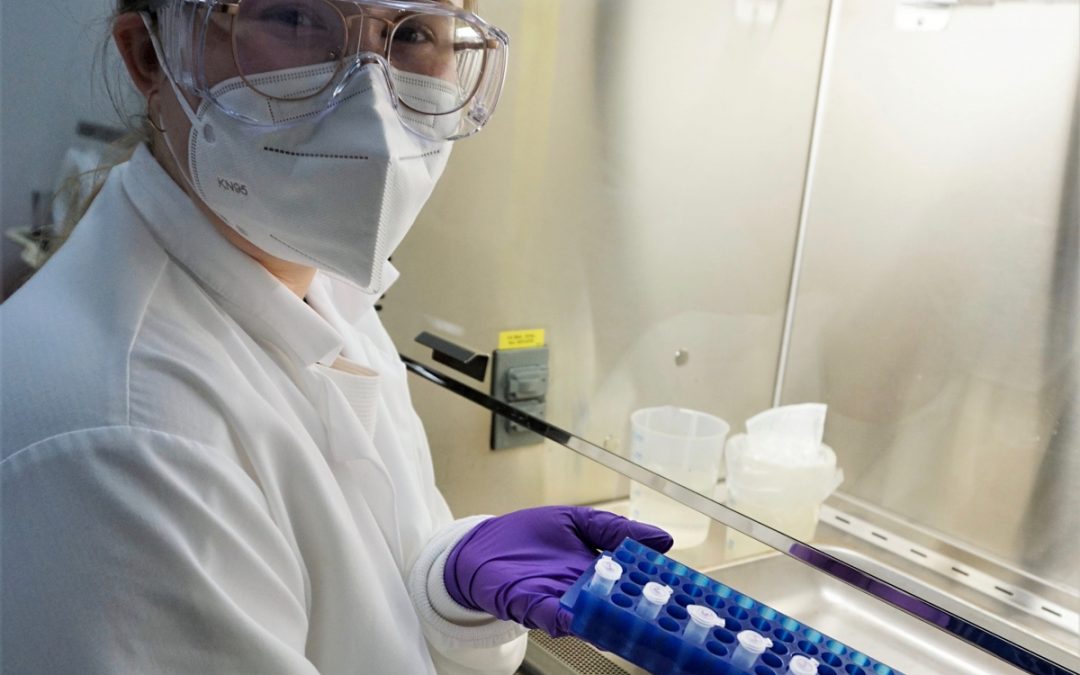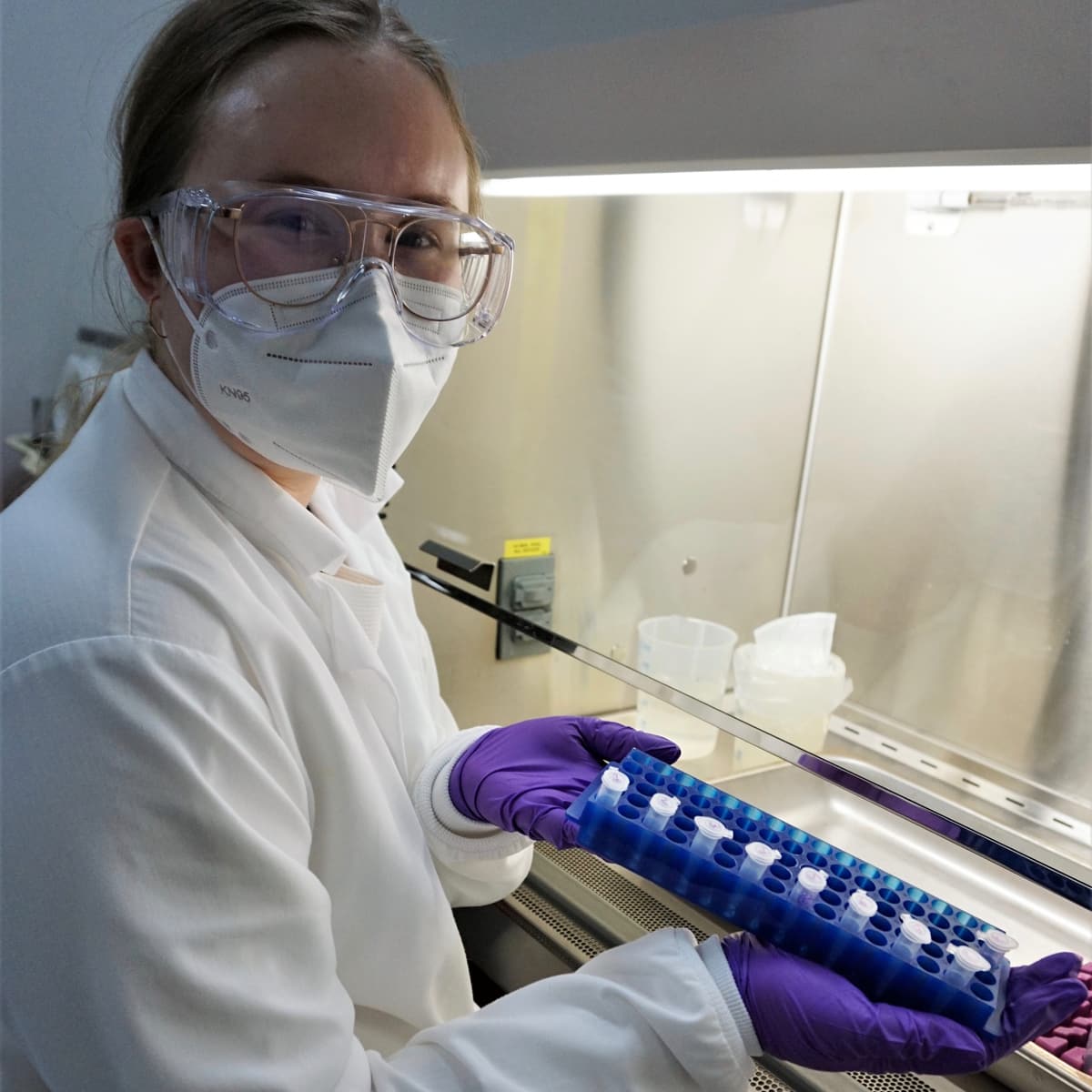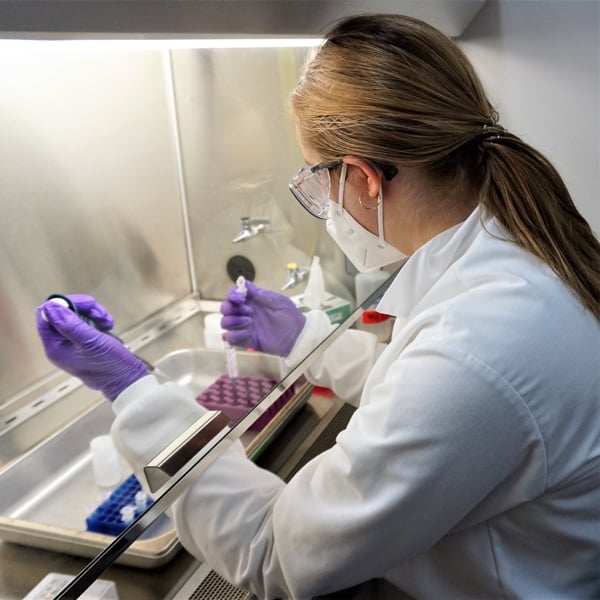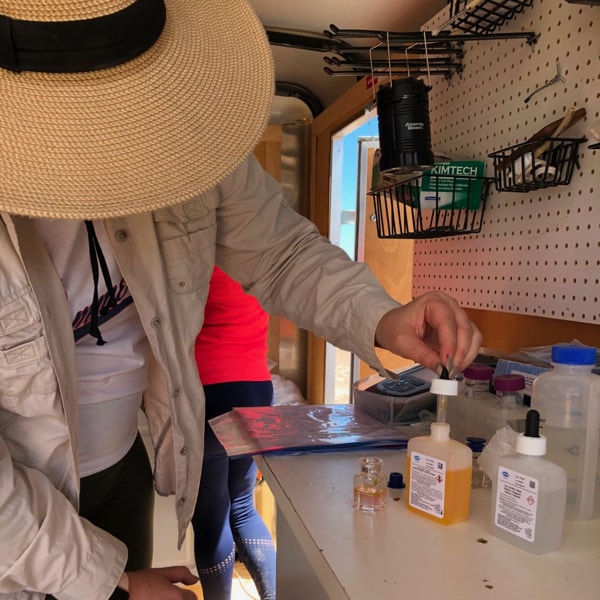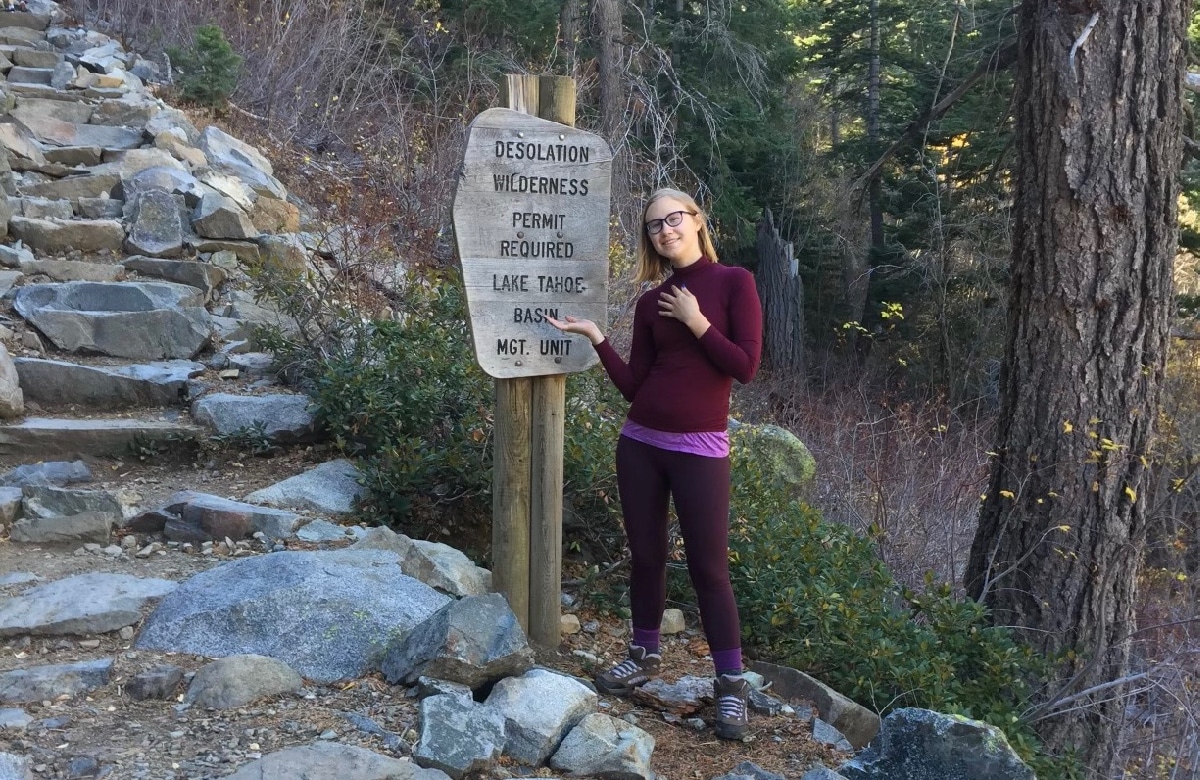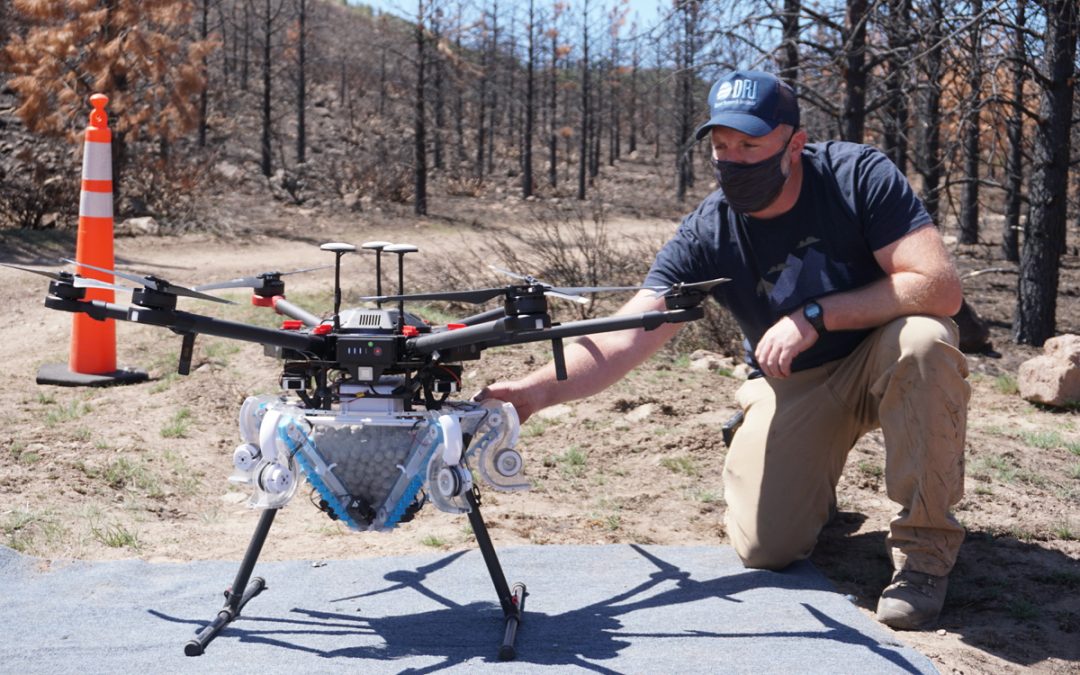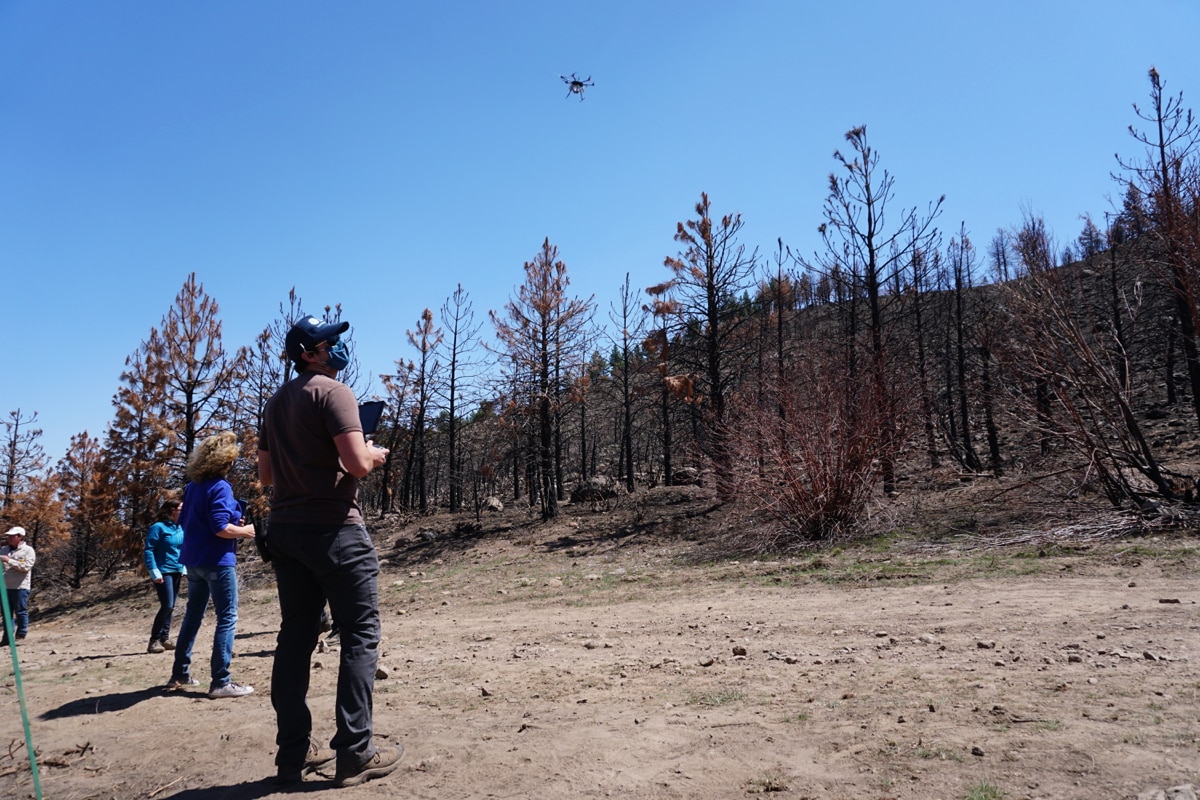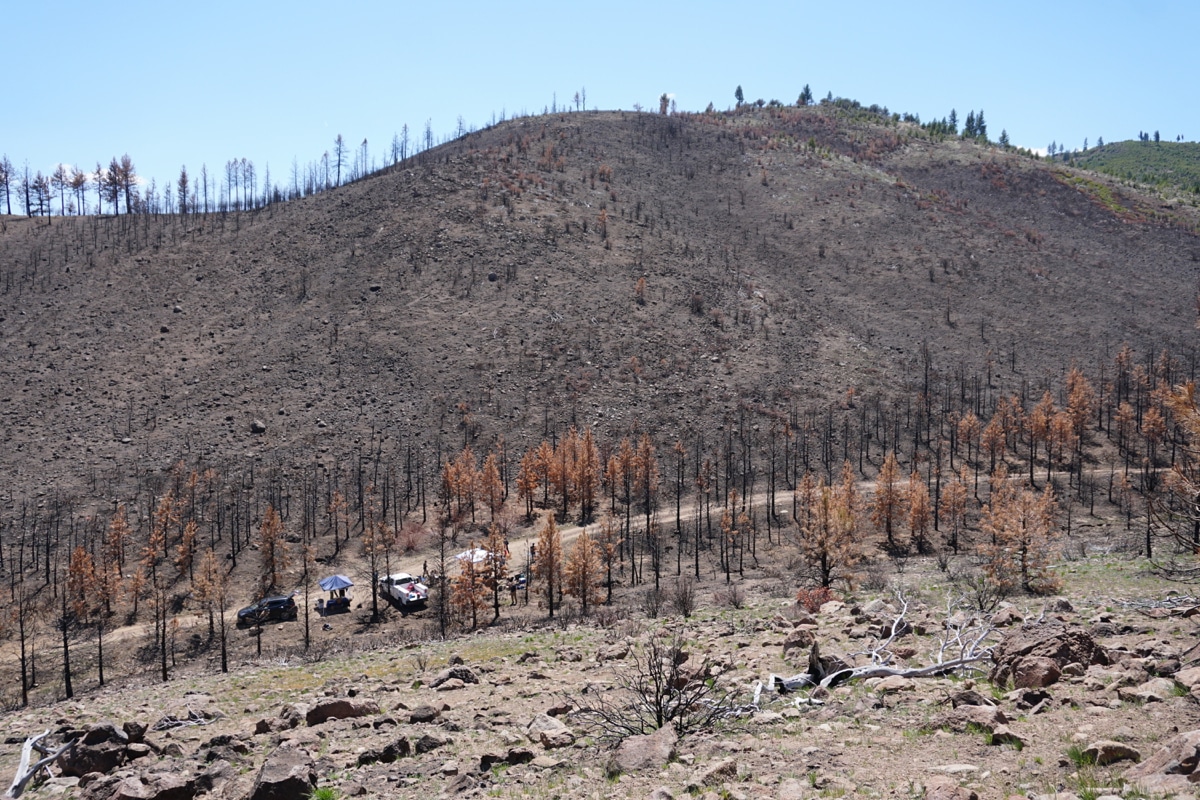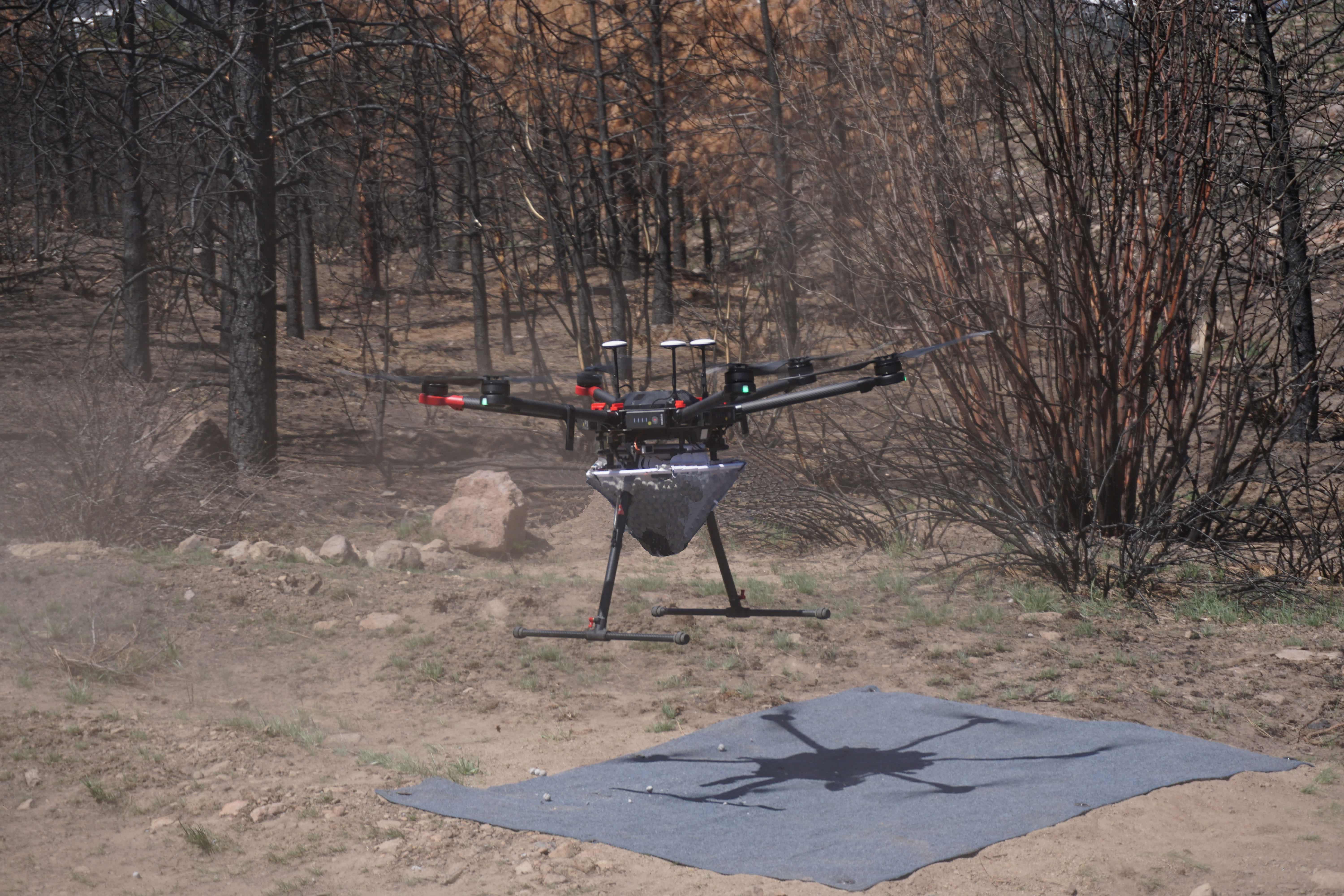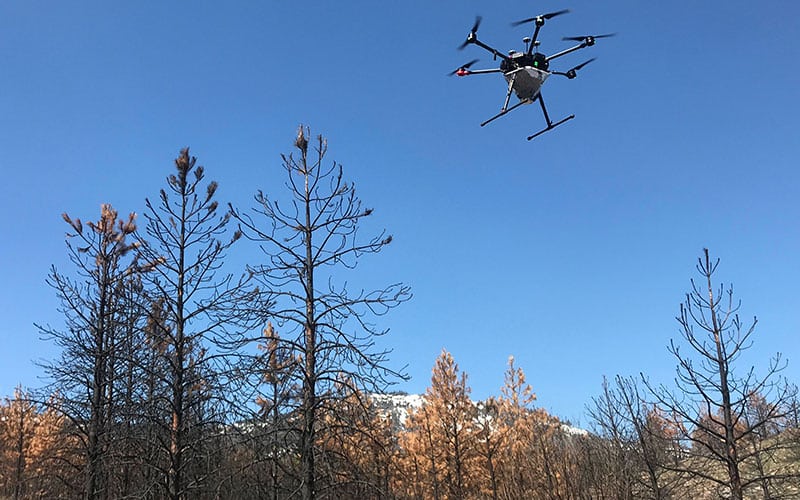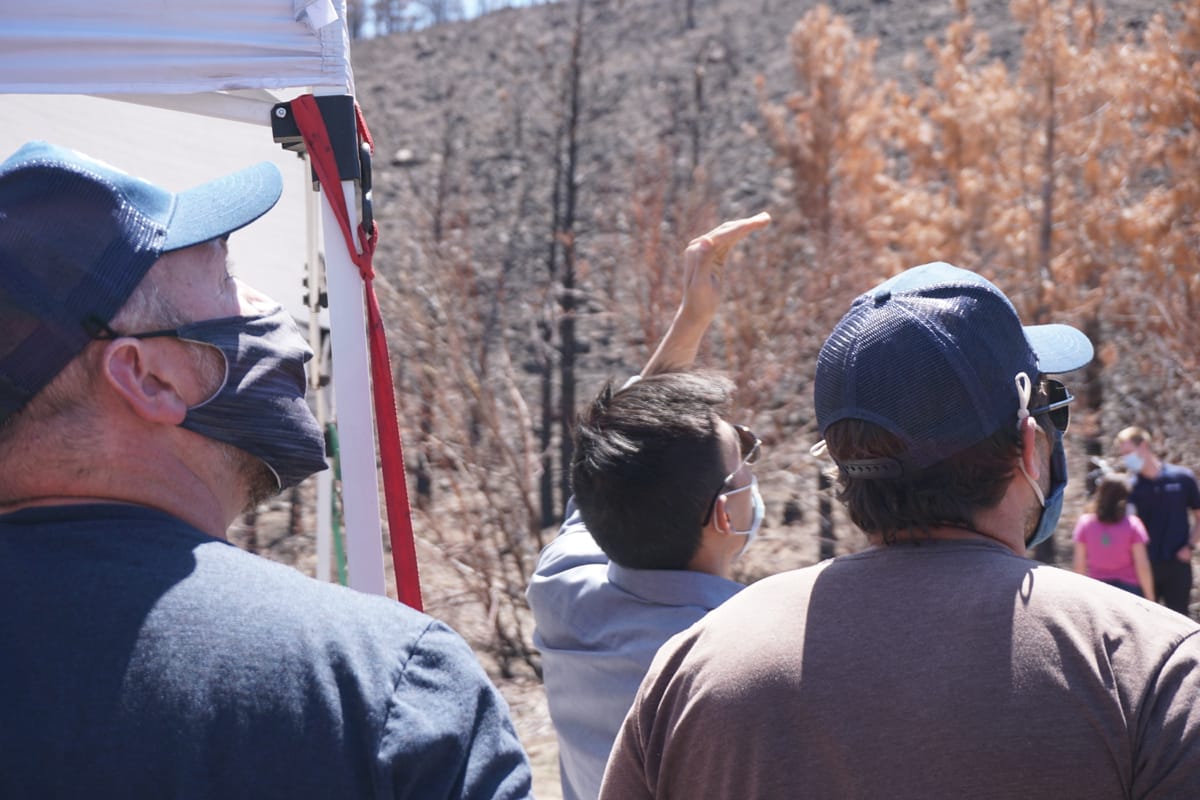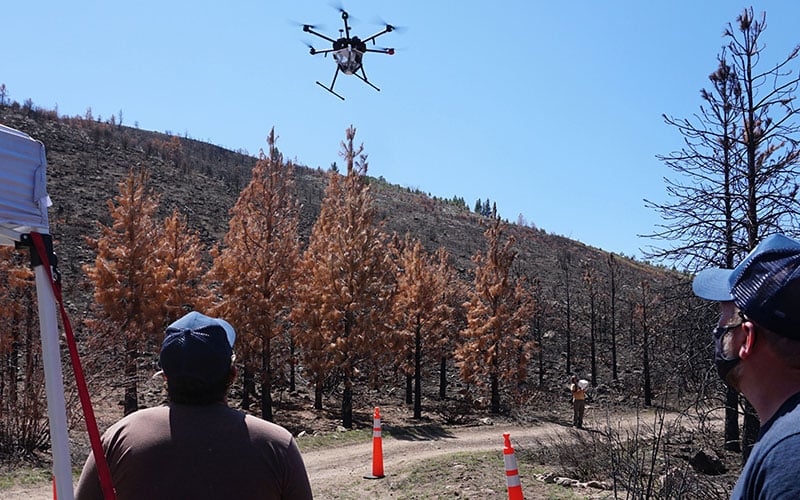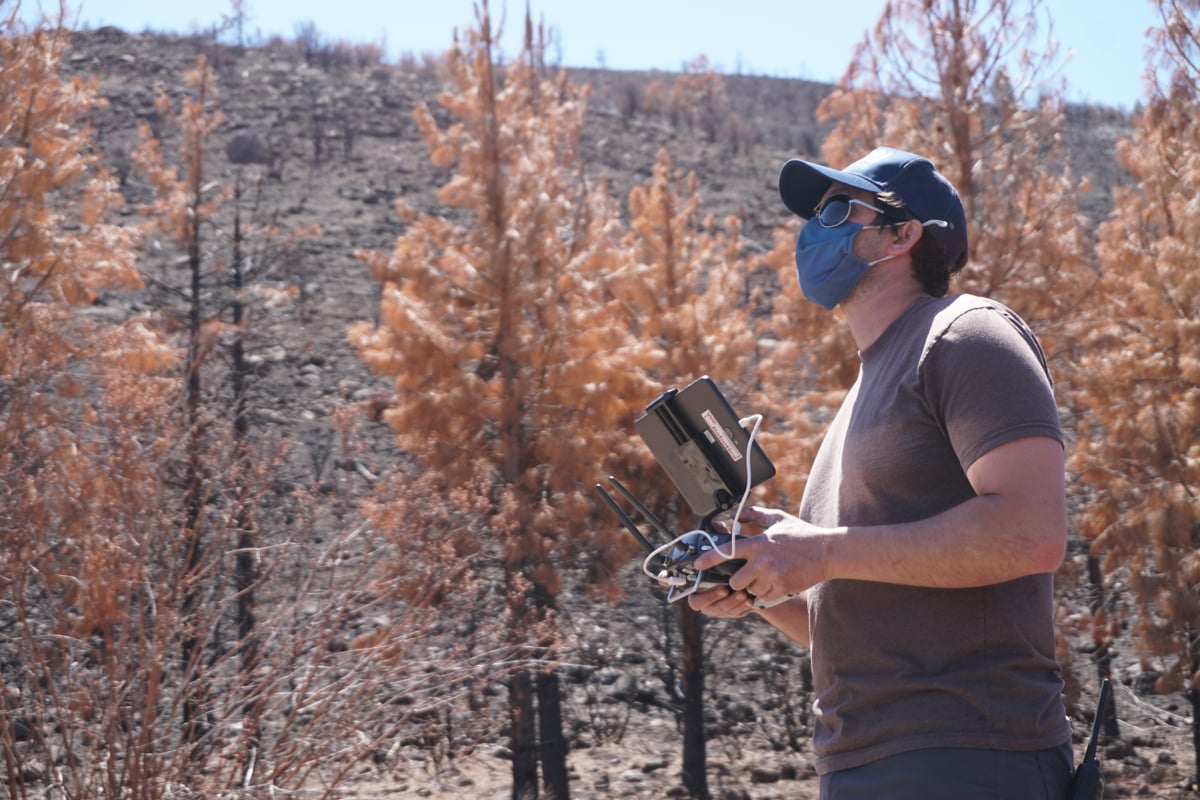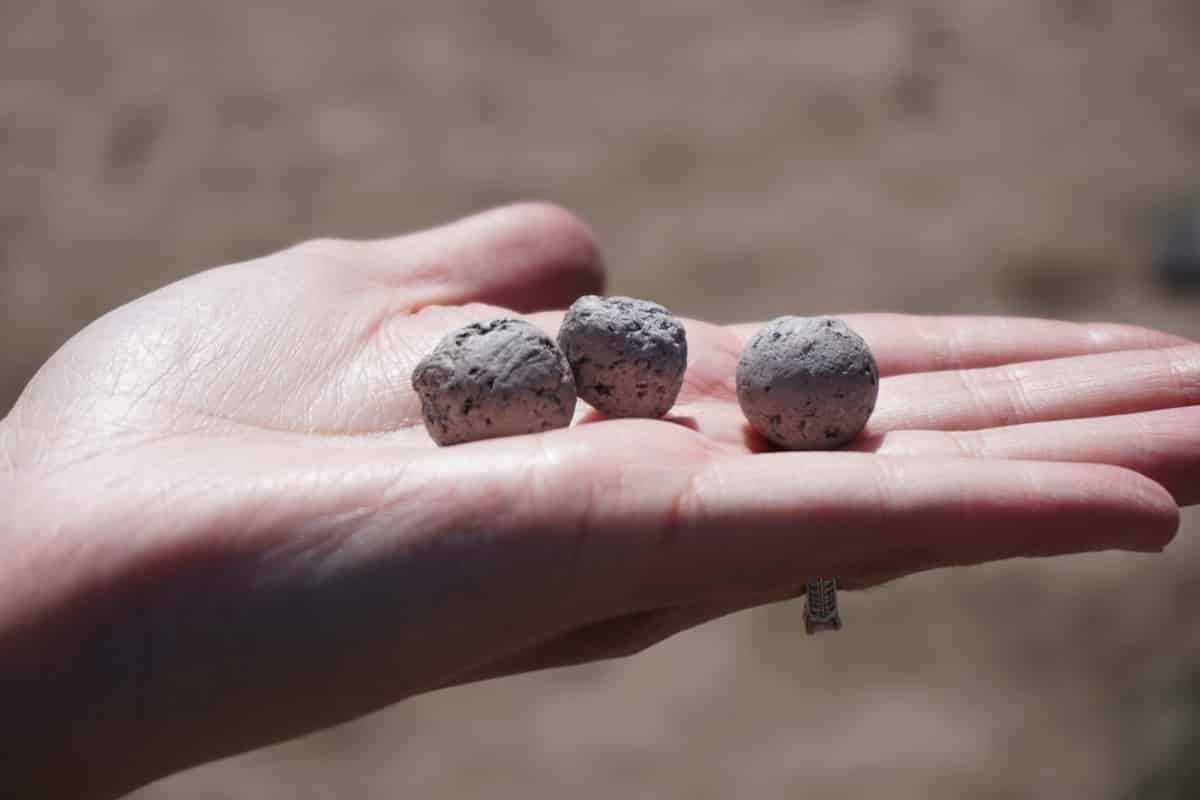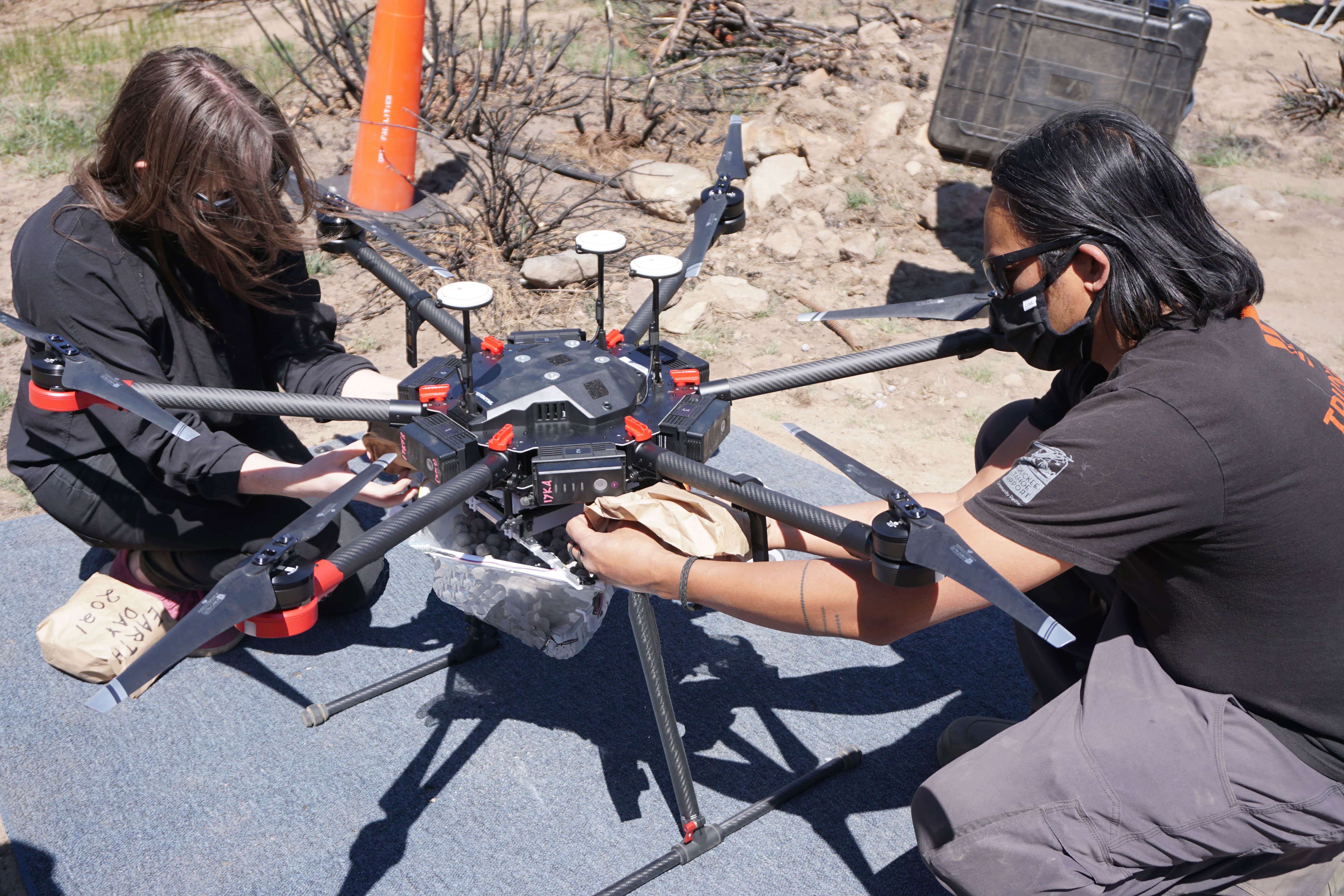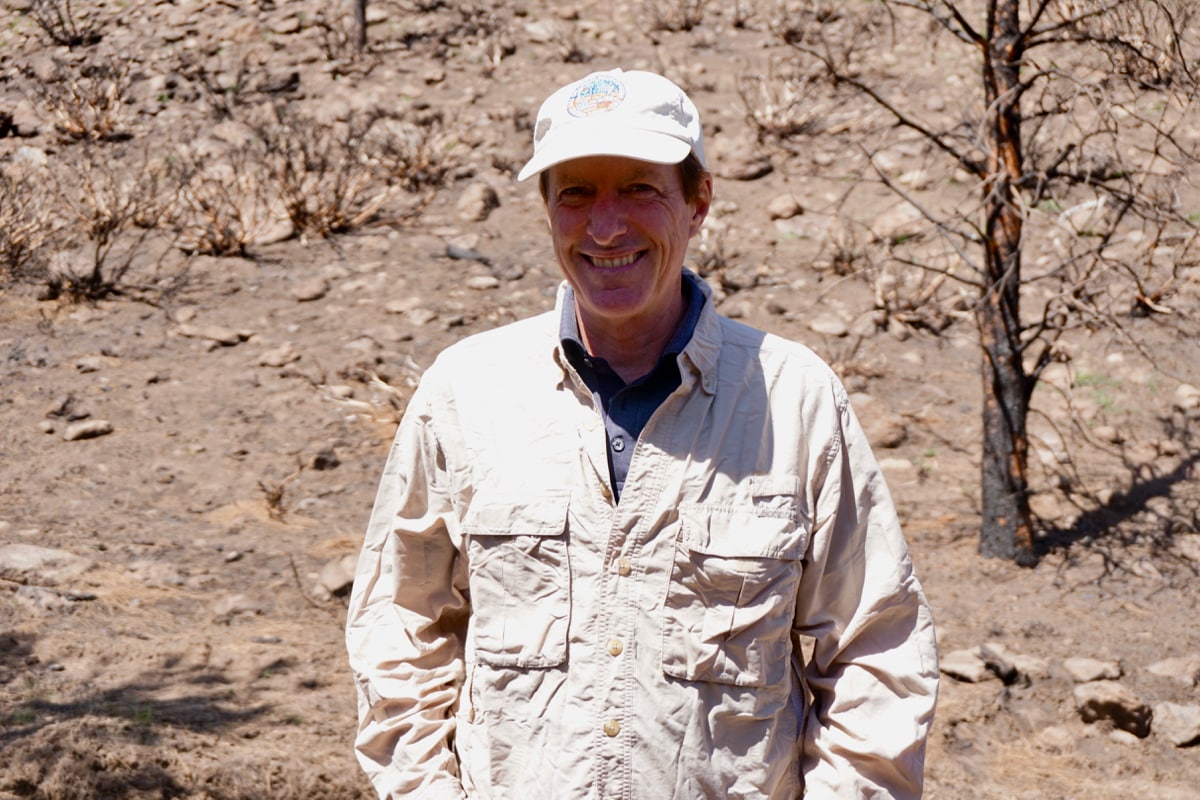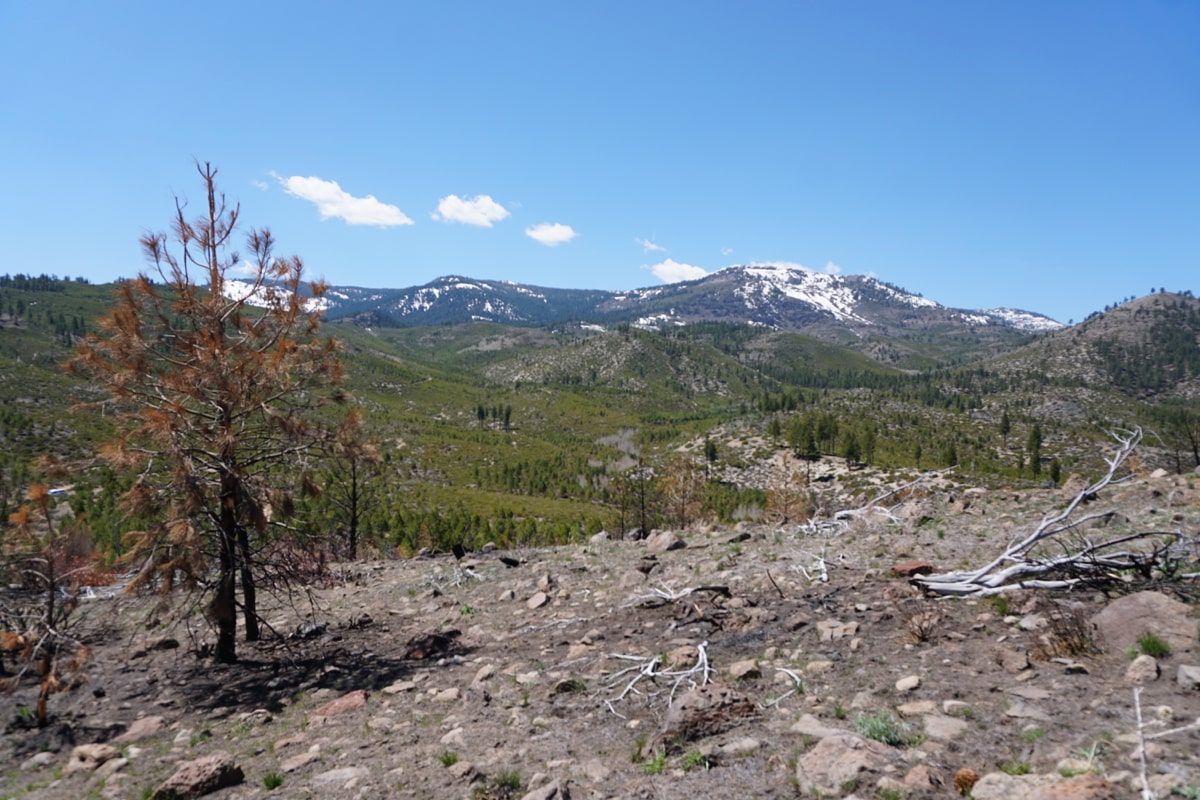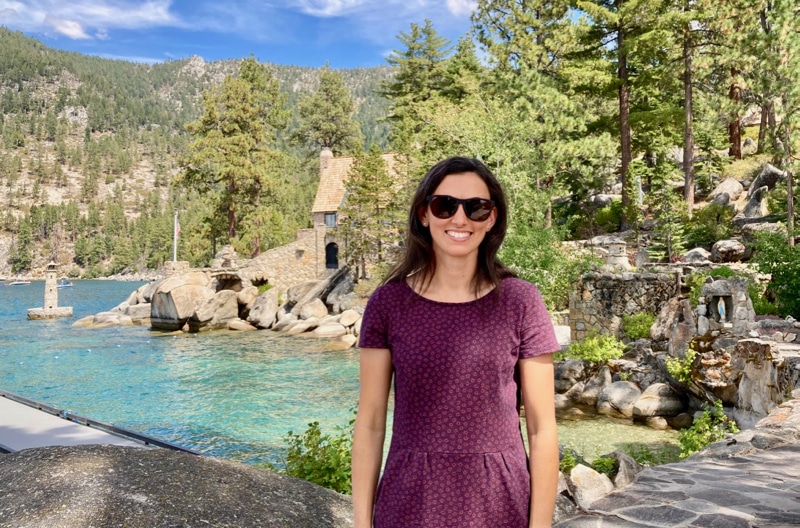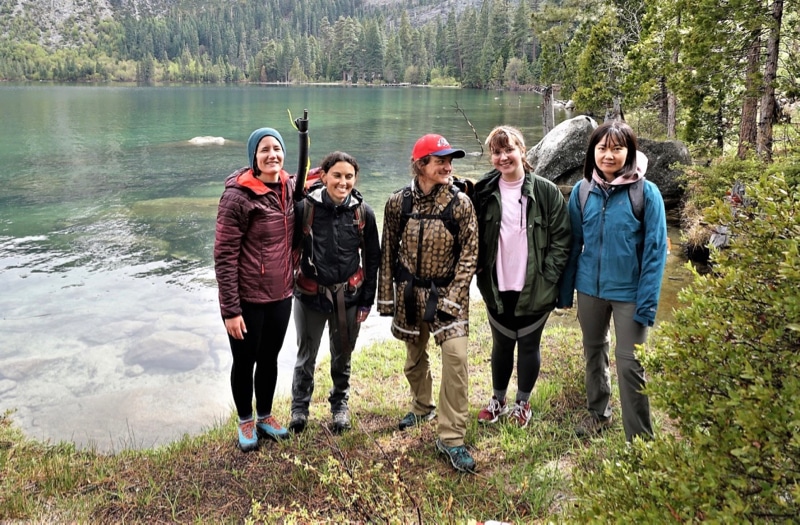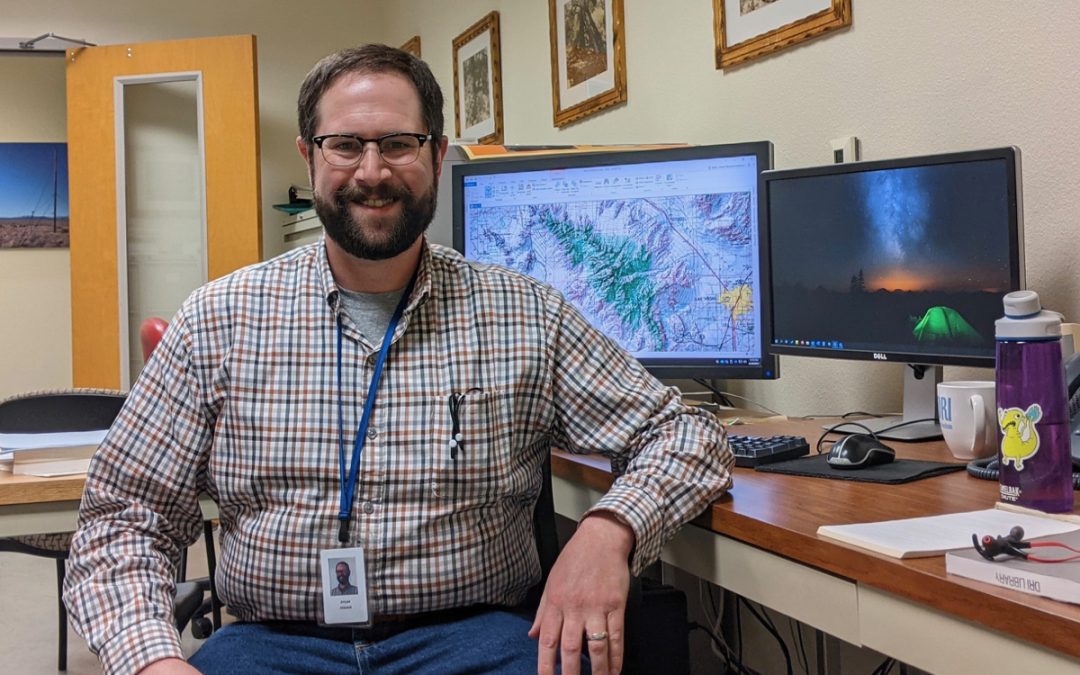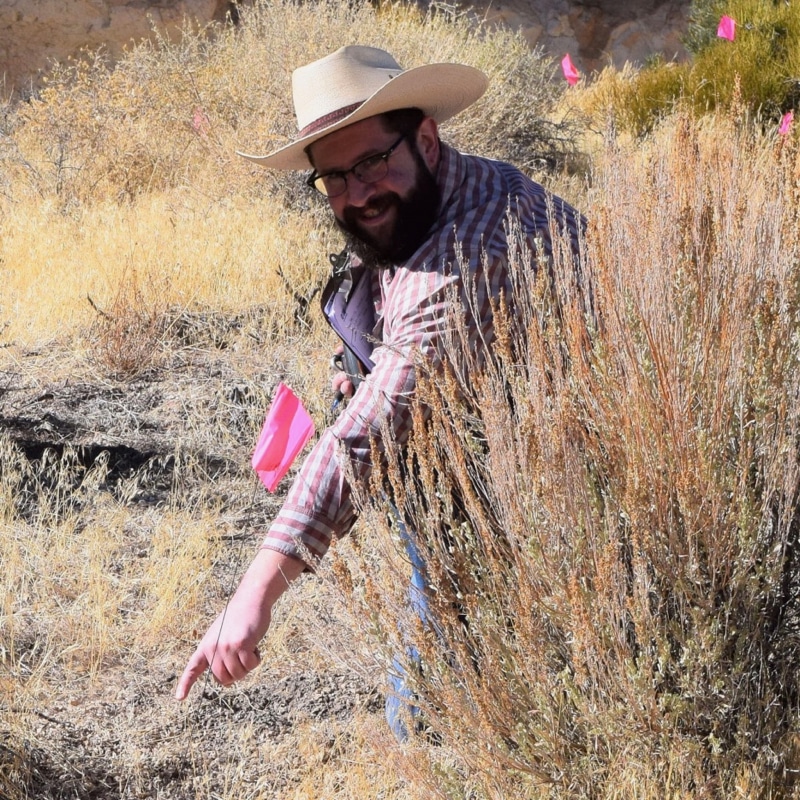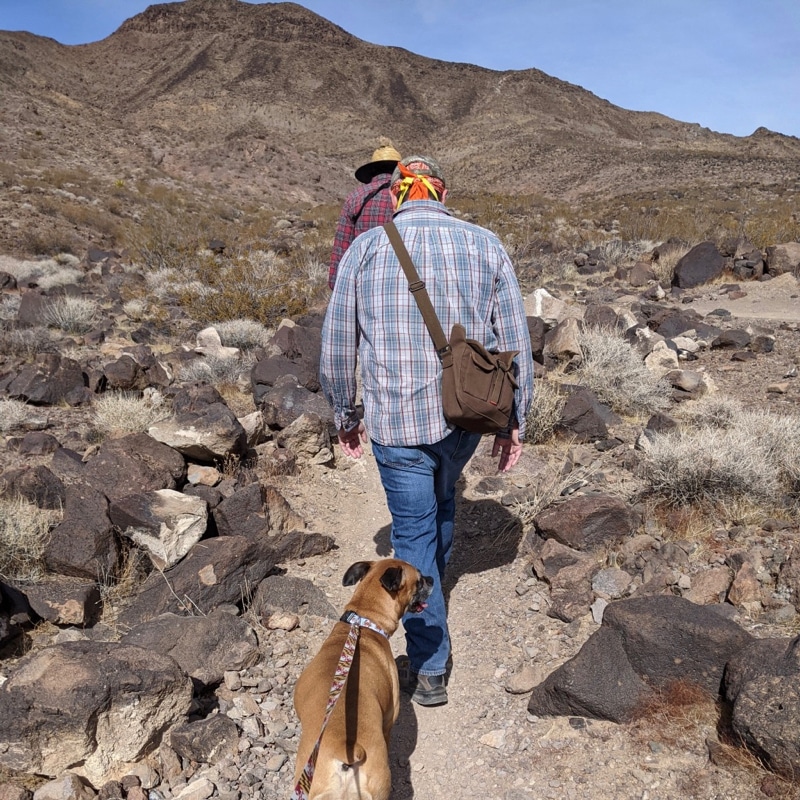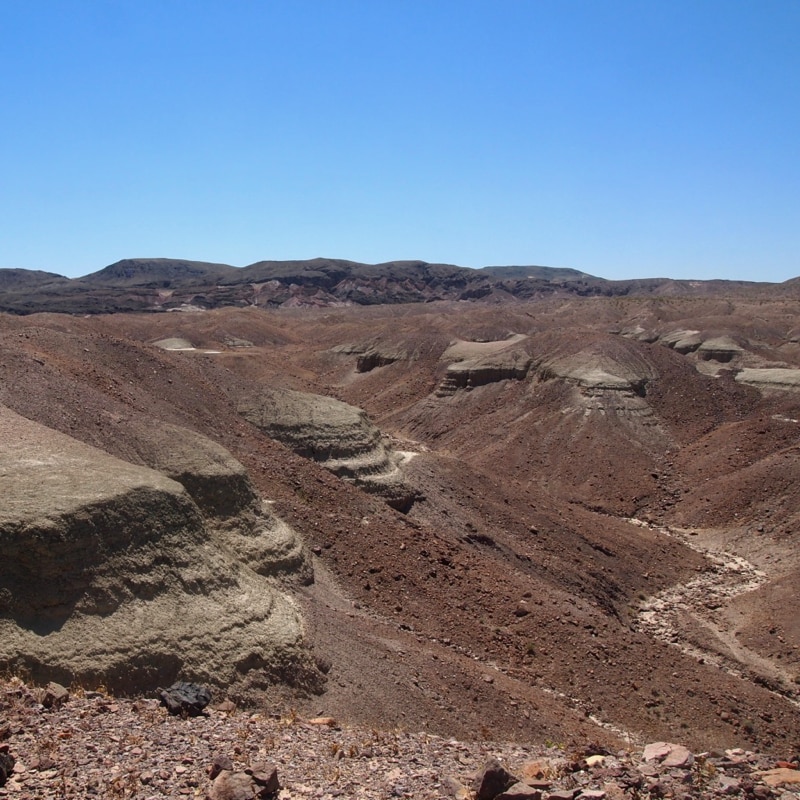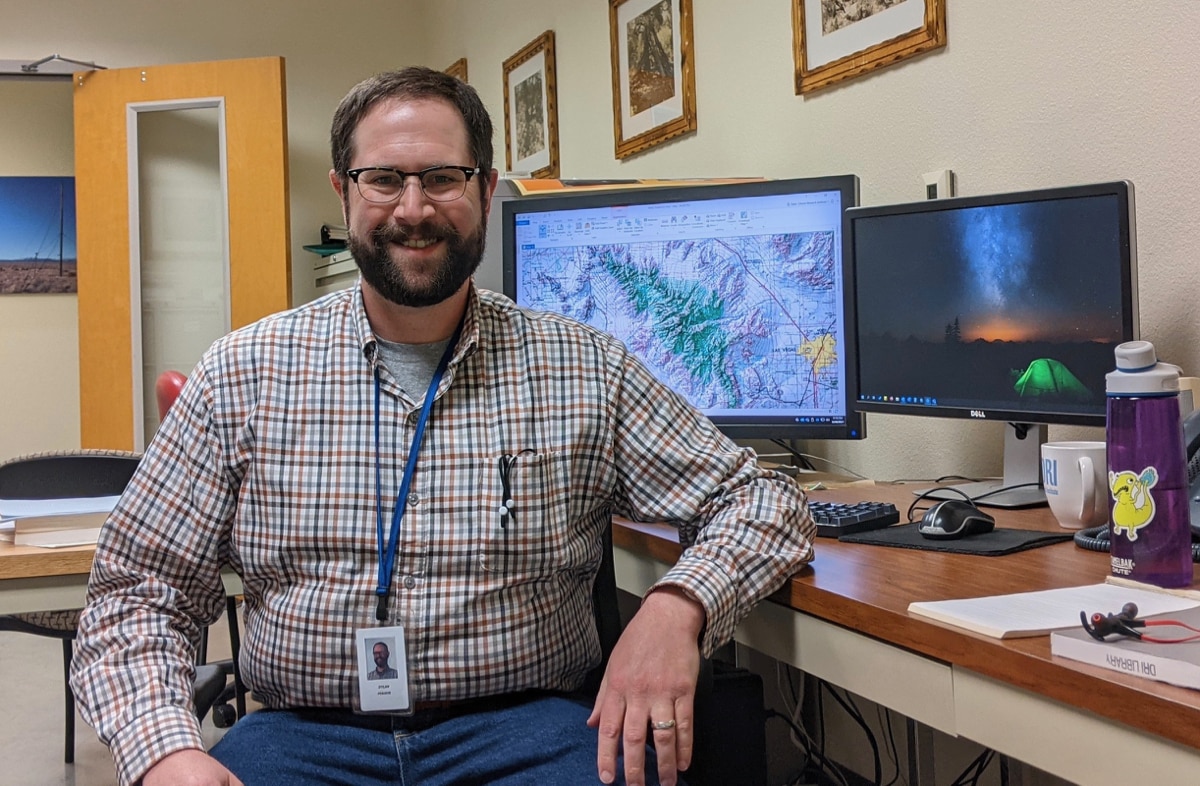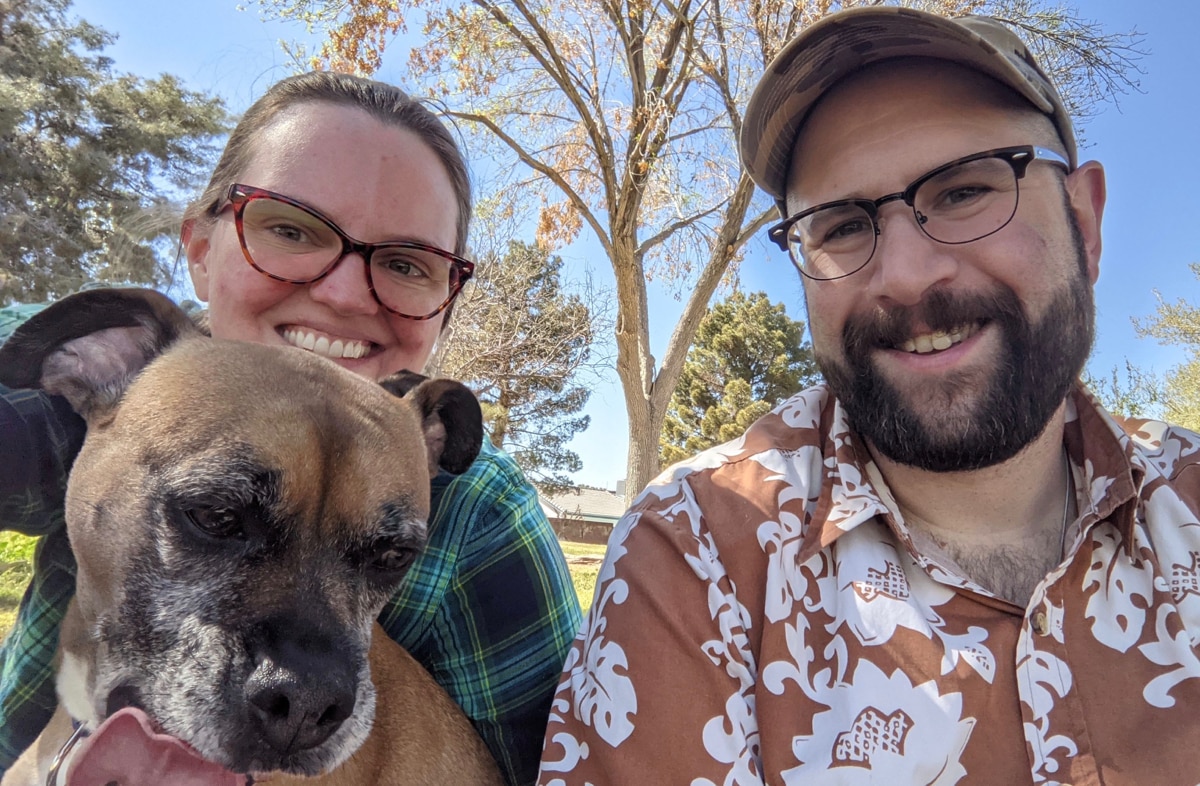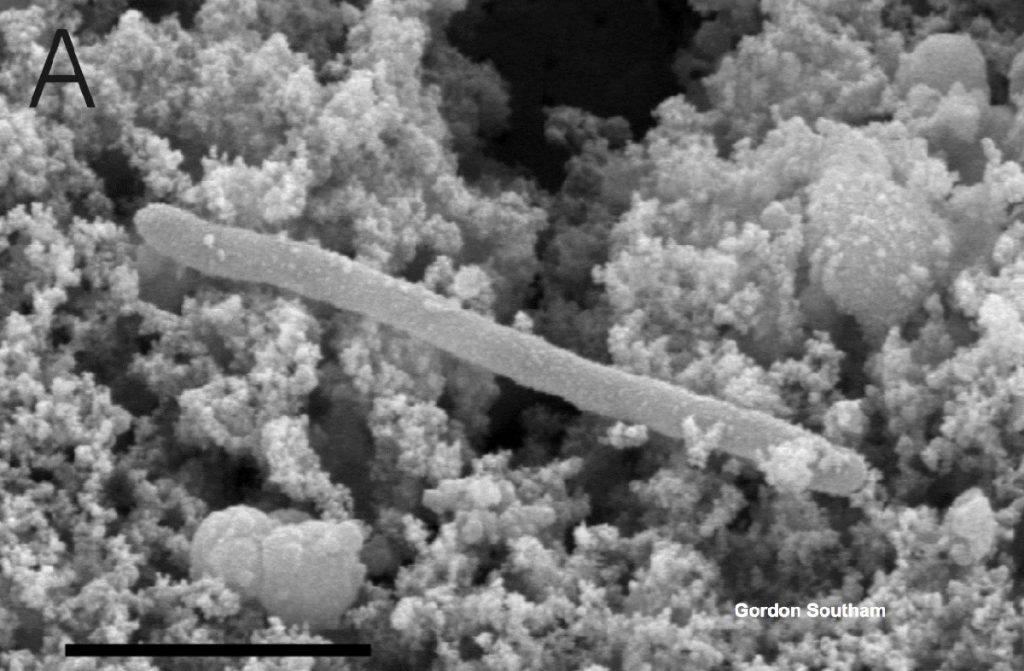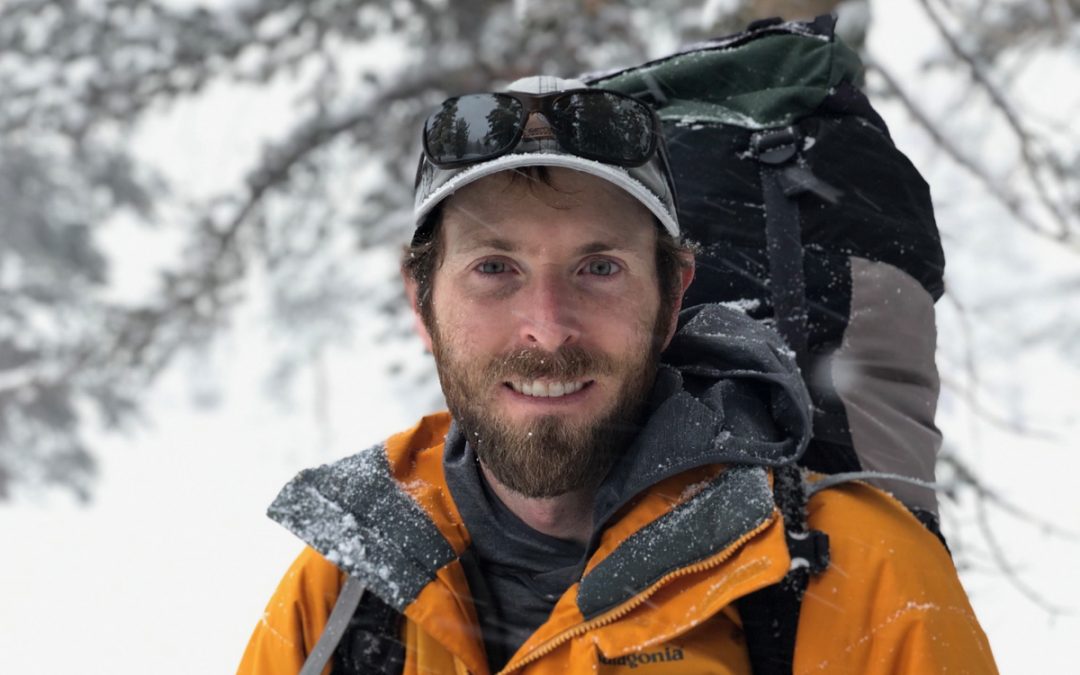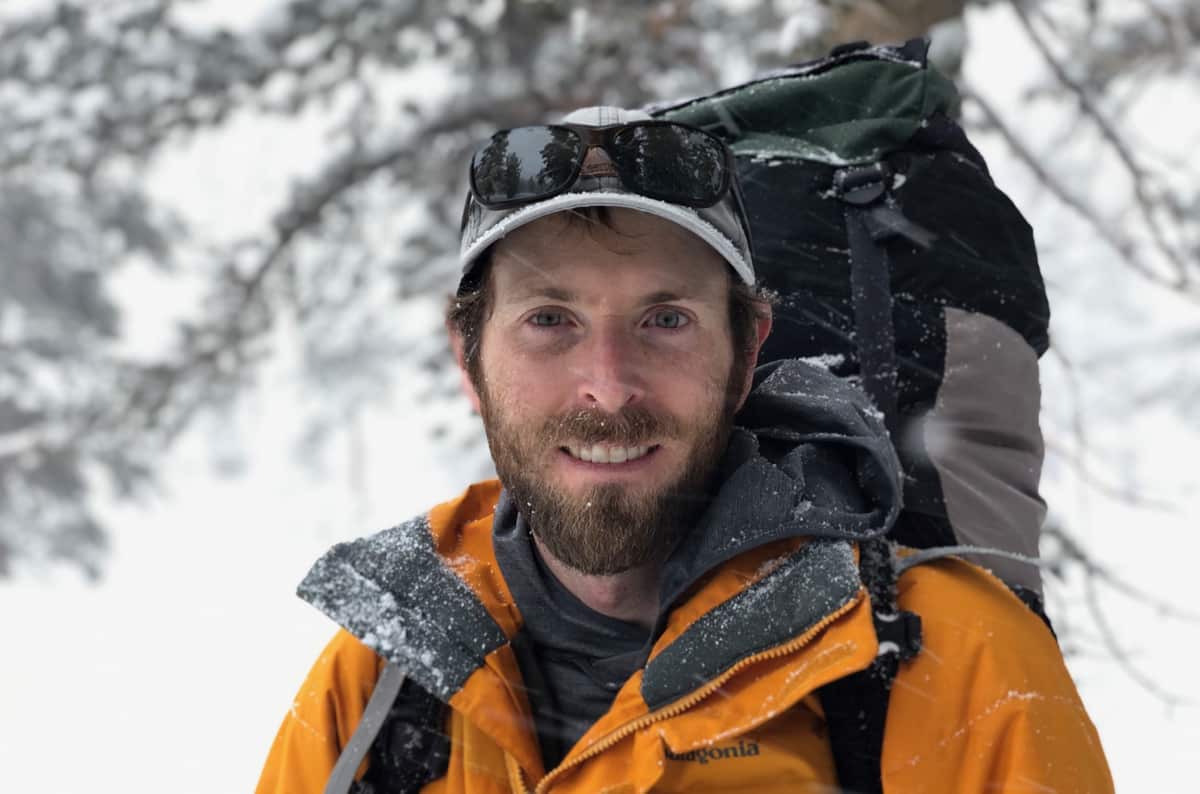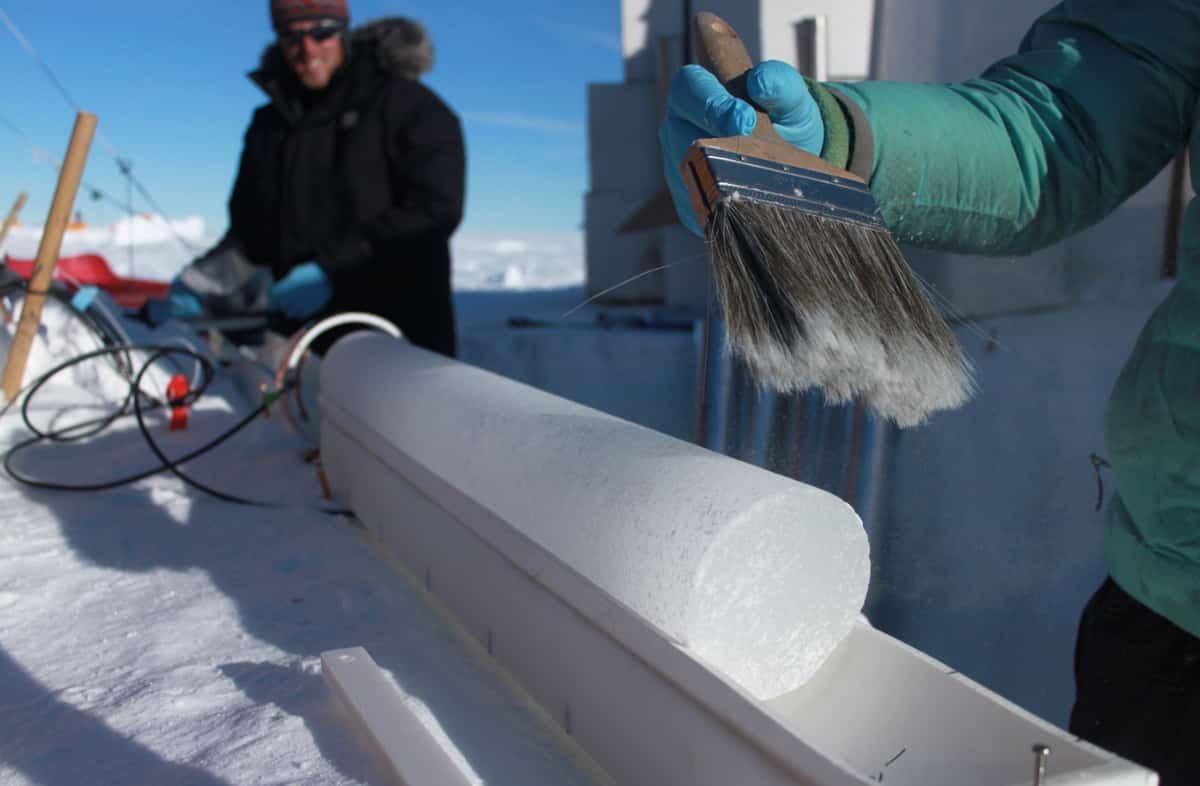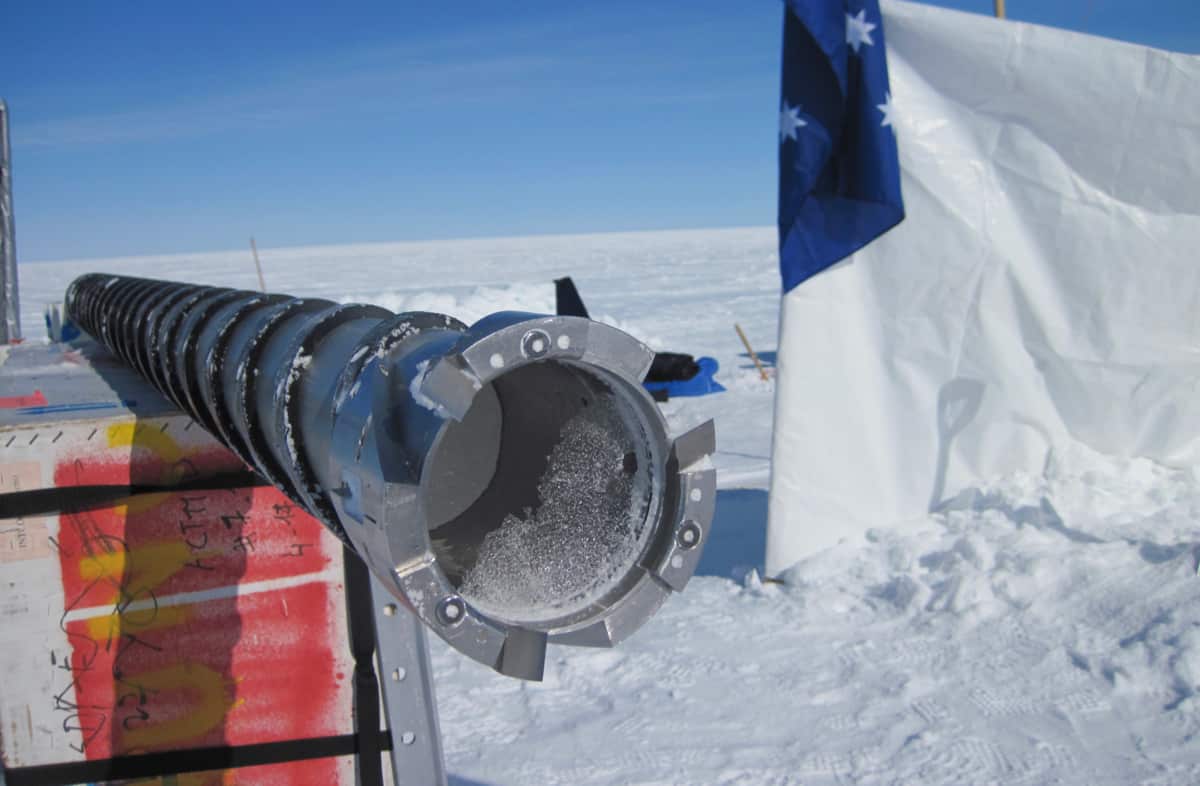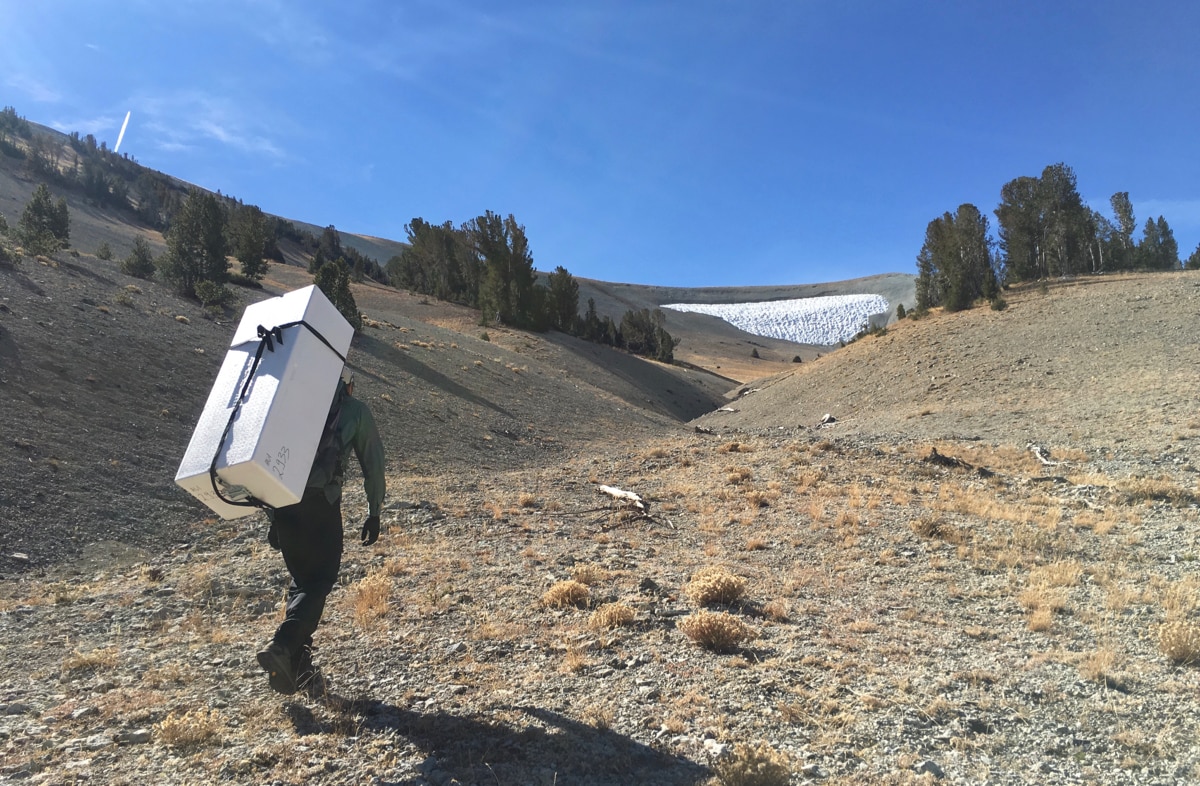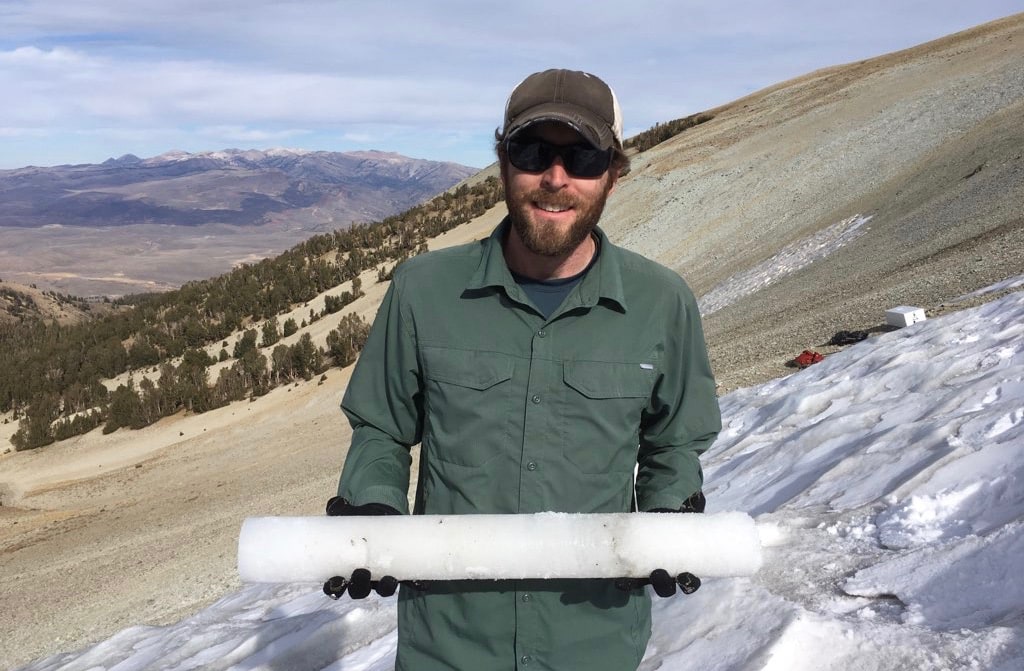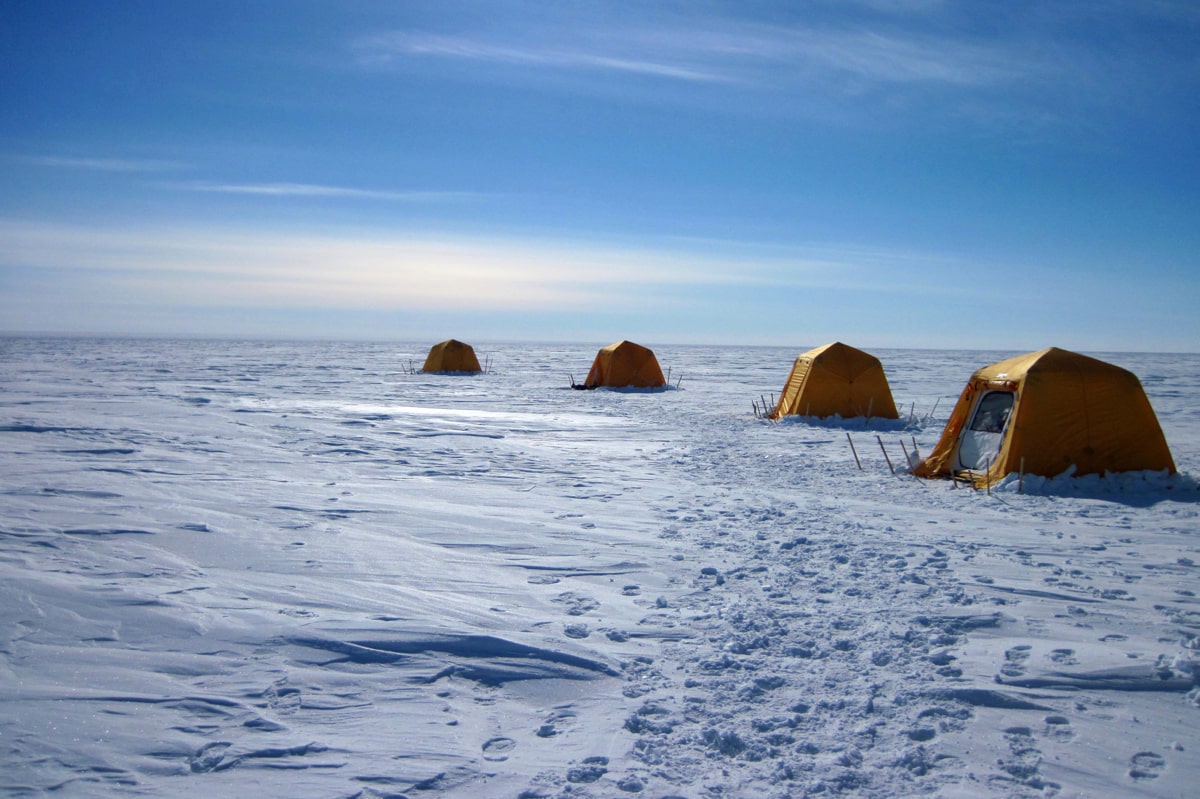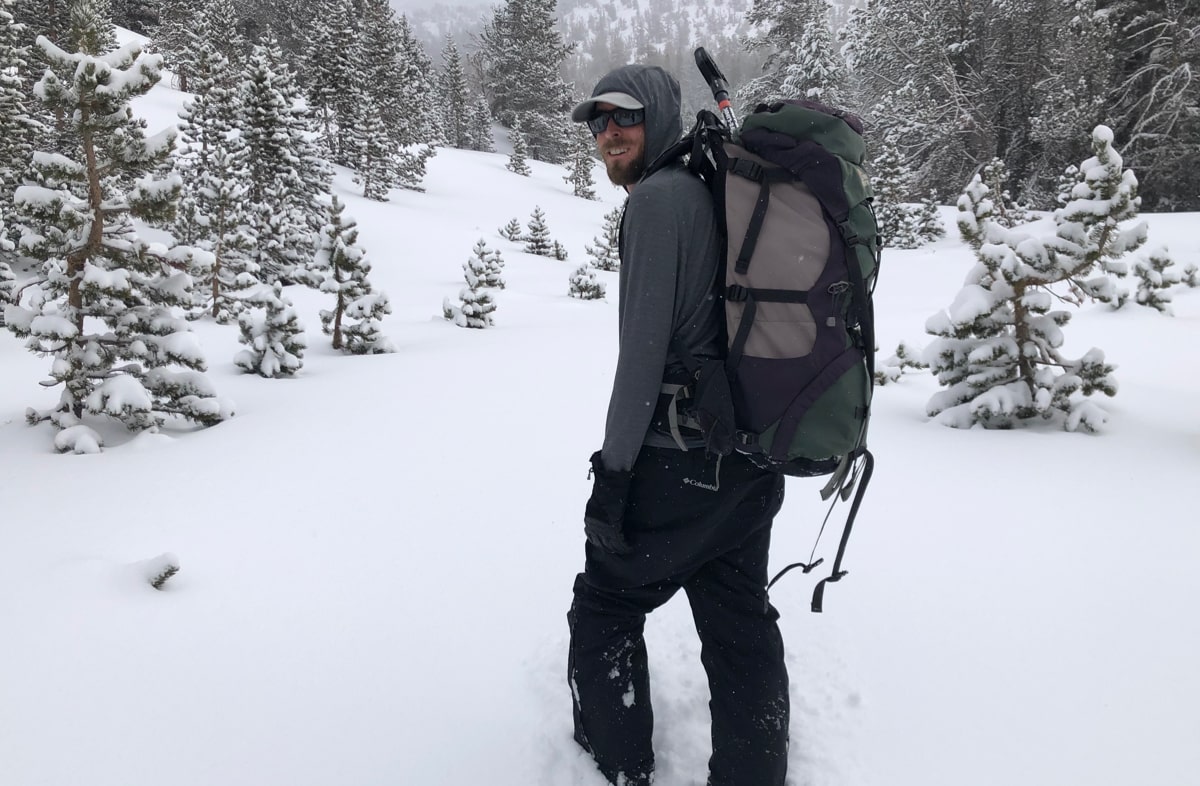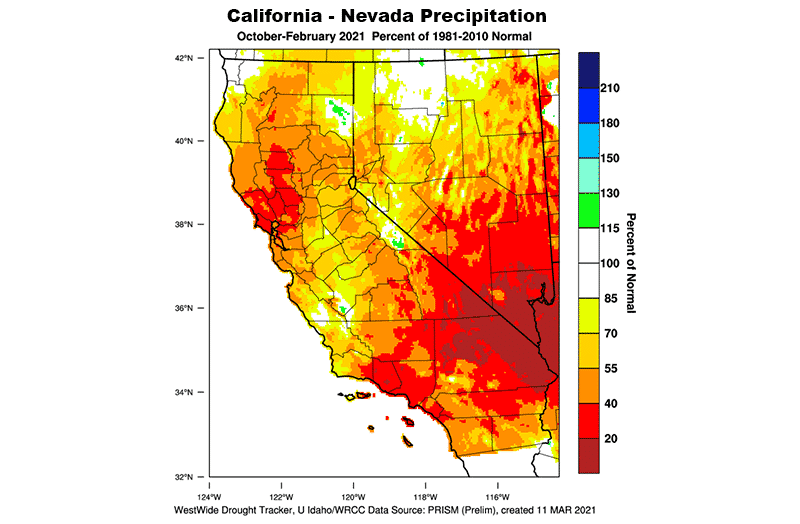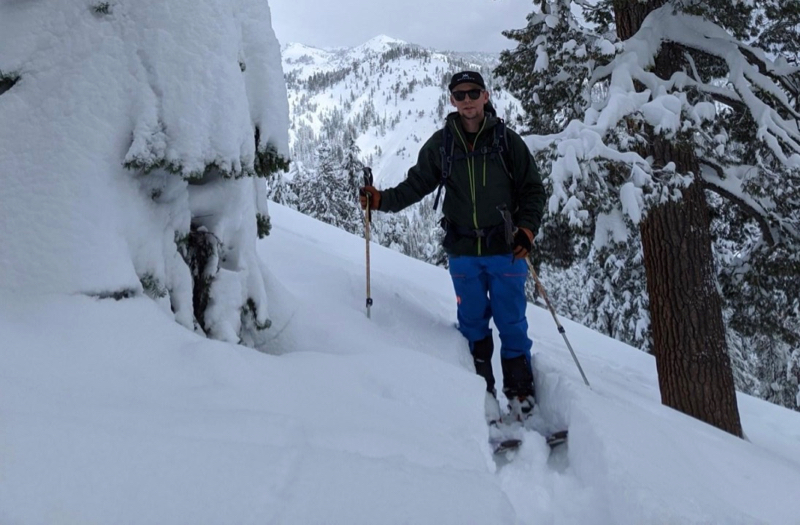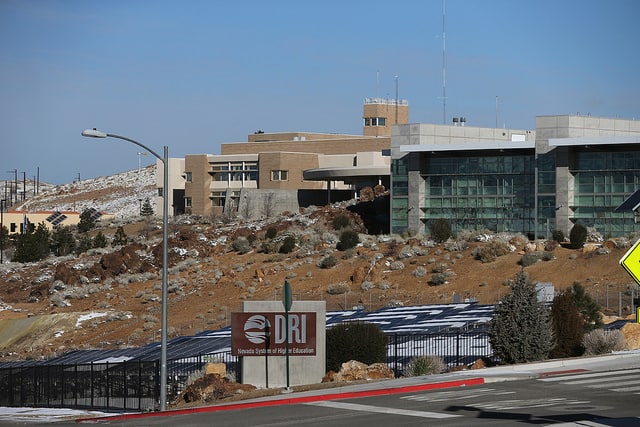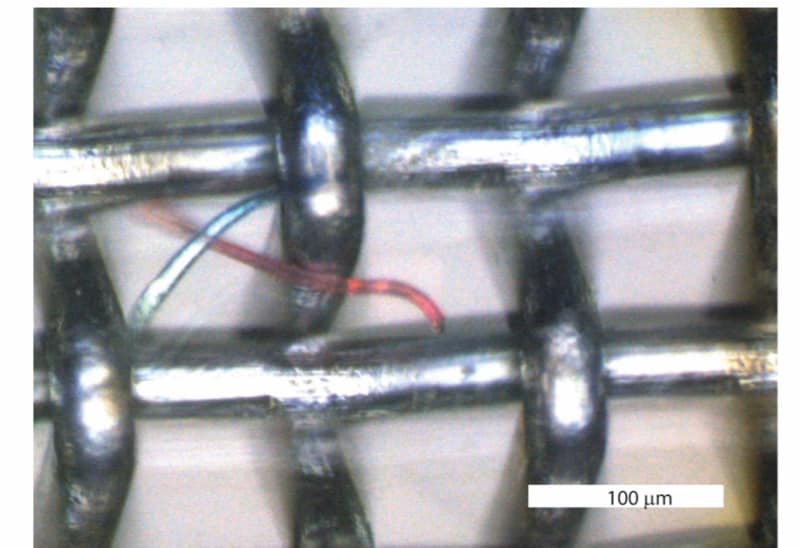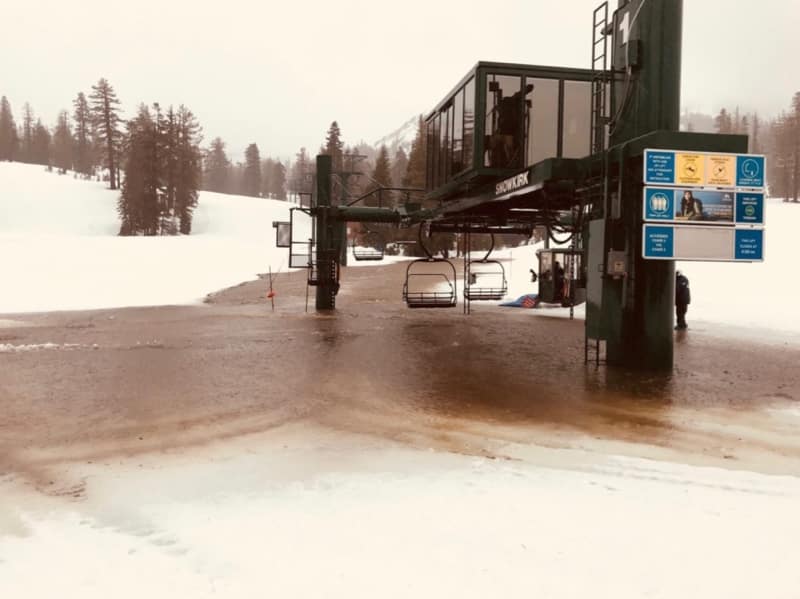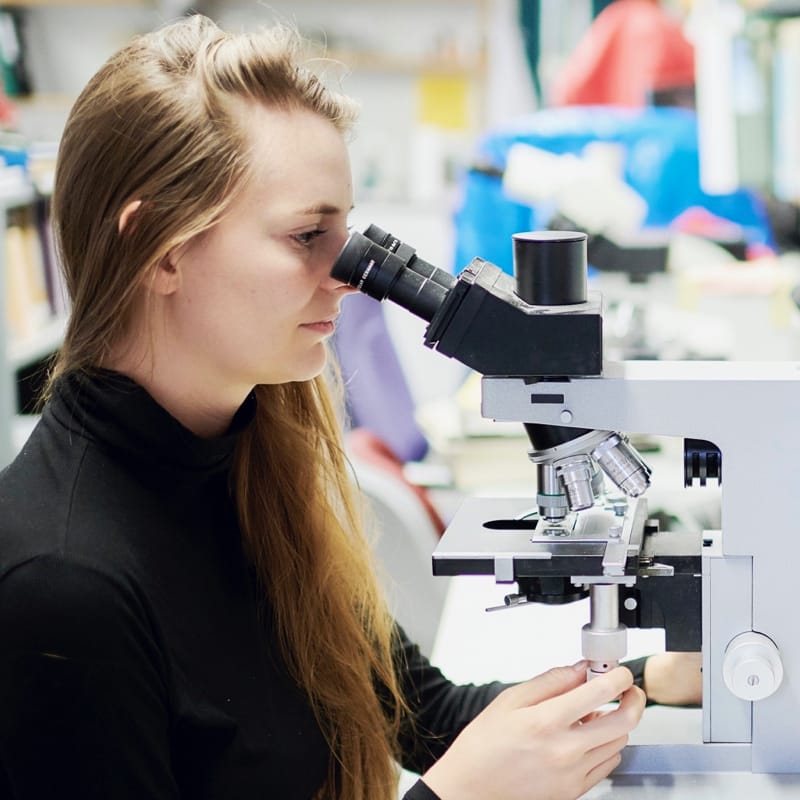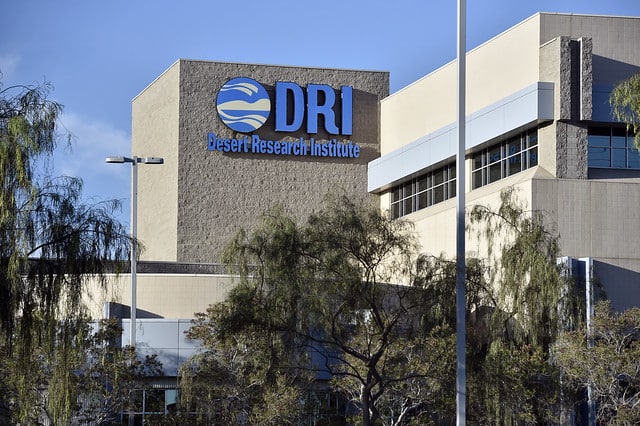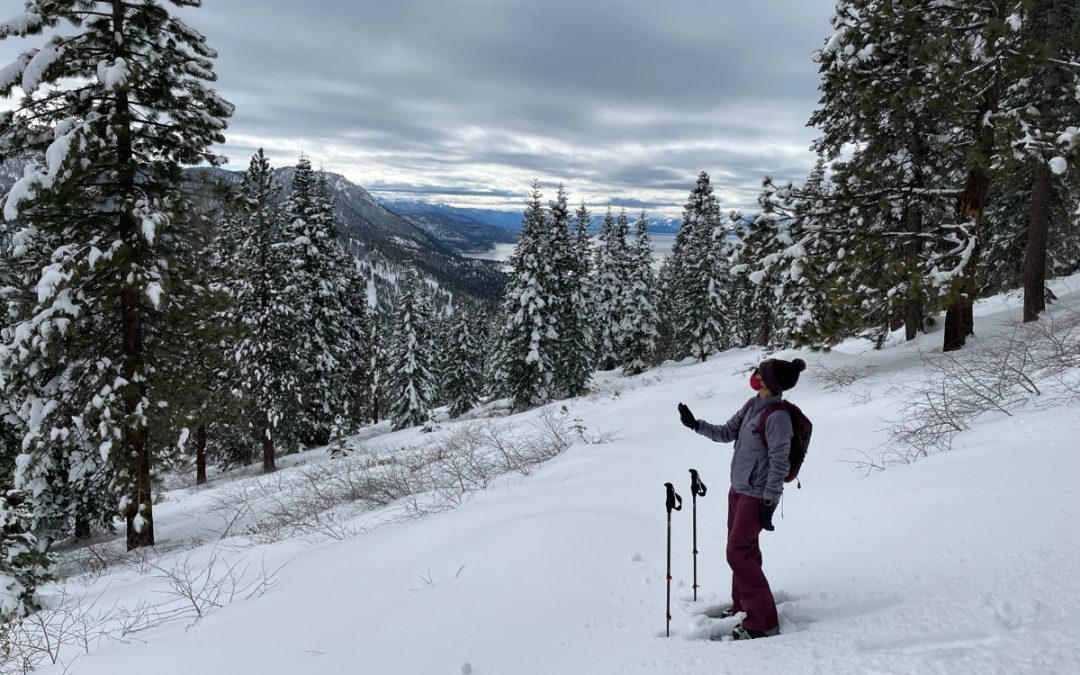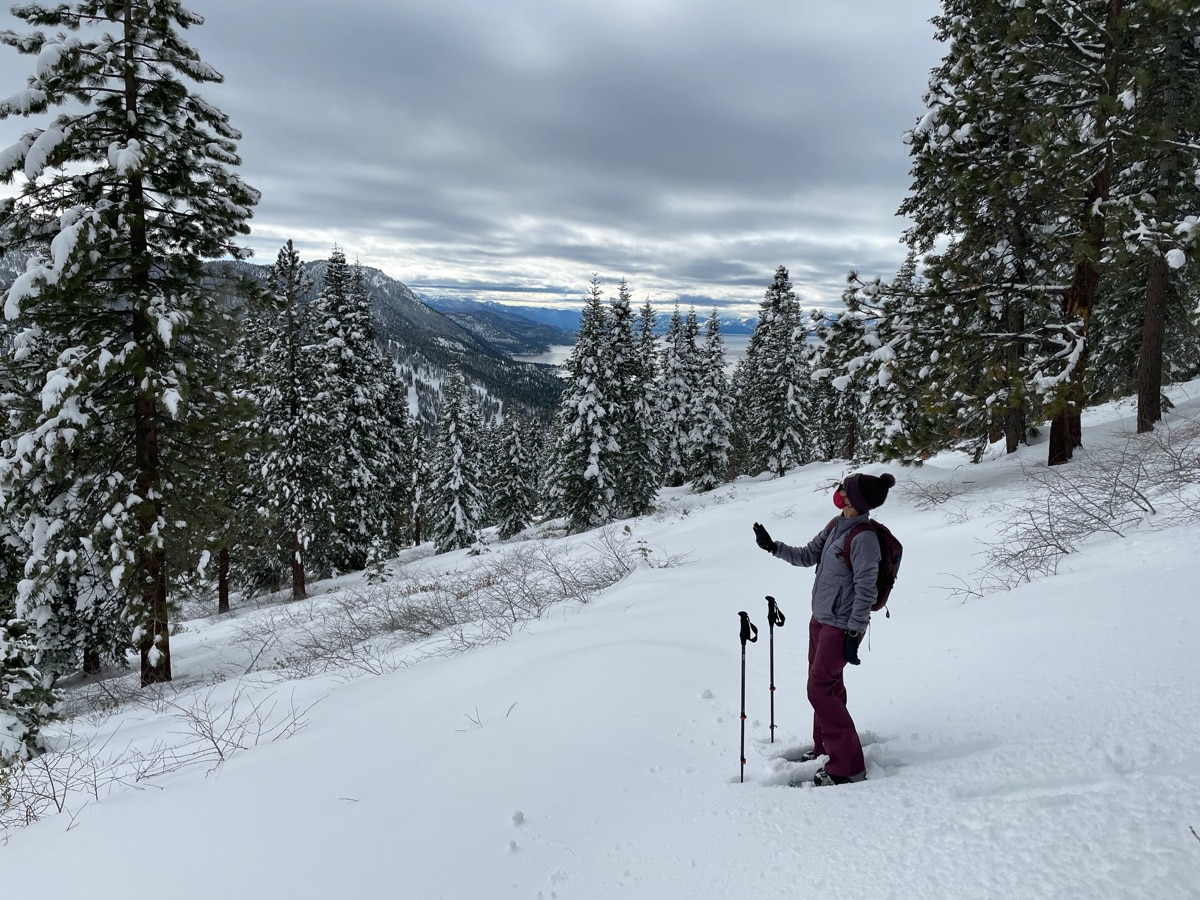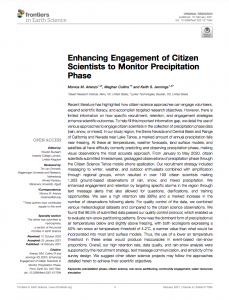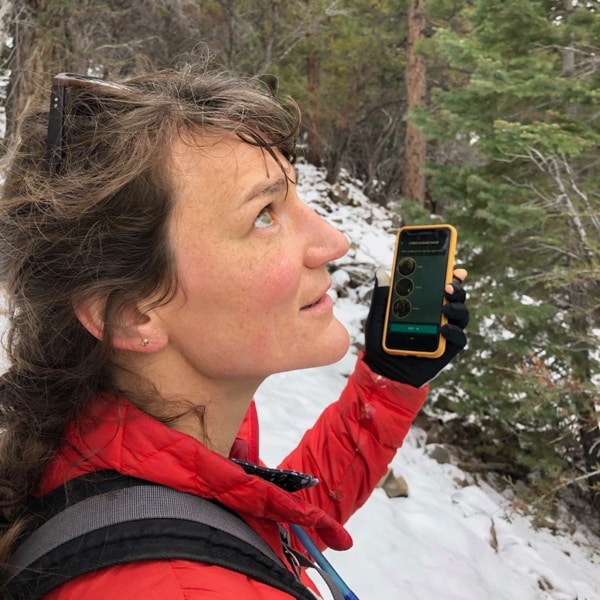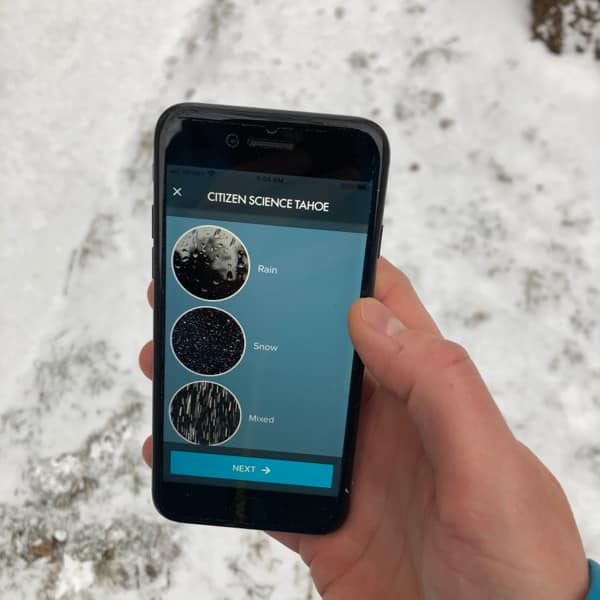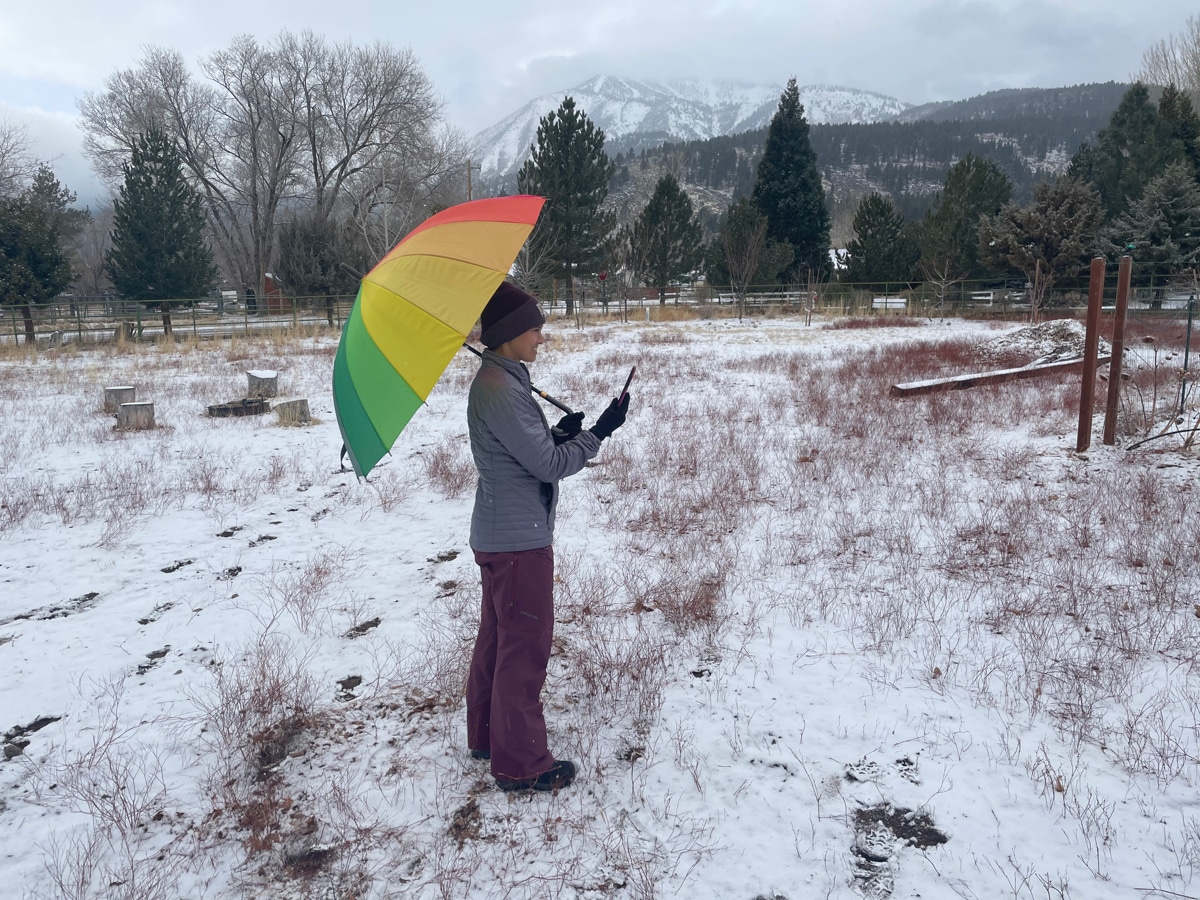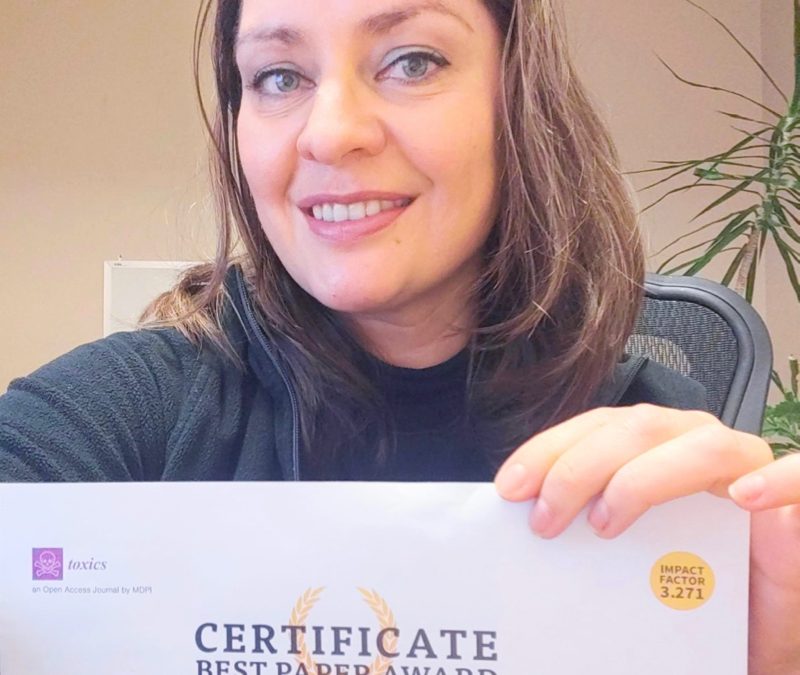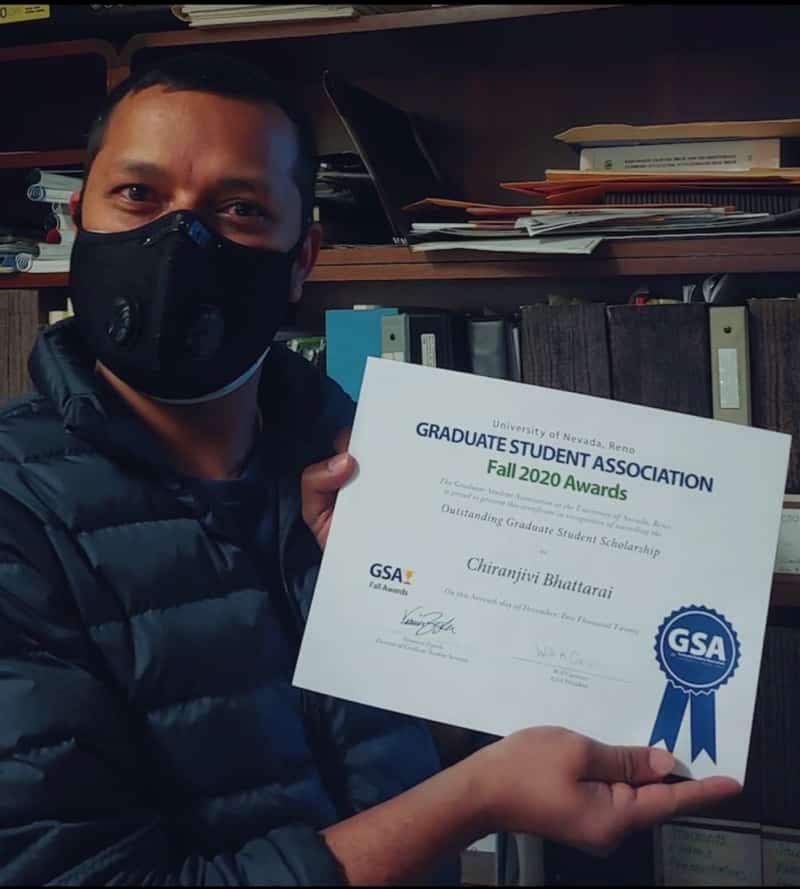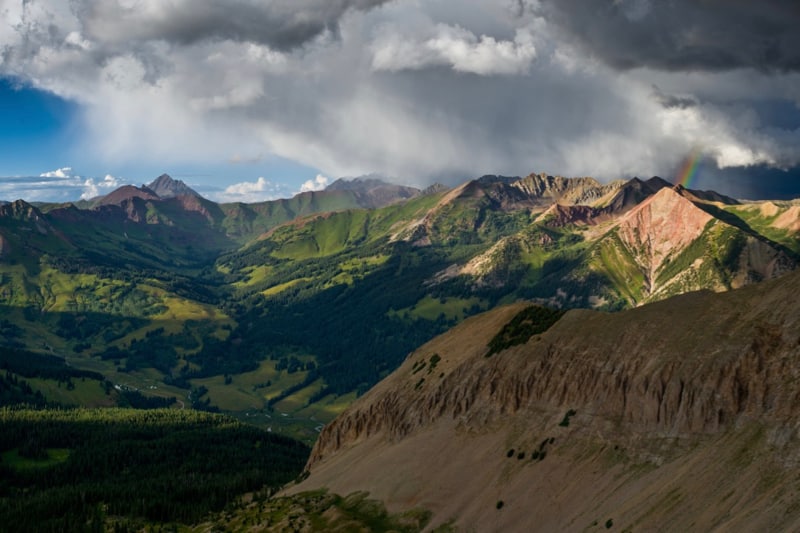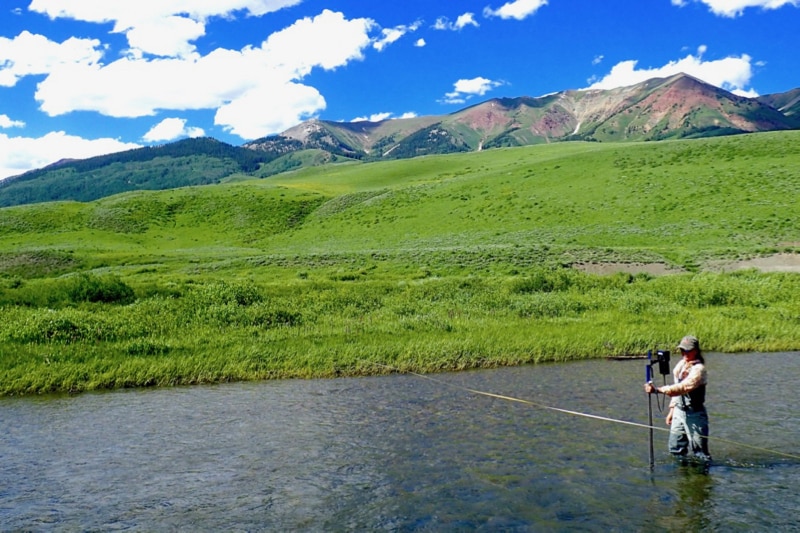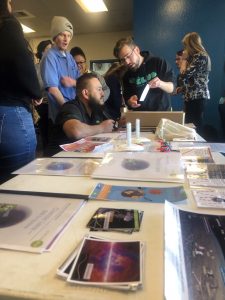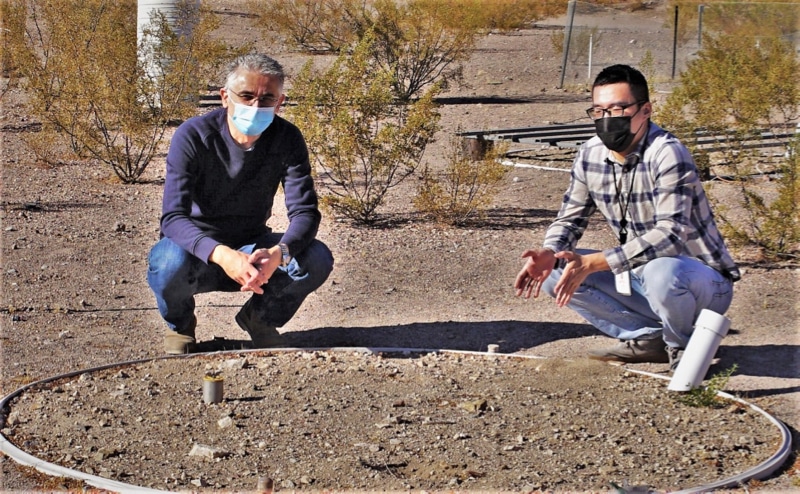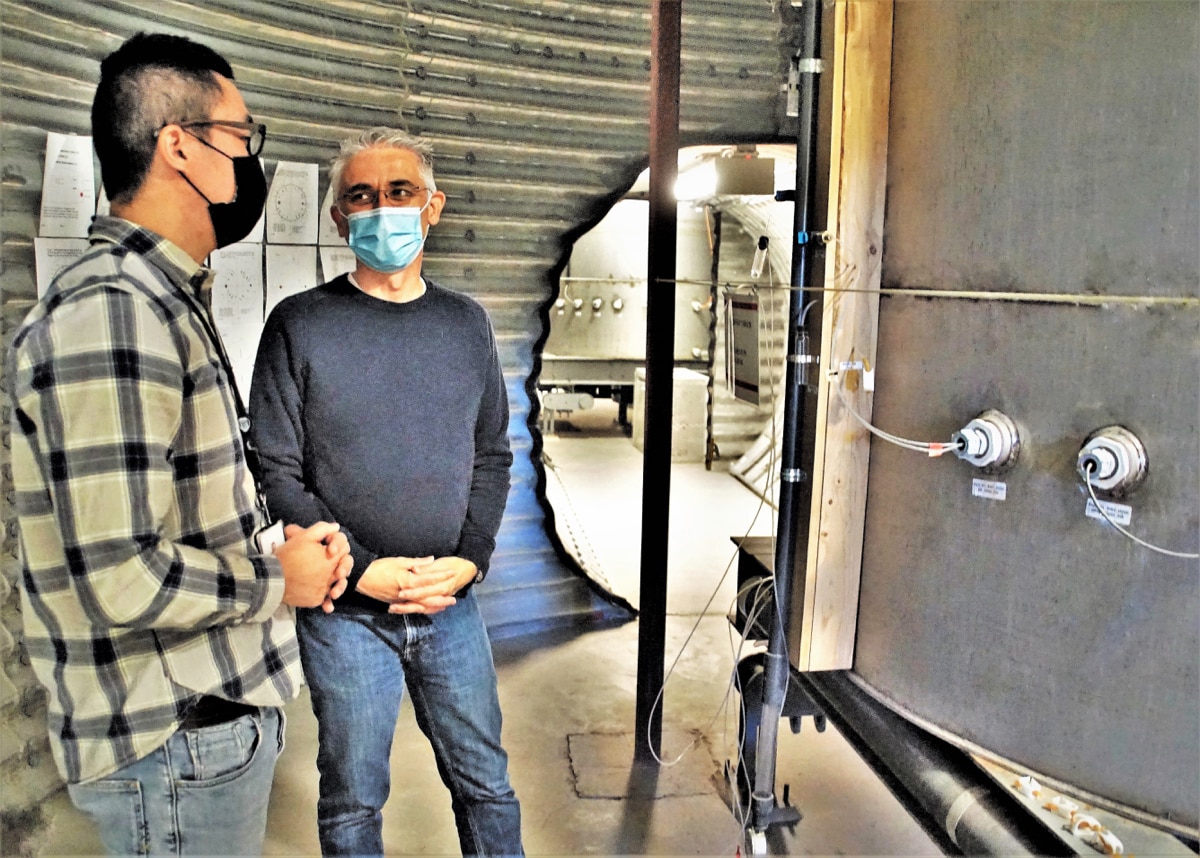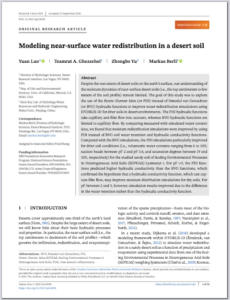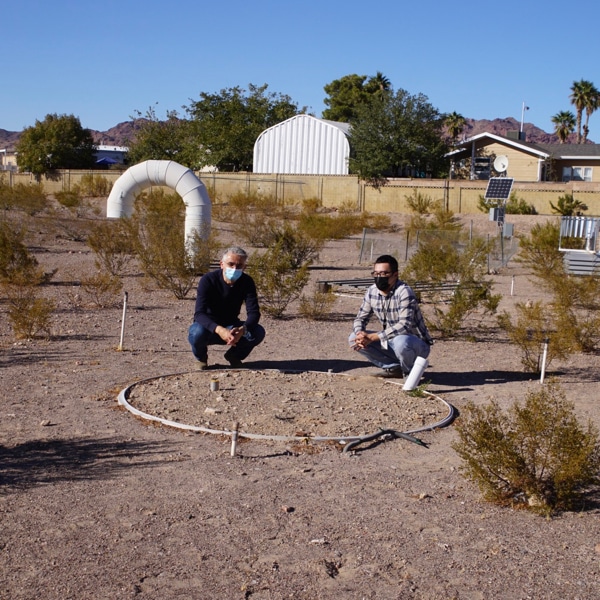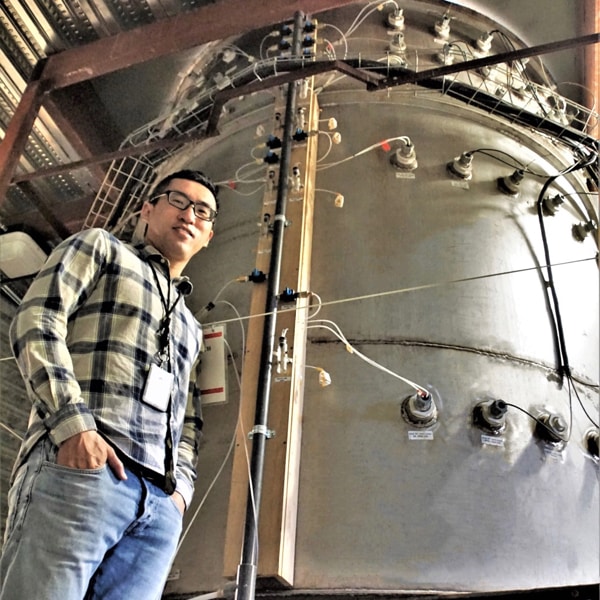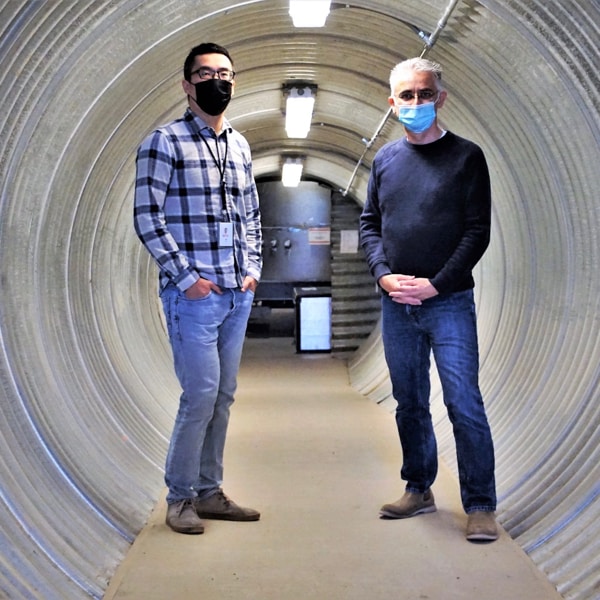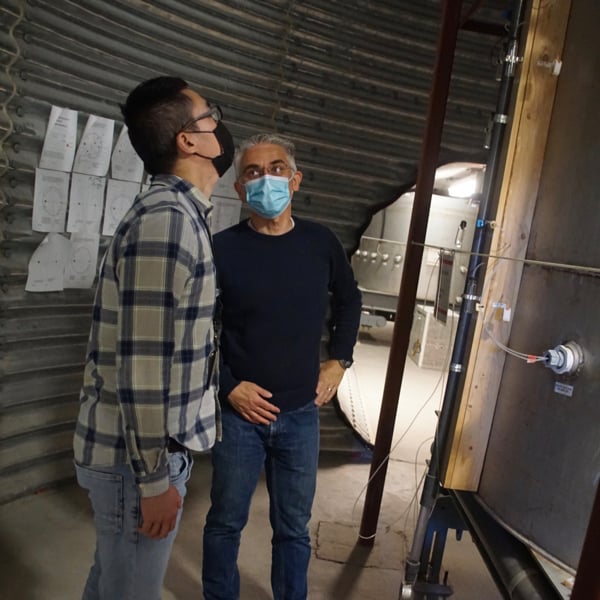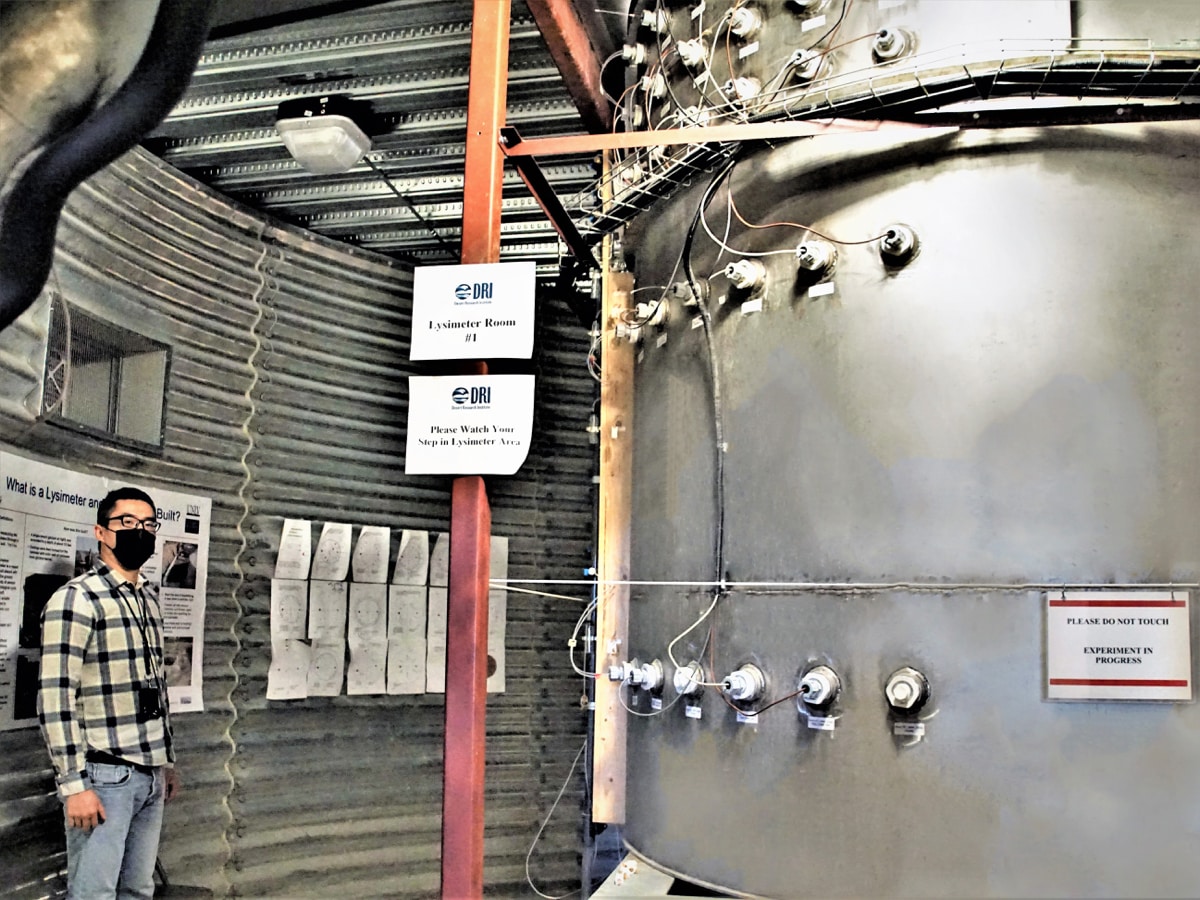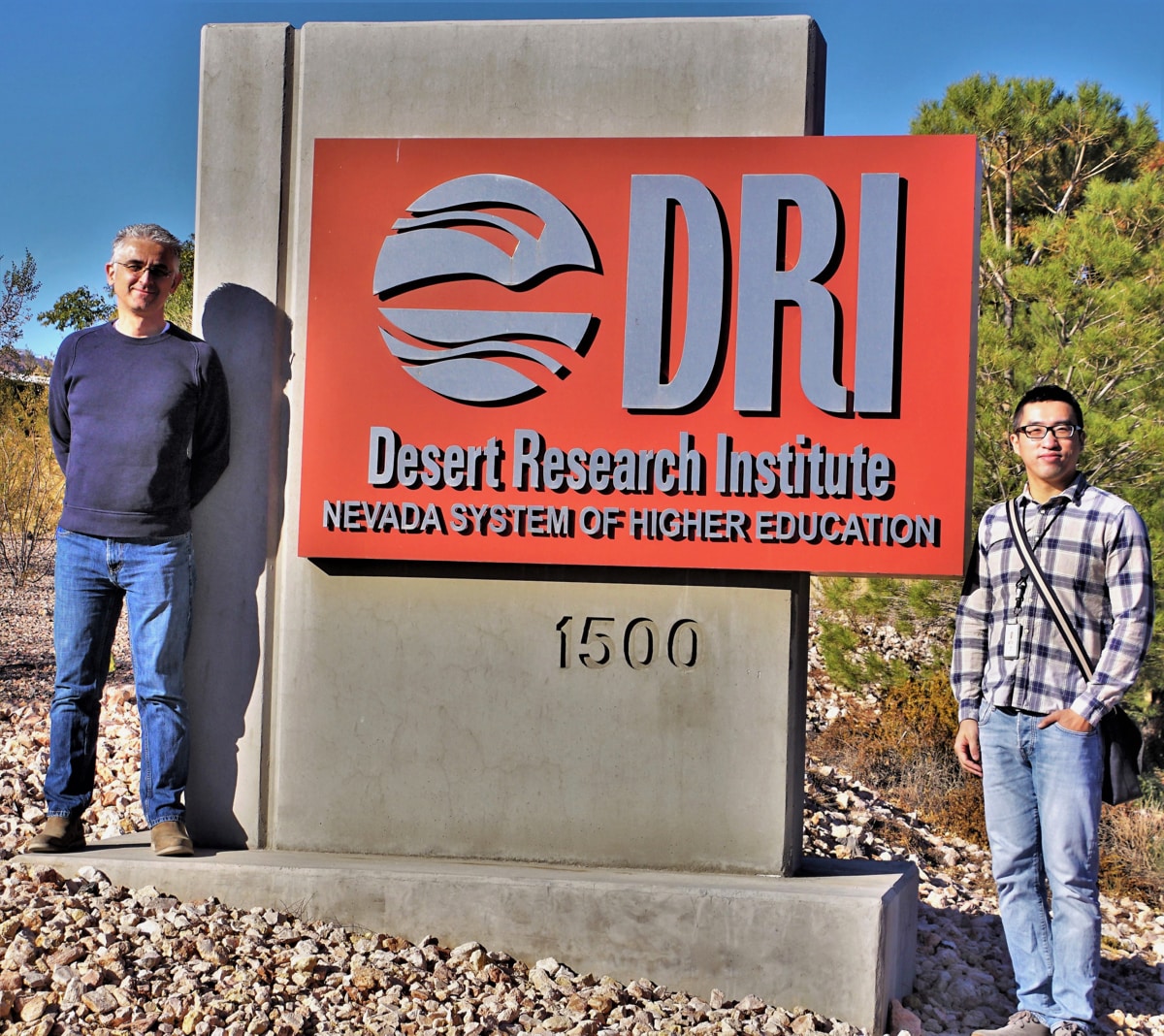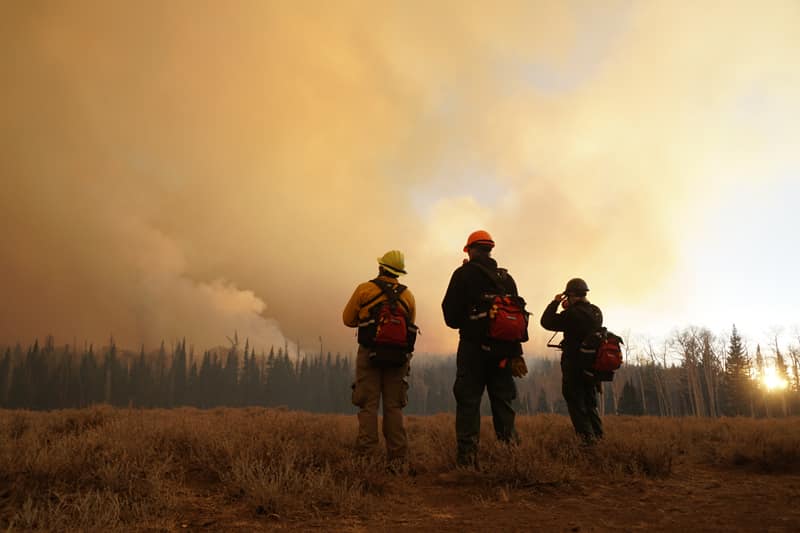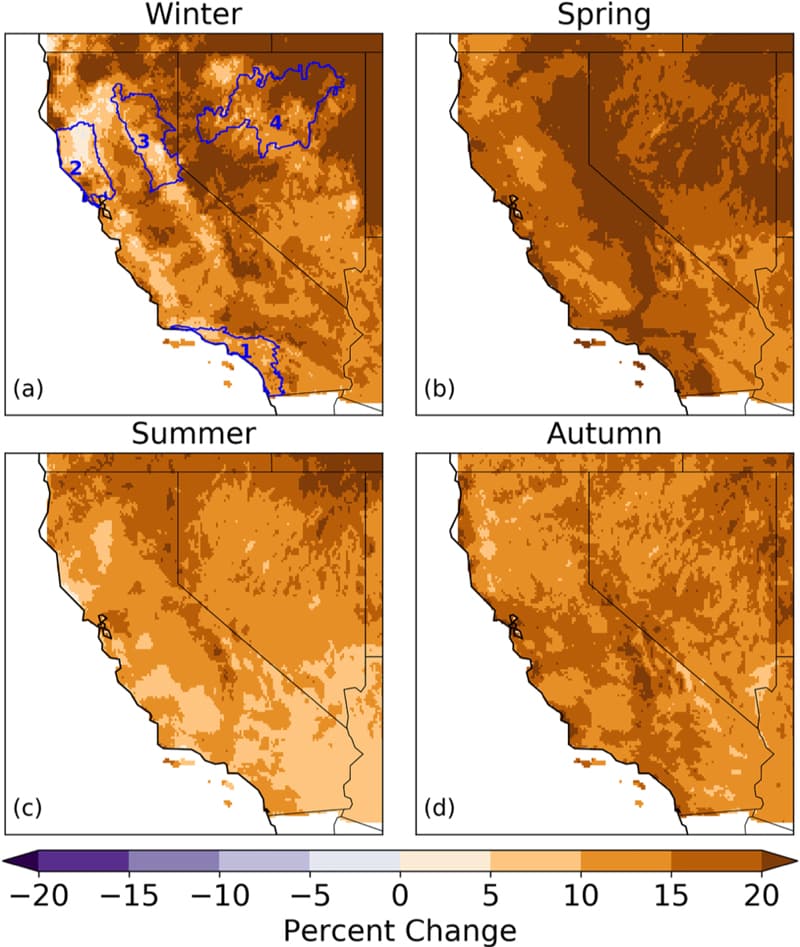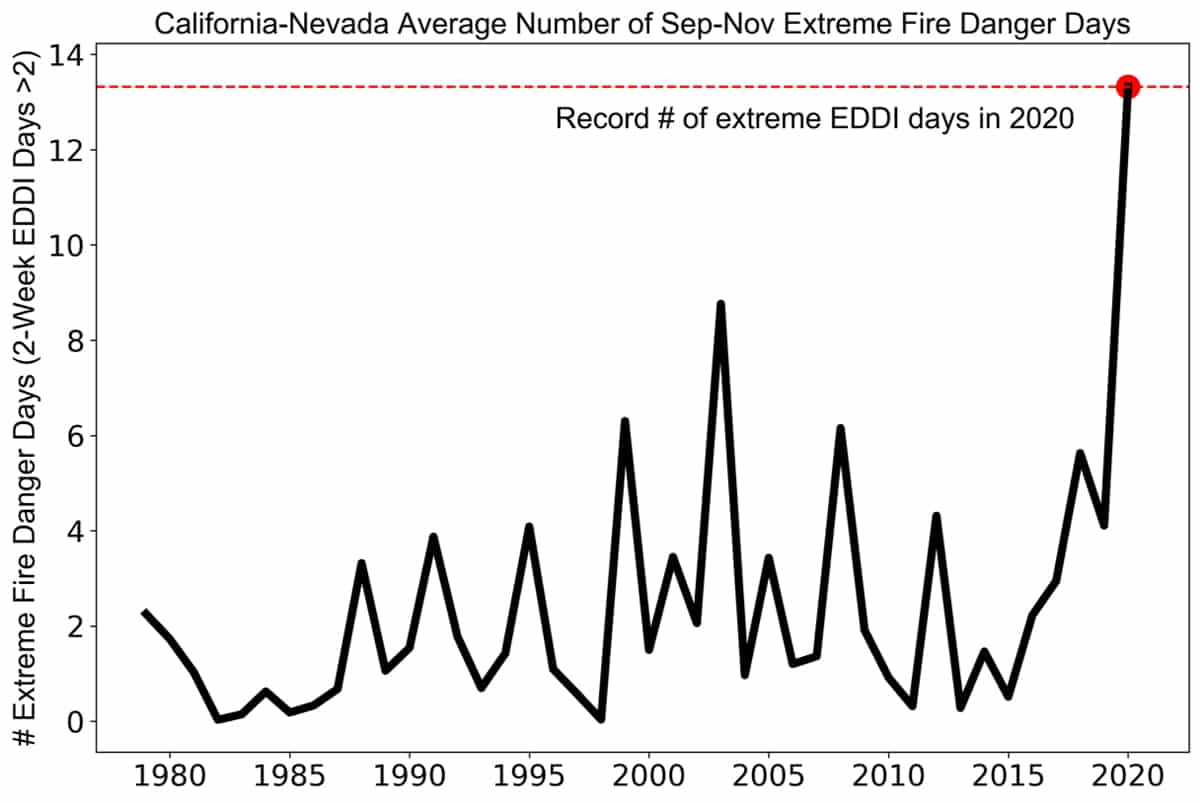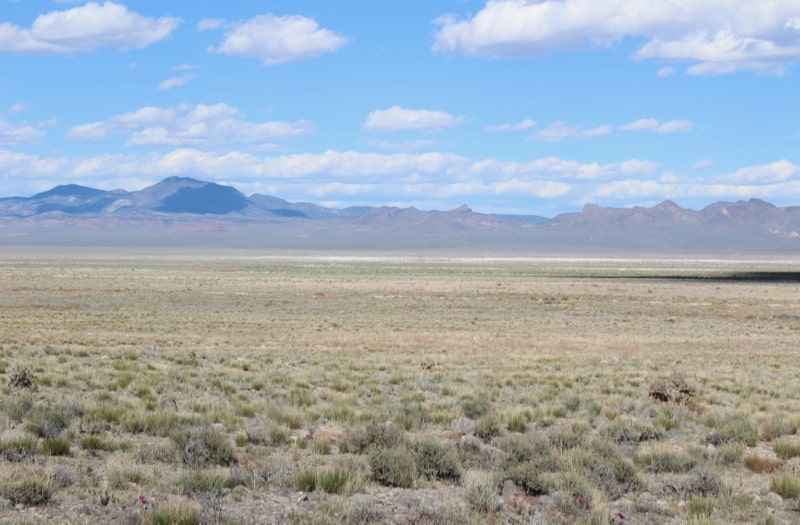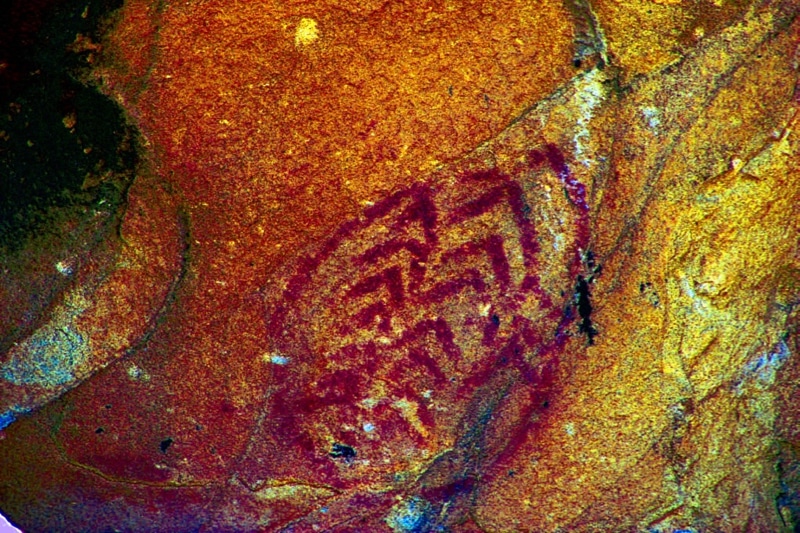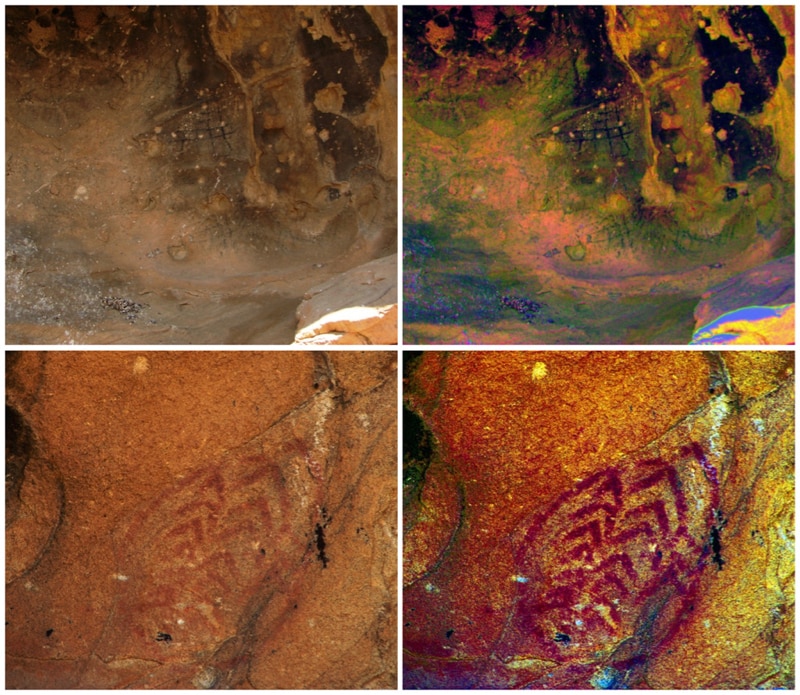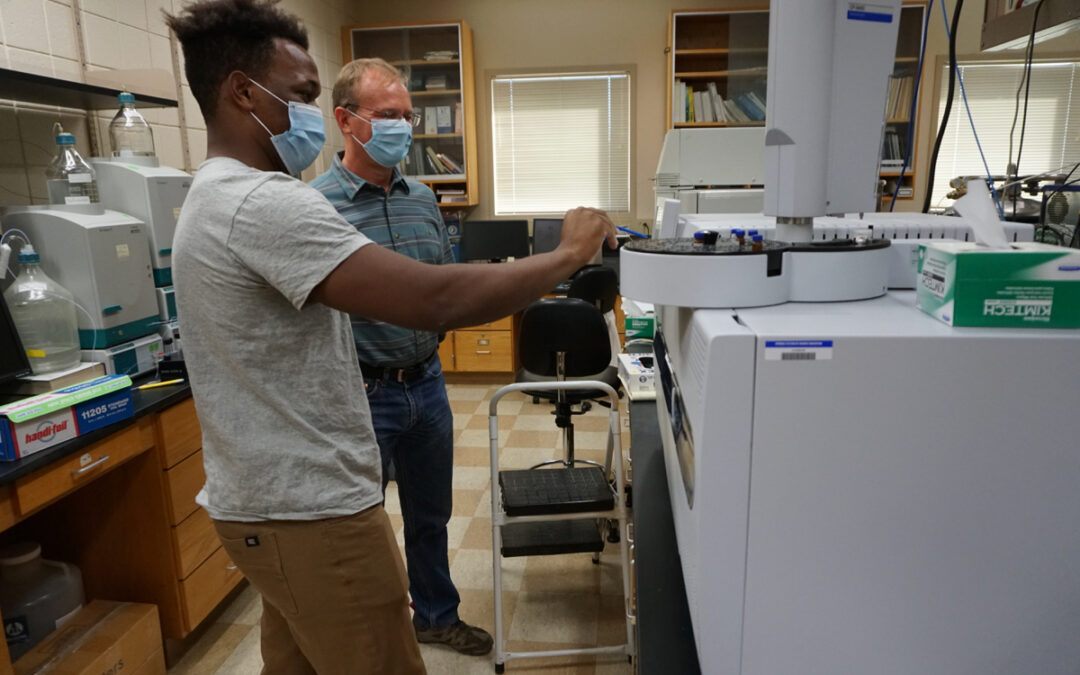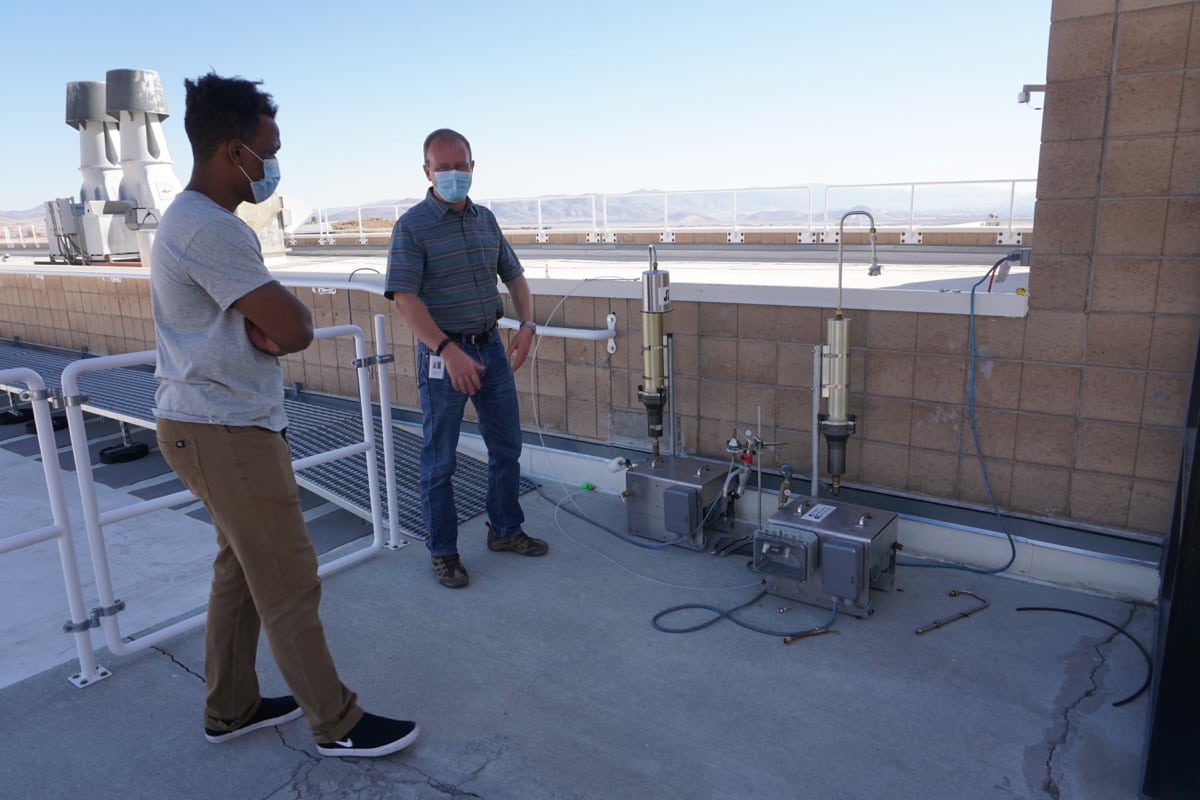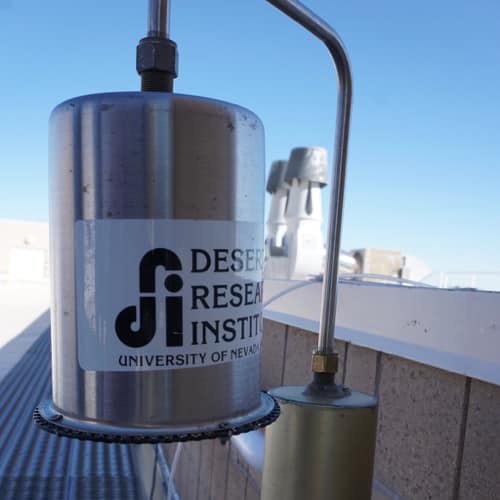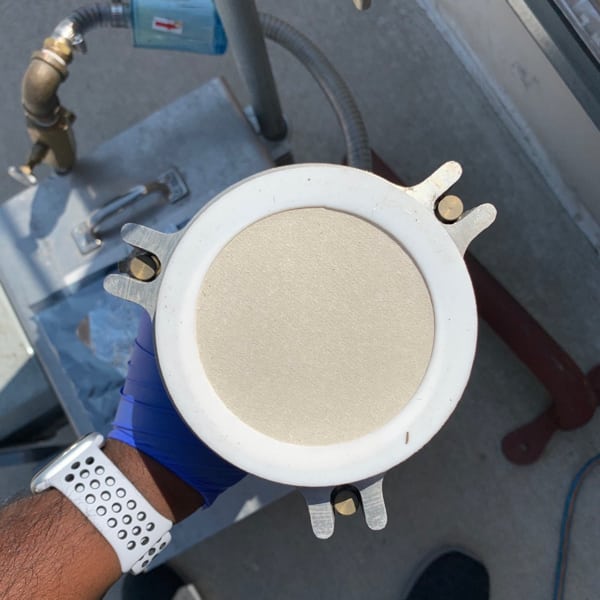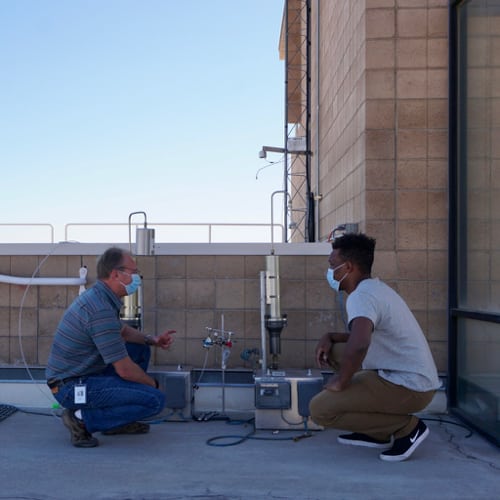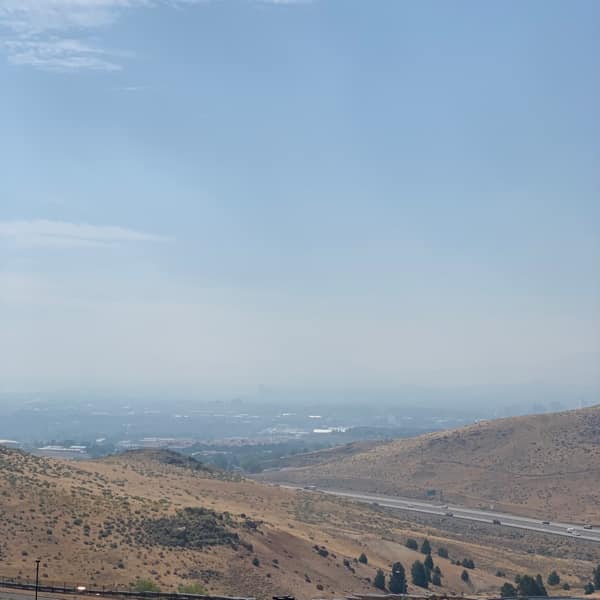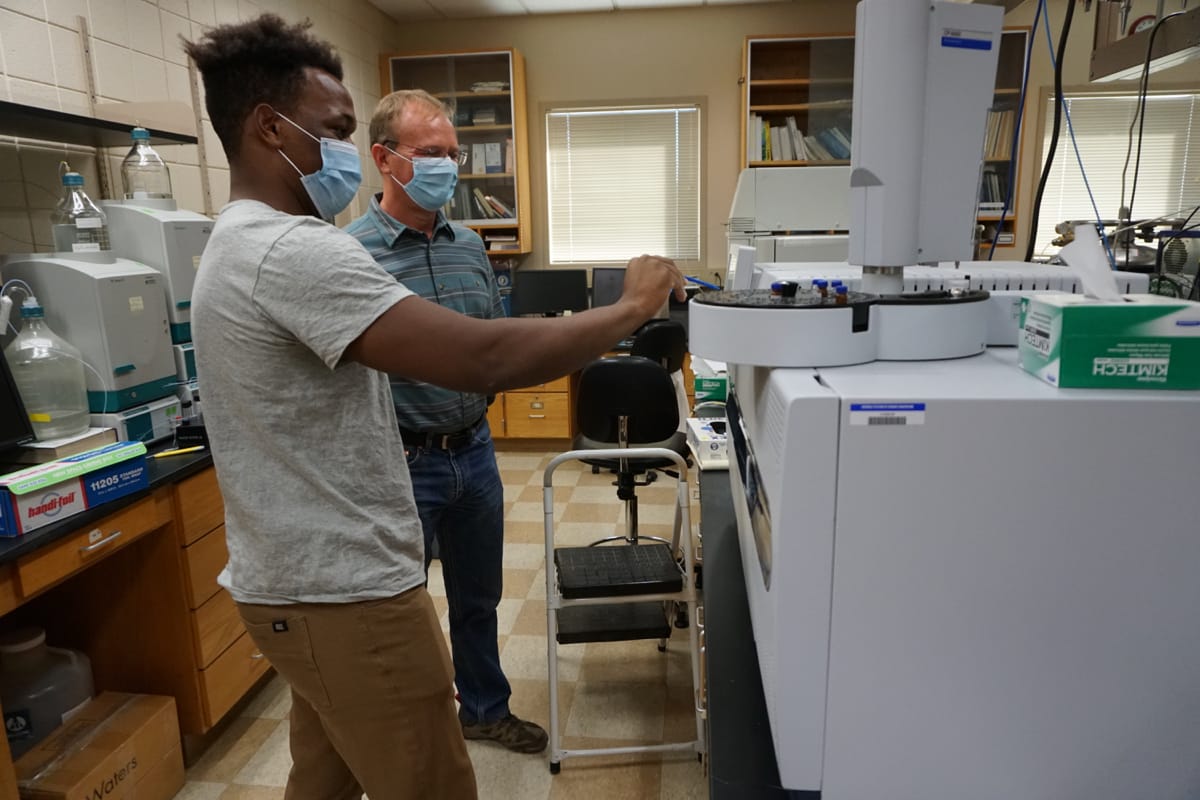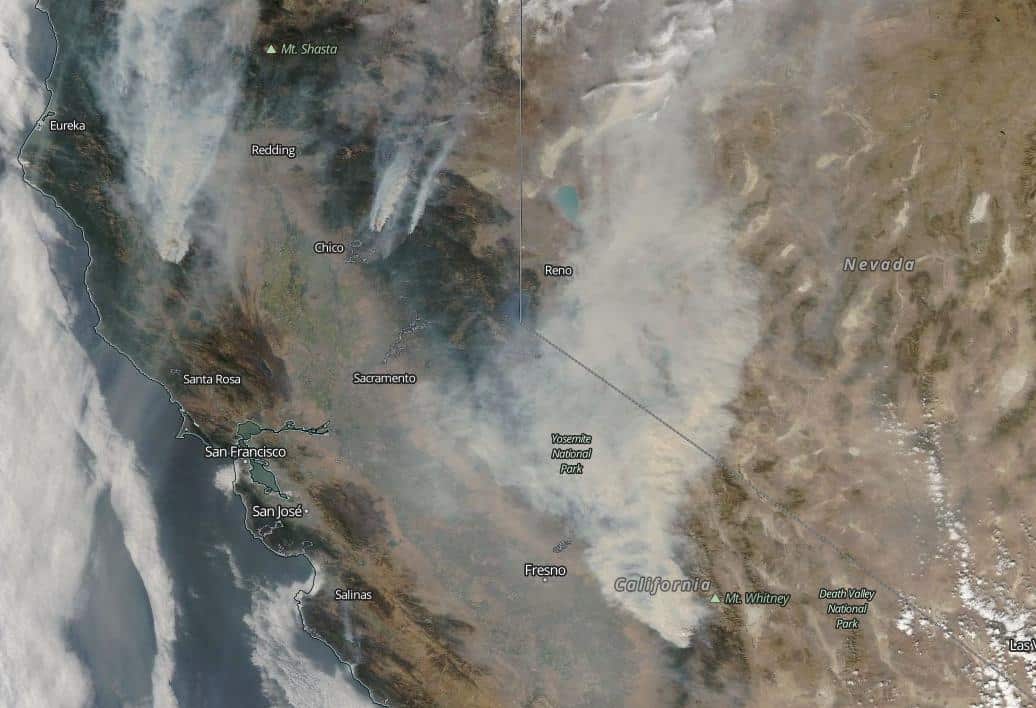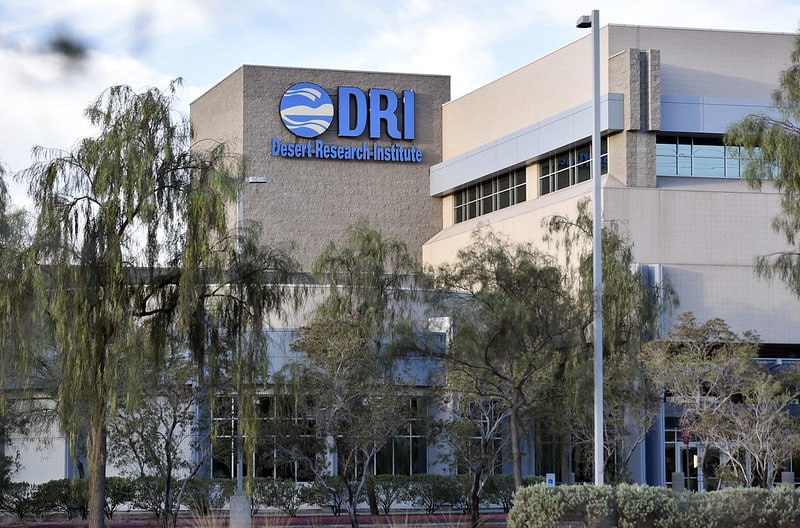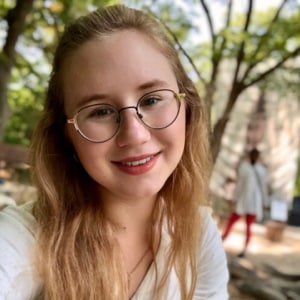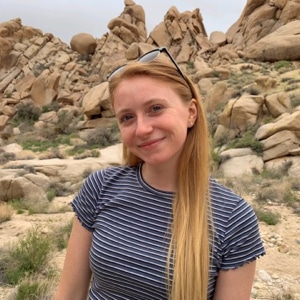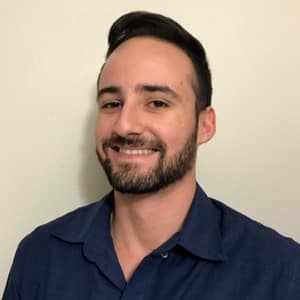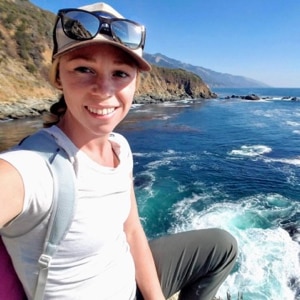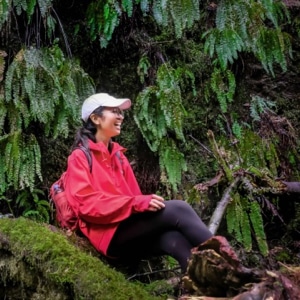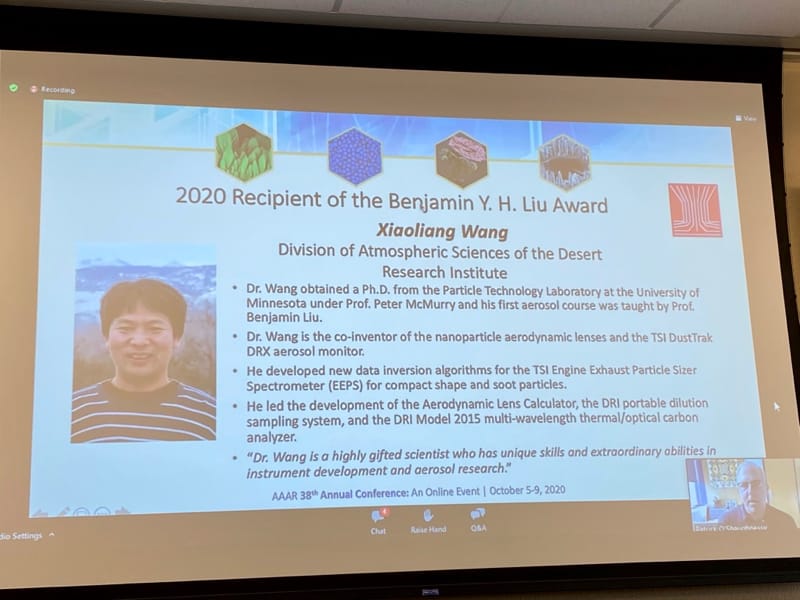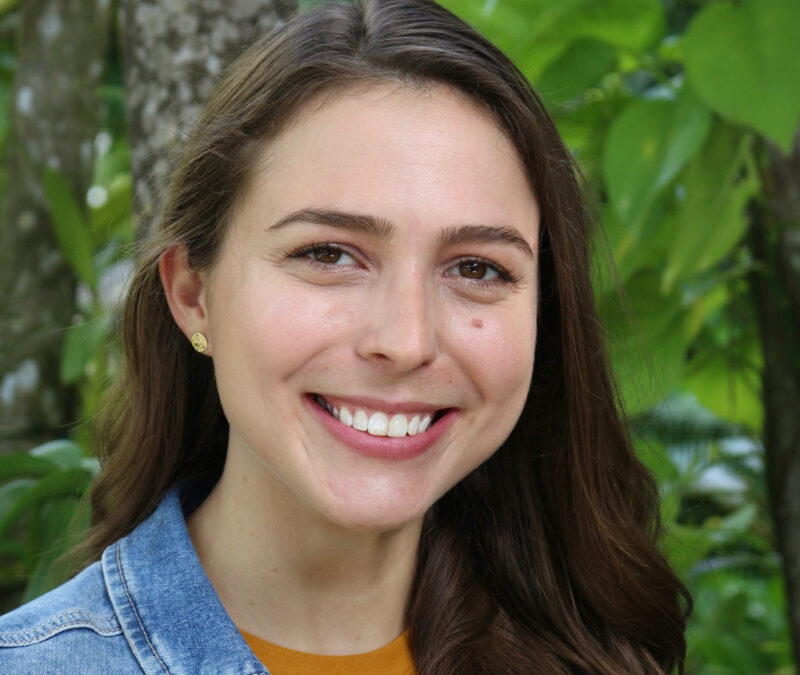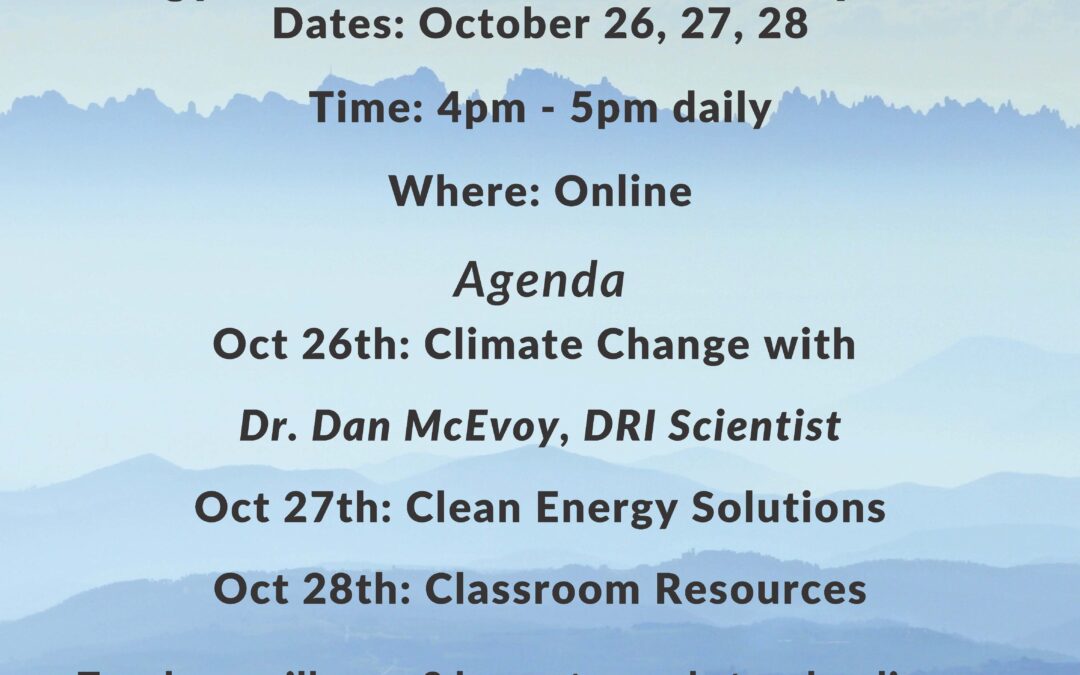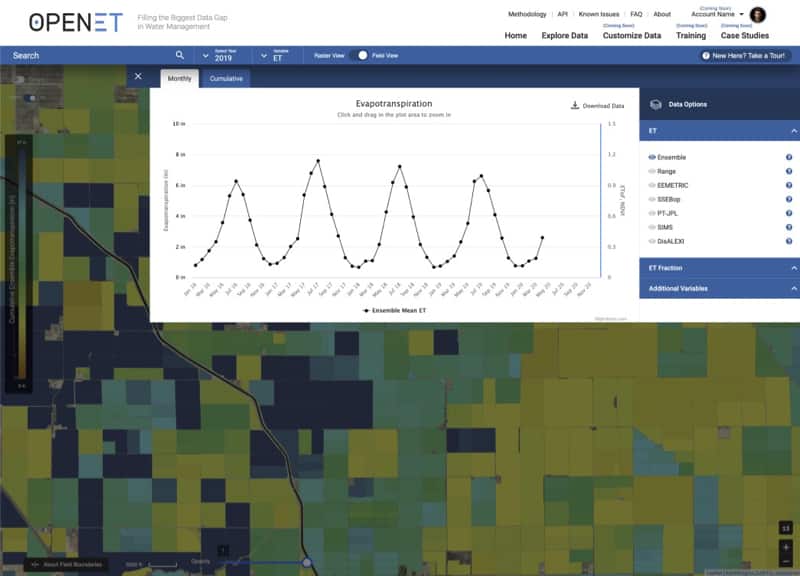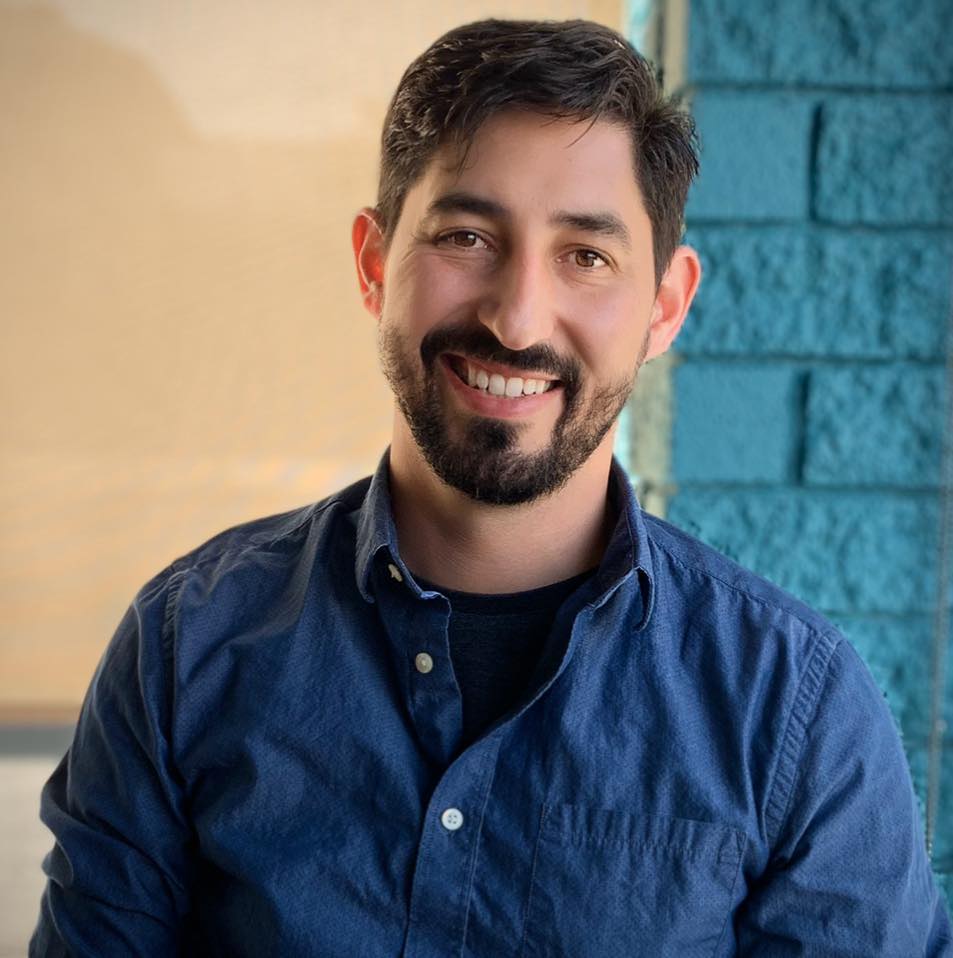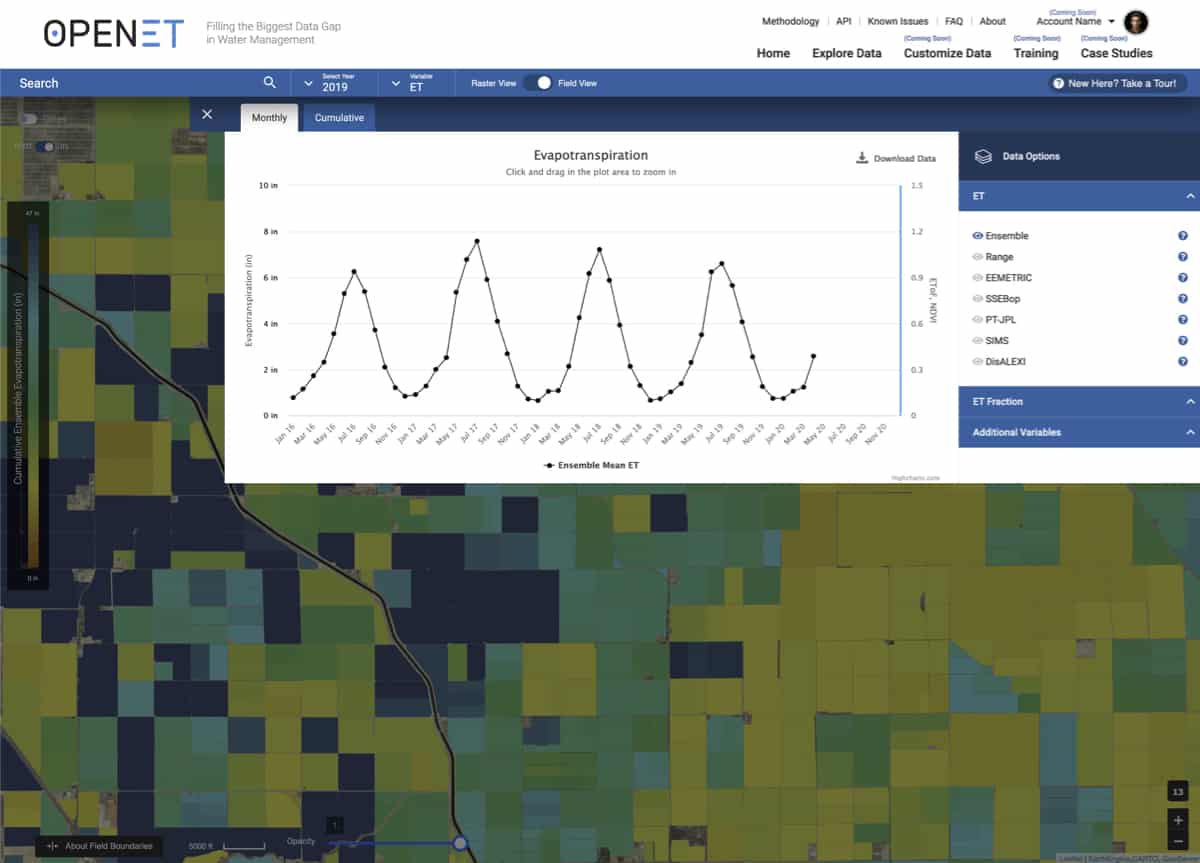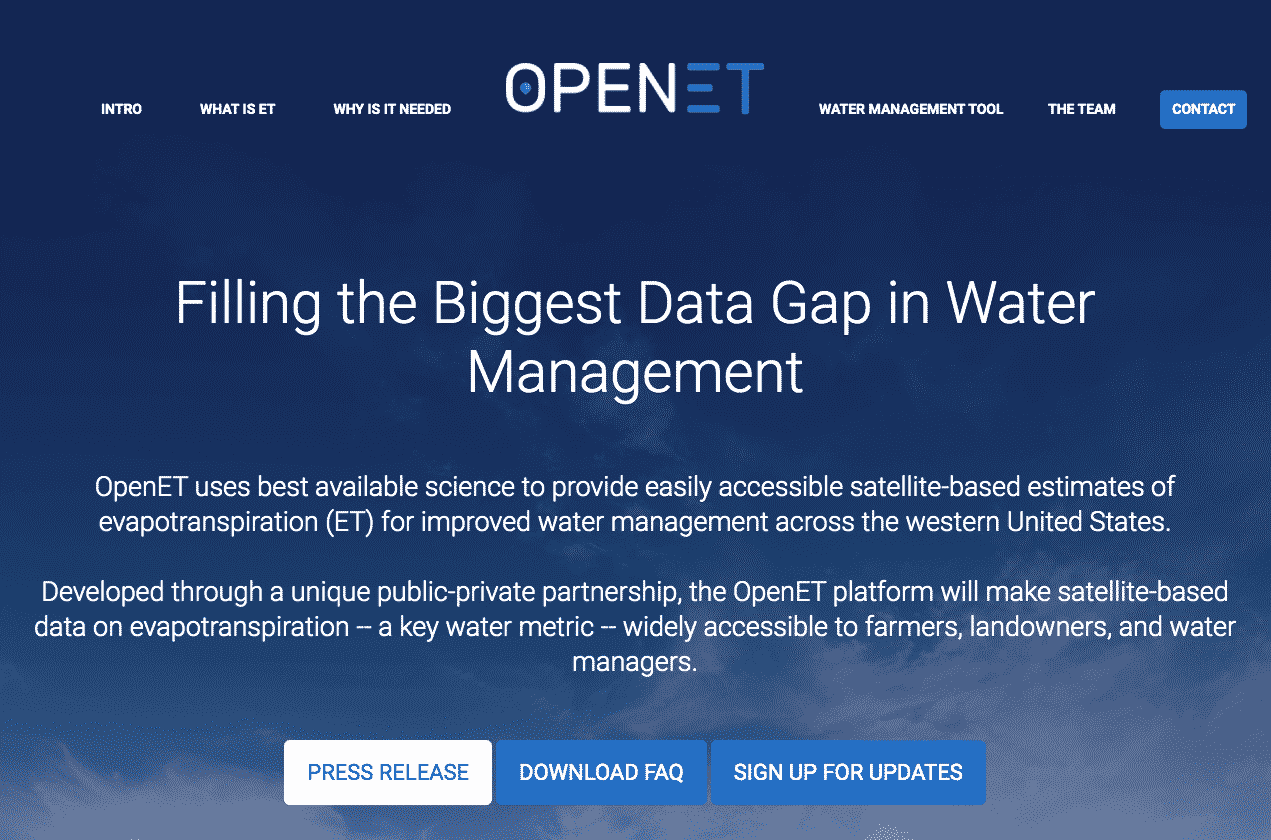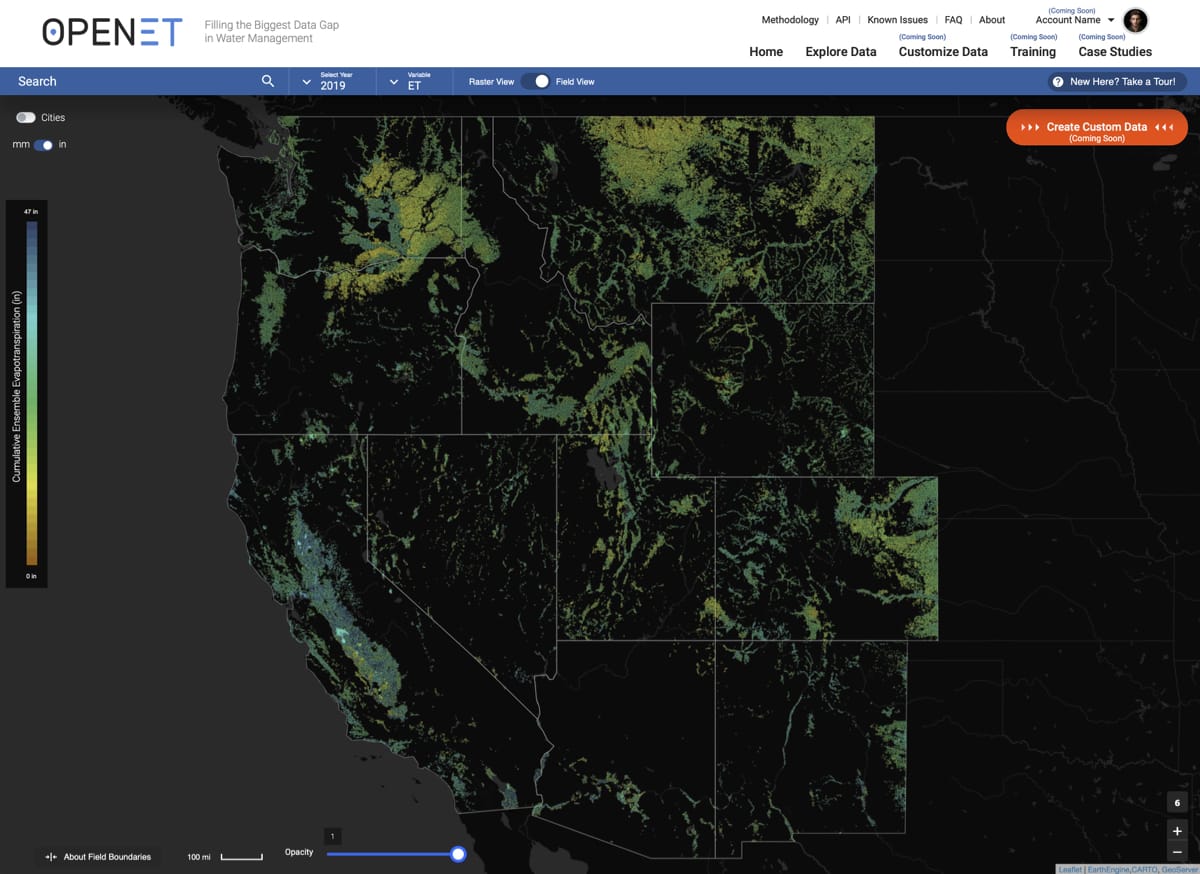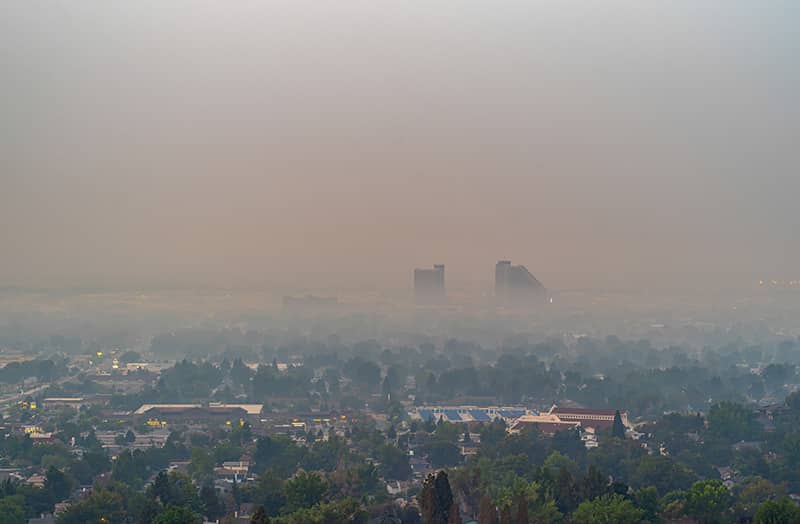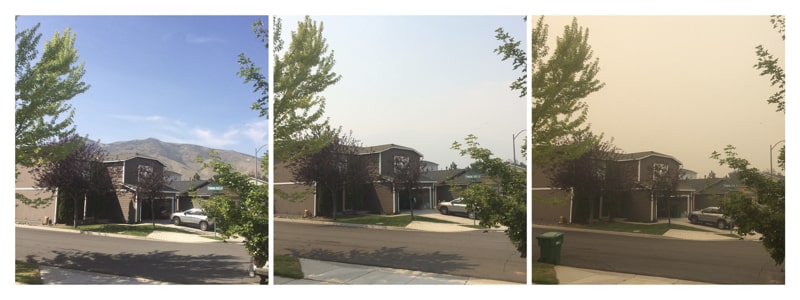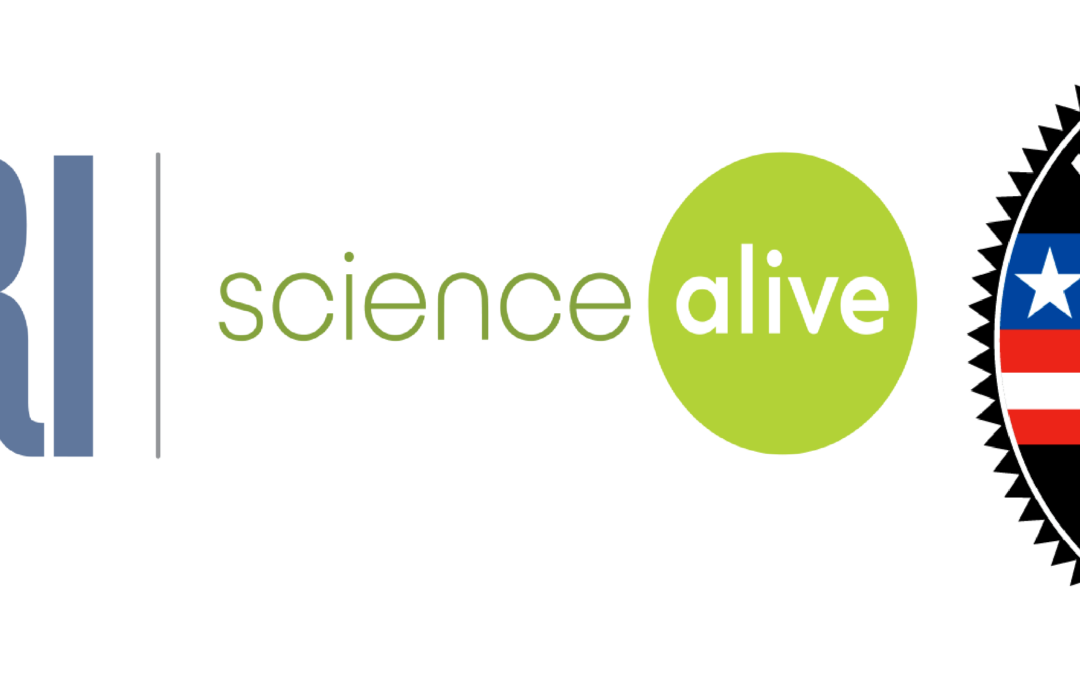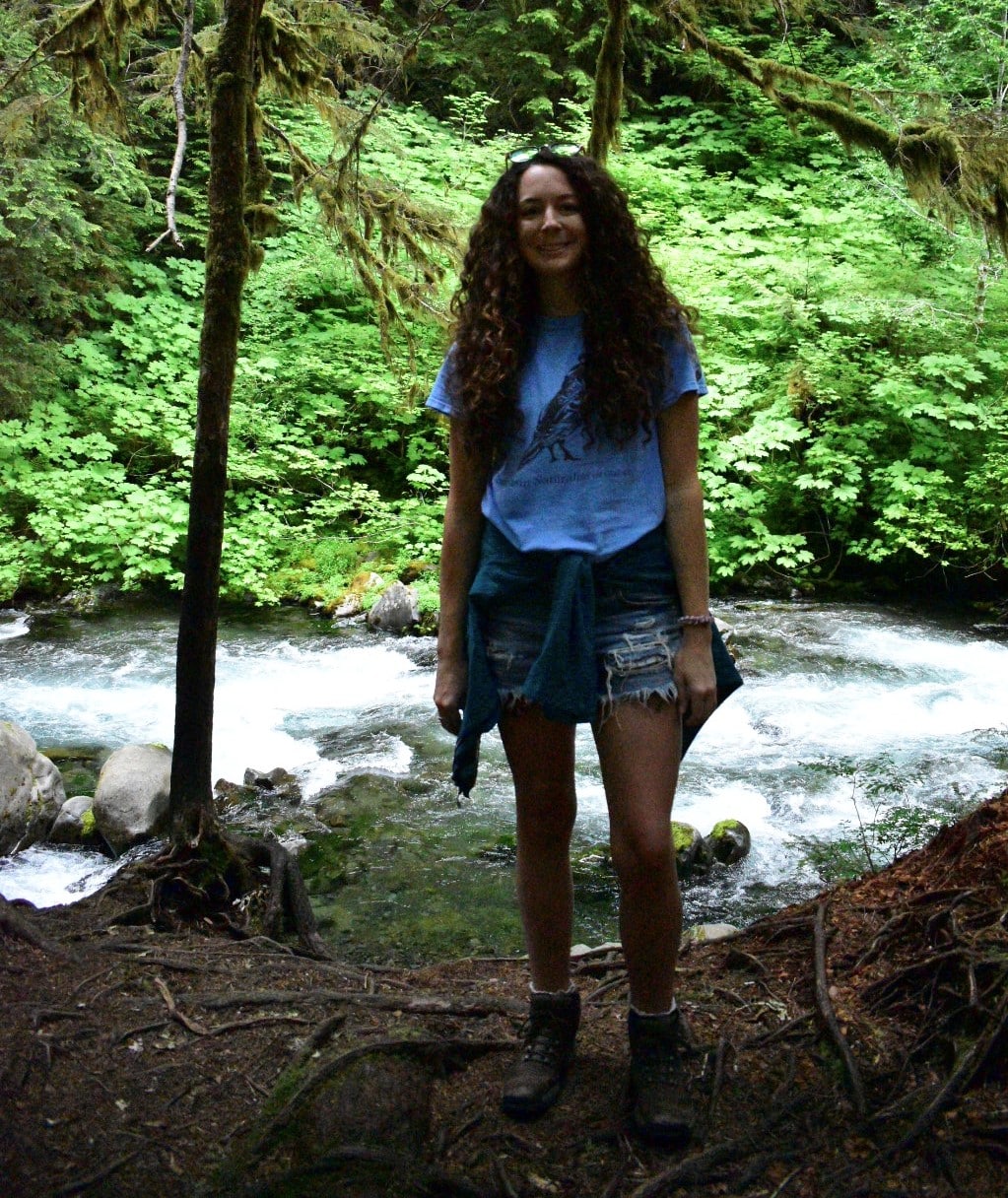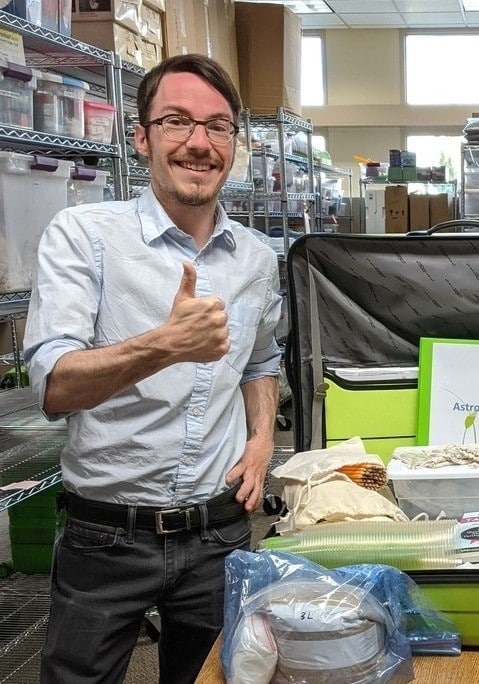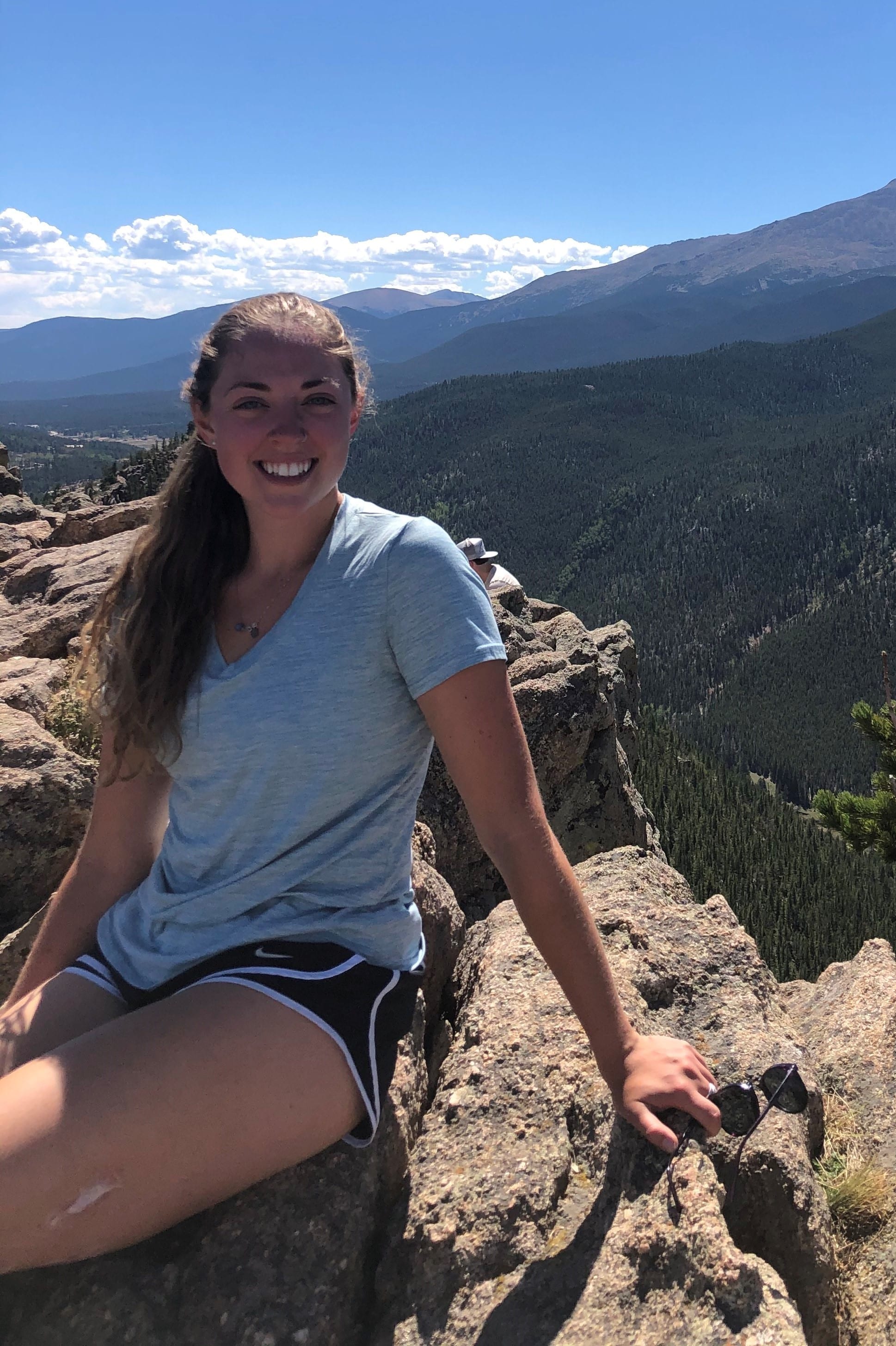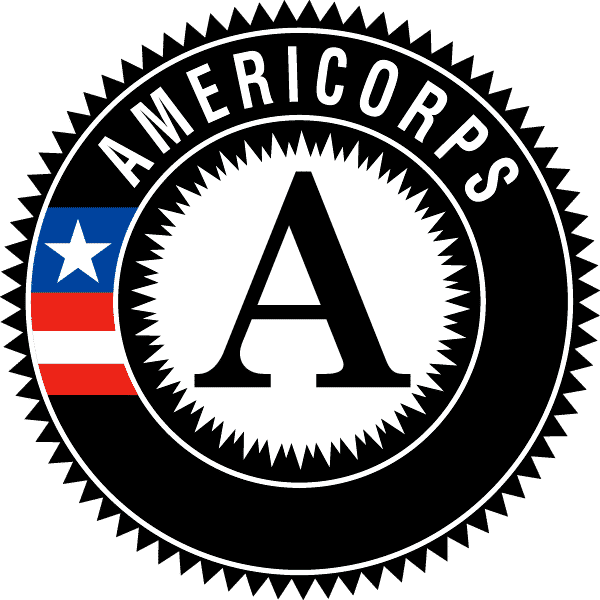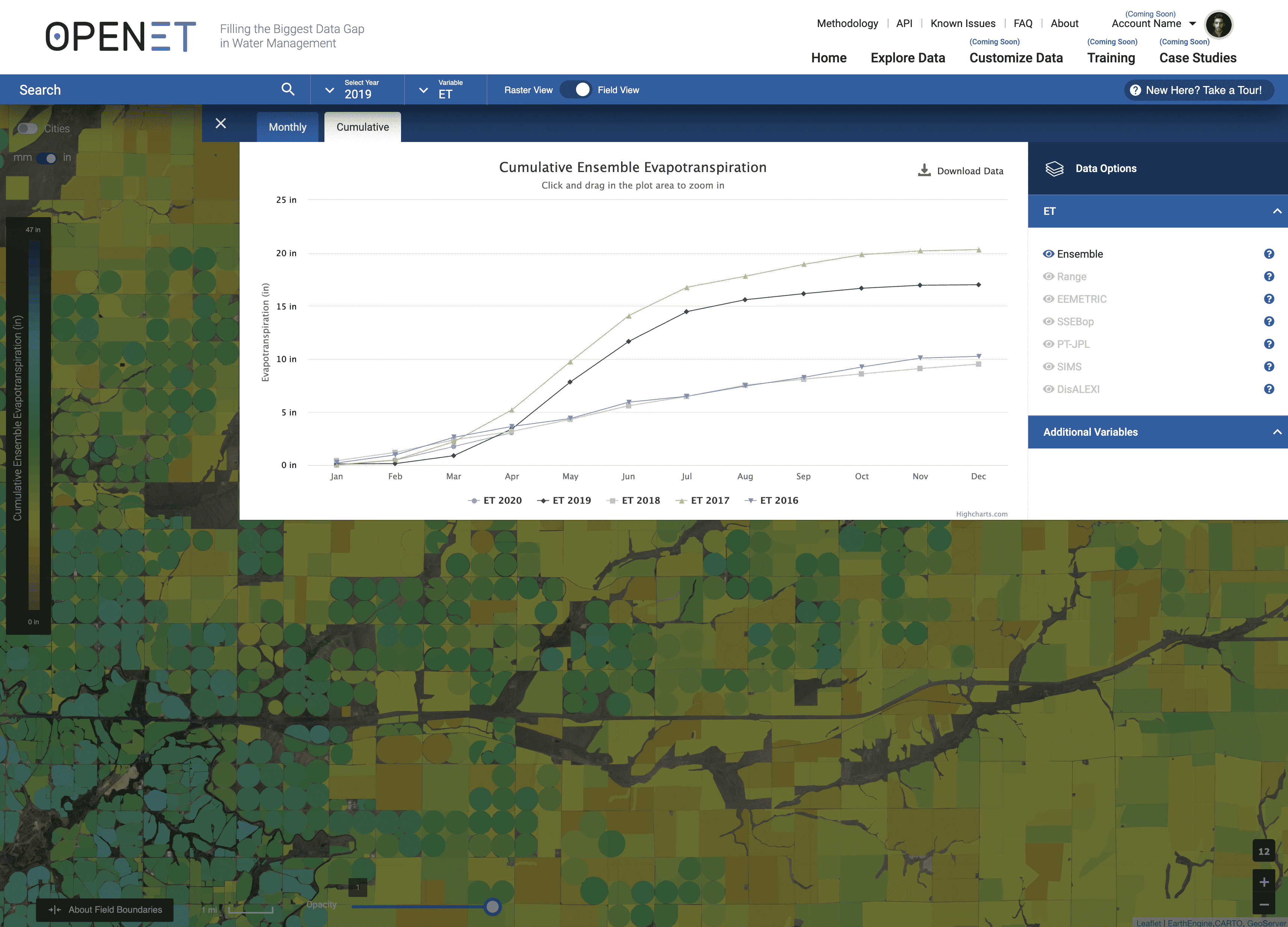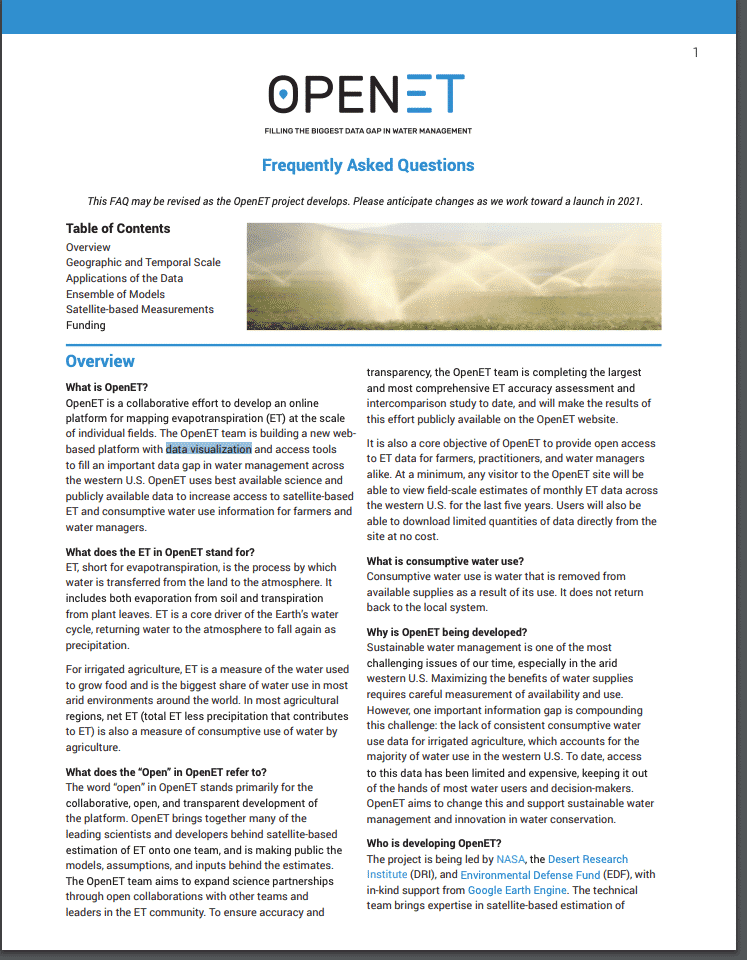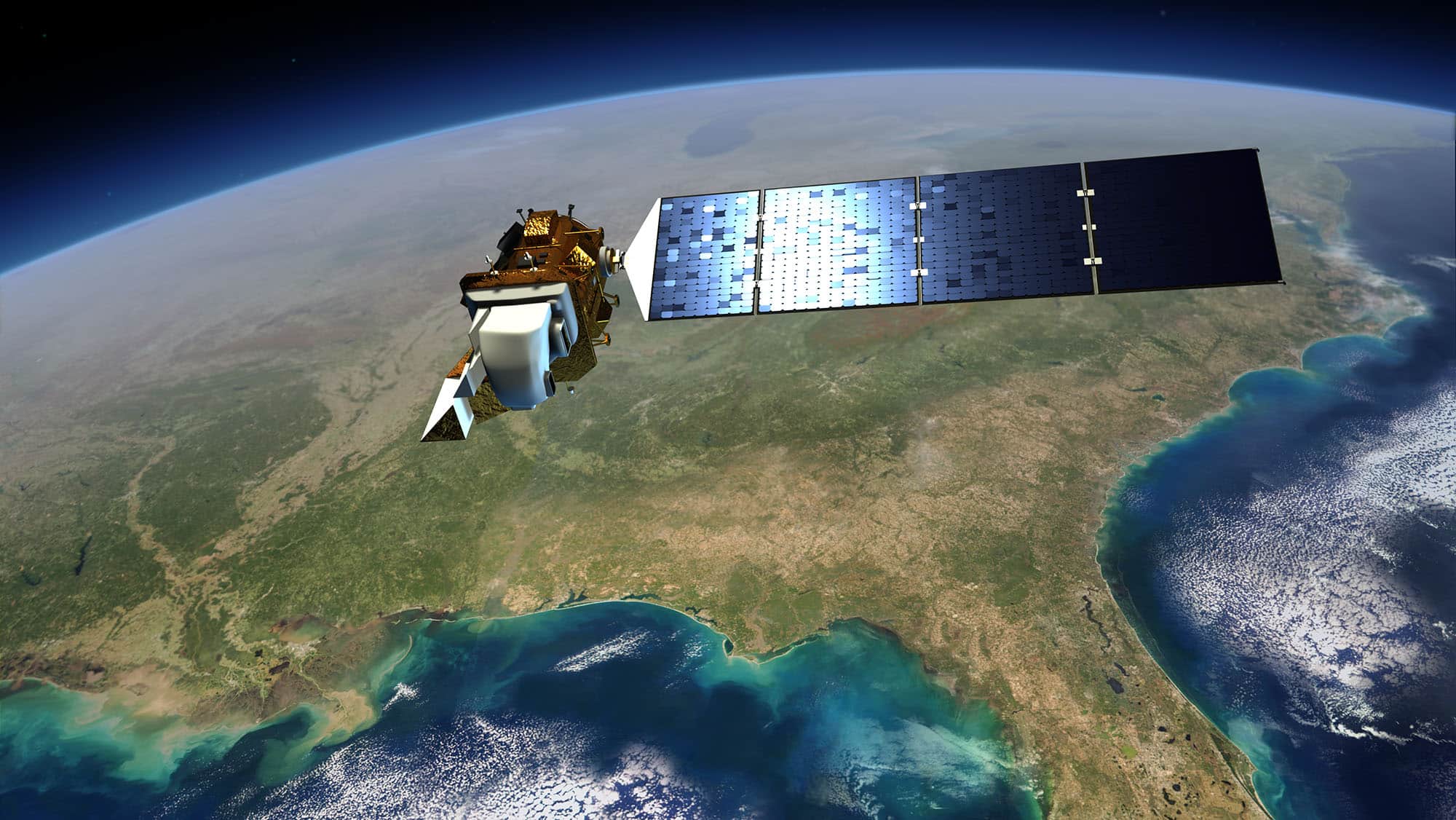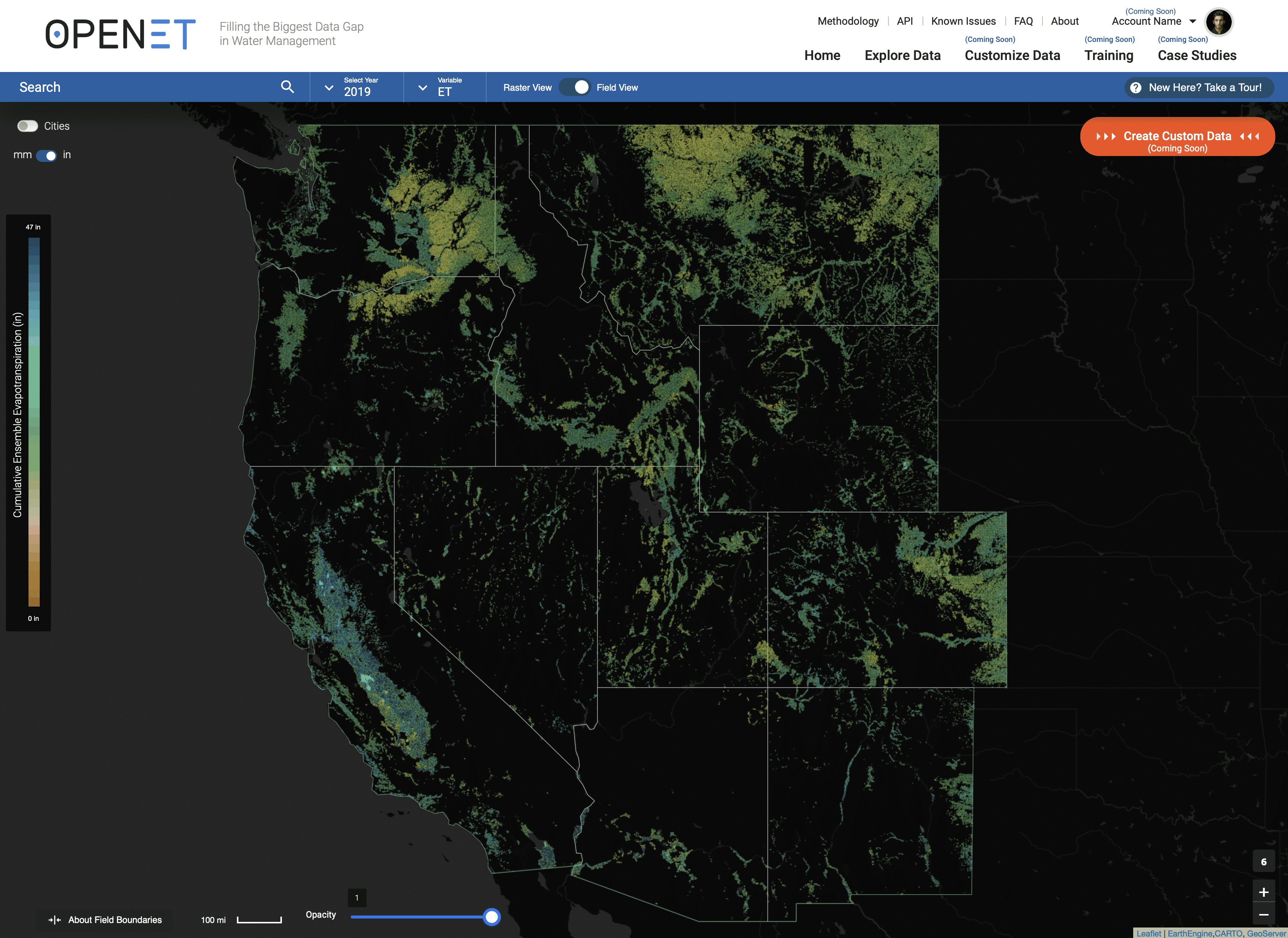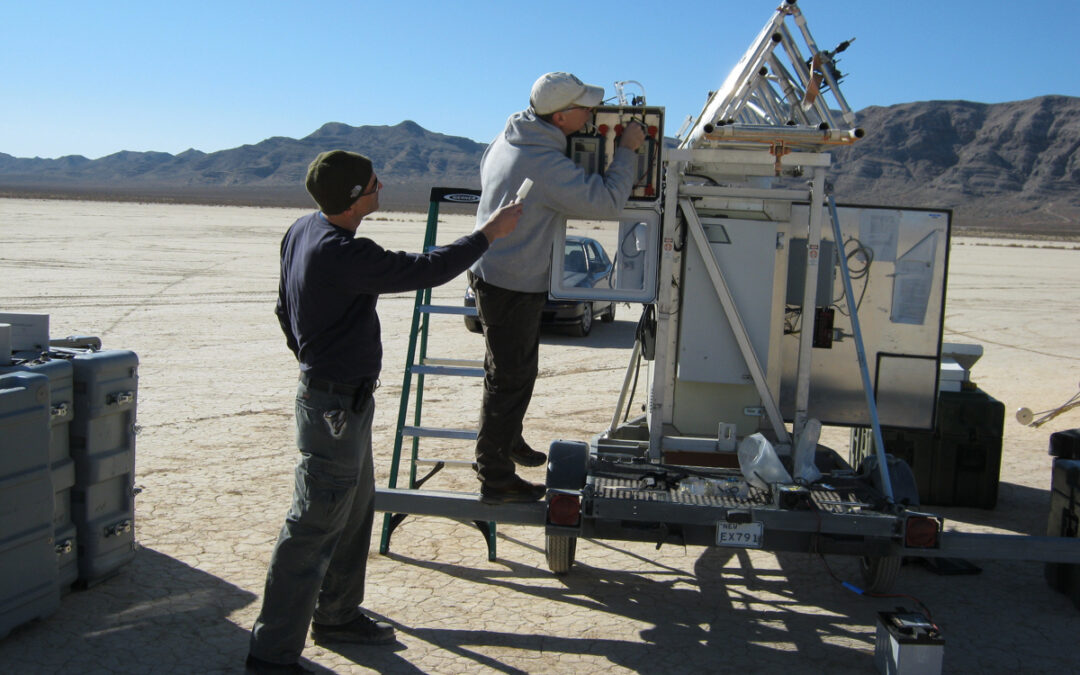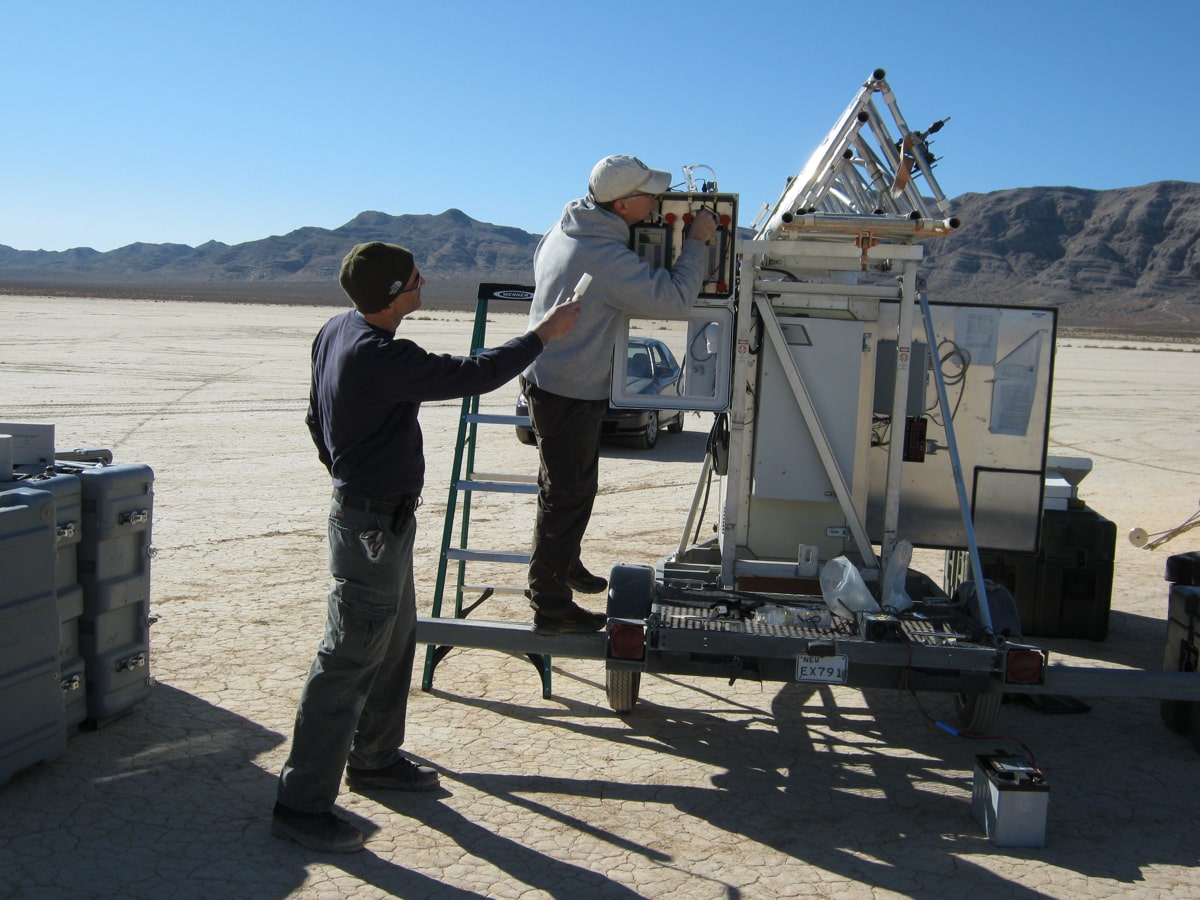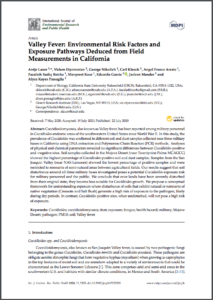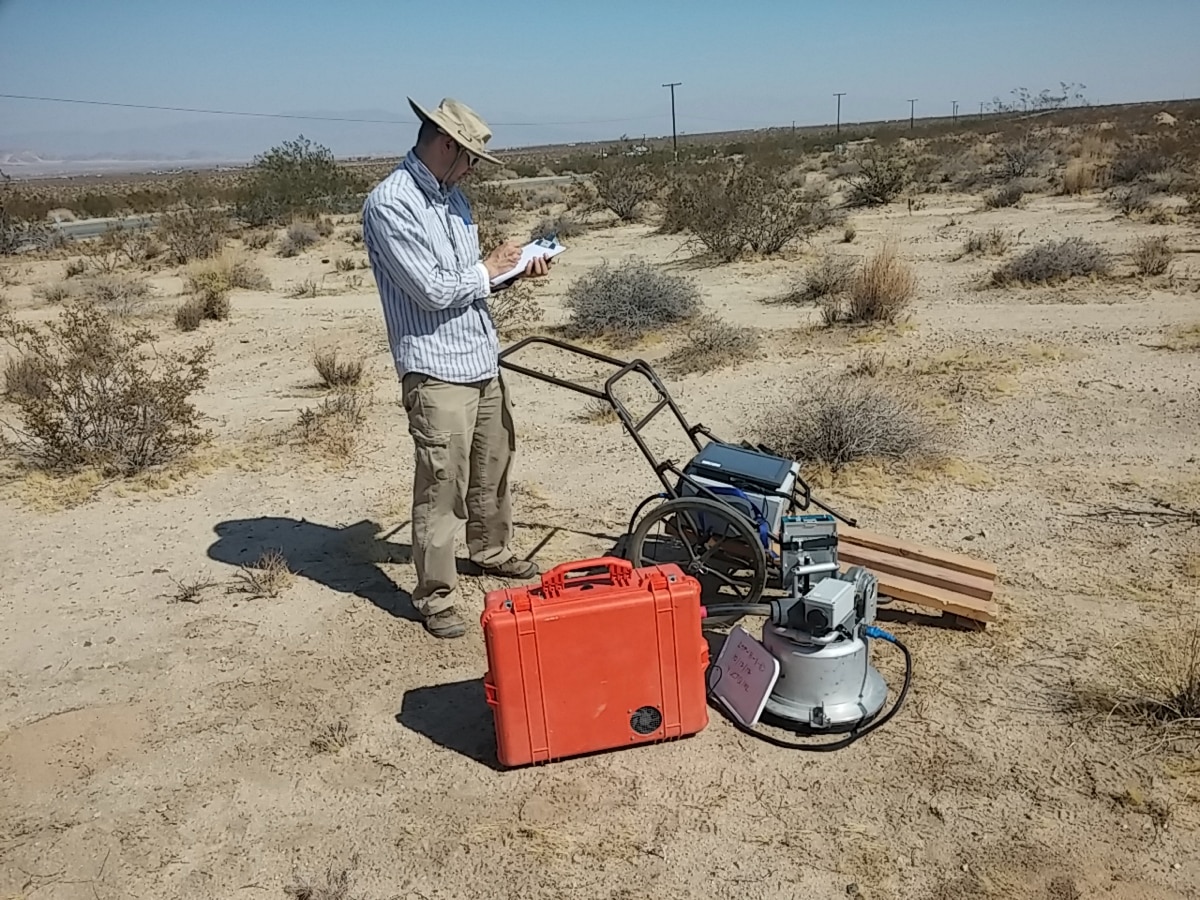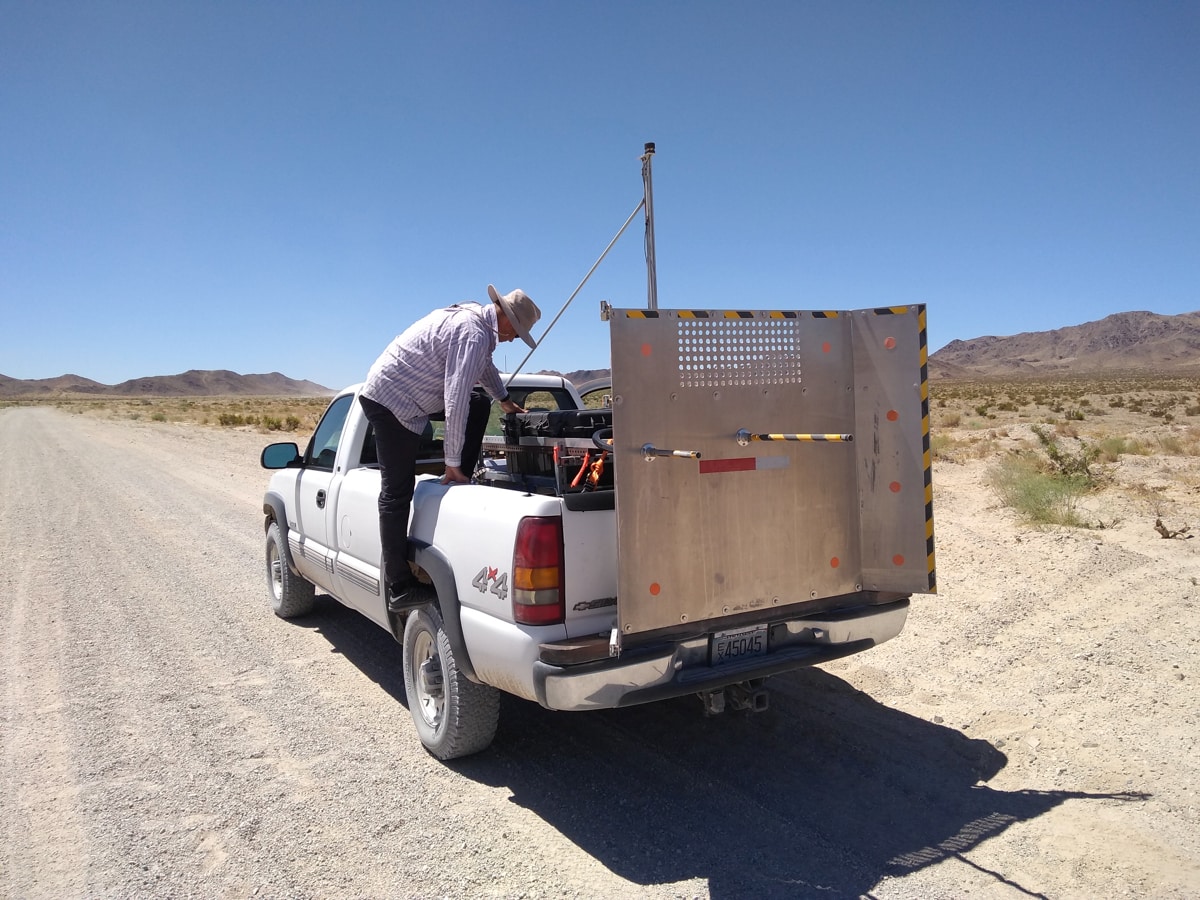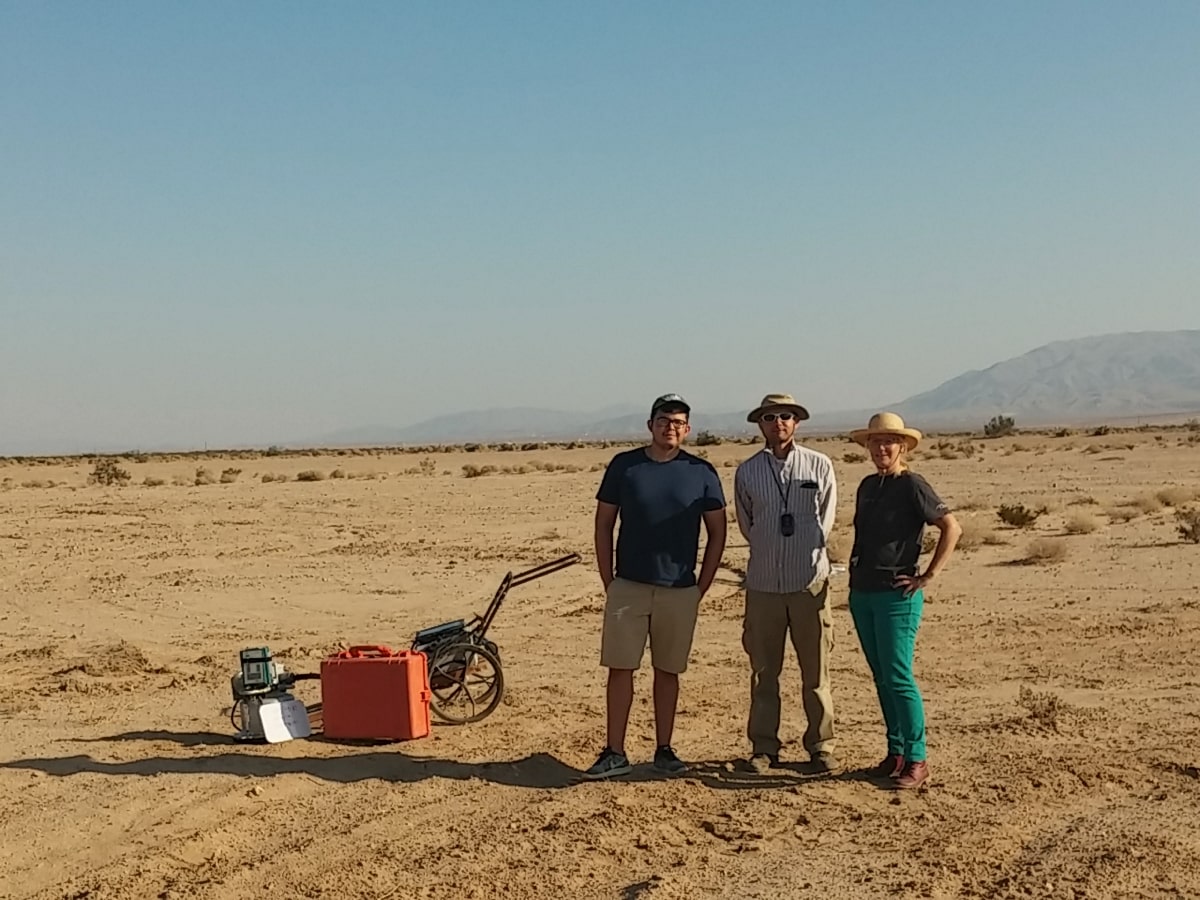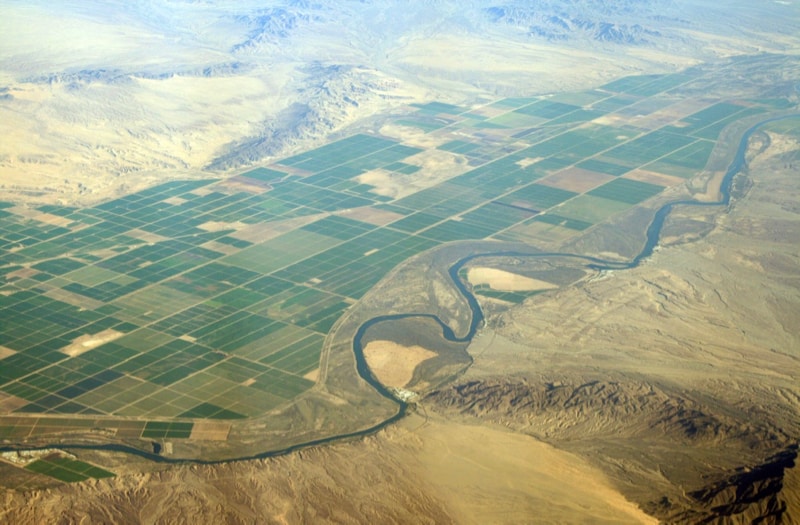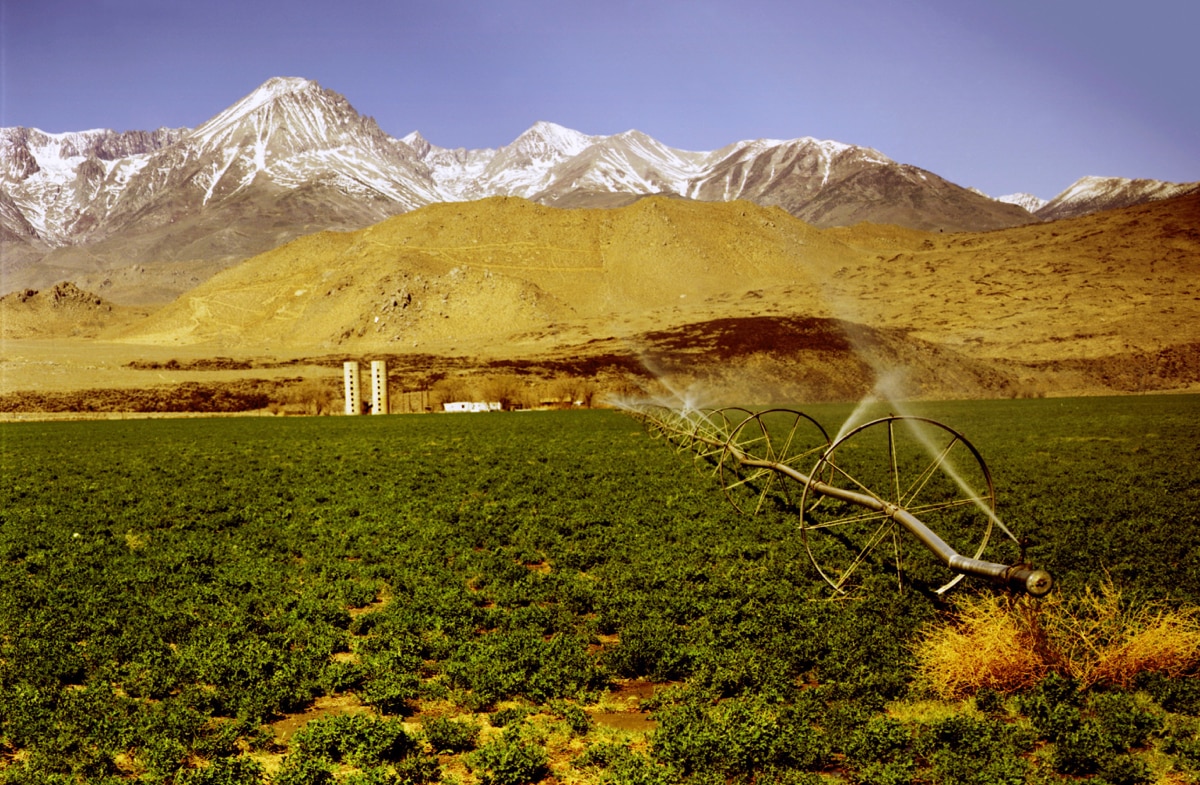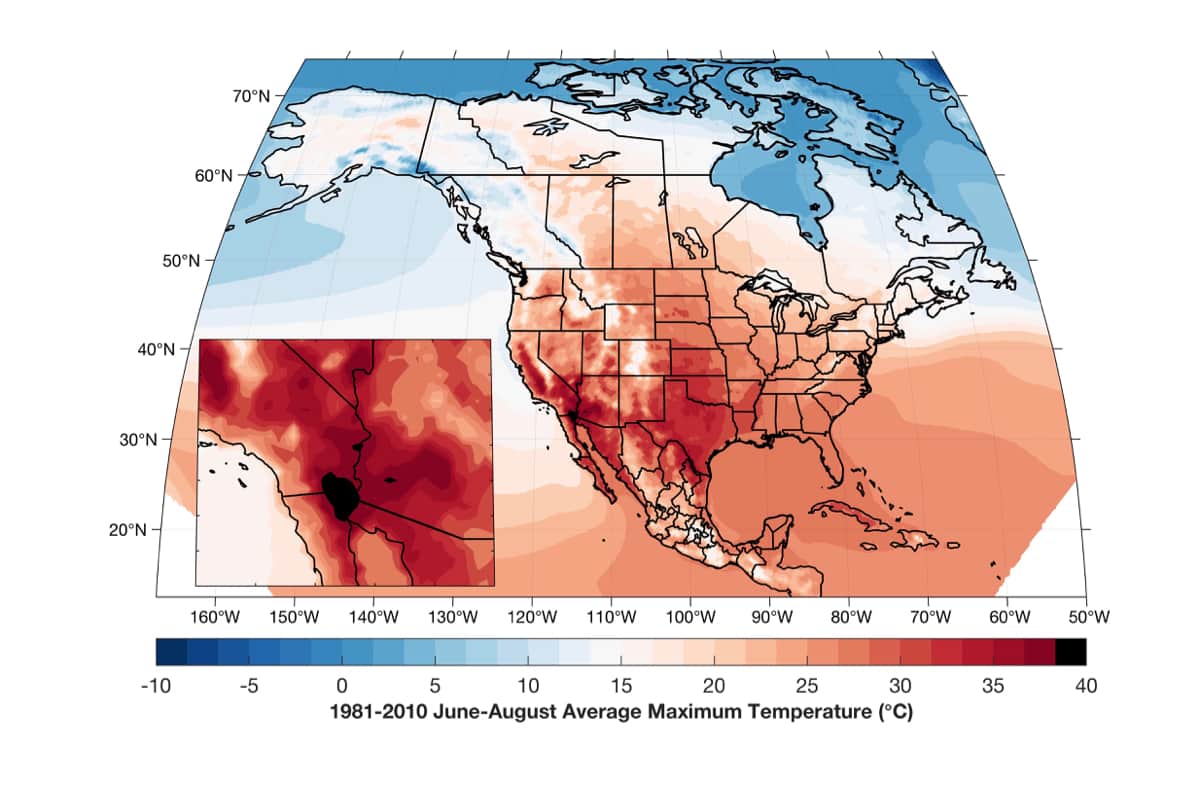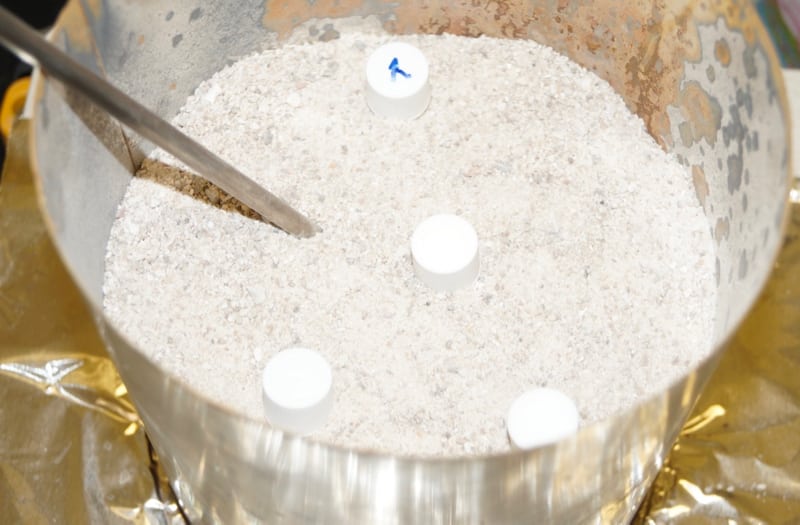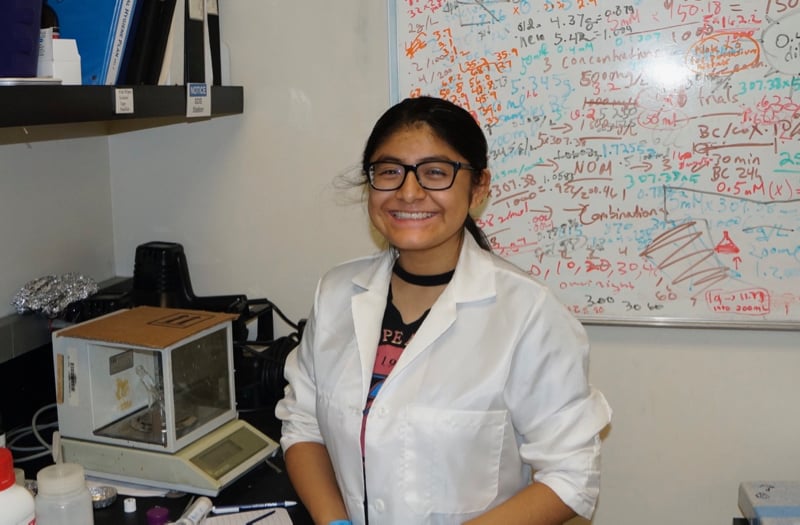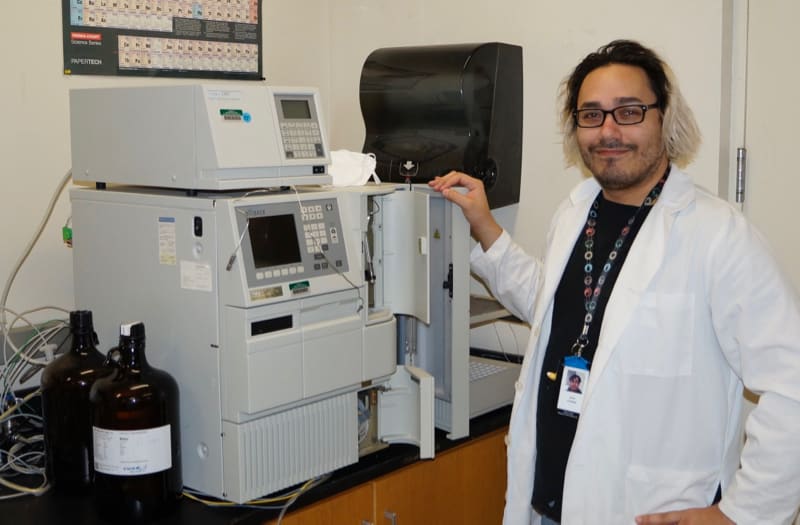
Jun 30, 2021 | Awards and Honors, Blog
Each year, the Desert Research Institute (DRI) honors the incredible commitment and dedication of our faculty and staff through an award ceremony called the Celebration of Science. This year’s event was held virtually and recognized the winners of this year’s Nevada System of Higher Education Rising Researcher Award, the DRI Medals for Science, Service, and Outstanding Contributions, the Technologist of the Year, as well as internal divisional and milestone service awards.
2021 Award Winners
DRI Science Medal – Xiaoliang Wang, Ph.D.
The DRI Science Medal is given based on scientific achievement that has brought recognition to both the winning scientist and to DRI, through either cumulative or a singular outstanding achievement. This award builds on the history of the Count Alessandro Dandini Medal of Science and the Nazir and Mary Ansari Medal for Excellence in Science, which annually recognized the high scientific accomplishments of a DRI faculty member.
Outstanding Contributions Medal – Tim Brown, Ph.D.
The Outstanding Contributions Medial is given annually to a DRI faculty or staff member for outstanding contributions to the Institution. Evidence of contributions can include establishing new directions for research, securing a large grant, or management of large programs.
Service Medal – Jennifer Schultz
The DRI Service Medal is awarded annually to a faculty or staff member who makes broad impacts across the Institution and throughout our communities, making DRI a better place to work and securing our place as a core research asset.
Technical Employee of the Year – Alison Swallow
The Technical Employee of the Year is awarded annually to a staff member for outstanding contributions to the Institution.
Rising Researcher Award – Daniel McEvoy, Ph.D.
Awarded annually by the Nevada System of Higher Education (NSHE) to a faculty member in recognition of outstanding early-career accomplishments in research.
Division Awards
George Burke Maxey Fellowship – Marc Berghouse
Peter B. Wagner Medal of Excellence – Monica Arienzo, Ph.D.
Jonathan O. Davis Scholarship – Erica Bradley and Hayden Kingrey
General Frederick Lander Scholarship – Pearson Nguyen
Colin Warden Memorial Endowment - Pramod Adhikari
Advisor of the Year award – Alison Murray, Ph.D.
Years of Service Milestones
50 Years of Service
35 Years of Service
30 Years of Service
- Lynn Fenstermaker
- Hans Moosmuller
- Ron Hershey
- Tim Minor
- Peter Ross
25 Years of Service
20 Years of Service
- Yvonne Rumbaugh
- Vicki Hall
- Richard Susfalk
- Lynn Karr
- John Karlas
- Glen Wilson
- David Page
- David Campbell
- Cheryl Collins
- Alison Murray
15 Years of Service
- Steven Bacon
- Sophie Baker
- Maureen King
- Karl Schoen
- Donna Schlemmer
- Derek Kauneckis
- Charles Dolbeare
- Alan Heyvaert
10 Years of Service
- Tatianna Menocal
- Tamara Wall
- Suzanne Hudson
- Robert Read
- Maria Vasquez
- Jeffrey Wedding
- Jason Rada
- Iva Neveux
- Eric Wilcox
- Daniel McEvoy
- Albert Wolff
5 Years of Service
- Xuelian Bai
- William (Jim) Metcalf
- Vinay Amin
- Teresa Wriston
- Rae Yuhas
- Nicole Sund
- Kevin Heintz
- Karen Stewart
- John Goetz
- Joanne Huston
- Erick Bandala Gonzalez
- Bruce Lipp
Congratulations to our faculty and staff who were recognized during this year’s Celebration of Science! Perhaps our Special Guest, NSHE Regent Jason Geddes put it best when he said, “DRI is known here in Nevada and around the world as a place where groundbreaking research is conducted, but the greatest asset that DRI has is its people.”

Jun 29, 2021 | Announcements, News releases
LAKE TAHOE (JUNE 29, 2021) –– With a paddle in one hand and a smartphone in the other, Emily Frey leaned over the hull of her kayak to snap a photo of an aquatic plant fragment floating on Tahoe’s deep blue waters. The photo is part of a report she submitted through the recently updated Citizen Science Tahoe app – a free, mobile-ready tool to crowdsource the collection of important scientific data Tahoe’s environment. In the midst of Tahoe’s busy summer season, and with the Fourth of July weekend approaching, the app update is well-timed to engage thousands of visitors in protecting Tahoe’s environment by quickly and easily reporting observations of aquatic invasive species, litter, water quality, algae, and more.
“With the Citizen Science Tahoe app, anyone can help Keep Tahoe Blue by taking a few minutes to report what you see at the lake,” said Frey, Citizen Science Program Coordinator for the League to Save Lake Tahoe. “While you’re paddling, hiking, or just lounging, pop open the app and report cloudy water, algae, invasive species, or litter on the beach. Tahoe scientists can’t have their eyes on the Lake at all times, but together we can.”
The app was developed by the UC Davis Tahoe Environmental Research Center (TERC) in 2015 to collect citizen science data as ground-truthing for Lake Tahoe’s real-time nearshore monitoring network. The League to Save Lake Tahoe (Keep Tahoe Blue) and Desert Research Institute (DRI) joined shortly after, adding a range of new surveys offered through the app. This summer, the team welcomed three additional partners: Clean Up the Lake, the Tahoe Water Suppliers Association, and Take Care Tahoe.
“The Citizen Science Tahoe app is growing, which is great news for Lake Tahoe and everyone who enjoys it,” said Heather Segale, Education and Outreach Director with the UC Davis Tahoe Environmental Research Center. “When ‘citizen scientist’ volunteers – visitors, locals, and everyone in between – submit data through the app, it advances our understanding of Lake Tahoe and informs research and advocacy efforts to better preserve this special place.”
With the addition of new partners, the app is even more useful. As Clean Up the Lake continues to protect Tahoe’s environment, the organization is using the app to record litter found on the shoreline that may end up in the Lake if not picked up or reported. Take Care Tahoe community ambassadors are reporting issues they see in Tahoe’s environment, along with the interactions they have when helping visitors explore Tahoe’s outdoors responsibly. Visitors can use the app to find or report water refill stations thanks to the Tahoe Water Suppliers Association.
“Citizen science is accelerating our understanding of how and when Tahoe gets its water, whether as rain, snow or a wintry mix,” said Meghan Collins, Education Program Manager at the Desert Research Institute in Reno. “Millions of people depend on Tahoe for their water supply. The Citizen Science Tahoe app allows Tahoe-lovers to advance science and practice environmental stewardship all year long.”
The Citizen Science Tahoe app’s recent updates have made it more flexible for scientists, and quicker and easier for users. Visit citizensciencetahoe.org to get started. The upgraded app doesn’t need to be downloaded, and you don’t even need to use your cellular data. Simply wait to upload images once you’re connected to Wi-Fi. This makes the app easy to use in even the most remote locations.
###
Media Resources: photos
Media Contacts:
Heather Segale, UC Davis Tahoe Environmental Research Center; hmsegale@ucdavis.edu, 530-906-9100 The UC Davis Tahoe Environmental Research Center (TERC) is dedicated to interdisciplinary research and education to advance the knowledge of aquatic and terrestrial ecosystems and to communicate science-informed solutions worldwide. Interested in learning about Lake Tahoe? When you visit the Tahoe Science Center, you learn the latest findings from the world-class UC Davis Tahoe Environmental Research Center, a global leader in research, education, and public outreach on lakes. Advanced reservations are required at tahoe.ucdavis.edu/tahoesciencecenter.
Kelsey Fitzgerald, Desert Research Institute; kelsey.fitzgerald@dri.edu, 775-741-0496 The Desert Research Institute (DRI) is a recognized world leader in basic and applied environmental research. Committed to scientific excellence and integrity, DRI faculty, students, and staff have developed scientific knowledge and innovative technologies in research projects around the globe. Since 1959, DRI’s research has advanced scientific knowledge, supported Nevada’s diversifying economy, provided science-based educational opportunities, and informed policy makers, business leaders, and community members. With campuses in Reno and Las Vegas, DRI serves as the non-profit research arm of the Nevada System of Higher Education. For more information, please visit www.dri.edu.
Chris Joseph, League to Save Lake Tahoe/Keep Tahoe Blue; cjoseph@keeptahoeblue.org, 805-722-5646 The League to Save Lake Tahoe, also known by its iconic slogan “Keep Tahoe Blue,” is Tahoe’s oldest and largest nonprofit environmental advocacy organization. Our team of solutions-oriented Tahoe advocates use innovation, boots-on-the-ground action, and a holistic approach to solve the environmental challenges threatening the lake we love. In our 64th year, we continue pushing to Keep Tahoe Blue in an ever-changing world. Learn more at keeptahoeblue.org.

Jun 29, 2021 | Announcements, News releases
Building upon past research and introducing different modeling techniques, this study will help to project extreme heat risk in coastal communities.
HOUSTON, TX (June 29, 2021) – The Desert Research Institute (DRI) and the Houston Advanced Research Center (HARC) announce the launch of a comprehensive extreme heat risk modeling project funded by the National Oceanic and Atmospheric Administration (NOAA) to study and predict the risk of extreme heat within coastal communities.
Texans along the Gulf Coast are more than familiar with the extreme heat during the long summer days. But how high will future temperatures rise and what areas will be most impacted by these changes? How does sea breeze influence heat forecasts for these communities along the coast? A joint study conducted by DRI and HARC seeks to answer these questions by developing a modeling framework for urban heat in coastal cities and using machine learning to analyze multiple datasets to better project what will occur.
“We will quantify how urban temperature will be impacted by different urban heat mitigation strategies contemplated in the Houston’s Climate Adaptation Plan (2020) and Resilient Houston (2020) reports,” stated DRI Associate Research Professor Dr. John Mejia. “Strategies include the cooling effect of greening the city and widespread use of rooftop solar panels. We will also assess the potential warming effect of converting open spaces to new developments. We hope that our results can provide tangible information for decision-making to increase resilience to extreme heat events across economic sectors.”
Extreme heat in urban areas presents society with significant economic, health, safety, and security challenges. As part of the NOAA Climate Program Office’s (CPO) Extreme Heat Risk Initiative, this research project will address extreme heat along the coast and how communities may better prepare for the impacts.
“Building upon the existing data to model these projections will help coastal communities better understand the risk and impacts associated with extreme heat,” states Dr. Ebrahim Eslami, Research Scientist, HARC. “The end report will be a guide to help prepare for the warmer days ahead.”
Understanding the modeling uncertainties, such as the role of land and sea breezes, in the prediction of extreme heat is a standing scientific challenge. This research project will use new observationally-based products and cutting-edge high-resolution modeling to better characterize the urban Heat Index for forecasting and planning times scales in coastal communities. The Greater Houston area will serve as a testbed for this project and modeling framework, which could be applied to other cities influenced by large water bodies both in the nation and worldwide.
The two-year study will culminate in a report compiling the analyses in the summer of 2023. For more information, please visit www.cpo.noaa.gov.
###
About DRI
DRI is a recognized world leader in basic and applied environmental research. Committed to scientific excellence and integrity, DRI faculty, students, and staff have developed scientific knowledge and innovative technologies in research projects around the globe. Since 1959, DRI’s research has advanced scientific knowledge, supported Nevada’s diversifying economy, provided science-based educational opportunities, and informed policymakers, business leaders, and community members. With campuses in Reno and Las Vegas, DRI serves as the non-profit research arm of the Nevada System of Higher Education.
About HARC
HARC is a nonprofit research hub providing independent analysis on energy, air, and water issues to people seeking scientific answers. Its research activities support the implementation of policies and technologies that promote sustainability based on scientific principles. HARC is a 501(c)(3) nonprofit organization building a sustainable future in which people thrive and nature flourishes. For further information, contact HARC at (281) 364-6000 or visit www.HARCresearch.org. Connect with HARC, via Instagram, LinkedIn, Facebook or Twitter. Like or follow @HARCresearch.

May 28, 2021 | News releases, Research findings
DRI Ice Core Lab Data Shows Magnitude of Historic Fire Activity in Southern Hemisphere
Ice Cores
Fire Activity
Climate Change
Above: Smoke from human-caused wildfires on the Patagonian steppe are trapped in Antarctic ice.
Credit: Kathy Kasic/Brett Kuxhausen, Montana State University.
A new study in Science Advances features ice core data from the DRI Ice Core Laboratory and research by Nathan Chellman, Ph.D., Monica Arienzo, Ph.D., and Joe McConnell, Ph.D.
Fire emissions in the Southern Hemisphere may have been much higher during pre-industrial times than in the present day, according to new research from an international team of scientists including Nathan Chellman, Ph.D., Monica Arienzo, Ph.D., and Joe McConnell, Ph.D., of the Desert Research Institute (DRI) in Reno.
The study, published today in Science Advances, used new ice core data from DRI’s Ice Core Laboratory to document changes in levels of soot from ancient fires and modern fossil fuel combustion during the years 1750 to 2000. Many of the 14 Antarctic ice cores included in the study were obtained through national and international collaborations, and together comprise an unprecedented long-term record of Southern Hemisphere fire activity that provided the foundation for the modeling effort described in the new paper.
All of the ice cores were analyzed using a specialized method for soot measurements in ice that McConnell and his team pioneered at DRI nearly 15 years ago. This method is now widely used in laboratories around the world.
For more information about the DRI Ice Core Laboratory, please visit: https://www.dri.edu/labs/trace-chemistry-laboratory/. The full news release from Harvard University, A fiery past sheds new light on the future of global climate change, is posted below.
Co-author Dr. Robert Mulvaney from the British Antarctic Arctic Survey drilling the James Ross Island core in the Antarctic Peninsula.
The full text of the paper, Improved estimates of preindustrial biomass burning reduce the magnitude of aerosol climate forcing in the Southern Hemisphere, is available from Science Advances: https://advances.sciencemag.org/content/7/22/eabc1379.abstract
A fiery past sheds new light on the future of global climate change
Ice core samples reveal significant smoke aerosols in the pre-industrial Southern Hemisphere
By Leah Burrows, Harvard University
Centuries-old smoke particles preserved in the ice reveal a fiery past in the Southern Hemisphere and shed new light on the future impacts of global climate change, according to new research published in Science Advances.
“Up till now, the magnitude of past fire activity, and thus the amount of smoke in the preindustrial atmosphere, has not been well characterized,” said Pengfei Liu, a former graduate student and postdoctoral fellow at the Harvard John A. Paulson School of Engineering and Applied Sciences (SEAS) and first author of the paper. “These results have importance for understanding the evolution of climate change from the 1750s until today, and for predicting future climate.”
One of the biggest uncertainties when it comes to predicting the future impacts of climate change is how fast surface temperatures will rise in response to increases in greenhouse gases. Predicting these temperatures is complicated since it involves the calculation of competing warming and cooling effects in the atmosphere. Greenhouse gases trap heat and warm the planet’s surface while aerosol particles in the atmosphere from volcanoes, fires and other combustion cool the planet by blocking sunlight or seeding cloud cover. Understanding how sensitive surface temperature is to each of these effects and how they interact is critical to predicting the future impact of climate change.
Ancient ice from James Ross Island in the Northern Antarctic Peninsula about to be extracted from the drill barrel.
Many of today’s climate models rely on past levels of greenhouse gasses and aerosols to validate their predictions for the future. But there’s a problem: While pre-industrial levels of greenhouse gasses are well documented, the amount of smoke aerosols in the preindustrial atmosphere is not.
To model smoke in the pre-industrial Southern Hemisphere, the research team looked to Antarctica, where the ice trapped smoke particles emitted from fires in Australia, Africa and South America. Ice core scientists and co-authors of the study, Joseph McConnell and Nathan Chellman from the Desert Research Institute in Nevada, measured soot, a key component of smoke, deposited in an array of 14 ice cores from across the continent, many provided by international collaborators.
“Soot deposited in glacier ice directly reflects past atmospheric concentrations so well-dated ice cores provide the most reliable long-term records,” said McConnell.
What they found was unexpected.
“While most studies have assumed less fire took place in the preindustrial era, the ice cores suggested a much fierier past, at least in the Southern Hemisphere,” said Loretta Mickley, Senior Research Fellow in Chemistry-Climate Interactions at SEAS and senior author of the paper.
To account for these levels of smoke, the researchers ran computer simulations that account for both wildfires and the burning practices of indigenous people.
“The computer simulations of fire show that the atmosphere of the Southern Hemisphere could have been very smoky in the century before the Industrial Revolution. Soot concentrations in the atmosphere were up to four times greater than previous studies suggested. Most of this was caused by widespread and regular burning practiced by indigenous peoples in the pre-colonial period,” said Jed Kaplan, Associate Professor at the University of Hong Kong and co-author of the study.
Drilling ice cores in East Antarctica as part of the Norwegian-U.S. International IPY Scientific Traverse of East Antarctica.
This result agrees with the ice core records that also show that soot was abundant before the start of the industrial era and has remained relatively constant through the 20th century. The modeling suggests that as land-use changes decreased fire activity, emissions from industry increased.
What does this finding mean for future surface temperatures?
By underestimating the cooling effect of smoke particles in the pre-industrial world, climate models might have overestimated the warming effect of carbon dioxide and other greenhouse gasses in order to account for the observed increases in surface temperatures.
“Climate scientists have known that the most recent generation of climate models have been over-estimating surface temperature sensitivity to greenhouse gasses, but we haven’t known why or by how much,” said Liu. “This research offers a possible explanation.”
“Clearly the world is warming but the key question is how fast will it warm as greenhouse gas emissions continue to rise. This research allows us to refine our predictions moving forward,” said Mickley.
The research was co-authored by Yang Li, Monica Arienzo, John Kodros, Jeffrey Pierce, Michael Sigl, Johannes Freitag, Robert Mulvaney, and Mark Curran.
It was funded by the National Science Foundation’s Geosciences Directorate under grants AGS-1702814 and 1702830, with additional support from 0538416, 0538427, and 0839093.
Additional Information:
The full text of the paper, Improved estimates of preindustrial biomass burning reduce the magnitude of aerosol climate forcing in the Southern Hemisphere, is available from Science Advances: https://advances.sciencemag.org/content/7/22/eabc1379.abstract
The news release above was reposted with permission from Harvard University: https://www.seas.harvard.edu/news/2021/05/fiery-past-sheds-new-light-future-global-climate-change.
###
About the Desert Research Institute
The Desert Research Institute (DRI) is a recognized world leader in basic and applied environmental research. Committed to scientific excellence and integrity, DRI faculty, students, and staff have developed scientific knowledge and innovative technologies in research projects around the globe. Since 1959, DRI’s research has advanced scientific knowledge, supported Nevada’s diversifying economy, provided science-based educational opportunities, and informed policymakers, business leaders, and community members. With campuses in Reno and Las Vegas, DRI serves as the non-profit research arm of the Nevada System of Higher Education. For more information, please visit www.dri.edu

May 25, 2021 | News releases, Research findings
Does Cold Wildfire Smoke Contribute to Water Repellent Soils in Burned Areas?
May 25, 2021
RENO, NEV.
By Kelsey Fitzgerald
Soil Science
Wildfires
Hydrology
Above: After a wildfire, soils in burned areas often become water repellent, leading to increased erosion and flooding after rainfall events. The hillside shown here burned in California’s Loyalton Fire during August 2020.
Credit: Kelsey Fitzgerald/DRI.
A new DRI pilot study finds severe water repellency in sand samples after treatment with both hot and cold smoke.
After a wildfire, soils in burned areas often become water repellent, leading to increased erosion and flooding after rainfall events – a phenomenon that many scientists have attributed to smoke and heat-induced changes in soil chemistry. But this post-fire water repellency may also be caused by wildfire smoke in the absence of heat, according to a new paper from the Desert Research Institute (DRI) in Nevada.
In this pilot study (exploratory research that takes place before a larger-scale study), an interdisciplinary team of scientists led by DRI Associate Research Professor of Atmospheric Science Vera Samburova, Ph.D., exposed samples of clean sand to smoke from burning Jeffrey pine needles and branches in DRI’s combustion chamber, then analyzed the time it took for water droplets placed on the sand surface to be absorbed – a measure of water repellency.
A new pilot study by an interdisciplinary team from DRI exposed samples of clean sand to smoke from burning Jeffrey pine needles and branches, then analyzed the time it took for water droplets placed on the sand surface to be absorbed — a measure of water repellency. After exposure to smoke, water droplets sometimes remained on the sand surface for more than 50 minutes without soaking in.
Credit: Vera Samburova/DRI.
The pilot study investigated the effects of smoke and heat on water repellency of the sand and was the first study to also incorporate an analysis of cold smoke. In the experiments, sand was used in place of soil because it could be cleaned thoroughly and analyzed accurately, and Jeffrey pine for a fuel source because it represents a common wildland fire fuel in the Western U.S.
Before exposure to Jeffrey pine smoke, water droplets placed on the surface of the sand samples were quickly absorbed. But after exposure to smoke, the sand samples showed severe-to-extreme water repellency, in some cases retaining water droplets on the sand surface for more than 50 minutes without soaking in. It made little difference whether or not samples had been exposed to heat and smoke, or just cold smoke.
“The classic explanation for fire-induced water repellency is that it is caused as smoke diffuses under rather hot conditions and settles down into the soils, but our work shows that the smoke does not have to be hot to turn the sand hydrophobic — simply the presence of the chemical substances in the smoke is enough,” Samburova said. “This is something we really need to look deeper into because soil water repellency leads to increases in flooding, erosion, and surface runoff.”
Above, left: Jeffrey pine needles and sticks were used as a fuel source in the new DRI study because Jeffrey pine represents a common wildland fire fuel in the Western U.S.
Credit: Vera Samburova/DRI.
Above, right: Jeffrey pine needles and branches burn inside of the combustion chamber at DRI during a new study that investigated the effects of smoke and heat on water repellent of sand samples.
Credit: Vera Samburova/DRI.
This study built on previously published work by former DRI postdoctoral researcher Rose Shillito, Ph.D., (currently with the U.S. Army Corps of Engineers), Markus Berli, Ph.D., of DRI, and Teamrat Ghezzehei, Ph.D., of University of California, Merced, in which the researchers developed an analytical model for relating soil water repellency to infiltration of water.
“Our earlier paper focused on how fire changes the properties of soils, from a hydrology perspective,” Berli explained. “In our current study, we were interested in learning more about the chemistry behind the process of how soils come to be hydrophobic. We’re bringing together geochemistry and organic geochemistry with soil physics and hydrology to understand the impact of fire-induced water repellency on hydrology.”
The project team is now working on a larger proposal to further investigate questions touched on by this study about the roles of heat and smoke in fire-induced water repellency. Among other things, they would like to know how long soil water repellency lasts after a fire, and gain a better understanding of the detailed processes and mechanisms through which cold smoke affects the soil.
DRI’s combustion chamber, pictured here, is a specialized facility that has been designed and built for the open combustion of solid fuels under controlled conditions. In this experiment, it was used to expose samples of clean sand to Jeffrey pine smoke.
Credit: Kelsey Fitzgerald/DRI.
Gaining a thorough understanding of the process that leads to fire-induced soil water repellency is important because land managers need this information in order to accurately predict where soils are likely to be hydrophobic after a fire, Berli explained.
“We still don’t really understand the processes that lead to this fire-induced soil water repellency,” Berli said. “Depending on what we find, the measures to predict fire-induced water repellency might be different, and this can have a significant impact on how we can predict and prevent flooding or debris flows that happen after a fire.”
“This study was one big step forward, but it highlights the importance of future research on how fires affect soil, because wildfires are affecting thousands and thousands of square kilometers of land each year in the Western U.S., ” Samburova added. “Some of our future goals are to find out how exactly this soil water repellent happens, where it happens and how long it lasts.”
Additional Information:
This study was made possible with support from DRI and the National Science Foundation. Study authors included Vera Samburova, Ph.D., Rose Shillito, Ph.D. (currently with U.S. Army Corps of Engineers), Markus Berli, Ph.D., Andrey Khlystov, Ph.D., and Hans Moosmüller, Ph.D., all from DRI.
The full text of the paper, Effect of Biomass-Burning Emissions on Soil Water Repellency: A Pilot Laboratory Study, is available from Fire: https://www.mdpi.com/2571-6255/4/2/24
###
About the Desert Research Institute
The Desert Research Institute (DRI) is a recognized world leader in basic and applied interdisciplinary research. Committed to scientific excellence and integrity, DRI faculty, students, and staff have developed scientific knowledge and innovative technologies in research projects around the globe. Since 1959, DRI’s research has advanced scientific knowledge, supported Nevada’s diversifying economy, provided science-based educational opportunities, and informed policy makers, business leaders, and community members. With campuses in Reno and Las Vegas, DRI serves as the non-profit research arm of the Nevada System of Higher Education. For more information, please visit www.dri.edu

May 18, 2021 | News releases, Research findings
Above: DeMMO field team from left to right: Lily Momper, Brittany Kruger, and Caitlin Casar sampling fracture fluids from a DeMMO borehole installation. Credit: Matt Kapust.
Las Vegas, Nev. – Below the Earth’s surface, a zone of life known as the continental deep subsurface is home to large populations of bacteria and archaea, but little is known about how these microbial populations are distributed. To learn whether they are spread evenly across rock surfaces or prefer to colonize specific minerals in the rocks, scientists from Northwestern University and the Desert Research Institute (DRI) went deep inside of a former gold mine in South Dakota and grew biofilms (collections of microorganisms) on rocks. Their results, which published in April in the journal Frontiers in Microbiology, show that the microbes formed “hotspots” around certain minerals in the rocks. Brittany Kruger, Ph.D., Assistant Research Scientist in Biogeochemistry from DRI in Las Vegas, served as field lead for the Northwestern research team at the Sanford Underground Research Facility (SURF), where this study was conducted.
The full text of the paper Rock-Hosted Subsurface Biofilms: Mineral Selectivity Drives Hotspots for Intraterrestrial Life is available from Frontiers in the Environment: https://www.frontiersin.org/articles/10.3389/fmicb.2021.658988/full
The press release below was reposted with permission from Northwestern University in Evanston, IL:
Earth’s crust mineralogy drives hotspots for intraterrestrial life
Northwestern University – Evanston, IL
April 9, 2021 – Below the verdant surface and organic rich soil, life extends kilometers into Earth’s deep rocky crust. The continental deep subsurface is likely one of the largest reservoirs of bacteria and archaea on Earth, many forming biofilms – like a microbial coating of the rock surface. This microbial population survives without light or oxygen and with minimal organic carbon sources, and can get energy by eating or respiring minerals. Distributed throughout the deep subsurface, these biofilms could represent 20-80% of the total bacterial and archaeal biomass in the continental subsurface according to the most recent estimate. But are these microbial populations spread evenly on rock surfaces, or do they prefer to colonize specific minerals in the rocks?
To answer this question, researchers from Northwestern University in Evanston, Illinois, led a study to analyze the growth and distribution of microbial communities in deep continental subsurface settings. This work shows that the host rock mineral composition drives biofilm distribution, producing “hotspots” of microbial life. The study was published in Frontiers in Microbiology.
Hotspots of microbial life
To realize this study, the researchers went 1.5 kilometers below the surface in the Deep Mine Microbial Observatory (DeMMO), housed within a former gold mine now known as the Sanford Underground Research Facility (SURF), located in Lead, South Dakota. There, below-ground, the researchers cultivated biofilms on native rocks rich in iron and sulfur-bearing minerals. After six months, the researchers analyzed the microbial composition and physical characteristics of newly grown biofilms, as well as its distributions using microscopy, spectroscopy and spatial modeling approaches.
The spatial analyses conducted by the researchers revealed hotspots where the biofilm was denser. These hotspots correlate with iron-rich mineral grains in the rocks, highlighting some mineral preferences for biofilm colonization. “Our results demonstrate the strong spatial dependence of biofilm colonization on minerals in rock surfaces. We think that this spatial dependence is due to microbes getting their energy from the minerals they colonize,” explains Caitlin Casar, first author of the study.
Future research
Altogether, these results demonstrate that host rock mineralogy is a key driver of biofilm distribution, which could help improve estimates of the microbial distribution of the Earth’s deep continental subsurface. But leading intraterrestrial studies could also inform other topics. “Our findings could inform the contribution of biofilms to global nutrient cycles, and also have astrobiological implications as these findings provide insight into biomass distributions in a Mars analog system” says Caitlin Casar.
Indeed, extraterrestrial life could exist in similar subsurface environments where the microorganisms are protected from both radiation and extreme temperatures. Mars, for example, has an iron and sulfur-rich composition similar to DeMMO’s rock formations, which we now know are capable of driving the formation of microbial hotspots below-ground.

May 14, 2021 | Announcements, News releases
Reno, NV – Virginia Turner and Bob Pratte, teachers at Traner Middle School in Reno, NV, were at the receiving end of a generous donation made by TrainerRoad to help foster STEM education in the Washoe County School District. Based in Reno, TrainerRoad is a virtual bicycle training and technology company that helps customers reach their goals with cycling’s most effective training and coaching system.
TrainerRoad granted $5,000 to Nevada Robotics to support teachers to develop a classroom-based robotics program. With this funding, Nevada Robotics purchased curriculum to introduce the concepts of FIRST LEGO League while providing access to online professional development and five LEGO Mindstorm Robotics sets.
TrainerRoad has also generously committed to mentoring the students with employees explaining their career journey and how they use STEM components in their work. All stakeholders hope this engagement will introduce a wide range of career options to inspire the students. The program will continue next year with the addition of a competitive team through the Tesla grant, further expanding the impact at the school.
The Economic Development Authority of Western Nevada (EDAWN) supported this donation by facilitating the connection and supporting the training of the teachers. Caroline Hanson, EDAWN’s Regional Robotics Coordinator, has been serving as a robotics educator and coach mentor, working with the teachers to make sure they are comfortable with the content and materials and will be available to troubleshoot at student meetings throughout the spring. Caroline will also host an end-of-school-year showcase for students to share their accomplishments.
Other companies interested in engaging to impact STEM education in Washoe County School District at this or other levels can reach out to Caroline Hanson and/or Nevada Robotics directly via the contact information provided below.
###
About EDAWN
The Economic Development Authority of Western Nevada (EDAWN) is a private/public partnership established in 1983, committed to adding quality jobs to the region by recruiting new companies, supporting the success of existing companies, and assisting newly forming companies, to diversify the economy and have a positive impact on the quality of life in Greater Reno-Sparks. www.edawn.org
Media Contact:
Caroline Hanson
Regional Robotics Coordinator
hanson@edawn.org
About Nevada Robotics
In July 2018 Tesla selected the Desert Research Institute’s Science Alive program to receive Tesla’s Nevada K-12 Education Investment Funding, and the Nevada Robotics program was born from this initial investment. With this, Nevada Robotics collaborates with community and industry partners in delivering engaging robotics education to Nevada’s K – 12 students in support of their vision for all students across Nevada to think creatively and solve complex problems through hands-on robotics education. https://nevadarobotics.org/
Media Contact:
AJ Long
Robotics and STEM Education Administrator
775-830-3287
AJ.Long@dri.edu

May 11, 2021 | Blog, Featured researchers
Meet Natasha Sushenko, Graduate Researcher
May 11, 2021
LAS VEGAS, NEV.
By Kaylynn Perez
Environmental Microbiology
Pathogenic Bacteria
Space
Natasha Sushenko is a graduate research assistant with the Division of Hydrologic Sciences at the Desert Research Institute (DRI) in Las Vegas. She is a Master’s student in Biological Sciences in the School of Life Sciences at the University of Nevada, Las Vegas (UNLV), and is co-mentored by Duane Moser, Ph.D., of DRI and Brian Hedlund, Ph.D., of UNLV. Funding for Natasha’s position is provided by the NASA EPSCOR Rapid Response Research Program. Learn more about Natasha and her graduate research in this interview with DRI’s Behind the Science Blog!
Natasha Sushenko processes samples using a biosafety cabinet in the Environmental Microbiology Lab at the Desert Research Institute in December of 2020 during a SARS-CoV-2 wastewater monitoring study. Sushenko is a graduate research assistant with the Division of Hydrologic Sciences at DRI in Las Vegas.
DRI: What brought you to DRI?
Sushenko: Dr. Duane Moser spoke in my undergraduate Microbial Ecology class at UNLV, and I was really interested in how his lab studies the deep biosphere, the zone of life that exists far below Earth’s surface. His lab does fascinating research on “microbial dark matter,” yet-to-be-classified microorganisms that live under extreme conditions within the deep biosphere and are difficult to culture in the lab. We kept in touch, and even though I considered leaving Las Vegas to do my graduate studies, the opportunities that he and DRI offered were too good to pass up.
What research projects are you working on? And who at DRI are you working with?
Sushenko: I work in Dr. Moser’s Environmental Microbiology Lab here at DRI. We completed a COVID-19 wastewater monitoring study this winter, but my main research project is a NASA collaboration with the Jet Propulsion Laboratory (JPL). They sent our lab strains of a pathogen (disease-causing bacterium) called Klebsiella pneumoniae that were isolated from the International Space Station (ISS). This microbe is a common cause of hospital-borne pneumonia and other infections, but in this case, it was found living on surfaces on the ISS, including on their space toilet. This pathogen is of particular concern to NASA because it has appeared in multiple samples across several years of microbiome monitoring, and it is growing more prevalent over time. While no astronauts on the space station have gotten sick, future human spaceflight to Mars and beyond may require astronauts to go on trips lasting years before returning to Earth. Because of this, NASA wants to know how pathogens like K. pneumoniae respond and adapt to living in space.
Our goal is to study how this pathogen’s virulence, or ability to cause severe illness, and its resistance to antimicrobial drugs and cleaners changes when exposed to the stresses of microgravity. Microgravity is the condition in space where people or objects appear to be weightless. This is something we can study here on Earth, at DRI, with a machine that simulates microgravity.
Above, left: Natasha Sushenko processes samples using a biosafety cabinet in the Environmental Microbiology Lab at the Desert Research Institute in December of 2020 during a SARS-CoV-2 wastewater monitoring study.
Above, right: Natasha Sushenko performs field chemistries on deep borehole samples in the Funeral Mountains near Death Valley on 28-April, 2021. Here Natasha is using a Hach Colorimeter to measure dissolved oxygen, iron, sulfate, and sulfide to test whether increased rates of pumping from a deep well facilitated collection of deeper samples from a geologic fracture zone. Natasha contributed to the DRI-led portion of an NSF-funded collaboration with Bigelow Lab in ME and others focused on applying cutting-edge genomic approaches to the oceans, marine crustal fluids, and the continental subsurface.
DRI: What are your short-term and long-term goals while at DRI?
Sushenko: Right now, I’m on the master’s degree plan, but I’m considering changing to Ph.D. track to continue working on my project to completion and beyond. The issue of the microbiome of the built environment in closed systems like spacecraft will only become more important as agencies and companies explore travel to the moon and Mars. You don’t get opportunities to work with NASA at every institution, and I’m excited that DRI gives me this opportunity.
DRI: Tell us about yourself. What do you do for fun?
The pandemic has cramped a lot of my favorite hobbies, but usually, I love to travel to visit friends, go camping, hike, and just being outside with others. This past year I’ve instead spent more time hanging out with my dog, gardening (indoors and outdoors), and baking.
In her free time, Natasha enjoys hiking and being outside in beautiful areas like the Desolation Wilderness in California.

May 3, 2021 | Blog, Featured researchers
DRI and partners test new method for reseeding native forests after wildfire
MAY 3, 2021
RENO, NEV.
By Kelsey Fitzgerald
Forest Restoration
Technology
Wildfire
Patrick Melarkey of the Desert Research Institute flies the drone during a reseeding flight at the Loyalton Fire burn area on April 22, 2021.
Drones are being tested for use in reseeding projects in other parts of the world, including California and the Pacific Northwest, but this project marks the first time this technology has been tested in the Eastern Sierra. For a trial area, the group selected a 25-acre site in a portion of the Humboldt-Toiyabe National Forest that burned in the Loyalton Fire of August, 2020.
A hillside burned by the Loyalton Fire during August 2020. On April 22, 2021, the Desert Research Institute, Flying Forests, the Sugar Pine Foundation, and the Humboldt-Toiyabe National Forest conducted a reseeding project at this site using new drone technology.
Prior to the drone reseeding event, DRI archaeologist Dave Page, M.A., conducted aerial mapping at the burn site. This detailed imagery was used to determine an appropriate flight path for dispersing seeds evenly across the burn area, and was programmed into software that guided the drone during the reseeding mission.
A drone carrying small seed balls of Jeffrey pine takes flight during a reseeding project at the Loyalton Fire burn area on April 22, 2021.
On April 22nd and 23rd, 2021, DRI scientists Patrick Melarkey and Jesse Juchtzer provided technical expertise as drone pilots for the reseeding portion of the project. Over the course of two days of flying, Melarkey and Juchtzer dropped 25,000 Jeffrey pine seedballs across the 25-acre burn area. The drone made a total of 35 flights, carrying approximately 700-750 seedballs per flight.
Above: Patrick Melarkey and Jesse Juchtzer from DRI fly a drone carrying small seed balls of Jeffrey pine during a reseeding project at the Loyalton Fire burn area on April 22, 2021.
The seed balls were provided by the Sugar Pine Foundation, which worked with local community volunteers to collect more than 30 pounds of Jeffrey pine seed during the past year. The seed was combined with soil and nutrients into small balls that could be carried and distributed by the drone.
Small seedballs containing seeds of Jeffrey pine were prepared by the Sugar Pine Foundation in preparation for reseeding the Loyalton Fire burn area by drone. Each seedball contains approximately 3 seeds of Jeffrey pine. April 22, 2021.
The technology used on this project to plant with drones was invented by Dr. Lauren Fletcher of Flying Forests. Fletcher is a 5th generation Nevadan and graduate of the University of Nevada, Reno, Stanford, and Oxford.
Above, left: Personnel from Flying Forests load seedballs of Jeffrey pine into a drone prior to a reseeding flight at the Loyalton Fire burn area on April 22, 2021. Above, right: Lauren Fletcher of Flying Forests invented the seed-spreading technology that was used during the drone reseeding project.
Replanting native trees in burned areas can help stabilize slopes, reduce erosion, discourage growth of non-native plant species, and speed up the recovery of critical habitat for wildlife. Reforestation of burned areas is often done by planting small tree seedlings – but in areas far from roads or areas with especially steep terrain, this method can be expensive, labor-intensive, and dangerous. Spreading seeds by drone may provide a safer, cheaper, and easier alternative.
Next, the group will monitor and study the area to observe the success rate of this method of restoration.
Looking west from a hillside burned by the Loyalton Fire during August 2020. On April 22, 2021, the Desert Research Institute, Flying Forests, the Sugar Pine Foundation, and the Humboldt-Toiyabe National Forest conducted a reseeding project on the burn area using new drone technology.
###
About Desert Research Institute
The Desert Research Institute (DRI) is a recognized world leader in basic and applied interdisciplinary research. Committed to scientific excellence and integrity, DRI faculty, students, and staff have developed scientific knowledge and innovative technologies in research projects around the globe. Since 1959, DRI’s research has advanced scientific knowledge, supported Nevada’s diversifying economy, provided science-based educational opportunities, and informed policy makers, business leaders, and community members. With campuses in Reno and Las Vegas, DRI serves as the non-profit research arm of the Nevada System of Higher Education.

May 3, 2021 | Announcements, News releases
Above: Monica Arienzo, Ph.D., is an assistant research professor of hydrology at the Desert Research Institute in Reno and winner of DRI’s first CAREER Award from the National Science Foundation.
Reno, Nev. (May 3, 2021) – The Desert Research Institute (DRI) is pleased to announce that Monica Arienzo, Ph.D., has been awarded a CAREER Award from the National Science Foundation (NSF) – the first such award received by a DRI scientist in the Institute’s 62-year history.
The Faculty Early Career Development (CAREER) Program is one of the NSF’s most prestigious awards and recognizes early-career faculty who have the potential to serve as role models in research and education, and to lead advances in the mission of their organization. The CAREER Award will provide Arienzo with a grant for $550,787 to forward her research into microplastics, tiny (less than 5mm in length) particles of plastic that pollute the environment.
Arienzo is an assistant research professor of hydrology with DRI’s Division of Hydrologic Sciences in Reno. She is the director of DRI’s Microplastics Laboratory, where her research focuses on the sources and concentrations of microplastics found in snowy peaks, lakes, rivers, and drinking water, including the waters of Lake Tahoe.
With the funding from the CAREER award, Arienzo plans to continue her investigation into the sources, transport, and fate of microplastics in snow-dominated environments of the Sierra Nevada in Nevada and California. As part of her project, two Ph.D. students and between four-to-six undergraduate students will be trained on microplastic sampling, laboratory analysis, and hydrology.
“I am incredibly honored to receive the CAREER award and appreciate this opportunity to continue researching an important environmental pollutant while also including additional Ph.D. students and undergraduate students in the research effort,” Arienzo said.

Arienzo (second from left) and the members of the Microplastics Laboratory conduct fieldwork at Lake Tahoe during May 2019.
Arienzo will also integrate her research findings into a middle school mobile teaching kit through DRI’s Green Boxes program. The teaching kit will include a series of lessons on the topics of hydrology, microplastics, anthropogenic pollution, and water quality.
“We are proud of Dr. Arienzo’s accomplishments and the recognition from the NSF of the important research she is conducting in the area of microplastics,” said DRI President Kumud Acharya, Ph.D. “As a result of the grant provided by the CAREER award, Dr. Arienzo is able to expand her research and invest in others.”
Arienzo joined DRI as a post-doctoral fellow in 2014 and was promoted to Assistant Research Professor in 2016. She has worked extensively using geochemical tools to understand climatic changes of the past and human impacts to the environment. She holds a Ph.D. in Marine Geology and Geophysics from the University of Miami, and a B.A. in Geology from Franklin & Marshall College.
More information:
###
About Desert Research Institute The Desert Research Institute (DRI) is a recognized world leader in basic and applied interdisciplinary research. Committed to scientific excellence and integrity, DRI faculty, students, and staff have developed scientific knowledge and innovative technologies in research projects around the globe. Since 1959, DRI’s research has advanced scientific knowledge, supported Nevada’s diversifying economy, provided science-based educational opportunities, and informed policy makers, business leaders, and community members. With campuses in Reno and Las Vegas, DRI serves as the non-profit research arm of the Nevada System of Higher Education. For more information, please visit www.dri.edu.

Apr 22, 2021 | Announcements, News releases
Hundreds Around the Globe Gather Online to Hear Earth Week Message from Scientist, Explorer Dr. Kathryn D. Sullivan During World Premiere of the Desert Research Institute Foundation’s Special Presentation
The program will broadcast on Vegas PBS Channel 10 on April 25 at 4:30 p.m. and again May 1 at 4 p.m.,
and on Reno PBS on May 1 at 4 p.m.
Las Vegas (April 22, 2021) – Hundreds of people around the globe tuned in to watch the virtual world premiere of the Desert Research Institute (DRI) Foundation’s Earth Week special presentation of Sea, Earth and Sky: Celebrating the Spirit of Scientific Exploration, Discovery and Innovation honoring Dr. Kathryn D. Sullivan, the 31st DRI Nevada Medalist. A key feature of the hour-long online program was a highly-anticipated conversation with Dr. Sullivan as she shared eye-opening viewpoints about the state of planet Earth today.
Dr. Sullivan has seen the planet from many perspectives. She is a former NASA astronaut who completed three missions to space becoming the first American woman to walk in space, author of Handprints on Hubble: An Astronaut’s Story of Invention, former Administrator of NOAA, and most recently the first woman to dive to the Challenger Deep in the Marianas Trench.
“Climate is an everything issue, and it’s not a question whether the planet will be okay — the planet will be fine, there will be a chunk of rock, third one out from the sun, and orbiting around perhaps in perpetuity. The question is what becomes of everything that lives on this planet, including us but not only us,” says Sullivan. “That’s what we really need to think about, and it’s just super clear from the data that the way we are currently living our lives is pushing too much of the planet towards the limits of its operating system. Every complex system has such limits and there is always a train of consequences when you go blasting by them.”
Dr. Sullivan went on to provide her key takeaways for the human beings living on planet Earth.
“I think we need to be giving more thought to how we can temper a bit how we are living today. To do more to ensure a viable tomorrow and also how we can look at what we are building and how we are operating our societies and businesses today, and be very intentional about making them more resilient, which means move the needle from just hyper-efficiency and hyper-economic return into a longer time frame view that ensures the system retains some resiliency.”
Dr. Sullivan has dedicated her entire career to studying our planet, looking at Earth in unique ways and sharing her discoveries with the world.
“The scale, the immensity and power of our planet and its systems are very impressive, no two ways about it. It’s extraordinary. At the same time, my perspectives have taught me that every one of the systems of our planet, the geological, the biological, the forest, the trees, the air, the water, the ocean — things we tend to think of as separate —are really, richly, pervasively interconnected.”
Dr. Sullivan spoke about how science has become entangled with politics and how to restore the role of evidence-based science in our lives.
“When people participate in something, when they experience science in their own lives, that’s what opens the mental gateway to realizing, actually to revitalizing our innate scientific aptitudes. In the crib we are all scientists. The scientific method is the essence of how a human infant develops into an adult,” says Sullivan. “If we can create experiences in classrooms, in museums, in civic settings where there is an issue under discussion that let us participate in the building of an answer – that’s powerful. Things I helped build and participated in lead to a different kind of understanding, and they open different prospects for progress.”
Dr. Sullivan was presented with the 31st DRI Nevada Medal which has recognized outstanding achievement in science, engineering and technology for the last 30 years.
The special online presentation also featured the latest work of DRI as a global leader in environmental research and development, the history of the Nevada Medal award and special guest appearances rounded out the hour-long online broadcast.
Those who missed the virtual premiere or would like to watch it again, the program is set to broadcast on Vegas PBS Channel 10 on April 25 at 4:30 p.m. and again May 1 at 4 p.m., and on Reno PBS on May 1 at 4 p.m. After that the program will also be available for viewing on the DRI website.
About Desert Research Institute
The Desert Research Institute (DRI) is a recognized world leader in basic and applied interdisciplinary research. Committed to scientific excellence and integrity, DRI faculty, students, and staff have developed scientific knowledge and innovative technologies in research projects around the globe. Since 1959, DRI’s research has advanced scientific knowledge, supported Nevada’s diversifying economy, provided science-based educational opportunities, and informed policy makers, business leaders, and community members. With campuses in Reno and Las Vegas, DRI serves as the non-profit research arm of the Nevada System of Higher Education. For more information, please visit www.dri.edu.
###
Media Contact:
Detra Page
DRI Communications Manager
702.591.3786
Detra.page@dri.edu

Apr 19, 2021 | Blog, Featured researchers
Meet Dylan Person, Graduate Researcher
APRIL 19, 2021
LAS VEGAS, NEV.
By Kaylynn Perez
Archaeology
Cultural Resource Management
Antrhopology
Dylan Person is a graduate research assistant with the Division of Earth and Ecosystem Sciences at the Desert Research Institute (DRI) in Las Vegas. He is a Ph.D. student in Anthropology, Archaeology subfield, at the University of Nevada Las Vegas. Learn more about Dylan and his graduate research in this interview with DRI’s Behind the Science Blog!
Dylan Person is a graduate research assistant with the Division of Earth and Ecosystems Sciences at DRI in Las Vegas.
DRI: What brought you to DRI?
Person: I was introduced to DRI through the UNLV Department of Anthropology. I became interested in coming to DRI as a graduate assistant when I learned that a position at DRI gave students the opportunity to perform fieldwork as well as write reports and plan projects for cultural resource management archaeology. In addition to this great opportunity for learning new aspects of this area of archaeology, I jumped at the chance to learn more about Native American archaeology in the Great Basin since my research focus at UNLV is primarily based in New Mexico. I also got really excited when I learned that I’d be working with historic nuclear testing resources since that’s such a major part of America’s scientific history.
DRI: What are you studying?
Person: I study stone tool technology and how it interrelated with cultural and social life at sites in the Mimbres Mogollon region of southwestern New Mexico. The time period I study was around AD 550-1130 and during this time these people changed from highly mobile foragers to living in settled agricultural villages. This resulted in changes in their social organization that I think also impacted the way they made and used stone tools. Though this is not directly related to DRI’s work, experience with similar artifacts in the Great Basin has added a new dimension to my own work.
Archaeology in the Great Basin is very focused on mobile groups and studying here and working with these archaeological sites at DRI has taught me a lot about how mobile people moved around and interacted with their environment. This knowledge has really deepened my understanding of how groups of people in my study area acted when practicing this lifeway and expanded the range of my research.
Above, left: Dylan Person and his boxer, Wiggles, hike along the McCullough Hills Trail in the Sloan Canyon National Conservation Area of Nevada. Above, right: One of Dylan’s fieldwork sites in San Bernardino, California.
Credit: Lizzie Person (left photo); Jared Miles (right photo).
DRI: What research projects are you working on? And who at DRI are you working with?
Person: I work with the Cultural Resource Management Program team. They’re a great group of archaeologists and historians who have a variety of interesting projects in addition to their cultural resource work. My supervisor is Maureen King, who has been very supportive of my academic progress and has helped me a lot in my professional development. Though I work with a combination of United States history and earlier Native American history, Maureen is great about involving me with program projects that align with my research interests here in Nevada, which I’ll talk a little more about below.
Currently, I am working on my dissertation research which involves the stone tool study that I mentioned previously. At DRI I have mostly been focusing on working with historic nuclear testing activities for cultural resource management. Informally at DRI, I have been looking at how groups moved throughout southern and central Nevada and adjacent regions. I’m interested in how these travel routes map on to environmental features such as water sources like springs, rivers, and wetlands as well as other resource-rich areas. Since these resources included plants, animals, rocks for tools, and culturally significant areas I have a lot to work with when it comes to investigating the how and why of people’s interaction with these areas over a long period of time.
Additionally, our program at DRI has a long history of working closely with Native American groups who live in the region. Being exposed to Native perspectives on the land and environment is a really valuable addition, since they have inherited a cultural understanding of this area that only comes from lived experience and long tradition. Though I don’t presume to fully understand how previous generations of Native Americans of the Mojave and Great Basin thought about their environment and lives, being around these perspectives has really opened up my mind to ideas and viewpoints that I wouldn’t have developed on my own. I’m really grateful for that!
DRI: What are your short-term and long-term goals while at DRI?
Person: In the short term, I hope to continue making contributions to our program and its support of projects through cultural resource management.
In the long term, I want to learn everything I can during my time in our program so that I am well-situated for both academic and non-academic archaeological work. I also want to formalize some of my research interests into a developed research plan, one that ideally would contain public science-focused elements. I’m really interested in public science and supporting science education in general.
Above, left: Dylan Person at the office on DRI’s Las Vegas campus. Above, right: One of Dylan’s field sites in San Bernardino County, California.
Credit: Dylan Person/DRI (left photo), Jared Miles (right photo).
DRI: Tell us about yourself. What do you do for fun?
Person: I like to get out in nature. So hiking, camping, bouldering, and other types of outdoor activities are always a good time. I’m a sort of amateur geologist, so I also like checking out interesting rock formations and the overall geology of a place. Nevada is a really great place for all that so I have a lot of options!
When I’m not running around outside, I play music. I play a few instruments but I’m best at the guitar and I play just about any style that a guitar can do, so rock/blues, country, bluegrass, jazz and even classical music. I also like cooking and especially grilling, backyard hangouts, and spending time with my wife Lizzie and our Boxer dog Wiggles, who are my companions in all these things I do for fun. One of these days I’ll have the space to get a project car so I can finally finish learning auto mechanics without worrying about messing up my daily driver!
In his free time, Dylan enjoys spending time with his wife Lizzie and their boxer, Wiggles.

Apr 15, 2021 | News releases, Research findings
Above: Equipment for subsurface sampling of microbes stands in Death Valley, California. Credit: Duane Moser/DRI.
Las Vegas, Nev. (April 15, 2021) – Although certain microbes have the ability to evolve very quickly, the opposite can also be true, according to new research from an international team of scientists including Duane Moser, Ph.D., Joshua Sackett, Ph.D., and Brittany Kruger, Ph.D. of the Desert Research Institute (DRI) in Las Vegas. The new paper, which was led by scientists from the Bigelow Laboratory for Ocean Sciences and published last week in Nature publishing group’s ISME Journal, identifies a group of microbes from the deepest regions of the continental subsurface biosphere that have been at an evolutionary standstill for approximately 175 million years.
The study used partial genomes of the microbe, Candidatus Desulforudis audaxviator that were collected from deep underground in South Africa, Siberia, and California. Moser contributed the North American samples, which were collected in 2015 at a depth of 752 m (2,467 ft.) during activities of the NASA Astrobiology Institute’s Life Underground project (Jan Amend, USC, PI) from the Death Valley Regional Flow System, a vast fractured rock aquifer that underlies portions of Nevada and Eastern CA. The North America re-discovery of D. audaxviator brings an old story full-circle for Moser in that he also collected the samples from which the organism was originally described from fracture networks as much as 4 – 5 km (2.5 – 3.1 miles) deep in South Africa while a postdoc with TC Onstott at Princeton University in the early 2000s.
The full text of the paper, Evolutionary stasis of a deep subsurface microbial lineage, is available from ISME Journal: https://www.nature.com/articles/s41396-021-00965-3
The press release below is reposted with permission from Bigelow Laboratory for Ocean Sciences.
Living fossils: Microbe discovered in evolutionary stasis for millions of years
BIGELOW LABORATORY FOR OCEAN SCIENCES
It’s like something out of science fiction. Research led by Bigelow Laboratory for Ocean Sciences has revealed that a group of microbes, which feed off chemical reactions triggered by radioactivity, have been at an evolutionary standstill for millions of years. The discovery could have significant implications for biotechnology applications and scientific understanding of microbial evolution.
“This discovery shows that we must be careful when making assumptions about the speed of evolution and how we interpret the tree of life,” said Eric Becraft, the lead author on the paper. “It is possible that some organisms go into an evolutionary full-sprint, while others slow to a crawl, challenging the establishment of reliable molecular timelines.”
Becraft, now an assistant professor of biology at the University of Northern Alabama, completed the research as part of his postdoctoral work at Bigelow Laboratory and recently published it in the Nature publishing group’s ISME Journal.
The microbe, Candidatus Desulforudis audaxviator, was first discovered in 2008 by a team of scientists, led by Tullis Onstott, a co-author on the new study. Found in a South African gold mine almost two miles beneath the Earth’s surface, the microbes acquire the energy they need from chemical reactions caused by the natural radioactive decay in minerals. They inhabit water-filled cavities inside rocks in a completely independent ecosystem, free from reliance on sunlight or any other organisms.
Because of their unique biology and isolation, the authors of the new study wanted to understand how the microbes evolved. They searched other environmental samples from deep underground and discovered Candidatus Desulforudis audaxviator in Siberia and California, as well as in several additional mines in South Africa. Since each environment was chemically different, these discoveries gave the researchers a unique opportunity to look for differences that have emerged between the populations over their millions of years of evolution.
“We wanted to use that information to understand how they evolved and what kind of environmental conditions lead to what kind of genetic adaptations,” said Bigelow Laboratory Senior Research Scientist Ramunas Stepanauskas, the corresponding author on the paper and Becraft’s postdoctoral advisor. “We thought of the microbes as though they were inhabitants of isolated islands, like the finches that Darwin studied in the Galapagos.”

C.D. audaxviator Scanning Electron Micrograph from 3.2 km depth in Driefontein Mine, South Africa. Image courtesy of Gordon Southam and Greg Wanger.
Using advanced tools that allow scientists to read the genetic blueprints of individual cells, the researchers examined the genomes of 126 microbes obtained from three continents. Surprisingly, they all turned out to be almost identical.
“It was shocking,” Stepanauskas said. “They had the same makeup, and so we started scratching our heads.”
Scientists found no evidence that the microbes can travel long distances, survive on the surface, or live long in the presence of oxygen. So, once researchers determined that there was no possibility the samples were cross-contaminated during research, plausible explanations dwindled.
“The best explanation we have at the moment is that these microbes did not change much since their physical locations separated during the breakup of supercontinent Pangaea, about 175 million years ago,” Stepanauskas said. “They appear to be living fossils from those days. That sounds quite crazy and goes against the contemporary understanding of microbial evolution.”
What this means for the pace of microbial evolution, which often happens at a much more accelerated rate, is surprising. Many well-studied bacteria, such as E. coli, have been found to evolve in only a few years in response to environmental changes, such as exposure to antibiotics.
Stepanauskas and his colleagues hypothesize the standstill evolution they discovered is due to the microbe’s powerful protections against mutation, which have essentially locked their genetic code. If the researchers are correct, this would be a rare feature with potentially valuable benefits.
Microbial enzymes that create copies of DNA molecules, called DNA polymerases, are widely used in biotechnology. Enzymes with high fidelity, or the ability to recreate themselves with little differences between the copy and the original, are especially valuable.
“There’s a high demand for DNA polymerases that don’t make many mistakes,” Stepanauskas said. “Such enzymes may be useful for DNA sequencing, diagnostic tests, and gene therapy.”
Beyond potential applications, the results of this study could have far-reaching implications and change the way scientists think about microbial genetics and the pace of their evolution.
“These findings are a powerful reminder that the various microbial branches we observe on the tree of life may differ vastly in the time since their last common ancestor,” Becraft said. “Understanding this is critical to understanding the history of life on Earth.”
###
Bigelow Laboratory for Ocean Sciences is an independent, nonprofit research institute located in East Boothbay, Maine. From the Arctic to the Antarctic, Bigelow Laboratory scientists use innovative approaches to study the foundation of global ocean health and unlock its potential to improve the future for all life on the planet. Learn more at bigelow.org, and join the conversation on Facebook, Instagram, and Twitter.

Mar 25, 2021 | Blog, Featured researchers
Meet Nathan Chellman, Ph.D.
Ice Cores
Climate Change
Environment
Meet DRI scientist Nathan Chellman and learn about his work in the Ice Core Laboratory in this interview with DRI’s Behind the Science Blog.
Nathan Chellman, Ph.D., is a postdoctoral fellow with the Division of Hydrologic Sciences at the Desert Research Institute (DRI) in Reno, Nev. He specializes in the collection, processing and analysis of ice cores — cylindrical samples of ice drilled from glaciers and ice sheets around the world. Nathan grew up in Reno, and holds a B.Sc. in Geology/Biology from Brown University, and M.S. and Ph.D. degrees in Hydrology from the University of Nevada, Reno. He first worked at DRI as a high school intern in 2008, then later returned to DRI during and after college to work with Joe McConnell in the Ice Core Lab. He received his helicopter private pilot license in 2014 and volunteered as an EMT while he was an undergraduate. In his free time, Nathan enjoys running, skiing, and backpacking in the Sierras and central Nevada.
Nathan Chellman, Ph.D., is a postdoctoral fellow with the Division of Hydrologic Sciences at the Desert Research Institute in Reno.
DRI: What do you do here at DRI?
Chellman: I work in the Ice Core Lab, where we do analyses and measurements on snow and ice from polar and alpine regions to learn about how the environment has changed over the past several centuries and millennia. I also do some work with tree rings and sediment cores from areas a little closer to home, like the Rocky Mountains, primarily looking at pollution and climate reconstructions.
DRI: What does an ice core look like, and how do you collect one?
Chellman: An ice core is a long, narrow cylinder of ice. To recover an ice core from an ice sheet or a glacier we use an ice core drill, which is a hollow tube with sharp cutters at one end and a big motor at the top. The motor spins the hollow tube, the cutters cut the ice away, and the ice core then ends up in the center of the hollow tube. You send the ice core drill down through the ice about 1 meter (3 feet) at a time, bring up the entire drill with an ice core inside, push the ice core out of the hollow drill section, send the drill back down the borehole, and then repeat that until you’re the whole way through the ice feature. For polar ice cores, we sometimes drill down hundreds of meters. So, we end up with hundreds or thousands of those meter-long sections back-to-back that represent a whole profile through the ice.
Above, left: Researchers process an ice core sample collected from a glacier in Greenland. Above, right: Closeup of an ice core drill.
Credit: Michaeol Sigl (left photo); Nathan Chellman/DRI (right photo).
DRI: What can you learn from all of these samples of ice? Can you tell us about one of your projects?
Chellman: One of my favorite projects right now is a study on some really old ice patches in Wyoming. These ice patches are about the size of a football field or smaller, so they are too small to be glaciers. They look just like little remnant snow patches that you might see in the Sierra Nevada if you go out hiking in the late summer. However, they’re not snowdrifts, they’re actual ice – and some of these ice patches are turning out to be thousands and thousands of years old.
I was invited to join the project by a group of archaeologists and climate scientists who were interested in looking at how old the ice patches were, and studying the organic debris inside of them and the artifacts that were melting out around the edges. They didn’t know what to do with the ice itself, but since we specialize in measuring ice chemistry, I volunteered to go to their field site when they were drilling through a shallow ice patch and bring some ice back to DRI. Those samples ended up being a very nice record of ice chemistry. The ice patch turned out to be 10,000 years old at the bottom, with about 30 organic layers cutting through the ice.
Normally in an ice core project, if you have dirt and organic layers in your ice core you’ve done something terribly wrong. In this case, the dirt was the key to unlocking how old the ice patch was, since the age of the organic material can be accurately dated. It turned out that the chemistry of the ice was really interesting as well, and preserved some climate information going back over ten thousand years. You can see distinct warm and cold periods that paralleled lake sediment records from nearby, and also some anthropological records of population. So, that suggested that people living in the area were affected by the general climate conditions as indicated by the ice patch chemistry.
Above, left: Nathan Chellman carries ice coring equipment to an alpine ice patch, where he and his colleagues are using ice core records from an isolated ice patch to learn about ancient climate in the region. Above, right: Chellman holds an ice core sample collected from an alpine ice patch.
Credit: Monica Arienzo/DRI.
DRI: Have you ever been part of a polar drilling operation?
Chellman: Yes, in 2013 I was in northeastern Greenland. That year we recovered a 212-meter ice core, which went back about 1,700 years. It took about two weeks working normal 8- or 10-hour days – but as you drill deeper and deeper into the ice, it takes longer and longer for the drill to go up and down the borehole. On the first day you can go about 20 meters in a day, and the next day you can go a little less, and by the end you’re only drilling 6 to 10 meters per day because it takes so long for the drill to go up and down the hole.
The first day was terrifying. The plane landed out in the middle of the ice sheet, hundreds of miles from any other camps or bases. The pilot dropped us and our gear out in the snow, and then took off and left. Help was a few days away at best, so we had to just get working and get camp set up before everything blew away, because it’s always windy there. There were no buildings, no infrastructure, just us and our camping gear. We had personal sleeping tents (we each used two sleeping bags!), a kitchen tent, and a science tent, as well as plenty of food, Coleman stoves for cooking, and the ice core drill.
DRI: What were the working conditions like in Greenland?
Chellman: The strangest part about working in Greenland during the summer is that it’s never night. The sun never completely goes down, even at night. The sun goes low on the horizon and it gets colder, but it’s never actually dark. It’s a little disorienting at first. You have to sleep with eye covers or pull your hat down over your eyes so you can pretend like you’re in a little bit of darkness.
It was also really cold. Between -25 and -35C (-13 to -31F) at night, and anywhere between -5 and -15C (23F to 5F) during the day. When it’s that cold, it’s really interesting because you have to consider that everything is going to be frozen. Your toothpaste is going to be frozen, if you leave your water in a mug it’s going to be frozen. It requires some adaptations from a lifestyle perspective to make sure what you need isn’t going to be a total block of ice.
In 2013, Chellman and his colleagues traveled to northeastern Greenland to collect a 212-meter ice core that went back 1,700 years. Their field camp is pictured here.
Credit: Nathan Chellman/DRI.
DRI: Do you have any plans to return?
Chellman: We were supposed to go back last year to that same place in Greenland and get an ice core that was twice as long, but that was postponed. We’re rescheduling for this spring, but everything is still very much up in the air. If we go, we’ll be gathering data for a study that is trying to understand pollution from ancient societies. For example, we will be looking to see if we can detect Bronze Age pollution from 2,000-3,000 years ago in the ice. The pollution would have been caused by mining and smelting of metals.
DRI: It sounds like you have a very exciting job. What do you like best about what you do?
Chellman: One of my favorite things is actually being in the lab and making the measurements, and taking all the time to make sure everything is running right, and that the analytical system and all the instruments are making high-quality measurements. When you’re analyzing ice cores, you have to be consistent day to day and week to week, since sometimes it can take a month or two to analyze all the samples from an ice core. But it’s really fun to get in the groove in the lab, run long days, and generate really consistent, nice datasets. There’s a lot of troubleshooting involved, but once the system is running smoothly, it’s really amazing to be able to generate unique, one-of-a-kind data that can be trusted to inform really big picture questions.
Additional Information:
For more information on Nathan Chellman and his research, please visit: https://www.dri.edu/directory/nathan-chellman/
For more information on the DRI Ice Core Laboratory, please visit: https://www.dri.edu/labs/trace-chemistry-laboratory/
DRI scientist Nathan Chellman.
Credit: Nathan Chellman/DRI.

Mar 11, 2021 | News releases, Research findings
Above: WestWide Drought Tracker data for winter 2020-21 show that precipitation levels across California and Nevada have fallen far below normal. Credit: WRCC/DRI.
91 percent of California and 100 percent of Nevada now in drought
Reno, Nev. (Mar 11, 2021) – Drought conditions are intensifying across California and Nevada, with U.S. Drought Monitor showing 91 percent of California and 100 percent of Nevada now in drought, according to a Drought Status Update released this morning by the National Oceanic and Atmospheric Administration (NOAA) National Integrated Drought Information System (NIDIS), the California-Nevada Applications Program (CNAP), and the Western Regional Climate Center at the Desert Research Institute.
The Drought Status Update is issued every two weeks on Drought.gov as part of the California-Nevada Drought Early Warning System and communicates the current state of drought conditions in California and Nevada using information from sources such as the U.S. Drought Monitor, NOAA, CNAP, the Natural Resources Conservation Service (NRCS), the Center for Western Weather and Water Extremes (CW3E), and others.
According to today’s update, California and Nevada remain entrenched in moderate-to-exceptional levels of drought, with precipitation totals and snowpack falling below normal. Although recent spring storms have brought moisture to certain areas of the region, those and other potential spring storms are not expected to significantly improve the drought conditions.
“The chance of getting back to an average snowpack for this winter is looking less and less likely,” said Tamara Wall, Ph.D., Associate Research Professor at DRI and Co-Principal Investigator of the CNAP program. “It is time to really start thinking about the impact that this will have across California and Nevada as we move into the warmer months.”
In Nevada, conditions are especially dire, with 40 percent of the state now classified by the U.S. Drought Monitor as “exceptional drought,” or D4 – more area than at any point during the previous drought of 2012-2016. In the Carson, Truckee, and Walker Basins, reservoir storage is also lower than it was this time last year, all currently at less than 40 percent of capacity.
During the last two weeks, the authors have noted a significant increase in drought impact reports from water utilities to agriculture as it has become clearer that drought is here to stay in California and Nevada and the region’s odds of reaching normal are low.
“Recently, we’ve seen confirmation that any remaining storms won’t bring much drought relief and drought impacts are intensifying and expanding,” said Amanda Sheffield, Ph.D., NOAA NIDIS Regional Drought Information Coordinator for California-Nevada.
Seasonal forecasts predict a continuation of warm, dry conditions over the Great Basin and Southwestern U.S. as we head into spring and early summer. As drought conditions intensify, impacts to agriculture, water supplies, and forests are expected, as well as increased wildfire potential.
“The abnormally dry conditions that we’ve had this winter mean a second dry year for much of California and Nevada, which means that working on our drought preparedness right now is essential,” said Julie Kalansky, CNAP Program Manager, Scripps Institution of Oceanography. “These conditions have potential implications for agriculture, ecosystem health, water supply, and fire potential.”
Additional information:
To view the full Drought Status Update for March 11, 2021, on Drought.gov, please visit: https://www.drought.gov/drought-status-updates/drought-status-update-california-nevada-2

###
The Desert Research Institute (DRI) is a recognized world leader in basic and applied interdisciplinary research. Committed to scientific excellence and integrity, DRI faculty, students, and staff have developed scientific knowledge and innovative technologies in research projects around the globe. Since 1959, DRI’s research has advanced scientific knowledge, supported Nevada’s diversifying economy, provided science-based educational opportunities, and informed policy makers, business leaders, and community members. With campuses in Reno and Las Vegas, DRI serves as the non-profit research arm of the Nevada System of Higher Education. For more information, please visit www.dri.edu.

Mar 9, 2021 | Announcements, News releases
Reno, Nev. (Mar. 9, 2021) – Last week, the Nevada System of Higher Education (NSHE) Board of Regents named Desert Research Institute (DRI) scientist Daniel McEvoy, Ph.D., the recipient of the 2021 Rising Researcher Award. This honor is given annually to one NSHE faculty member from DRI, the University of Nevada, Reno (UNR), and the University of Nevada, Las Vegas (UNLV) in recognition of their early-career accomplishments and potential for future advancement and recognition in research.
McEvoy is an Assistant Research Professor with DRI’s Division of Atmospheric Sciences and Regional Climatologist for the Western Regional Climate Center. His research has increased our understanding of land surface-atmospheric feedbacks and evaporative processes on droughts, the connections between drought, climate, and wildland fire, and natural resource management applications of weather, climate, and satellite data.
“It is a great honor to receive this year’s Rising Researcher Award,” McEvoy said. “I look forward to continuing my work in climatology for many years to come.”
Some of McEvoy’s most recent published work describes how changes in evaporative demand (a measure of how dry the air is, sometimes described as “atmospheric thirst”) is expected to impact the frequency of extreme fire danger and drought in Nevada and California through the end of the 21st century. He specializes in using big climate data to create applied climate products such as Climate Engine and the Evaporative Demand Drought Index that can be accessed and used in real-world settings such as land and water management.
During the first five years of his career, McEvoy has given over 60 presentations at national scientific conferences and workshops, published 17 peer-reviewed publications to high-quality journals such as Geophysical Research Letters and Journal of Hydrometeorology, and has contributed to two book chapters. McEvoy has also successfully developed and funded more than a dozen grants and contracts from diverse sources such as the National Oceanic and Atmospheric Administration, California Department of Water Resources, NASA, SERVIR, and Google. These funded projects total more than $3.2 million.
McEvoy holds Ph.D. and M.S. degrees in Atmospheric Science from the University of Nevada, Reno, and a B.S. in Environmental Science from Plattsburgh State University of New York. He joined DRI in 2010 as a graduate research assistant working under advisor John Mejia, Ph.D.
###
The Desert Research Institute (DRI) is a recognized world leader in basic and applied interdisciplinary research. Committed to scientific excellence and integrity, DRI faculty, students, and staff have developed scientific knowledge and innovative technologies in research projects around the globe. Since 1959, DRI’s research has advanced scientific knowledge, supported Nevada’s diversifying economy, provided science-based educational opportunities, and informed policy makers, business leaders, and community members. With campuses in Reno and Las Vegas, DRI serves as the non-profit research arm of the Nevada System of Higher Education. For more information, please visit www.dri.edu.

Feb 25, 2021 | Blog, Featured projects
New DRI projects for 2021 include microplastics, microfossils, snowmelt risk, and solute transport
FEB 26, 2021
RENO & LAS VEGAS, NEV.
Introducing the winners of DRI’s 2021 Institute Project Assignment (IPA) competition.
Each year, the Desert Research Institute awards funding to several new faculty and staff projects each year through its Institute Project Assignment (IPA) competition. Winners of the IPA competition receive a research grant from DRI to pursue a topic that interests them and develop ideas that can ultimately be turned into externally funded research projects. This year, winners of the IPA competition are DRI scientists Erick Bandala, Monica Arienzo, Sandra Bruegger, Benjamin Hatchett, and Lazaro Perez. Details about each project are below.
Erick Bandala and Monica Arienzo: Assessing environmental aging of microplastics
Microplastics, defined as plastic fragments smaller than 5mm, were first discovered in the natural environment in the early 2000s. Two decades later, much is still unknown about these pollutants – including how microplastic particles degrade or break down as they age. A new project led by Erick Bandala, Ph.D., and Monica Arienzo, Ph.D., will assess the environmental aging of microplastic particles through accelerated aging tests, using UV-A radiation to imitate the effects of unfiltered sunlight over different time spans on microplastics of different types, shapes, and sizes. Their results will provide new insight into the fate of microplastics after their release into the environment.
A close-up image of microplastic fibers. Credit: DRI.
Benjamin Hatchett and Anne Heggli: Towards improved decision support for snow-covered watersheds: A snowmelt risk advisory
Rain-on-snow events (in which a warm winter storm rains onto existing snowpack under windy and humid conditions) are linked to many of the largest floods in Nevada and other parts of the United States. These types of events are projected to increase in frequency and magnitude as the climate warms. This change creates new challenges for water managers, who are tasked with deciding when water should be stored in reservoirs for economic and ecological benefits, and when water should be released downstream for flood control and public safety. To help water managers make decisions using the best available data, Division of Atmospheric Sciences graduate student Anne Heggli, advised by Benjamin Hatchett, Ph.D., will design and develop a tool called a Snowmelt Risk Advisory (SRA). This framework will combine risk matrices with weather datasets to create a tool that will help inform reservoir operations in snow-dominated watersheds.
A rain-on-snow event at Kirkwood Ski Area. Credit: Ben Hatchett/DRI.
Sandra Brugger: Microfossils in Greenland Ice – Establishing a new method at DRI
Greenland’s ice sheets hold important records of pollen grains and other microfossils that can provide researchers with insight into long-term environmental change in the Arctic, however, these resources have not yet been studied extensively. Recently, Sandra Brugger, Ph.D., developed a new method for extracting microfossils from Greenland ice cores and created the first reliable record of microfossils from well-dated Greenland ice, with a second record currently under development. With IPA funding, Bruegger will hold a workshop to train additional scientists in her methodology, and develop a microfossil record from east-central Greenland ice spanning the past 8000 years. She will also give a talk to the local community at the Alta Skilled Nursing and Rehabilitation Center in Reno, sharing her research with an audience that has been isolated for months during the pandemic.
DRI scientist Sandra Brugger inspects samples under a microscope. Credit: Manu Friederich.
Lazaro Perez: Tortuosity Characterization via Machine Learning to Quantify Solute Transport in Berea Sandstone
Understanding and predicting the fate of solutes (dissolved substances) as they pass through various types of rocks and soils in a groundwater system is crucial for several environmental and industrial applications, but modeling this process is complex. Building on work completed as part of an IPA-funded project in 2020, Lazaro J. Perez, Ph.D., will use training data for the development of a machine-learning algorithm to predict solute transport through material containing pores of different sizes, such as sandstone. Dr. Perez’s work, focused on solute transport simulations on pore-scale images of two types of sandstones, will help scientists better understand processes as diverse as contaminant transport in groundwater flow and protein diffusion in living cells.
DRI scientist Lazaro Perez.

Feb 23, 2021 | Announcements, News releases
Newly-Appointed Trustees and Officers Bring Diverse Experience and Background to Leadership Roles at Global Environmental Research Leader
LAS VEGAS (Feb. 23, 2021) – The DRI Research Foundation, based in Nevada, is announcing the addition of long-time community leaders to its Board of Trustees and the selection of its Board leadership at the state’s top environmental research institute.
The Members of the Board of Trustees of the DRI Foundation have elected the following individuals as officers of the Foundation for a two-year term beginning January 1, 2021:
- Michael Benjamin, Chair
- Nora James, Vice-Chair
- Kenneth G. Ladd II, Treasurer
Benjamin is a serial entrepreneur presently involved in medical technology, marketing and farming, James is a long-time writer and editor, and Ladd, in addition to serving as the Chair of the Board for Nevada HAND, is a retired national bank executive.
DRI Foundation also welcomed the following new Trustees to the Board, each serving a four-year term, beginning January 1, 2021:
- Mark Foree, General Manager at Truckee Meadows Water Authority
- Mary Kay Gallagher, Philanthropist and Trustee of the Tom and Mary Gallagher Foundation
- Steve Hill, Chief Executive Officer of the Las Vegas Convention and Visitors Authority
- Stephanie Kruse, Founder and Chair of the Board at KPS3 Advertising, Web and Public Relations
- Kristin McMillan Porter, Senior Advisor at the Porter Group LLC
“We are proud to welcome the new trustees to the DRI Foundation Board and congratulate our outstanding current trustees as they take on greater responsibility in their new leadership roles as officers,” said Dr. Kumud Acharya, DRI President. “The combined experience and skills of our Board members will be invaluable in making lasting contributions toward supporting the overall mission of environmental stewardship through focused broader outreach, private philanthropy and ambassadorship.”
The upcoming DRI Nevada Medal 2021 honoring former NASA Astronaut and Earth Explorer Dr. Kathryn D. Sullivan, is an example of key programs under the guidance of the DRI Foundation leadership. This year’s Nevada Medal titled, Sea, Earth and Sky: Celebrating the Spirit of Exploration, Discovery and Innovation, will be made available globally as a special, evening hour-long program for the first time in its 30-year history. To register for the free virtual event please visit NevadaMedal.com.
###
The DRI Foundation serves to cultivate private philanthropic giving in support of the mission and vision of the Desert Research Institute. For over 25 years DRI Foundation trustees have worked with DRI benefactors to support applied environmental research to maximize the Institute’s impact on improving people’s lives throughout Nevada, the nation, and the world.
The Desert Research Institute (DRI) is a recognized world leader in basic and applied interdisciplinary research. Committed to scientific excellence and integrity, DRI faculty, students, and staff have developed scientific knowledge and innovative technologies in research projects around the globe. Since 1959, DRI’s research has advanced scientific knowledge, supported Nevada’s diversifying economy, provided science-based educational opportunities, and informed policymakers, business leaders, and community members. With campuses in Reno and Las Vegas, DRI serves as the non-profit research arm of the Nevada System of Higher Education. For more information, please visit www.dri.edu.

Feb 22, 2021 | News releases, Research findings
Traditional hydrologic models may misidentify snow as rain, new citizen science data shows
Weather Forecasting
Climate
Citizen Science
Tahoe Rain or Snow weather spotters help reduce inaccuracies in estimating precipitation
Normally, we think of the freezing point of water as 32°F – but in the world of weather forecasting and hydrologic prediction, that isn’t always the case. In the Lake Tahoe region of the Sierra Nevada, the shift from snow to rain during winter storms may actually occur at temperatures closer to 39.5°F, according to new research from the Desert Research Institute (DRI), Lynker Technologies, and citizen scientists from the Tahoe Rain or Snow project.
The new paper, which published this month in Frontiers in Earth Science, used data collected by 200 volunteer weather spotters to identify the temperature cutoff between rain and snow in winter storms that occurred during the 2020 season. Their results have implications for the accuracy of water resources management, weather forecasting, and more.
“Scientists use a temperature threshold to determine where and when a storm will transition from rain to snow, but if that threshold is off, it can affect our predictions of flooding, snow accumulation, and even avalanche formation,” said Keith Jennings, Ph.D., Water Resources Scientist at Lynker Technologies and one of the lead authors on the study.
From a backcountry area near Lake Tahoe, Desert Research Institute scientist Monica Arienzo collects field data from her smartphone for the Tahoe Rain or Snow project. January 2021.
Previous studies have found that thresholds used are particularly problematic in the Sierra Nevada, where a significant proportion of winter precipitation falls near 32°F. When the temperature is near freezing, weather forecasts and hydrologic models have difficulty correctly predicting whether it will be raining or snowing.
Tahoe Rain or Snow was launched in 2019 to take on the challenge of enhancing the prediction of snow accumulation and rainfall that may lead to flooding by making real-time observations of winter weather. The team is comprised of two scientists, one education specialist, and about 200 volunteer weather spotters from the Lake Tahoe and western slope regions of the Sierra Nevada and Truckee Meadows.
“Tahoe Rain or Snow harnesses the power of hundreds of local volunteers. The real-time observations that they share with scientists add an incredible amount of value to the study of hydrology and clarify crucial gaps left by weather models,” said Meghan Collins, M.S., Education Program Manager for DRI and another lead author on the paper.
Above: Desert Research Institute scientist Meghan Collins collects data from her smartphone for the Tahoe Rain or Snow project using the Citizen Science Tahoe app during January 2021.
Credit: DRI (left) and Keith Jennings/Lynker Techologies (right)
In 2020, these citizen scientists submitted over 1,000 timestamped, geotagged observations of precipitation phases through the Citizen Science Tahoe mobile phone app.
Ground-based observations submitted by the Tahoe Rain or Snow team in 2020 showed that a much warmer temperature threshold of 39.5°F for splitting precipitation into rain and snow may be more accurate for our mountain region. In contrast, a 32°F rain-snow temperature threshold would have vastly overpredicted rainfall, leading to pronounced underestimates of snow accumulation. Such model errors can lead to issues in water resources management, travel planning, and avalanche risk prediction.
“Tahoe Rain or Snow citizen scientists across our region open a door to improve our understanding of winter storms”, said Monica Arienzo, Ph.D., Assistant Research Professor of Hydrology at DRI and another lead author on the paper. “Growing our team of volunteer scientists is important given that climate change is causing the proportion of precipitation falling as snow to decrease, and they help enhance the predictions of precipitation that we rely on in the Sierra Nevada and Truckee Meadows.”
Tahoe Rain or Snow is continuing in 2021. To join, text WINTER to 877-909-0798. You will find out how to download the Citizen Science Tahoe app and receive alerts as to good times to send weather observations. Tahoe Rain or Snow particularly needs observations from sparsely populated, remote, or backcountry areas of the Sierra Nevada.
Desert Research Institute scientist Monica Arienzo collects field data from her smartphone for the Tahoe Rain or Snow project. January 2021.
Additional Information:
This study was funded by Nevada NASA EPSCoR Grant 20-23, 19-40.
The full text of the study “Enhancing Engagement of Citizen Scientists to Monitor Precipitation Phase” is available from Frontiers in Environmental Science: https://www.frontiersin.org/articles/10.3389/feart.2021.617594/full
To learn more about the Tahoe Rain or Snow project, please visit: https://www.dri.edu/project/tahoe-rain-or-snow/
###
The Desert Research Institute (DRI) is a recognized world leader in basic and applied interdisciplinary research. Committed to scientific excellence and integrity, DRI faculty, students, and staff have developed scientific knowledge and innovative technologies in research projects around the globe. Since 1959, DRI’s research has advanced scientific knowledge, supported Nevada’s diversifying economy, provided science-based educational opportunities, and informed policymakers, business leaders, and community members. With campuses in Reno and Las Vegas, DRI serves as the non-profit research arm of the Nevada System of Higher Education. For more information, please visit www.dri.edu.
Lynker Technologies delivers innovative solutions to support global environmental sustainability and economic prosperity as a trusted partner to governments, communities, research institutions, and industry. We are passionate about what we do and the high value we provide to water resources management, hydrologic science, and conservation across the US and beyond. For more information, please visit https://www.lynker.com/.

Feb 9, 2021 | Announcements, News releases
The 31st DRI Nevada Medal will honor Earth Explorer Dr. Kathryn D. Sullivan during special evening hour-long virtual program on April 20, 2021
LAS VEGAS (Feb. 9, 2021) – DRI Foundation is marking International Women and Girls in Science Day on February 11 with the launch of NevadaMedal.com. The web portal will be the place to register and learn more about the upcoming 31st DRI Nevada Medal which will be held on Tuesday, April 20, 2021 at 5 p.m. PDT in honor of Dr. Kathryn D. Sullivan.
Titled “Sea, Earth and Sky: Celebrating the Spirit of Scientific Exploration, Discovery and Innovation,” the special evening hour-long program will highlight Dr. Sullivan’s remarkable career as a geologist, oceanographer, NASA astronaut and administrator of the National Oceanic and Atmospheric Administration.
“As the first American woman to walk in space and the first woman ever to reach the deepest-known spot in our Earth’s oceans, we believe Dr. Sullivan exemplifies what this day is all about,” said Dr. Kumud Acharya, DRI President. “We felt it was only fitting then that we mark the spirit of this day (International Women and Girls in Science Day) with launching the website for the special event that will recognize Dr. Sullivan’s contributions to the world through her exploration and discoveries.”
The April 20 program will highlight DRI’s groundbreaking and innovative work in environmental research. For more than six decades, DRI’s trailblazing scientists have studied our earth, skies, and waterways in order to make our world a better place to live.
“For more than 30 years, DRI has bestowed the Nevada Medal to the great minds of the science, technology and engineering fields. This year will be a celebration of an adventurer, explorer, and trailblazer unlike any other,” said Dr. Acharya.
A key feature of the program will be a fireside chat between Dr. Sullivan and James Fallows, award-winning writer and national correspondent for The Atlantic. Sullivan will share stories and memorable moments from her life-changing work, recounting her experience as a member of the team that launched and maintained the Hubble Space Telescope. She also will describe her voyage to the Challenger Deep in the Mariana Trench, about seven miles below the ocean’s surface.
The special virtual program is free and open to a limited audience. Early registration is encouraged at NevadaMedal.com.
###
The DRI Foundation serves to cultivate private philanthropic giving in support of the mission and vision of the Desert Research Institute. For over 25 years DRI Foundation trustees have worked with DRI benefactors to support applied environmental research to maximize the Institute’s impact on improving people’s lives throughout Nevada, the nation, and the world.
The Desert Research Institute (DRI) is a recognized world leader in basic and applied interdisciplinary research. Committed to scientific excellence and integrity, DRI faculty, students, and staff have developed scientific knowledge and innovative technologies in research projects around the globe. Since 1959, DRI’s research has advanced scientific knowledge, supported Nevada’s diversifying economy, provided science-based educational opportunities, and informed policy makers, business leaders, and community members. With campuses in Reno and Las Vegas, DRI serves as the non-profit research arm of the Nevada System of Higher Education. For more information, please visit www.dri.edu.

Feb 8, 2021 | OAL
Vera Samburova and the Organic Analytical Laboratory team have received the 2020 Best Paper Award from the journal “Toxics”!
The paper, “Aldehydes in Exhaled Breath during E-Cigarette Vaping: Pilot Study Results”, showed that significant amounts of cancer-causing chemicals such as formaldehyde are absorbed by the respiratory tract during a typical vaping session. Learn more here: http://ow.ly/6I3v50COQoR
Congratulations to Vera Samburova, Chiranjivi Bhattarai, Mathhew Strickland, Lyndsey Darrow, Jeff Angermann, Yeongkwon Son, and Andrey Khlystov on this great honor!”
Chiranjivi Bhattarai (Ph.D student in Professor A. Khlystov group) received an Outstanding Graduate Student Scholarship from University of Nevada, Reno. Congratulations!”

Chiranjivi Bhattarai

Feb 1, 2021 | News releases, Research findings
Photo caption: A monsoon rain event in the East River watershed of Colorado, a pristine, high elevation, snow-dominated headwater basin of the Colorado River. Credit: Xavier Fane.
New study holds implications for future water supply in the Colorado River Basin
Las Vegas, Nev. (Monday, Feb. 1, 2021) – In the summer of 2019, Desert Research Institute (DRI) scientist Rosemary Carroll, Ph.D., waited for the arrival of the North American Monsoon, which normally brings a needed dose of summer moisture to the area where she lives in Crested Butte, Colo. – but for the fourth year in a row, the rains never really came.
“2019 had just a horrendous monsoon,” Carroll said. “Just the weakest monsoon. And we’d had a few years of weak monsoons before that, which had really gotten me wondering, how important is the monsoon to late summer streamflow here in the Upper Colorado River basin? And how do monsoons influence the following year’s streamflow?”
Working in partnership with colleagues David Gochis, Ph.D., of the National Center for Atmospheric Research and Kenneth Williams, Ph.D., of Lawrence Berkeley National Laboratory, Carroll set out to explore the importance of monsoon rain in streamflow generation in a Colorado River headwater basin.
The team’s findings, which are published in a new paper in Geophysical Research Letters, point to both the importance of monsoon rains in maintaining the Upper Colorado River’s water supply and the diminishing ability of monsoons to replenish summer streamflow in a warmer future with less snow accumulation.
Their study focuses on the East River watershed, a pristine, high elevation, snow-dominated headwater basin of the Colorado River and part of the Watershed Function Scientific Focus Area (SFA) program that is exploring how disturbances in mountain systems – such as floods, drought, changing snowpack and earlier snowmelt – impact the downstream delivery of water, nutrients, carbon, and metals.
Using a hydrologic model and multiple decades of climate data from the East River watershed, Carroll and her colleagues found that monsoon rains normally deliver about 18 percent of the basin’s water and produce about 10 percent of the annual streamflow, with streamflow generated primarily in the higher elevations of the basin.
“The amount of streamflow produced by monsoons, while not geographically extensive, is actually somewhat substantial,” Carroll said. “It was larger than I thought it would be. That doesn’t mean all of that water gets to a reservoir – some likely is used by riparian vegetation or irrigation, but it still does go to meet some need within the basin.”

Desert Research Institute scientist Rosemary Carroll measures stream discharge in the East River, Colorado. Credit: Kenneth H. Williams.
Next, the team explored the ability of these summer rains to produce streamflow during cool years with high snow accumulation, and during warm years with less snow accumulation. During cool years with more snow, soil moisture levels were higher going into summer, and greater streamflow was generated by the monsoon rains. During warmer years with low snowpack, dry soils absorbed much of the monsoonal rains, and less runoff made it to the streams.
“You can think of the soil zone as a sponge that needs to fill up before it can allow water to move through it,” Carroll said. “So, if it’s already depleted because you had low snowpack, the monsoon then has to fill it back up, and that decreases the amount of water you actually get in the river.”
As the climate warms, snowpack in the Rocky Mountains and other mountain systems is expected to decline, leading to reduced streamflow. Rising temperatures also lead to increased soil evaporation and increased water use by plants. According to the results of Carroll’s study, these changes will reduce the ability of water from the monsoon to make it to the river as streamflow.
“Our results indicate that as we move toward a climate that is warmer and our snowpack decreases, the ability of monsoon rain to buffer these losses in streamflow is also going to go down,” Carroll said. “So, the monsoon is not some silver bullet that is going to help mitigate those changes.”
The Colorado River is a critically important resource for people living in Southern Nevada, where it accounts for about 90 percent of the water supply. Although runoff from winter snowpack provides a much larger proportion of streamflow each year than the monsoons, the monsoonal moisture is important to both ecosystems and people in part because it arrives at a different time of year. And in a system like the Colorado River, where every drop of water is allocated, if monsoon rains do not arrive, it creates a shortage somewhere downstream.
“In terms of water resources, if monsoon rains are useful and contribute to late-season streamflow, then the loss of that water obviously has implications for the ecology of these systems,” Carroll said. “This water is really important in supporting aquatic habitat there. But it’s also really important for human use. If any amount of water that we rely on isn’t there, then something has to give. The Upper Basin will have to consider how they are going to manage their water to meet those downstream obligations.”
Additional information:
The full text of the study, Efficiency of the Summer Monsoon in Generating Streamflow Within a Snow‐Dominated Headwater Basin of the Colorado River, is available from Geophysical Research Letters: https://doi.org/10.1029/2020GL090856
For more information on Rosemary Carroll, please visit: https://www.dri.edu/directory/rosemary-carroll/
For more information on the Watershed Function Scientific Focus Area (SFA) program, please visit: http://watershed.lbl.gov/
###
The Desert Research Institute (DRI) is a recognized world leader in basic and applied interdisciplinary research. Committed to scientific excellence and integrity, DRI faculty, students, and staff have developed scientific knowledge and innovative technologies in research projects around the globe. Since 1959, DRI’s research has advanced scientific knowledge, supported Nevada’s diversifying economy, provided science-based educational opportunities, and informed policy makers, business leaders, and community members. With campuses in Reno and Las Vegas, DRI serves as the non-profit research arm of the Nevada System of Higher Education. For more information, please visit www.dri.edu.

Jan 28, 2021 | Science Alive Blog, Uncategorized
Howdy everyone, Casey the Green Box here! Sharing STEM education with Nevada’s teachers and families is a lot of work for one group. I’m happy to say that Science Alive works with other folks to deliver the good stuff. One of our great partners is Sierra Nevada Journeys, who teach NGSS-aligned lessons and host Family STEM Nights all across Nevada!
Due to the Covid-19 pandemic, all of the educational outreach performed by Science Alive and Sierra Nevada Journeys is virtual – and it’s still awesome! Each Virtual Family Night is a 30-minute videoconference experience that guides families through hands-on STEM activities, all in the comfort and safety of their homes. These fun and educational events combine STEM learning and exciting challenges to bring families together doing science, and that’s a win for everyone!

Ah, the wonder of pre-pandemic Family STEM Nights!
If you’re interested in participating in a Virtual Family STEM Night, contact Alyssa Wagner at alyssaw@sierranevadajourneys.org, or head over to Sierra Nevada Journeys’ website to check out all the great resources they offer. We here at Science Alive help with STEM Nights, and have a ton of other resources to share. If you want to know more about the educational resources we offer, take a gander at the Science Alive website. As always, thanks for supporting us, and we look forward to sharing knowledge with you – virtually!

Before the pandemic, Science Alive team members share the excitement of STEM kits with Boys & Girls Club employees in Reno, Nevada.
Dec 24, 2020 | Clery Notice
Clery Notice: Positive Case of Coronavirus on DRI’s Reno Campus
On Wednesday, December 23, 2020, the Desert Research Institute was notified that a DRI employee at our Reno campus tested positive for the Coronavirus (COVID-19) on Wednesday, December 23, 2020. The employee was last on DRI’s Reno campus on Friday, December 18, 2020. We are issuing this notice of communicable disease as an abundance of caution.
The health and well-being of our students and employees is something that is taken very seriously and is of the highest priority. We are issuing the following notice of communicable disease as an abundance of caution.
Date/Time of Incident: December 18, 2020
Location of Incident: DRI Reno Campus – REDD Building and briefly entered the Maxey and CRVB Buildings
Description of Incident: The employee accessed areas of DRI’s Reno campus, REDD Building and briefly entered the Maxey and CRVB Buildings, on December 18, 2020. DRI has notified anyone who may have had close contact with the employee on campus.
The Washoe County Health District encourages anyone with concerns to call the General Public Helpline at 775.328.2427. The number is live Monday – Friday from 8:00 a.m. to 5:00 p.m. and Saturday and Sunday from 9 a.m. to 5 p.m. for COVID-19 questions.
Dec 15, 2020 | News releases, Research findings
Together, will test over 30,000 qualifying study participants by 2023 for risk of cirrhosis and liver-related illnesses
RENO, Nev. (Dec. 15, 2020) – Renown Institute for Health (IHI) announced today that the organization and Gilead Sciences, Inc. will be joining forces with Siemens Healthineers to offer the Enhanced Liver Fibrosis (ELF™) Test to people with risks for nonalcoholic steatohepatitis (NASH) enrolled in the Healthy Nevada Project (HNP).
The ELF Test will help identify people most at risk for progressing to cirrhosis and liver-related outcomes and allow healthcare providers to intervene before irreparable damage occurs. This noninvasive blood test uses three serum biomarkers to create an ELF score from a predefined algorithm, which can be used by doctors to help evaluate if a patient requires increased medical care and monitoring for their condition.
Nonalcoholic fatty liver disease (NAFLD), which includes NASH, is prevalent in Nevada and under-diagnosed, likely affecting more than 500,000 adult Nevadans. If undetected and untreated, NASH can result in liver cirrhosis and may require liver transplantation or lead to death. There are more than 12,000 people on a waitlist for liver transplantation in the US and this number continues to rise due to the increasing prevalence of NAFLD.
“Thanks to important data collected through our Nonalcoholic Steatohepatitis Liver Disease Genome Atlas study, we now know that NASH is prevalent in the state of Nevada,” said Tony Slonim, M.D., DrPH, FACHE, president and CEO of Renown Health. “We are proud to expand our partnership with Gilead and begin working with Siemens Healthineers to improve health of those with liver disease and to take early detection one step further by offering Enhanced Liver Fibrosis, ELF testing for patients of Renown Health. This test provides our team of highly-skilled physicians an advanced, noninvasive method to actively assess dynamic liver fibrosis in study participants and intervene whenever necessary, contributing to a healthier Nevada.”
“Gilead believes that noninvasive tests, including the ELF Test, will help improve the experience of people living with NASH. These tests may help to diagnose liver disease, monitor disease progression and evaluate responses to treatment without the requirement for liver biopsy,” said Rob Myers, MD, Vice President, Liver Fibrosis Clinical Research at Gilead Sciences. “The ELF Test has proven itself to be a valuable tool in NASH management and we hope this partnership will further support its use in routine care.”
“We are very pleased that NASH patients in the Healthy Nevada Project ® now have access to the ELF Test which offers clinically useful prognostic information for their condition with the convenience of a simple blood test. Using our advanced laboratory expertise together with Renown IHI and Gilead, we can work toward better understanding of NASH and liver disease in a representative patient population,” said Sebastian Kronmueller, Head of Molecular Diagnostics at Siemens Healthineers.
“We launched the Healthy Nevada Project ® to help people understand more about their health, to identify serious health risks, and to give people access to innovations like ELF, so that they can live their best lives,” said Renown’s chief scientific officer, Dr. Joseph Grzymski, who is also a research professor at the Desert Research Institute and principal investigator of the Healthy Nevada Project ®. It’s incredibly rewarding to be able to report clinical findings to help our 50,000 volunteer study participants, and to assist healthcare providers in helping their patients.”
The provision of the ELF Test builds on a previously announced strategic collaboration between the Renown IHI and Gilead in July 2019. This ongoing partnership aims to collect and analyze de-identified genetic and electronic health data from 60,000 qualifying study participants to enhance the understanding of NAFLD and NASH and to potentially inform development of treatment options for these diseases.
###
About NAFLD and NASH
NAFLD is a build-up of fat in the liver of people who do not have a history of alcohol misuse. It is normal for the liver to contain some fat, but if more than 5 percent of the liver content is fat, it’s considered a fatty liver (steatosis). NASH is the most severe form of NAFLD in which a person has liver cell damage and inflammation of the liver. Inflammation and liver cell damage can cause fibrosis, or scarring of the liver, and can cause decreased liver function (1). The symptoms of NASH are often silent or non-specific, making it difficult to diagnose. About one-third of people with NASH develop cirrhosis or irreversible liver damage (2).
About the ELF™ Test
The ELF Test is a noninvasive blood test that can quickly identify which patients are at an elevated risk for developing cirrhosis and other liver-related clinical events (LREs). In contrast to standard liver enzyme tests that reflect liver damage that has already occurred, the ELF Test combines the three serum direct biomarkers of active fibrosis.
The ELF Test algorithm measures each of these biomarkers to create an ELF score, which can be used as an aid to assess the risk for future disease progression. Doctors may use this ELF score to help evaluate if a patient requires increased medical care and monitoring for their condition. Individuals interested in determining their risk for NASH and its progression are encouraged to enroll in the Nonalcoholic Steatohepatitis Liver Disease Genome Atlas study. Those who have already consented and participated in the study will be contacted with more information on how to receive an ELF blood test. For more information or to enroll, please contact RenownIHI@renown.org or (775) 982-6914.
The Enhanced Liver Fibrosis (ELF™) Test kit is not available for sale in the U.S. Product availability may vary from country to country and is subject to varying regulatory requirements.
In the U.S., the ELF Testing Service is available from Siemens Healthcare Laboratory, LLC (SHL), a CLIA-certified laboratory located in Berkeley, Calif. The ELF Testing Service, including the establishment of performance characteristics, was developed by SHL. The ELF Test has not been cleared or approved by the U.S. Food and Drug Administration. SHL is regulated under CLIA as qualified to perform high complexity testing. The ELF Test is used for clinical purposes and should not be regarded as investigational use only or research use only.
About Renown Health
Renown Health is the region’s largest, locally owned and governed, not-for-profit integrated healthcare network serving Nevada, Lake Tahoe and northeast California. With a diverse workforce of more than 7,000 employees, Renown has fostered a longstanding culture of excellence, determination and innovation. The organization comprises a trauma center, two acute care hospitals, a children’s hospital, a rehabilitation hospital, a medical group and urgent care network, and the region’s largest, locally owned not-for-profit insurance company, Hometown Health. Renown’s institute model addresses social determinants of health and includes: Child Health, Behavioral Health & Addiction, Healthy Aging and Health Innovation. Clinical institutes include: Cancer, Heart and Vascular Health, Neurosciences and Robotic Surgery. Renown is currently enrolling participants in the world’s largest community-based genetic population health study, the Healthy Nevada Project®. For more information visit, renown.org.
About the Renown Institute for Health Innovation
Renown Institute for Health Innovation is a collaboration between Renown Health – a locally governed and locally owned, not-for-profit integrated healthcare network serving Nevada, Lake Tahoe and northeast California; and the Desert Research Institute – a recognized world leader in investigating the effects of natural and human-induced environmental change and advancing technologies aimed at assessing a changing planet. Renown IHI research teams are focused on integrating personal healthcare and environmental data with socioeconomic determinants to help Nevada address some of its most complex environmental health problems; while simultaneously expanding the state’s access to leading-edge clinical trials and fostering new connections with biotechnology and pharmaceutical companies.
Renown Health is Nevada’s most comprehensive and integrated healthcare network and maintains electronic health records for 1.02 million registered patients. In 2016, Renown Health and the Desert Research Institute established the Healthy Nevada Project (HNP), the nation’s first community-based population health study. In 2017 HNP began a partnership with Helix to leverage its population health services, Exome+™ sequencing, and consumer engagement tools. The HNP is now an ongoing collaboration between Renown IHI, the Desert Research Institute, a global leader in environmental data and applied research, and Helix, a personal genomics company. HNP combines genetic, environmental, social and clinical data to address individual and community health needs with the goal of improving health across the state and the nation. The HNP currently has over 60,000 participants. For more information, visit healthynv.org.
About Gilead Sciences
Gilead Sciences, Inc. is a research-based biopharmaceutical company that discovers, develops and commercializes innovative medicines in areas of unmet medical need. The company strives to transform and simplify care for people with life-threatening illnesses around the world. Gilead has operations in more than 35 countries worldwide, with headquarters in Foster City, California. For more information on Gilead Sciences, please visit the company’s website at www.gilead.com.
About Siemens Healthineers
Siemens Healthineers AG (listed in Frankfurt, Germany: SHL) is shaping the future of Healthcare. As a leading medical technology company headquartered in Erlangen, Germany, Siemens Healthineers enables healthcare providers worldwide through its regional companies to increase value by empowering them on their journey towards expanding precision medicine, transforming care delivery, improving the patient experience, and digitalizing healthcare. Siemens Healthineers is continuously developing its product and service portfolio, with AI-supported applications and digital offerings that play an increasingly important role in the next generation of medical technology. These new applications will enhance the company’s foundation in in-vitro diagnostic, image-guided therapy, and in-vivo diagnostics. Siemens Healthineers also provides a range of services and solutions to enhance healthcare providers ability to provide high-quality, efficient care to patients. In fiscal 2020, which ended on September 30, 2020, Siemens Healthineers, which has approximately 54,000 employees worldwide, generated revenue of €14.5 billion and adjusted EBIT of €2.2 billion. Further information is available at www.siemens-healthineers.com.

Dec 14, 2020 | News releases, Research findings
What happens when rain falls on desert soils?
DEC. 14, 2020
LAS VEGAS, NEV.
An updated model from DRI scientists in Las Vegas provides a new understanding of water movement in dry soils
Several years ago, while studying the environmental impacts of large-scale solar farms in the Nevada desert, Desert Research Institute (DRI) scientists Yuan Luo, Ph.D. and Markus Berli, Ph.D. became interested in one particular question: how does the presence of thousands of solar panels impact desert hydrology?
This question led to more questions. “How do solar panels change the way water hits the ground when it rains?” they asked. “Where does the water go? How much of the rain water stays in the soil? How deep does it go into the soil?”
“To understand how solar panels impact desert hydrology, we basically needed a better understanding of how desert soils function hydraulically,” explained Luo, postdoctoral researcher with DRI’s Division of Hydrologic Sciences and lead author of a new study in Vadose Zone Journal.
DRI scientists Yuan Luo (left) and Markus Berli (right) conducting research at DRI’s SEPHAS Lysimeter facility in Boulder City, Nev. November 2020.
Photograph by Ali Swallow/DRI.
In the study, Luo, Berli, and colleagues Teamrat Ghezzehei, Ph.D. of the University of California, Merced, and Zhongbo Yu, Ph.D. of the University of Hohai, China, make important improvements to our understanding of how water moves through and gets stored in dry soils by refining an existing computer model.
The model, called HYDRUS-1D, simulates how water redistributes in a sandy desert soil based on precipitation and evaporation data. A first version of the model was developed by a previous DRI graduate student named Jelle Dijkema, but was not working well under conditions where soil moisture levels near the soil surface were very low.
To refine and expand the usefulness of Dijkema’s model, Luo analyzed data from DRI’s SEPHAS Lysimeter facility, located in Boulder City, Nev. Here, large, underground, soil-filled steel tanks have been installed over truck scales to allow researchers to study natural water gains and losses in a soil column under controlled conditions.
Above: Yuan Luo and Markus Berli of DRI’s Division of Hydrologic Sciences used data from DRI’s SEPHAS Lysimeter facility (shown here) to refine an existing model called HYDRUS-1D, which simulates how water moves through dry soils.
Photographs by Ali Swallow/DRI.
Using data from the lysimeters, Luo explored the use of several hydraulic equations to refine Dijkema’s model. The end result, which is described in the new paper, was an improved understanding and model of how moisture moves through and is stored in the upper layers of dry desert soils.
“The first version of the model had some shortcomings,” Luo explained. “It wasn’t working well for very dry soils with volumetric water content lower than 10 percent. The SEPHAS lysimeters provided us with really good data to help understand the phenomenon of how water moves through dry soils as a result of rainfall and evaporation.”
In desert environments, understanding the movement of water through soils is helpful for a variety of practical uses, including soil restoration, erosion and dust management, and flood risk mitigation. For example, this model will be useful for desert restoration projects, where project managers need to know how much water will be available in the soil for plants after a desert rainstorm, Berli said. It is also a key piece of the puzzle needed to help answer their original question about how solar farms impact desert hydrology.
“The model is very technical, but all of this technical stuff is just a mathematical way to describe how rainwater moves in the soil once the water hits the soil,” Berli said. “In the bigger picture, this study was motivated by the very practical question of what happens to rainwater when falling on solar farms with thousands and thousands of solar panels in the desert – but to answer questions like that, sometimes you have to dig deep and answer more fundamental questions first.”
DRI scientist Yuan Luo standes near a weighing lysimeter at DRI’s SEPHAS Lysimeter facility in Boulder City, Nev. November 2020.
Photograph by Ali Swallow/DRI.
“In the bigger picture, this study was motivated by the very practical question of what happens to rainwater when falling on solar farms with thousands and thousands of solar panels in the desert – but to answer questions like that, sometimes you have to dig deep and answer more fundamental questions first.”
Additional Information:
This study was funded by the DRI Foundation Innovative Research Program, the National Science Foundation, and the U.S. Army Corps of Engineers. Rose Shillito, Ph.D. (DRI/ACOE) and Nicole Damon (DRI) also contributed to the success of this project.
The full text of the paper “Modeling near-surface water redistribution in a desert soil”, is available from Vadose Zone Journal: https://doi.org/10.1002/vzj2.20081
To learn more about DRI’s SEPHAS Lysimeter facility, please visit: https://www.dri.edu/sephas/lysimeters/
###
The Desert Research Institute (DRI) is a recognized world leader in basic and applied interdisciplinary research. Committed to scientific excellence and integrity, DRI faculty, students, and staff have developed scientific knowledge and innovative technologies in research projects around the globe. Since 1959, DRI’s research has advanced scientific knowledge, supported Nevada’s diversifying economy, provided science-based educational opportunities, and informed policy makers, business leaders, and community members. With campuses in Reno and Las Vegas, DRI serves as the non-profit research arm of the Nevada System of Higher Education. For more information, please visit www.dri.edu.
DRI scientists Markus Berli and Yuan Luo. November 2020.
Photograph by Ali Swallow/DRI.
Dec 11, 2020 | Clery Notice
Clery Notice: Positive Case of Coronavirus on DRI’s Reno Campus
On Thursday, December 10, 2020, the Desert Research Institute was notified that a DRI employee at our Reno campus tested positive for the Coronavirus (COVID-19) on Tuesday, December 8, 2020. The employee was last on DRI’s Reno campus on Sunday, November 15, 2020. We are issuing this notice of communicable disease as an abundance of caution.
The health and well-being of our students and employees is something that is taken very seriously and is of the highest priority. We are issuing the following notice of communicable disease as an abundance of caution.
Date/Time of Incident: December 8, 2020
Location of Incident: DRI Reno Campus – CRVB building
Description of Incident: The employee accessed areas of DRI’s Reno campus, CRVB building, on November 15, 2020. DRI has notified anyone who may have had close contact with the employee on campus.
The Washoe County Health District encourages anyone with concerns to call the General Public Helpline at 775.328.2427. The number is live Monday – Friday from 8:00 a.m. to 5:00 p.m. and Saturday and Sunday from 9 a.m. to 5 p.m. for COVID-19 questions.
Dec 8, 2020 | Clery Notice
Clery Notice: Positive Case of Coronavirus on DRI’s Reno Campus
On Tuesday, December 8, 2020, the Desert Research Institute was notified that a DRI employee at our Reno campus tested positive for the Coronavirus (COVID-19) on Friday, December 4, 2020. The employee was last on DRI’s Reno campus on Wednesday, November 18, 2020. We are issuing this notice of communicable disease as an abundance of caution.
The health and well-being of our students and employees is something that is taken very seriously and is of the highest priority. We are issuing the following notice of communicable disease as an abundance of caution.
Date/Time of Incident: December 4, 2020
Location of Incident: DRI Reno Campus – Northern Nevada Science Center (NNSC) building
Description of Incident: The employee accessed areas of DRI’s Reno campus, Northern Nevada Science Center (NNSC) building. DRI has notified anyone who may have had close contact with the employee on campus.
The Washoe County Health District encourages anyone with concerns to call the General Public Helpline at 775.328.2427. The number is live Monday – Friday from 8:00 a.m. to 5:00 p.m. and Saturday and Sunday from 9 a.m. to 5 p.m. for COVID-19 questions.
Dec 2, 2020 | Clery Notice
Clery Notice: Positive Case of Coronavirus on DRI’s Las Vegas Campus
Today, Wednesday, December 2, 2020, a DRI employee at our Las Vegas campus tested positive for the Coronavirus (COVID-19). The employee was last on DRI’s Las Vegas campus on Friday, November 6, 2020. We are issuing this notice of communicable disease as an abundance of caution.
The health and well-being of our students and employees is something that is taken very seriously and is of the highest priority. We are issuing the following notice of communicable disease as an abundance of caution.
Date/Time of Incident: December 2, 2020
Location of Incident: DRI Las Vegas Campus – Southern Nevada Science Center Phase 1 Building
Description of Incident: The employee accessed areas of DRI’s Las Vegas campus, Southern Nevada Science Center Phase 1 Building. DRI has notified anyone who may have had close contact with the employee on campus.
The Southern Nevada Health District encourages anyone with concerns to call the General Public Helpline at (702) 759-INFO (4636). The number is live Monday-Friday, 9:00 a.m. to 5:00 p.m. for COVID-19 questions.

Nov 19, 2020 | News releases, Research findings
Climate change and “atmospheric thirst” to increase fire danger and drought in Nevada and California
Climate Change
Wildfire
Drought
New study shows impacts of increased levels of evaporative demand as climate grows warmer and drier
Climate change and a “thirsty atmosphere” will bring more extreme wildfire danger and multi-year droughts to Nevada and California by the end of this century, according to new research from the Desert Research Institute (DRI), the Scripps Institution of Oceanography at the University of California, San Diego, and the University of California, Merced.
In a new study published in Earth’s Future, scientists looked at future projections of evaporative demand – a measure of how dry the air is – in California and Nevada through the end of the 21st century. They then examined how changes in evaporative demand would impact the frequency of extreme fire danger and three-year droughts, based on metrics from the Evaporative Demand Drought Index (EDDI) and the Standardized Precipitation Evapotranspiration Index (SPEI).
According to their results, climate change projections show consistent future increases in atmospheric evaporative demand (or the “atmospheric thirst”) over California and Nevada. These changes were largely driven by warmer temperatures, and would likely lead to significant on-the-ground environmental impacts.
Study results show increases of 13 to 18 percent in evaporative demand during all four seasons by the end of the century.
“Higher evaporative demand during summer and autumn—peak fire season in the region—means faster drying of soil moisture and vegetation, and available fuels becoming more flammable, leading to fires that can burn faster and hotter,” explained lead author Dan McEvoy, Ph.D., Assistant Research Professor of Climatology at DRI.
“Increased evaporative demand with warming enables fuels to be drier for longer periods,” added coauthor John Abatzoglou, Ph.D., Associate Professor with the University of California, Merced. “This is a recipe for more active fire seasons.”
The research team found that days with extreme fire danger in summer and autumn are expected to increase four to 10 times by the end of the century. Their results also showed that multi-year droughts, similar to that experienced in California and Nevada during 2012-2016, were projected to increase three to 15 times by the end of the century.
“One major takeaway was that we can expect to see a lot more days in the summer and autumn with extreme fire danger related to increased temperature and evaporative demand,” McEvoy said. “Another takeaway was that even in locations where precipitation may not change that much in future, droughts are going to become more severe due to higher evaporative demand.”
California and Nevada on average experienced a record-setting number of “extreme fire danger” days in 2020, as indicated by the line on the graph above. Extreme fire danger days were calculated using the Evaporative Demand Drought Index (EDDI), with methods described in McEvoy et al. (2020). Data source: http://www.climatologylab.org/gridmet.html.
Study authors say that the cumulative effects of increases in evaporative demand will stress native ecosystems, increase fire danger, negatively impact agriculture where water demands cannot be met, and exacerbate impacts to society during periods of prolonged dryness. Several members of the research team are part of the California-Nevada Applications Program (CNAP), and will use these study results to provide resource managers with a view of possible future scenarios.
“These results provide information to support science-based, long-term planning for fire management agencies, forest management agencies, and water resource managers,” said coauthor Julie Kalansky, Ph.D., Program Manager for CNAP. “We plan to work with partners to help integrate the findings from this paper to support building climate resilience.”
Additional Information:
This study was funded by the National Oceanic and Atmospheric Administration (NOAA) California-Nevada Climate Applications Program (CNAP) and the NOAA National Integrated Drought Information System (NIDIS) California-Nevada Drought Early Warning System.
The full text of the paper, “Projected Changes in Reference Evapotranspiration in California and Nevada: Implications for Drought and Wildland Fire Danger,” is available from Earth’s Future: https://doi.org/10.1029/2020EF001736.
###
The Desert Research Institute (DRI) is a recognized world leader in basic and applied interdisciplinary research. Committed to scientific excellence and integrity, DRI faculty, students, and staff have developed scientific knowledge and innovative technologies in research projects around the globe. Since 1959, DRI’s research has advanced scientific knowledge, supported Nevada’s diversifying economy, provided science-based educational opportunities, and informed policy makers, business leaders, and community members. With campuses in Reno and Las Vegas, DRI serves as the non-profit research arm of the Nevada System of Higher Education. For more information, please visit www.dri.edu.

Nov 18, 2020 | Science Alive Blog
Howdy folks! Here at Science Alive we believe that learning is for everyone, and we like to think that learning can be fun for all. That’s why we have a super fun mascot. Wait, have you not met our mascot? Well, we hope you like smiling, because our mascot is ready to meet you.
Meet Casey the Green Box!

Are you smiling yet? Casey is the face of Science Alive, and what a joyful face they have! We asked Casey why they’re grinning so big, and Kasey had this to say:
“Today I rollerbladed to work (with a helmet on, of course) and I saw so many birds on the way here. Any day in which I get to observe nature and move around is a great day!”
We heard it directly from the source: Casey loves science and the outdoors. When Casey’s not wearing rollerblades (the secret: they’re always ready to roll), they help the Science Alive team make fun STEM-based resources for folks all around Nevada. From Green Boxes to STEM Kits and beyond, Casey knows the sciences inside and out – and they’re still learning every day!
“I may be the original Green Box, but even I can’t fit all the STEM knowledge in my head,” said Casey when asked about STEM-based lessons. “It’s my hope that students and teachers all across Nevada use our free resources to help us bring science education to life.”
That’s why Casey is Science Alive’s mascot – they believe wholeheartedly in our mission, and they want to share STEM resources with as many educators and students as possible. If you’re interested in all the awesome educational resources Casey has worked on with the Science Alive team, please visit our website at https://www.dri.edu/science-alive/.
When asked what they would do after the workday is over, Casey said this: “I’m going to cook a nice dinner, listen to some classical music, and read about Nikola Tesla.” This humble writer, for one, is green with envy – Casey the Green Box lives a life that’s rich and full! Let’s all try to be like Casey.

Nov 16, 2020 | Announcements, News releases
Above: In Coal Valley, located in Lincoln County, Nev., dry playas and ancient shorelines of ice-aged lakes hold clues to some of the Great Basin’s earliest inhabitants. DRI archaeologists are working to learn more about these ancient cultures through a new luminescence dating technique. Credit: DRI.
Reno, Nev. (Nov 16, 2020) – In Lincoln County, Nev., dry playas and ancient shorelines of ice-aged lakes hold clues to some of the Great Basin’s earliest inhabitants – but assigning precise dates to archaeological artifacts and features buried within the region’s shifting sands and silts has long proved challenging.
Now, with new funding from the Lincoln County Archaeological Initiative managed by the Bureau of Land Management, a group of scientists led by Christina Neudorf, Ph.D. and Teresa Wriston, Ph.D. of the Desert Research Institute (DRI) in Reno will improve our knowledge of Lincoln County’s rich archaeological history by developing and refining a new technique in luminescence dating.
Luminescence dating, which uses light emitted by minerals to date events in the past, is a technique most commonly applied to silt or sand samples. In this project, the research team will apply new methods in luminescence dating to analyze the burial ages of larger rock samples.
“Trying to develop a technique to date the burial ages of rocks will help us better understand the lake levels of the past and when people would have used or settled along these beaches,” said Neudorf, Assistant Research Professor of Geology and manager of DRI’s Luminescence Laboratory. “We think this will be more accurate than dating sand, which often gets reworked and redeposited over time.”
The project involves several phases. Researchers will first conduct fieldwork in Coal Valley, located within the Basin and Range National Monument, to gather rock samples from pre-approved areas close to known archaeological sites. They will then process the samples at the DRI Luminescence Laboratory in Reno by extracting and dating quartz and feldspar from the rock. Finally, the team will analyze their data and produce a technical report detailing enhanced knowledge of lake history and archaeology for the use of future archaeological surveys in Lincoln County. They will also produce a series of videos that summarize the work.
The ability to date rock surfaces using luminescence dating is an exciting advance that will help archaeologists more quickly identify appropriate areas of the landscape for study, Wriston said. Eventually, she hopes to be able to use this technique to date rock art by identifying when the rock surface was covered with paint, or to date when particular artifacts that have been buried were last used or exposed to light.
“This technique will really revolutionize Paleoamerican archaeological studies in the west,” Wriston said. “We know that people used these shorelines; that’s what attracted the earliest people to the Great Basin. This luminescence dating technique will help us build on results of previous work in the Coal Valley area of Lincoln County and give us a more complete picture of the ancient lake history and people’s place in it.”
###
The Desert Research Institute (DRI) is a recognized world leader in basic and applied interdisciplinary research. Committed to scientific excellence and integrity, DRI faculty, students, and staff have developed scientific knowledge and innovative technologies in research projects around the globe. Since 1959, DRI’s research has advanced scientific knowledge, supported Nevada’s diversifying economy, provided science-based educational opportunities, and informed policy makers, business leaders, and community members. With campuses in Reno and Las Vegas, DRI serves as the non-profit research arm of the Nevada System of Higher Education. For more information, please visit www.dri.edu.

Nov 13, 2020 | Announcements, News releases
Researchers debriefed global participants on microplastics in the environment, a new online snow tracker tool for water resource management, and the role of dogs in body recovery.
Link to Event Video Presentation Available at – https://www.dri.edu/conversations-with-dri-innovators/.
Las Vegas, Nev. (Friday, Nov. 13, 2020) – Nevada-based scientists from the Desert Research Institute (DRI) shared their most recent findings and potential solutions to environmental and climate change questions with a global audience this week during the first “Conversations with DRI Innovators” virtual event.
Tuesday’s 60-minute presentation featured research on microplastics in Lake Tahoe and the Las Vegas wash using a state-of-the-art instrument, a look at how dogs can help recover drowned victims in the deep waters of Lake Tahoe, and also as criminal trial evidence, the development of a real-time snow tracker online tool, and the chemistry of snowfall in the Sierras for water resource management and public safety.
“These findings have far-reaching impact beyond Nevada and our country as the work of DRI researchers can be found around the world,” said Tina Quigley, DRI Foundation Chair. “While this research was centered throughout Nevada, DRI scientists are working on finding real-life solutions to these real-world questions that will benefit all of us, our families, our earth.”
The DRI Foundation’s Innovation Research Program (IRP) awarded seed grants to kick-start the highlighted research and talented scientists. This early support has been leveraged into other awards such as from the National Science Foundation and National Weather Service to continue expanding their developing research.
“This is donor-driven research funding at its best, and I am proud to be part of the group cheering on some of the greatest minds of the scientific community from right here in Nevada,” added Quigley.
A video recording of the fast-paced, hour-long presentation from IRP grant recipients and DRI faculty along with additional information may be found online at – https://www.dri.edu/conversations-with-dri-innovators/.
The four speakers and the topics covered, in order of presentation along with approximate start times for each, are as follows:
- :04 – DRI, IRP overview, and speaker introductions. – Tina Quigley, Moderator, Former CEO of the Regional Transportation Commission of Southern Nevada
Each presentation runs approximately 10 minutes.
- 7:33 – Types of microplastics found at Lake Tahoe and Las Vegas Wash and how an easy to install mesh currently being tested on clothes dryer vents may be part of the solution. – Dr. Monica Arienzo, Assistant Research Professor, DRI Division of Hydrologic Sciences and National Science Foundation Grant Recipient.
- 22:11 – A new online tool just developed will help track snow droughts in a warmer climate in order to help understand the need for changing water resource management strategies. – Dr. Daniel McEvoy, Assistant Research Professor of Climatology, DRI Division of Atmospheric Sciences, Researcher with the Western Regional Climate Center and National Weather Service Grant Recipient.
- 34:23 – Using the chemistry of atmospheric river snowfall to improve water resource management in the Western U.S. – Dr. Nathan Chellman, Postdoctoral Fellow, DRI Division of Hydrologic Sciences.
- 46:59 – Advancing the science of canine odor detection – from criminal trials to accidental drownings and how dogs and plants may help detect cadavers. – Dr. Mary E. Cablk, Associate Research Professor of Biology, DRI Division of Earth and Ecosystem Sciences, University of Nevada, Reno Adjunct Professor in Forensic Anthropology
and Auxiliary Deputy with several county Sheriff Offices in the State of Nevada.
###
About the DRI Foundation Innovation Research Program (IRP): The DRI Foundation’s IRP provides the start-up funding DRI scientists need to test new ideas and produce initial data, which will help them build the scientific case for future research projects. The 2020 Innovation Research Project winners were selected through a competitive selection process. The selected projects demonstrate creative, innovative research or technological development that advances DRI’s mission. For more information on this and other upcoming events please visit: https://www.dri.edu/support-dri/dri-foundation/
About the Desert Research Institute (DRI): The DRI is a recognized world leader in basic and applied interdisciplinary research. Committed to scientific excellence and integrity, DRI faculty, students, and staff have developed scientific knowledge and innovative technologies in research projects around the globe. Since 1959, DRI’s research has advanced scientific knowledge, supported Nevada’s diversifying economy, provided science-based educational opportunities, and informed policy makers, business leaders, and community members. With campuses in Reno and Las Vegas, DRI serves as the non-profit research arm of the Nevada System of Higher Education. For more information, please visit www.dri.edu.
Media Contact
Justin Broglio
Communications Manager, Desert Research Institute
775-762-8320
Justin.Broglio@dri.edu

Nov 10, 2020 | Announcements, News releases
Caption: Pictographs from a site at Fort Hunter Liggett, processed with D-stretch imagery. DRI Archaeologists will soon travel to Fort Hunter Liggett, in California, to document rock art in high resolution. Credit: Fort Hunter Liggett.
Las Vegas, Nev. (Nov. 10, 2020) – Long ago, before widespread European-American settlement, ancestors of the Salinan Tribe left rock art featuring colorful handprints and abstract symbols at various sites located along narrow valleys and rugged hills in southern Monterey County, Calif. This month, a group of Desert Research Institute (DRI) archaeologists will document several of these sites using high resolution photography, in partnership with the U.S. Army’s Fort Hunter Liggett Cultural Resources Management Program.
The project, which is co-led by DRI’s Greg Haynes, Ph.D. and Dave Page, M.A., with technical support from staff at Fort Hunter Liggett, will provide updated photographic documentation and a rock art management plan for pictographs (images painted on rock) and petroglyphs (images carved into rock) at eight different sites located on the grounds of Fort Hunter Liggett. One site, called La Cueva Pintada, or the Painted Cave, is estimated to have hundreds of pictographs and is listed on the National Register of Historic Places.
“Many of the pictographs are handprints, but kind of unusual – they look like they were made by people swiping their fingers across the rock face,” Haynes said. “There are also various abstract symbols. They’re multicolored – red, white, black, yellow, and possibly blue or green – so part of our work will be to determine what pigments were used and to advise the Army on how to best preserve them.”
The DRI project team includes Megan Stueve, M.A., who will provide expertise in rock art recording and in the photographic documentation of pictographs using D-stretch imagery, a computer program that helps bring out colors that can’t be seen with the naked eye.
“D-stretch, short for decorrelation stretching, is a type of image processing that essentially stretches or exaggerates the colors to make them easier to see,” Stueve explained. “Images that you can already see become very visible and that those are faint hopefully become more visible.”

DRI Archaeologists will use D-Stretch imagery to document rock art at Fort Hunter Liggett in high resolution. The photographs on the left, showing pictographs from a site at Fort Hunter Liggett, have not been altered; The photographs on the right, processed with D-stretch imagery, show the pictographs in greater detail. Credit: Fort Hunter Liggett.
In addition to petroglyphs and pictographs, the Salinan people of this region left behind an abundance of bedrock mortars, circular depressions in rock outcrops that were likely used for grinding food items such as acorns, but may also have been used to grind the pigment to make the pictographs. The extensive use of the area might indicate it was used as a habitation locale or meeting area, or possibly for ceremonial purposes, Stueve said.
Although all of the sites that the DRI team will visit have been documented previously, some site records have not been updated in more than 30 years. As part of this project, they will provide Fort Hunter Liggett with up-to-date site records and photographs, and also make recommendations for future study and preservation of these pictographs and petroglyphs.
“The Army wants a management plan for the preservation of these historical resources,” Haynes said. “In addition to these pictographs, there are a few other important historic sites nearby. There’s a mission called Mission San Antonio de Padua that was founded in 1771 by Father Junipero Serra, and a hacienda that was built for William Randolph Hearst. It’s an important area with an interesting history.”
###
The Desert Research Institute (DRI) is a recognized world leader in basic and applied interdisciplinary research. Committed to scientific excellence and integrity, DRI faculty, students, and staff have developed scientific knowledge and innovative technologies in research projects around the globe. Since 1959, DRI’s research has advanced scientific knowledge, supported Nevada’s diversifying economy, provided science-based educational opportunities, and informed policy makers, business leaders, and community members. With campuses in Reno and Las Vegas, DRI serves as the non-profit research arm of the Nevada System of Higher Education. For more information, please visit www.dri.edu.

Oct 26, 2020 | Blog, Featured projects
Scientists compare health impacts of smoke from wildfires versus prescribed burns.
Reno, Nev.
October 26, 2020
Plumes
Human health
Wildfire smoke
Featured research by DRI’s Andrey Khlystov, Dante Staten, Jim Metcalf, Adam Watts, Vera Samburova, Siying Lu, and Hans Moosmuller.
When the air over Reno and other western communities turns hazy-brown with wildfire smoke, many can’t help but wonder – what is in the smoke, and can it make us sick? Desert Research Institute (DRI) scientists Andrey Khlystov, Ph.D., Dante Staten, M.S., and a team of colleagues from DRI and the University of Nevada, Reno (UNR) are currently working to find out, as part of a five-year project funded by the National Institutes of Health.
The project, which began in 2019, will compare the impacts on human health of two different types of fire smoke – smoke from wildfires versus that from prescribed burns. Although each can generate large plumes of smoke, wildfires often burn hotter and their plumes may include chemicals released by burning houses or other structures.
“Prescribed fires do still generate smoke, but they are usually lower intensity fires, so they generate different amounts of pollutants and different kinds of particles to some extent,” Khlystov said. “So, our study is asking, what is the relative benefit to health of managing land with prescribed fires? Or, is prescribed fire and wildfire smoke about the same?”
DRI scientists Dante Staten (left) and Andrey Khlystov (right) collect air quality data from sensors located on the roof of the Desert Research Institute in Reno. October 19, 2020.
In 2019, Khlystov, Staten and their colleagues began collecting and analyzing air samples at Environmental Protection Agency (EPA) monitoring sites in Reno and Sparks, as well as on the DRI rooftop. They have continued to collect air quality samples during summer and fall of 2020.
“Last year our air was pretty clean – unlucky for the project, but lucky for everyone else,” Khlystov said. “But this year, from about mid-August to mid-September, we had almost non-stop smoky days.”
Staten, a graduate research assistant and Ph.D. student with UNR’s environmental science program, has been heavily involved in sample collection during his time at DRI. With more than 150 air quality samples now in hand, he is beginning to process and analyze them in DRI’s Organic Analytical Lab.
Above: Using air quality monitoring equipment located at sites in Reno and Sparks, DRI researchers have collected more than 150 air quality samples during the 2020 season. The photos above were taken from the DRI rooftop in 2019 and 2020.
Next, Khlystov and his team plan to conduct laboratory experiments in DRI’s combustion chamber in order to learn more about the specific air quality impacts of burning different fuel types collected from around Reno and other parts of the Sierra Nevada and California, and to learn about how the chemical composition of smoke changes over time. They will use this data and information to create a model of the pollutants present in smoke plumes.
Working in collaboration with epidemiologist Matt Strickland, Ph.D., of UNR, the researchers will then compare information from the air quality model with a database of health records provided by Renown Health. This will allow the team to investigate impacts of smoke on human health in terms of number of hospital visits that occurred during wildfire or prescribed fire smoke events.
“Renown has millions of health records, all anonymized so that there are no privacy issues, but we can use them to see how many people have health complaints after an episode of wildfire or prescribed fire smoke,” Khlystov explained. “This will allow epidemiologists to figure out how bad an impact was – for example, if we have an increase in smoke particle concentration by a factor of two, does that mean 100 more people coming to the hospital, or 1,000, or 10,000?”
Researchers Dante Staten (left) and Andrey Khlystov (right) analyze air quality samples in DRI’s Organic Analytical Laboratory. October 19, 2020.
As climate change continues to alter natural fire regimes, Khlystov, Staten and their colleagues hope that their study findings will provide needed information to help everyone from land managers to the medical community and individual citizens better manage risk during the fire season.
“The incidence of wildfires here in the west and around the world is increasing, it’s very difficult not to notice,” Khlystov said. “People know that the particles are not good for you and are causing all sorts of health effects, but there are still a lot of unknowns.”
During August and September of 2020, smoke drifted into Nevada from numerous California wildfires. This satellite image shows extremely smoky conditions on September 14, 2020.
Oct 14, 2020 | Clery Notice
Clery Notice: Positive Case of Coronavirus on DRI’s Las Vegas Campus
Today, Wednesday, October 14, 2020, a DRI employee at our Las Vegas campus tested positive for the Coronavirus (COVID-19). The employee was last on DRI’s Las Vegas campus on Monday, Oct. 12, 2020. We are issuing this notice of communicable disease as an abundance of caution.
The health and well-being of our students and employees is something that is taken very seriously and is of the highest priority. We are issuing the following notice of communicable disease as an abundance of caution.
Date/Time of Incident: October 14, 2020
Location of Incident: DRI Las Vegas Campus
Description of Incident: The employee accessed areas of DRI’s Las Vegas campus. DRI has notified anyone who may have had close contact with the employee on campus.
The Southern Nevada Health District encourages anyone with concerns to call the General Public Helpline at (702) 759-INFO (4636). The number is live Monday-Friday, 9:00 a.m. to 5:00 p.m. for COVID-19 questions.

Oct 12, 2020 | Blog, Featured researchers
Each year, the Desert Research Institute (DRI) welcomes new graduate students from the University of Nevada, Reno (UNR) and University of Nevada, Las Vegas (UNLV), who work under the direction of DRI faculty on our northern and southern campuses to conduct research across a variety of scientific fields as they pursue their master’s and doctoral degrees. Read below to get to know our new grad students!

Natasha Sushenko
Natasha Sushenko
Las Vegas Campus
Natasha Sushenko is originally from Las Vegas, Nevada, and is currently pursuing a M.S. in microbiology at UNLV. At DRI, she is working in the Environmental Microbiology Lab with faculty advisor Duane Moser, Ph.D.
“I’m currently working on a NASA EPSCoR Space Biology project that involves studying strains of Klebsiella pneumoniae, an opportunistic pathogen, that have been isolated from the International Space Station (ISS),” Sushenko said. “We are growing these strains under simulated microgravity while exposed to the disinfectants used on the ISS, and will later perform metatranscriptomic analysis to evaluate the strains for antimicrobial resistance and virulence gene expression.”

Victoria Wuest
Victoria Wuest
Las Vegas Campus
Victoria Wuest is originally from Las Vegas, Nevada, and is pursuing a M.S. in biological sciences with a concentration in ecology and evolutionary biology at UNLV. At DRI, she is working in the Environmental Microbiology Lab under the direction of Duane Moser, Ph.D..
“I am working on a project to extract human mtDNA from ancient quids found in Mule Springs Rockshelter in Nevada,” Wuest said. “I am also studying the application and implementation of eDNA of endangered and invasive fish in the warm water springs of Nevada.”

Manuel de Cespedes Molina
Manuel de Cespedes Molina
Las Vegas Campus
Manuel de Cespedes Molina is originally from Camaguey, Cuba. He is currently pursuing a Ph.D. in Anthropology at UNLV. At DRI, he is working in the Division of Earth and Ecosystem Sciences under the supervision of Maureen King, M.A.
“My work at DRI is involved with the Cultural Resource Management Program that supports the National Nuclear Security Administration Nevada Field Office’s historic preservation obligations at the Nevada National Security Site,” de Cespedes Molina said.

Marc Berghouse
Marc Berghouse
Reno campus
Marc Berghouse is originally from Redwood City, Calif., and is currently pursuing a Ph.D. in Hydrology at UNR. At DRI, he is working in the Division of Hydrologic Sciences under the direction of Dr. Rishi Parashar.
“I will be working on modeling the physics of microbial motility – the ability of a microbe to move through its environment – at the micro and field scales,” Berghouse said.

Anne Heggli
Anne Heggli
Reno campus
Anne Heggli is originally from Cool, Calif., and is pursuing a Ph.D. in Atmospheric Science at UNR. At DRI, she is working under the direction of advisor Ben Hatchett, Ph.D. in the Division of Atmospheric Sciences.
“I am working on the development of a Snow Runoff Readiness Advisory to provide information regarding the likelihood and magnitude of impactful snowmelt-derived runoff and flooding during extreme weather events,” Heggli said.

Porraket Dechdacho
Porraket (Porra) Dechdacho
Reno campus
Porra Dechdado is originally from Nakhon Si Thammarat, Thailand. She is currently pursuing a M.S. in hydrogeology at UNR. At DRI, she is working with Dr. Rishi Parashar in the Division of Hydrologic Sciences.
“I am working on a project to develop and evaluate iron-based strategies for arsenic removal from contaminated groundwater using metal organic framework and iron rich compost,” Dechdado explained.
Zakaria Jibrin, DEES (Coming soon)

Oct 7, 2020 | Awards and Honors, Blog
Reno, Nev. (Oct 7, 2020) – Xiaoliang Wang, Ph.D. of the Desert Research Institute (DRI) in Reno, Nev. is the winner of this year’s Benjamin Y. H. Liu Award from the American Association of Aerosol Research (AAAR). He was recognized for this honor today at a virtual ceremony during the AAAR’s Annual Conference.
Wang, a research professor with DRI’s Division of Atmospheric Science, studies aerosols – tiny solid particles or droplets that are suspended in the air. His research interests include physical and chemical characterization of aerosols, pollution source characterization, air quality measurement, and aerosol instrument development. He is being honored with this award in recognition of his outstanding contributions to aerosol instrumentation and experimental techniques that have significantly advanced the science and technology of aerosols.
Wang is the co-inventor of the nanoparticle aerodynamic lenses and the DustTrak DRX aerosol monitor, an instrument named after him. He developed the new the data inversion algorithms for the TSI Engine Exhaust Particle Sizer Spectrometer (EEPS) for compact shape and soot particles. He led the development of the Aerodynamic Lens Calculator, the DRI portable emissions measurement system, and the DRI Model 2015 multi-wavelength thermal/optical carbon analyzer.
Wang holds M.S. and Ph.D. degrees in mechanical engineering from the University of Minnesota, and B.E. degrees in thermal engineering and environmental engineering from Tsinghua University in Beijing, China. He has been a member of the DRI community since 2009.
The award honors Professor Benjamin Liu for his leadership in the aerosol community and his own seminal contributions to aerosol science through instrumentation and experimental research. Professor Liu is a founding father of the AAAR and of the society’s journal, Aerosol Science and Technology, and helped establish the International Aerosol Research Assembly. He received the Fuchs Memorial Award in 1994 and retired as Regents’ Professor from the University of Minnesota in 2002, where he also served as the director of the Particle Technology Laboratory from 1973 to 1997.

DRI Research Professor Xiaoliang Wang received the 2020 Benjamin Y. H. Liu Award in a virtual ceremony during the American Association of Aerosol Research’s Annual Conference on October 7, 2020.
Additional information:
For more information about Xiaoliang Wang and his research, please visit: https://www.dri.edu/directory/xiaoliang-wang/
For more information about the Benjamin Y.H. Liu Award, please visit: https://www.aaar.org/awards/annual-awards/benjamin-y-h-liu-award/

Oct 1, 2020 | Announcements, News releases
Anne Barkley of University of Miami to be honored in a virtual ceremony on Oct. 27, 2020
Reno, Nev. (October 1, 2020) – The Desert Research Institute (DRI) is pleased to announce that the 22nd Annual Peter B. Wagner Memorial Award for Women in Atmospheric Sciences has been awarded to Anne E. Barkley from the Rosenstiel School of Marine and Atmospheric Sciences (RSMAS) at the University of Miami in Florida.
This competitive national award, conferred annually by DRI since 1998, recognizes a woman pursuing a graduate education in the atmospheric sciences who has published an outstanding academic paper and includes a $1,500 prize. The Wagner Award is the only such honor for graduate women in the atmospheric sciences in the United States.
Barkley is a fourth-year Ph.D. candidate in the laboratory of Professor Cassandra Gaston, and studies atmospheric aerosols (airborne particles of liquids or solids) and their impact on climate. Her paper, titled African biomass burning is a substantial source of phosphorus deposition to the Amazon, Tropical Atlantic Ocean, and Southern Ocean, was published last year in the Proceedings of the National Academy of Sciences (PNAS).
“Barkley was selected from a very strong pool of applicants from excellent colleges and universities around the U.S.,” said Vera Samburova, Ph.D., Chair of the Wagner Award Selection Committee and Associate Research Professor in DRI’s Division of Atmospheric Sciences. “We are very pleased to honor her for her outstanding work in atmospheric science.”
Barkley will present her paper at an online award ceremony on Tuesday Oct. 27, at 12 p.m. PST. This event will celebrate DRI’s long-term commitment to recognizing achievements of women in the sciences and will provide opportunities for the public to meet and engage with outstanding scientists.
Runners up for this year’s award included: Therese Carter (2nd place) from the Civil and Environmental Engineering Department at the Massachusetts Institute of Technology, “How emissions uncertainty influences the distribution and radiative impacts of smoke from fires in North America,” ACP 2020; Allison C. Vander Wall (3rd place) from the Department of Chemistry at the University of California, Irvine, “Evidence for a kinetically controlled burying mechanism for growth of high viscosity secondary organic aerosol,” Environ. Sci.: Processes Impacts, 2020; and Weimeng Kong from the California Institute of Technology, “Rapid growth of new atmospheric particles by nitric acid and ammonia condensation,” Nature 2020.
Details:
- Date: Tuesday Oct. 27, 2020
- Time: 12 p.m. PST
- The Zoom link can be provided by Vera Samburova (vera.samburova@dri.edu)
Background:
Ms. Sue Wagner—former Nevada Gaming Commissioner, Nevada Lieutenant Governor, and DRI employee and widow of Dr. Peter B. Wagner—created the Peter B. Wagner Memorial Award for Women in Atmospheric Sciences in 1998. Dr. Wagner, an atmospheric scientist who had been a faculty member at the Desert Research Institute since 1968, was killed while conducting research in a 1980 plane crash that also claimed the lives of three other Institute employees.
In 1981, Dr. Wagner’s family and friends established a memorial scholarship to provide promising graduate students in the Desert Research Institute’s Atmospheric Sciences Program a cash award to further their professional careers. Ms. Wagner later extended that opportunity nationally and specifically for women through the creation of the Peter B. Wagner Memorial Award in 1998.
More information: https://www.dri.edu/about/awards-and-scholarships/wagner/
###
The Desert Research Institute (DRI) is a recognized world leader in basic and applied interdisciplinary research. Committed to scientific excellence and integrity, DRI faculty, students, and staff have developed scientific knowledge and innovative technologies in research projects around the globe. Since 1959, DRI’s research has advanced scientific knowledge, supported Nevada’s diversifying economy, provided science-based educational opportunities, and informed policy makers, business leaders, and community members. With campuses in Reno and Las Vegas, DRI serves as the non-profit research arm of the Nevada System of Higher Education. For more information, please visit www.dri.edu.

Sep 28, 2020 | Educator Workshop, Science Alive Blog
Past – Our annual EnergySmart Educator Workshop is scheduled and open for registration! The workshop will be held virtually on October 26th, 27th, and 28th from 4 pm – 5 pm daily on Zoom. Educators will get a chance to hear from a DRI Scientist and discuss Climate Change, learn about Clean Energy Solutions and get familiar with all the energy focused Classroom Resources available to Nevada’s educators.
This event is made possible by generous grants from Southwest Gas and NV Energy.




Sep 28, 2020 | Blog, Featured researchers
Making Sense of Remote Sensing
Remote Sensing
Evapotranspiration
Hydrologic Sciences
A Q&A with Matt Bromley on remote sensing and the OpenET project
Matt Bromley, M.S., is an Assistant Research Scientist with the Division of Hydrologic Sciences at the Desert Research Institute (DRI) in Reno, and specializes in GIS and remote sensing. He holds a B.S. in Environmental Science and a M.S. in Geography from the University of Nevada, Reno. He is a native Nevadan, an Army veteran, and has been a member of the DRI community for ten years.
Matt is currently working alongside a team of scientists and web developers from DRI, NASA, Google and Environmental Defense Fund (EDF) to develop a new web application called OpenET (https://openetdata.org/), which will make satellite-based data on evapotranspiration widely accessible to farmers, landowners, and water managers. We recently sat down with Matt to learn the basics of remote sensing and how it is used in the OpenET project.
Matt Bromley, M.S. is a an Assistant Research Scientist with the Division of Hydrologic Sciences at DRI in Reno.
DRI: You specialize in remote sensing. Can you tell us a little bit about this field of study?
Bromley: Technically, remote sensing means “the acquisition of data from a distance.” In the context of the work that I do, it means studying the earth’s surface with satellites. These satellites are often sensitive to same portions of the light-spectrum that our human eyes can see, as well as portions of the light spectrum that we can’t see, such as infrared (thermal). The images and data that Earth-focused satellites provide are a great way to learn about the Earth from a distance. There are also other types of remote sensing data, such as aerial images from planes, Radar, and LIDAR, where you use laser light to determine distance which can allow you to measure terrain and geographic features.
DRI: What is OpenET, and what is your role in the project?
Bromley: To understand the importance of OpenET you have to first understand evapotranspiration (ET). ET is the process by which water is transferred from land to the atmosphere – through evaporation from soil and transpiration from plant leaves – which is approximately the amount of water used by crops to grow our food and other resources. OpenET is a new web application that will provide ET data to water managers, land owners, and farmers in 17 western states. We started building this tool in 2018 and it’s scheduled to launch in 2021.
My role is pretty varied within the project. I have a foot in the technical side of it, in that I’m working on some of the data used in the ET models as well as contributing to the analysis. I also have an outward facing role in that I engage with people and organizations who are the preliminary users of the data. I provide some analysis, answer questions, and act as the bridge between the teams developing the evapotranspiration data and the people using it.
OpenET is a new web application that will provide evapotranspiration data to water managers, land owners and farmers across 17 western states.
To learn more about OpenET project, visit their website at openetdata.org.
DRI: How do you use remote sensing data in the OpenET project?
Bromley: The team that I work with uses remote sensing to measure water use from irrigation. We use both optical and thermal data to get information from the land surface. Among other things, the optical data shows how green and healthy the vegetation is, and with the thermal data we can actually detect the cooling effect that’s produced when water evaporates.
When I started at DRI, remote sensing data was generally processed on individual computers. You had to download all the data yourself and then process it with specialized software. About ten years ago, Google started hosting climate and remote sensing data in the cloud. So, rather than having to download all the data to do your analysis on a desktop computer, you can instead send your analysis to the cloud (lots of computers), allowing you to get some of your answers much, much faster. OpenET makes use of that platform, processing remote sensing data through five different models. Through OpenET we’re able to produce not only individual model ET estimates, but also an ensemble estimate using all of those models.
DRI: What type of remote sensing data do you use to calculate evapotranspiration (ET)?
Bromley: All of it right now is from the Landsat series of satellites, which gives us the optical and thermal data that we need to calculate ET. Landsat is a series of earth-observations satellites which are operated as a joint program between NASA and the USGS. The modern series of Landsat satellites started in the early 1980s, so with this collection of data we can actually look back in time and see how water use has changed over the decades. The duration and consistency of the Landsat program really sets it apart from other sources of remote sensing data.
OpenET is being built by scientists and web developers from DRI, NASA, Google and Environmental Defense Fund (EDF). The web application is scheduled to launch in 2021.
DRI: How did you become interested in working in this field?
Bromley: Being a native Nevadan, you grow up being aware of how special water is. As a kid my family would go on road trips through the Great Basin and as much as I loved seeing the sagebrush and mountains, it felt like we were discovering an oasis whenever we’d drive past a river or lake. In working to understand water use, I’m providing information to the people who manage that precious resource, as well as to the farmers and ranchers who grow our food. It feels like I’m helping not just my community but the state and the region.
The work that we’re doing at DRI and with OpenET is especially important, because detailed information on water use at a large scale has typically been hard to access and very expensive. OpenET is working to change that and make this data widely accessible to spark improvements an innovation in water management across the West.
“In working to understand water use, I’m providing information to the people who manage that precious resource, as well as to the farmers and ranchers who grow our food.”

Sep 22, 2020 | News releases, Research findings
Photo caption: Smoke from wildfires covering the city of Sparks, Nevada. Credit: GChapel, Adobe Images.
Reno, Nev. (Sept. 22, 2020) – For people who suffer from asthma, wildfire smoke is more hazardous than other types of air pollution, according to a new study from the Desert Research Institute (DRI), the Renown Institute for Health Innovation (Renown IHI) and the Washoe County Health District (WCHD).
The study, which published last month in the journal Environmental Health, examined associations between airborne particulate matter (PM) from sources such as wildfire, transportation and industry, and medical visits for asthma at Renown Health’s emergency departments and urgent care centers in Reno, Nev. during the six-year period from 2013-2018.
According to their results, on days when wildfire smoke was present, elevated levels of PM2.5 (fine particles of 0-2.5 micrometers in size, about 30 times smaller than a human hair) led to a 6.1 percent increase in medical visits for asthma patients when compared with days of similar pollution levels that came from non-wildfire sources.
“Since we found significantly stronger associations of PM2.5 with asthma visits when wildfire smoke was present, our results suggest that wildfire PM is more hazardous than non-wildfire PM for patients with asthma,” said lead author Daniel Kiser, M.S., Data Scientist with DRI and Renown IHI.
Above, a timelapse video from DRI’s Western Regional Climate Center shows an impressive smoke front move into the city of Reno on August 18, 2013. The smoke, which rolls in at approximately 1:05 in the video, was from the American River fire near Sacramento, Calif.
An increase in the harmfulness of PM from wildfires compared to PM from other sources may be attributable to differences in the chemical composition of PM or changes in human behavior, since people are more likely to be outdoors in the summer, when wildfires typically occur. The research team notes that caution should be used when applying these results to other areas of the country, such as the Southeastern United States, since the harmfulness of wildfire smoke may be affected by the type of fuel that is being burned. Other factors, such as the distance that wildfire smoke was carried by the wind and burn temperature, may also play a role in the harmfulness of wildfire smoke.
The researchers found that air quality in the Reno area was affected by wildfire smoke on a total of 188 days during the study period. A total of 18,836 asthma-related emergency room and urgent care visits occurred over the same five-year period of time, indicating that the influences of wildfire smoke and other types of air pollution on this medical condition are important to understand.
“In places like Reno, where wildfire events occur regularly during parts of the year and are expected to become more frequent in the future, an accurate understanding of the impacts of wildfire smoke on population health is critical,” Kiser said.

From left to right, this series of three photos documents recent air quality conditions on clear, moderate, very smoky days in Stead, Nev. Credit: Daniel Kiser/DRI.
Additional Information:
The full text of the article “Particulate matter and emergency visits for asthma: a time-series study of their association in the presence and absence of wildfire smoke in Reno, Nevada, 2013–2018,” is available from Environmental Health: https://ehjournal.biomedcentral.com/articles/10.1186/s12940-020-00646-2
To learn more about the Renown Institute for Health Innovation, please visit: https://www.dri.edu/renown-ihi/
###
About the Desert Research Institute
The Desert Research Institute (DRI) is a recognized world leader in basic and applied interdisciplinary research. Committed to scientific excellence and integrity, DRI faculty, students, and staff have developed scientific knowledge and innovative technologies in research projects around the globe. Since 1959, DRI’s research has advanced scientific knowledge, supported Nevada’s diversifying economy, provided science-based educational opportunities, and informed policymakers, business leaders, and community members. With campuses in Reno and Las Vegas, DRI serves as the non-profit research arm of the Nevada System of Higher Education. For more information, visit www.dri.edu.

Sep 18, 2020 | Science Alive Blog
Science Alive is happy to announce this year’s group of AmeriCorps members serving as our STEM Education Outreach Coordinators! Our programs and various projects are only made possible by the hard work, innovative ideas and range of expertise brought to us by our serving AmeriCorps. Read their bios below and look forward to hearing from them as they bring STEM education to learners across the state!

STEM Education Outreach Coordinator - Southern Nevada
I was born and raised in Las Vegas, but have had the privilege of living and working in Reno, Florida and Indiana as well. At an early age I discovered a deep love for the natural world. I am naturally a very sensitive person, and have always found that I feel the most at peace while immersed in nature. Some of my favorite memories during school were the times we had class outside, or when I was chosen to be in charge of feeding the desert tortoises in our courtyard! In college, I discovered that I also had a passion for teaching. After graduation I fell into the environmental education field and knew immediately it was my calling.
After working in the field for a couple of years, I decided to continue my academic career and pursue a master’s degree in environmental education in Indiana. The program had a profound effect on me and really helped me refine my identity as an educator. I am so excited to be back in the job field, and to put to use all I’ve learned. At the heart of everything I’ve done and want to do is a desire to help others develop love and appreciation for the natural world. I also hope to keep pushing forward and advocating for environmental education in schools.
In my free time I enjoy being outdoors, reading, cooking and listening to music. I have recently taken up nature photography as a hobby and absolutely love it! I am also a huge bird nerd and love being able to find and check unique ones off my list.

STEM Education Outreach Coordinator - Southern Nevada
I am from Chattanooga, TN and recently graduated with my Bachelor’s degree in Biosystems Engineering from the University of Tennessee in Knoxville. My major was very small and gave me a broad background as well as a tight-knit group of friends. Having such a small, intimate school setting really allowed me to create strong relationships with my peers and professors. My favorite subjects in school have always been environmental science and chemistry, and I am excited to share that I love with others with similar interests.
I wanted to expand my horizons and leave my comfort zone, which is part of the reason I applied for the position at DRI. I have spent the last three years as an interpretive ranger with the Tennesee State Parks and worked with people from all walks of life. Through that work I have found that I really enjoy the interpersonal relationships that can be made while engaging people in science education.
I love being outside and thrive on learning new things. In my free time I love exploring the natural world, playing guitar and spending time with my 2 year old cat, Mac, who accompanies me on all my adventures. I am so excited to join the team and work with Nevada’s educators!

STEM Education Outreach Coordinator - Northern Nevada
I am a continuing STEM Education Outreach Coordinator at DRI! It’s a fulfilling job, and this experience is only possible thanks to AmeriCorps. I’d heard of DRI many times as I grew up in Reno, and doing good work with them still feels unreal in the best way. I’ve decided to continue my service with Science Alive because I enjoy working with such a brilliant team. I’ve had the pleasure of working with each member of DRI’s Office of Education, and every one of them is creative and knowledgeable. I learn something new every day I work at DRI!
My favorite subject in school was English because I love reading and writing – putting words on paper still gives me joy. When I was a senior in high school, my English teacher put journal prompts on the board for our first in-class activity every day. He then asked us to discuss our responses, and he was open to and understanding of everyone’s perspective; his encouragement of independent thought guided me toward English, education and empathy.
To all the teachers out there: you are resilient superstars, and I appreciate your dedication to your craft. The world is in a state of flux, and you handle its difficulties with grace and poise. This is not easy, and I am impressed by all of you! You deserve more recognition than I can give in this short write up.
In my free time I love to read or play video games. There are so many good stories in games, and the really good ones get my brain moving in new ways!

STEM Education Outreach Coordinator - Northern Nevada
My name is Brittany, I graduated in May of 2020 from Wittenberg University with a B.S. in Environmental Science and minors in Biology and Psychology. As a Nashville, TN native I grew up exploring and learning to love the outdoors. As a US Sailing Certified Small Boat Instructor I taught sailing for three summers, and I just completed a season as a biological science technician with the US Forest Service in northern Michigan.
As an individual who is passionate about sharing knowledge and life-long learning, I am extremely excited to be working as the STEM Education Outreach Coordinator for Northern NV at DRI. Growing up in school my favorite subjects were science and theatre arts, as both keep the mind active and were hands on! I attended an Art2STEM camp through my middle school that opened my mind to the possibility of a career within the sciences; I hope to be able to serve as that spark for future generations.
In my free time you can find me traveling, exploring new places, the outdoors, buying plants, and petting every dog possible. I am ecstatic to be joining such a strong team of scientists and educators!


Sep 15, 2020 | Announcements, News releases
OpenET will provide easily accessible satellite-based water data to help build a resilient future for agriculture.
The Desert Research Institute (DRI), the Environmental Defense Fund (EDF), NASA, and Google, proudly announced plans today to develop a new web application called OpenET to enable western U.S. farmers and water managers to accurately track water consumption by crops and other vegetation using data from satellites and weather stations.
“OpenET will help fill one of the biggest data gaps in water management in the western United States. Our primary goal is to make sure we are providing evapotranspiration data that is accurate, consistent, scientifically based and useful for water management, whether for an individual agricultural field or an entire river basin,” said Forrest Melton, program scientist for the NASA Western Water Applications Office. “OpenET is being created through an innovative collaboration among a national team of scientists, technology experts, farmers, government policy-makers and environmental nonprofits.”
Currently, access to accurate, timely satellite-based data on the amount of water used to grow food is fragmented and often expensive, keeping it out of the hands of many farmers and decision-makers. Water supplies in the western U.S. are critical to the health of our communities, food supply and wildlife, but they are facing increasing pressures in the face of population growth and a changing climate.
“After 10 years of working with farmers and water agencies to develop ET estimates, it couldn’t be more rewarding to be creating an application like OpenET that uses best available science and makes ET data much more affordable and accessible to all,” said Justin Huntington, a research professor at the Desert Research Institute. “We also see OpenET having the potential to scale up to other regions of the world, including South America and Africa.”
Applications of OpenET data include:
- Informing irrigation management and scheduling practices to maximize “crop per drop” and reduce costs for water and fertilizer.
- Enabling water and land managers to develop more accurate water budgets and innovative management programs that promote adequate water supplies for agriculture, people and ecosystems.
- Supporting groundwater management, water trading and conservation programs that increase the economic viability of agriculture across the West.
“OpenET will empower farmers and water managers across the West to build more accurate water budgets and identify stress, resulting in a more resilient system for agriculture, people and ecosystems,” said Robyn Grimm, senior manager, water information systems, at EDF. “We envision OpenET leveling the playing field by providing all farmers with data that until now have not been widely accessible to everyone.”
Using publicly available data from multiple satellites and weather stations, OpenET will bring together an ensemble of well-established methods to calculate ET on a single platform. This approach will ensure data continuity, help refine the strengths and accuracy of the methods, and create a well-documented, shared basis for decision-making that truly represents the best available science.
What is Evapotranspiration?
The “ET” in OpenET stands for evapotranspiration — the process by which water evaporates from the land surface and transpires from plants. Evapotranspiration, a key measure of water consumed by crops and vegetation, can be tracked by satellites because the process cools plants and soil down, so irrigated fields appear cooler in satellite images.
Using publicly available data, OpenET will make several methods for estimating evapotranspiration more widely accessible, ultimately helping to build broader trust and agreement around this information. OpenET will also make it possible to track the amount of evapotranspiration reduced when farmers change cropping patterns, invest in new technologies, or adopt water-saving practices.
OpenET is expected to be available to the public in 2021.
OpenET will initially provide field-scale ET data in 17 states, with plans to expand to the entire United States and beyond. States include Arizona, California, Colorado, Idaho, Kansas, Montana, Nebraska, Nevada, New Mexico, North Dakota, Oklahoma, Oregon, South Dakota, Texas, Utah, Washington, and Wyoming.
Unprecedented Collaboration
OpenET is being developed with input from more than 100 stakeholders across the West.
“OpenET is a powerful application of cloud computing that will lead to measurable results on the ground in the agriculture sector. Google is proud to support such an important new tool,” said Google Earth Engine developer advocate Tyler Erickson.
DRI, NASA, EDF, and HabitatSeven are the project leads for OpenET. Additional collaborators include Google Earth Engine, USGS, USDA Agricultural Research Service, California State University Monterey Bay, University of Idaho, University of Maryland, University of Nebraska-Lincoln and University of Wisconsin-Madison.
The OpenET project has received funding from the NASA Applied Sciences Program Western Water Applications Office, S. D. Bechtel, Jr. Foundation, Gordon and Betty Moore Foundation, Walton Family Foundation, Water Funder Initiative, Lyda Hill Philanthropies, Delta Water Agencies, and the Windward Fund. In-kind support has been provided by Google Earth Engine and partners in the agricultural and water management communities.
Providing farmers and local water managers free ET data is a core objective of the OpenET project. For-profit entities and other organizations looking for large-scale access to OpenET data will be able to purchase it through an application programming interface (API). Revenue generated will fund continuing research and development of OpenET data services.
Above, left: An artist’s conception of the Landsat Data Continuity Mission (LDCM), the eighth satellite in the long-running Landsat program, flying over the US Gulf Coast.
Above, right: OpenET will cover 17 western U.S. states: Arizona, California, Colorado, Idaho, Kansas, Montana, Nebraska, Nevada, New Mexico, North Dakota, Oklahoma, Oregon, South Dakota, Texas, Utah, Washington, and Wyoming. Over time, the intent is to expand OpenET to include other states in the U.S. and other regions across the globe.
Credit: Vic Etyemezian/DRI.
Support for OpenET
“The Harney Basin is running a groundwater deficit of 120,000 acre-feet to 130,000 acre-feet per year. We have used ET data to gain a better understanding of our water consumption and design more efficient irrigation systems that use about 15% less water. This could translate to a savings of 18% to 20% on electricity costs for pumping, too. With the demands on water from a growing population and feeding more people, we have to figure out how to get the best value from every drop of water. ET data is crucial to providing this information. ”
—Oregon State Rep. Mark Owens. Mr. Owens owns or manages 3,200 acres of farmland in Oregon.
“Reliable water data is almost as critical to farmers and water managers as the water supply itself. With added pressure from population growth and the uncertainty that climate change impacts have on existing and future water supply, OpenET allows planning for agricultural water needs in a way that just wasn’t possible before.”
—E. Joaquin Esquivel, Chair of the California State Water Resources Control Board
“Every five years, the Bureau of Reclamation is tasked with creating a report that summarizes water use and loss for the Upper Colorado River Basin states. Currently, there are several satellite-based methodologies to measure water, many of which will be incorporated into OpenET. Consequently, OpenET will serve as a valuable tool for us to test and compare ET measurement methodologies to determine the best approach for future studies.”
—James Prairie, Hydrologic Engineer, U.S. Department of Interior, Bureau of Reclamation
“OpenET will be a valuable tool to estimate historical and current water consumed by crops across Nevada. OpenET data also will be especially useful for monitoring consumptive use to support local groundwater management plans that are needed in response to long-term groundwater level declines.”
—Adam Sullivan, P.E., Nevada Deputy State Engineer
“To comply with the new groundwater law in California, it’s imperative to have accurate, transparent water use data to serve to build a groundwater budget. But currently ET data can be very expensive to acquire from consultants or universities, and the methodologies are often inconsistent and unclear. Consequently, Rosedale turned to OpenET for accurate parcel-level ET water data at a lower cost to build an online accounting platform for our landowners to more easily manage their own groundwater budgets. Because the OpenET project has brought together a team of leading experts on several approaches for measuring ET, I’m confident it will become the de facto source of water data among landowners and water managers alike.”
—Eric Averett, General Manager, Rosedale-Rio Bravo Water Storage District (California)
“OpenET represents a game-changing leap forward for water management in the West. OpenET will give water users in the Delta a much less expensive alternative method for complying with the state requirement to monitor and report on their water diversions. Instead of physically measuring every diversion in the Delta, farmers will be able to look up OpenET’s estimate of their crop water use. If the estimate is acceptable to the farmer, the farmer knows that it will be acceptable to us. Concurring on OpenET’s ensemble measurement will save time, money and confusion.”
—Michael George, Delta Watermaster (California)
“OpenET is a great step forward for managing water needs in a time when demand far surpasses supply. Helping our farmers and ranchers more effectively manage their water use not only helps their crop and bottom line, but creates opportunities for more water to remain in our river systems to benefit both people and nature.”
—Aaron Derwingson, Water Projects Director, Colorado River Program, The Nature Conservancy
Additional Information
Download the OpenET FAQ: https://openetdata.org/faq/
Images of OpenET are available at https://bit.ly/3bEQWee
Learn more about OpenET at https://OpenETdata.org
Connect with OpenET on Twitter at @OpenETdata

Sep 10, 2020 | Announcements, News releases, Uncategorized
LAS VEGAS – Dr. Kumud Acharya, an ecological engineer whose pioneering work in Nevada helped local and state water managers address aquatic invasive species threatening both Lake Mead and Lake Tahoe, was appointed the permanent president of the Desert Research Institute by the Nevada Board of Regents on Thursday.
“President Acharya is a highly respected and well-admired scientist by his colleagues and the institute community. I am confident he is the right person to lead DRI moving forward,” said Nevada System of Higher Education (NSHE) Chancellor Melody Rose.
Board of Regents Chair Mark Doubrava added, “Over the past year I believe Kumud has shown his ability to help advance DRI’s stellar reputation in research and promote how the work done at DRI helps us better understand the world and improve the lives of all Nevadans.”
Dr. Acharya, who was given a four-year contract, said he was humbled and honored to be named DRI’s permanent president.
“I am honored to be selected by the Board of Regents, Chancellor Rose, and the faculty and staff to serve this great Institution,” said President Acharya. “I am humbled by the trust that the faculty and staff have placed in me and I will work to further DRI’s mission of performing world-class scientific research to improve people’s lives throughout Nevada and the world.”
ABOUT Dr. Kumud Acharya
Dr. Acharya began his career at DRI in 2006 as an assistant research professor. During his tenure, he has brought in over $18 million in external research grants and contracts and has previously served as the interim Vice President for Research, a senior director of DRI’s former Center for Environmental Remediation and Monitoring, as Executive Director for DRI’s Division of Hydrologic Sciences, and as the Chief Technology Advisor for Water Start.
Prior to joining DRI, Dr. Acharya served five years combined as a postdoctoral and endowed research fellow at Arizona State University and the University of Louisville. He has a bachelor’s degree in Civil Engineering, M.S. in Environmental Engineering, and Ph.D. in Biology and Environmental Sciences.
The Desert Research Institute (DRI) is a recognized world leader in basic and applied interdisciplinary research. Committed to scientific excellence and integrity, DRI faculty, students, and staff have developed scientific knowledge and innovative technologies in research projects around the globe. Since 1959, DRI’s research has advanced scientific knowledge, supported Nevada’s diversifying economy, provided science-based educational opportunities, and informed policymakers, business leaders, and community members. With campuses in Reno and Las Vegas, DRI is one of eight institutions in the Nevada System of Higher Education.
The Nevada System of Higher Education, comprised of two doctoral-granting universities, a state college, four comprehensive community colleges, and one environmental research institute, serves the educational and job training needs of Nevada. NSHE provides educational opportunities to more than 100,000 students and is governed by the Board of Regents.

Aug 31, 2020 | Blog, Featured projects
New study explores relationship between dust and Valley Fever
Q & A with Vic Etymezian, Ph.D.
Vic Etyemezian, Ph.D., is the Interim Vice President of Research at the Desert Research Institute (DRI) and specializes in the study of dust emissions. Vic has been a member of the DRI community since 1999, when he started his career at DRI as a post-doctoral scientist with the Division of Atmospheric Sciences in Las Vegas. He recently published a paper in the International Journal of Environmental Research and Public Health titled “Valley Fever: Environmental Risk Factors and Exposure Pathways Deduced from Field Measurements in California,” working alongside colleagues Antje Lauer, Ph.D. (California State University Bakersfied), George Nikolich, M.S. (DRI), and others, so we connected with Vic to learn more about the project.
DRI: What is Valley Fever?
Etyemezian: Valley Fever is an infection that you can get from breathing in spores of a fungus called Coccidioides. In some people the infection is mild or flu-like, but in others, especially people who are immunocompromised, this fungus can cause a serious or even fatal infection. Valley Fever seems to occur primarily in the southwestern US, but it is also found in parts of Central and South America. The military has a record of people stationed at bases in the southwestern US getting sick from Valley Fever going all the way back to the 1940s, so it does seem to occur in and around the training lands that they use in the southwest. The military also has really good records, so it is likely broadly occurring in the arid southwest – it’s just that they have great records in these places.
DRI’s Vic Etyemezian (left) and Jack Gillies (Right) inspect dust measurement instrumentation mounted onto a telescoping tower at Jean Dry Lake Bed in Southern Nevada. The measurements that ensued were critical for calibrating the TRAKER instrument.
Credit: George Nikolich/DRI.
DRI: How did you originally become interested in studying this disease?
Etyemezian: Six or seven years ago, I was working on a DRI project at NASA’s Armstrong Flight Research Center in the Mojave Desert of southern California related to potential future impacts of climate change on capital infrastructure such as buildings and runways. My colleague, Dr. Antje Lauer from Cal State University Bakersfield, was there at the site working on a different project related to the potential influence of climate change on Valley Fever. Our own Dr. Lynn Fenstermaker (also working on the Armstrong project) and NASA’s now retired Dr. Tom Mace had the foresight to introduce Antje and me to one another and identify that we can leverage each other’s expertise. We got into a discussion of whether there was some overlap between her Valley Fever research and the dust research that George Nikolich and I do. We did a little pilot (exploratory) work together, and then put in a proposal to the DoD SERDP Program to do a project near several military facilities in the Southwest to see if we could say something about how Valley Fever might be changing with climate.
Read the new paper, “Valley Fever: Environmental Risk Factors and Exposure Pathways Deduced from Field Measurements in California”, in the International Journal of Environmental Research and Public Health.
DRI: Tell us a little bit about the paper that you and your colleagues just published. What were your major research questions?
Etyemezian: In this study, we were trying to find out several things, and the paper that was led by my colleague, Dr. Lauer reported our preliminary findings. One, are there any environmental parameters that can help us identify whether or not this Coccidioides fungus will be present at a given site? Can we say that this fungus tends to be found in certain kinds of soils, or on certain slopes of hillsides, or on shaded hillsides, or in soils with a certain chemistry? If so, then we can look at some of these properties and try to identify areas that are fairly high risk for the fungus.
The second goal was to determine whether dust was a possible pathway by which people are getting exposed to this fungus. So, in areas where you find this fungus in the soil, can you also find it in the dust that comes off of the surface during high winds, or in the dust that gets stirred up when someone drives a vehicle along a dirt road? We hypothesized that this study may be of particular relevance for people in the military, because oftentimes they are working in very dusty conditions, especially during training exercises. Our study sites were located around three military bases in southern California, all of which have documented cases of Valley Fever throughout the years.
Above, left: George Nikolich (Division of Atmospheric Sciences, DRI) notes field conditions as he oversees a PI-SWERL test near Edwards Air Force Base in California. The orange case contains specialized instrumentation for collecting particles that are suspended by the PI-SWERL during its testing cycle. These are later analyzed for fungal DNA. Above, right: George Nikolich preparing the TRAKER instrument for measuring and collecting dust from unpaved roads near Twentynine Palms, California.
Credit: Vic Etyemezian/DRI.
DRI: What was your/DRI’s role in this investigation?
Etyemezian: Our expertise mainly came in in the area of dust. We used an instrument called the PI-SWERL®, which was developed at DRI, on dozens of test surfaces to simulate high winds on that suspend dust from the surface into the air. Then we collected that dust and gave it to our colleague, Dr. Lauer, for analysis to see if she could find DNA of the fungus. We also used another device that we developed at DRI called the TRAKER™, which is basically a heavily instrumented vehicle that you can drive on unpaved roads . As you drive on these dirt roads and suspend dust behind the vehicle, you can sample this material, and then subject it to analysis to see if there is genetic material from airborne Coccidiodes spores in that dust.
DRI: What were some of your findings?
Etyemezian: It’s important to emphasize that this was really kind of a pilot study. One of the things that was pretty clear from the study was that there are unfortunately no simple parameters you can look at in the soil to determine whether or not this fungus exists at a given location. It appears to be fairly widespread across the southwest. Another finding was that traveling in a vehicle on unpaved roads in these endemic areas is a plausible pathway for exposure, and farmers or military folks who live and train in these areas might get exposed to potentially high concentrations of infectious fungal material.
Overall, it seems that there are sort of two endpoints in the landscape. If you look at a natural desert landscape that hasn’t been disturbed in some time, you could find a lot of the Valley Fever pathogen in the actual soil, but the potential for the fungus to be suspended under normal windy conditions seems to be quite small. And if you look at an extremely disturbed landscape such as a farm, where you’ve completely changed the original ecosystem, it appears that there’s very little fungus or Valley Fever spores – maybe because people apply fungicide to the crops and are creating not a very hospitable environment. But it seems like there’s a period of time in between, when you’re transitioning from a natural landscape to an extremely anthropogenically impacted landscape, that’s probably when and where the exposure happens.
Student Eduardo Garcia (left, CSU Bakersfield), George Nikolich (middle, DRI), and Dr. Antje Lauer (Right, CSU Bakersfield) standing next to PI-SWERL during a test on a heavily disturbed surface near Twentynine Palms, California.
Credit: Vic Etyemezian/DRI.
DRI: How do you hope that these findings are used?
All of our research findings are preliminary, but they essentially provide a conceptual model of how we think the exposure happens. We think that most of the time when people are exposed to this, it is probably as a result of a recent land disturbance — maybe a construction or farming activity that disturbs otherwise undisturbed landscapes. So, you have this fungus that’s been growing in the soils at some depth below the surface for who knows how long, and then all of the sudden, something changes. You pull off the vegetation, you turn it over, and as a result you bring a lot of this fungus to the surface. Then as a part of that process, you have an enormous amount of material available for resuspension by wind or even direct resuspension. So, I think a logical next step would be to very specifically target those kinds of activities to see if that hypothesis holds true.
Additional Information
The full text of the paper “Valley Fever: Environmental Risk Factors and Exposure Pathways Deduced from Field Measurements in California,” is available from the International Journal of Environmental Health and Public Research: https://www.mdpi.com/1660-4601/17/15/5285
For more information on Vic Etyemezian and his research, please visit: https://www.dri.edu/directory/vicken-etyemezian/
For more information on the PI-SWERL (Portable In-Situ Wind Erosion Lab), please visit: https://www.dri.edu/project/pi-swerl/
Aug 28, 2020 | Science Alive Blog
Howdy everyone, and welcome to DRI’s Science Alive blog! Last time we gave you a quick rundown of what Science Alive does, with Green Boxes forming one of the core components of our educational outreach. While we appreciate the hands-on experience that each Green Box provides, current circumstances have changed the ways we can deliver STEM education content to educators and students.
Due to the need for social distancing, we’ve been working to find new ways to provide our current educational resources to teachers for both in-person instruction and virtual classrooms. Science Alive is still shipping Green Boxes to educators this fall, albeit in a limited capacity and only to schools with in-person instruction. If you are interested in reserving a Green Box for you and your students, click here to see what boxes are available.
Teachers and students in Nevada have had to quickly adapt to changes to instruction, from hybrid models to fully online learning. This is why our team has also been hard at work converting Green Box content into virtual lessons and activities. With these virtual resources at your disposal, students of all ages can access fun STEM lessons from the comfort of their homes. You can find our current virtual resources here. More content is on the way, so check back frequently for updates!
Another in the works project has been adapting STEM kits and STEM stations into easy-to-use online activities. Perhaps we should say “easy-to-enjoy,” as many of these resources are made to be fun as well as educational. Each online STEM resource we adapt includes a video component that explains the science underlying the activity, as well as a walk-through for each activity. Some feature links to online quizzes to pique learners’ curiosity – we love it when learners of all ages think and wonder! We will include these supplementary STEM resources alongside our lessons, to be employed and enjoyed as you see fit, as well as hosting them on our YouTube channel.
On the subject of virtual versus face-to-face education, one of our biggest challenge this spring was our inability to bring our EnergySmart education to classrooms due to shelter in place orders. In partnership with NV Energy and Southwest Gas, Science Alive has adapted the face-to-face EnergySmart program into a virtual program! We hope that this way, more teachers and students across the state of Nevada may benefit from fun energy conservation education. If you would like to know more about Science Alive’s EnergySmart program, please follow this link to our webpage. EnergySmart resources are also listed on our Online Resources web page!
Lastly, Science Alive acknowledges the power of videos to deliver quality information and education. Our YouTube channel features a variety of videos for learners, including interviews with DRI scientists, winning entries from our annual EnergySmart PSA contest, and videos of fun, DIY STEM activities. It encapsulates a broad range of our content, and will continue to grow as we refine and expand our educational offerings. Check out our YouTube channel and all it has to offer here!
Before we conclude this post, we’d like to point out that our new website is still a work-in-progress. Many of the most important pieces are in place, and most of our content is already available there; however, it will continue to expand as we create more resources for educators across Nevada. We urge you to bookmark our website as an easy, helpful resource you may use again and again. We invite everyone, including parents and families to make use of our virtual resources.
Thanks for reading. Until next time stay safe, healthy, and have fun learning!

Aug 25, 2020 | Blog, EEL, Featured projects
Featured research by DRI’s Kristin VanderMolen, Ben Hatchett, Erick Bandala, and Tamara Wall
Above: Aerial view of California’s Imperial Valley, where daytime temperatures during summer months can reach as high as 120 degrees. Credit: Thomas Barrat/Shutterstock.com
In July and August, daytime temperatures along parts of the US-Mexico border can reach as high as 120 degrees – more than 20 degrees above normal human body temperature. For agricultural workers and others who live and work in the region, exposure to these extreme high temperatures can result in serious health impacts including heat cramps, heat exhaustion, heat stroke, and heat-related death.
Although the National Weather Service and public health organizations issue heat warnings to communicate risk during extreme heat events, heat-related illness and death are still common among vulnerable populations. Now, a group of DRI scientists led by Kristin VanderMolen, Ph.D., Assistant Research Professor with DRI’s Division of Atmospheric Sciences, is trying to figure out why.
“With the continued increase in episodes of extreme heat and heat waves, there has been an increase in warning messaging programs, yet there continue to be high numbers of heat-related illness and death in communities along the US-Mexico border,” VanderMolen said. “So, there’s this question – if agencies are doing all of this messaging, and people are still getting sick and even dying, then what’s going on?”
An agricultural field in California’s Imperial Valley, where DRI researchers are exploring questions about heat messaging and vulnerability in populations of agricultural workers and others who are vulnerable to heat-related illness and death.
Credit: Winthrop Brookhouse/Shutterstock.com
Assessing heat messaging: An interdisciplinary approach
In 2018, VanderMolen and colleagues Ben Hatchett, Ph.D., Erick Bandala, Ph.D., and Tamara Wall, Ph.D. received funding from NOAA’s International Research and Applications Project (IRAP) to explore questions about heat messaging and vulnerability in two pairs of US-Mexico border cities, San Diego-Tijuana and Calexico-Mexicali. Collectively these areas form the boundaries of the Cali-Baja Bi-national Megaregion. This unique transboundary location integrates the economies of the United States and Mexico, exporting approximately $24.3 billion worth of goods and services each year.
With expertise in the areas of anthropology, meteorology, climatology, and population health, this interdisciplinary team of researchers is now working on this problem from several angles. They are using climate data to characterize and assess past heat extremes as well as using long-range weather forecasts and climate projections to help improve the ability to put out advance messaging about future heat waves. They are working to identify and map populations that are particularly vulnerable to extreme heat and are collaborating with local agencies to understand why people may or may not take protective action during heat waves.
From initial conversations with local civic organizations and public health agencies, the team has learned that the reasons people may not be following heat warnings are complex. Recommended actions such as “stay indoors and seek air-conditioned buildings,” or “take longer and more frequent breaks,” may not be realistic for agricultural workers or others who don’t have access to air-conditioned spaces. There can even be negative consequences for those who choose to seek medical help.
“A big piece of the story that we’ve heard from some of the independent groups that work with agricultural workers in the region is that if someone gets sick and doesn’t show up for work, they can lose their job,” Hatchett explained. “If they go to the hospital and somebody sees them or hears about it, they can lose their job. There are some really big issues related to people not feeling okay with trying to get the help they need.”
“There is evidence to suggest that cases of heat-related illness and death are underreported, probably severely underreported,” VanderMolen added. “The demographics of the individuals for documented cases don’t reflect the population demographics overall. We know that there are a lot of inequalities in that area that may get in the way of people reporting illness.”
A map of summer maximum near-surface temperatures over the 30-year period from 1981–2010 shows that Imperial Valley (at the border between Mexico and the southeastern corner of California) is the hottest place in in North America, with an average maximum temperature from June to August of 40° Celsius (104° Fahrenheit). Data is from the North American Regional Reanalysis.
COVID-19 complications and next steps
Originally, VanderMolen was planning to travel to the US-Mexico border this summer to do one-on-one interviews with members of vulnerable populations, but the COVID-19 pandemic has resulted in unforeseen complications.
Imperial County has been hit very hard by COVID-19, compounding the effects of extreme heat for the vulnerable populations that VanderMolen and her team hope to work with. The pandemic has also made it unfeasible to travel to the region to do face-to-face interviews, and has created challenges in coordinating with local agencies that are now overwhelmed in their efforts to address COVID-19.
“It’s a really interesting place and time to do this work because there are questions about what it means to be on stay-at-home orders and limited travel orders when it’s 114 degrees outside and you don’t have reliable air conditioning or its cost is prohibitive,” VanderMolen said. “At the same time, because they’re so overwhelmed right now with caseload, most folks in the area can’t really afford to address issues beyond COVID-19.”
As the research team works to navigate a path forward that is safe for both the interviewers and interviewees, they remain committed to developing information that will help vulnerable populations along the border.
“I hope that the information we provide is something decision-makers can use to make the right decision or create legislation that can help protect workers in the field, or at least call attention to the kind of inequalities and risk that the people there are being exposed to,” Bandala said. “Or, if we can produce information to change the mindset of the people to start thinking of themselves as a population at risk, and put more attention on the heat warnings, that will suffice for me to feel satisfied with the results of our research.”
The US-Mexico border is just one of many places around the globe where heat-related illness is a problem, added Hatchett – and many of those places happen to be where a lot of our food is grown or where important industries are located.
“I think this is a somewhat ubiquitous problem around the planet. We have these really important places that are susceptible to environmental extremes and these people that we rely on to have these regions be productive in terms of agriculture or industry. Unfortunately, those people are often the most susceptible and underserved populations to these compound environmental hazards,” Hatchett said. “It’s so easy to forget them, but one of the goals of this project is really to bring to light the importance of aiming much-needed resources at trying to help those populations and those places.”

Aug 21, 2020 | Blog, EEL, Featured projects
Photo: The sand band used to prepare hydrochar from microplastics. Credit: Erick Bandala/DRI.
By Nicole Damon, Nevada Water Resources Research Institute
Microplastics, plastic fragments that are smaller than 5 mm in any dimension, have been found in ecosystems worldwide. These emerging contaminants are even in environments that are supposed to be free from human contact, such as Antarctica and the deep ocean floor, and their toxic properties make them a significant environmental hazard.
“After the first acknowledgement of microplastics in the early 2000s, their presence in the environment has raised ever-increasing concerns because of their effects on organisms and ecosystems, and because approximately 1.5 million tons of microplastics are estimated to be released into aquatic environments every year,” explains Dr. Erick Bandala, the principal investigator of this project, which also includes Dr. Menake Piyasena from New Mexico Tech, graduate research assistants Adam Clurman and Ahdee Zeidman, and summer intern Yajahira Dircio. “Unfortunately, very little is known about the capability of engineered separation and/or degradation technologies to remove this highly ubiquitous contaminant.”
Commercial products that are manufactured to contain microplastics—such as personal care and pharmaceutical products, industrial abrasives, drilling fluids, and 3D printing products—are the primary sources of microplastics. However, the degradation of plastic debris can also generate microplastics.
“Wastewater treatment plant effluents are the main pathway for microplastics to be released into aquatic environments,” Bandala says. “Although the microplastic removal rate of a conventional wastewater treatment plant is reported to be in the range of 73 to 79 percent, the treated effluent can carry as much as 220,000 to 1.5 million microplastic particles per day.”

Yajahira Dircio, a student at Rancho High School and summer intern on the project, is
preparing hydrochar from MPs using a sand band. Credit: Erick Bandala/DRI
In recent years, the effects microplastics have been found to have on aquatic species and their unknown effects on human health have increased concerns about their presence in water sources.
“Because conventional water treatment processes are unable to effectively eliminate microplastics in water, developing new technologies that can separate them from effluents and prevent their release into the environment is a high priority to protect water quality and water security,” Bandala says.
For this project, the researchers will use acoustic focusing and electrocoagulation to separate microplastics in freshwater effluents and determine the removal process mechanisms.
“Acoustic standing waves are a fast, noncontact, gentle particlemanipulation technique for microfluidic conditions that have emerged as a promising new technology for the purification, separation, and concentration of beads and biological cell samples,” Bandala explains.
The researchers will also assess the efficacy of using electrocoagulation to remove MPs from wastewater.
“Electrocoagulation has several significant advantages to conventional chemical coagulation, such as it increases treatment efficiency, generates less sludge, requires less space, and prevents chemical storage,” Bandala adds. “It has been proven to be highly efficient in removing contaminants. Our research group has used it for water defluoridation and to pretreat effluents that were heavily contaminated with petrochemicals.”
Because microplastics in freshwater are increasingly detected, it is even more important to find effective water treatment process that remove them.
“Although ultrafiltration, or microfiltration, have microplastic removal efficiencies as high as 99.4 percent, they also have high operational and maintenance costs and require skilled operators,” Bandala explains. “Finding efficient, costeffective methods to separate microplastics from freshwater effluents is critical to preventing population exposure.”

Adam Clurman, an undergraduate student at Nevada State College, is conducting the
electrocoagulation experiments for the project. Credit: Erick Bandala
Another challenge that microplastics in freshwater present is how to dispose of them once they are removed from water. For this project, the researchers will use advanced oxidation processes (AOPs) as complementary processes to degrade the plastic waste after it has been separated from the wastewater. Advanced oxidation processes are an eco-friendly way to degrade organic compounds. In previous projects, the research group has tested the capability of these processes to degrade a wide variety of dissolved organic contaminants in water.
“Advanced oxidation processes have been used to degrade organics and have shown high cost-efficiency and short detention time compared with conventional water treatment processes,” Bandala explains. “Using AOPs to degrade microplastics will not only be an interesting challenge because of the complexity of their polymeric chains, but also because these contaminants are suspended in water and treating contaminants in a different phase in water using AOPs has not yet been reported.”
Maintaining the quality of water sources is an increasing issue, particularly in arid and semiarid regions with rapidly growing populations, such as Nevada.
“Desert Research Institute has reported the presence of MPs in places such as the Sierra Nevada and Lake Tahoe, which are the origin of several drinking water supply systems in Nevada,” Bandala explains. “We live in a region with a moderate-high water stress and as Nevadans, we need to protect our water sources from contamination to ensure the sustainable development of our communities.”
This story was originally written for the Nevada Water Resources Research Institute (NWRRI) Summer 2020 Newsletter. Success and the dedication to quality research have established DRI’s Division of Hydrologic Sciences (DHS) as the Nevada Water Resources Research Institute (NWRRI) under the Water Resources Research Act of 1984 (as amended). The work conducted through the NWRRI program is supported by the U.S. Geological Survey under Grant/Cooperative Agreement No. G16AP00069.
For more information on the NWRRI, please visit: https://www.dri.edu/nwrri/
Aug 17, 2020 | Clery Notice
Clery Notice: Positive Case of Coronavirus on Campus
On Monday, August 17, 2020, Desert Research Institute was notified that a second DRI employee at our Reno campus tested positive for the Coronavirus (COVID-19). DRI issues the following notice of communicable disease that occurred on the Institute’s Reno Campus, Northern Nevada Science Center at 2215 Parkway., Reno, Nevada.
Date/Time of Incident: August 14, 2020
Location of Incident: DRI’s Reno Campus
Description of Incident: The employee accessed areas of the Institute’s Reno Campus – NNSC, CRVB, GBERL, and Maxey buildings. This person also worked closely with the other DRI employee who tested positive on Friday, August 14, 2020. The Washoe County Health District will contact those who may have been exposed due to extended close contact with the patient and will determine if further testing is needed.
The Washoe County Health District encourages anyone with concerns to call the General Public Helpline at 775-328-2427. The number is live Monday through Sunday, 8 a.m. to 5 p.m. for COVID-19 questions.



